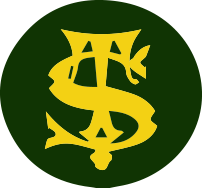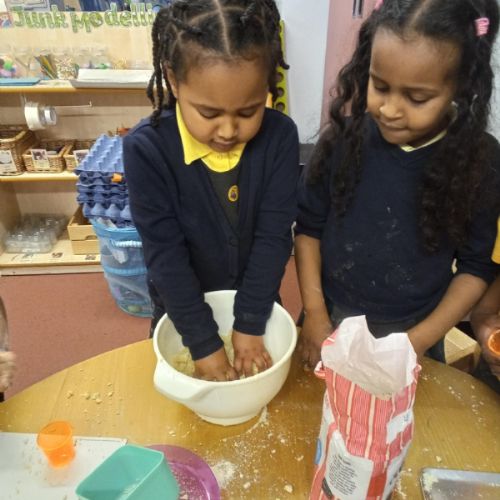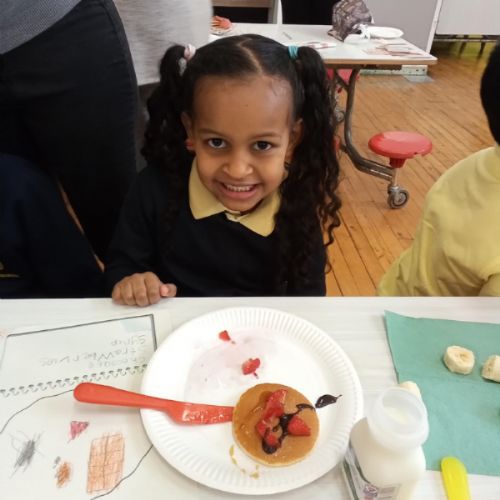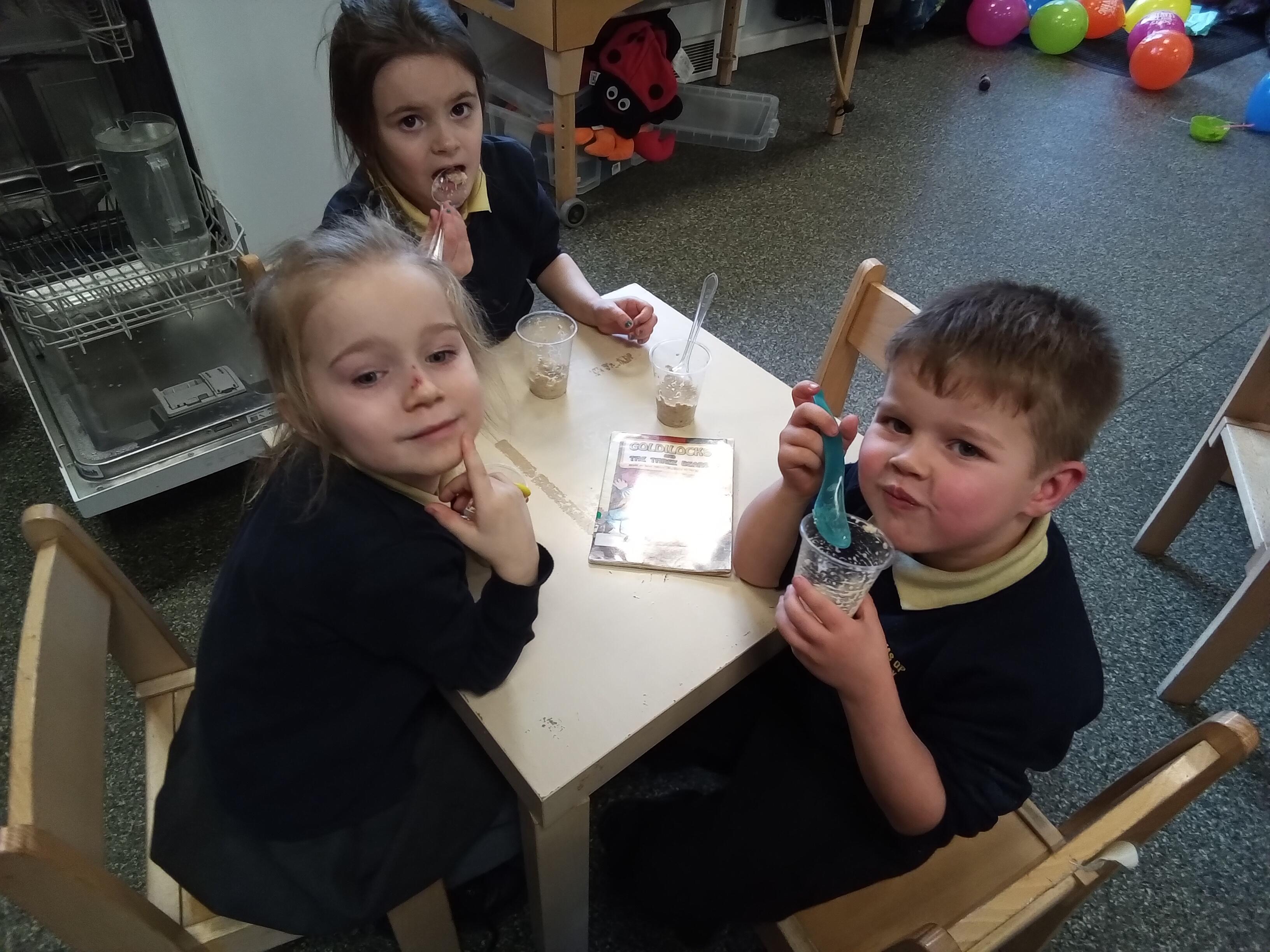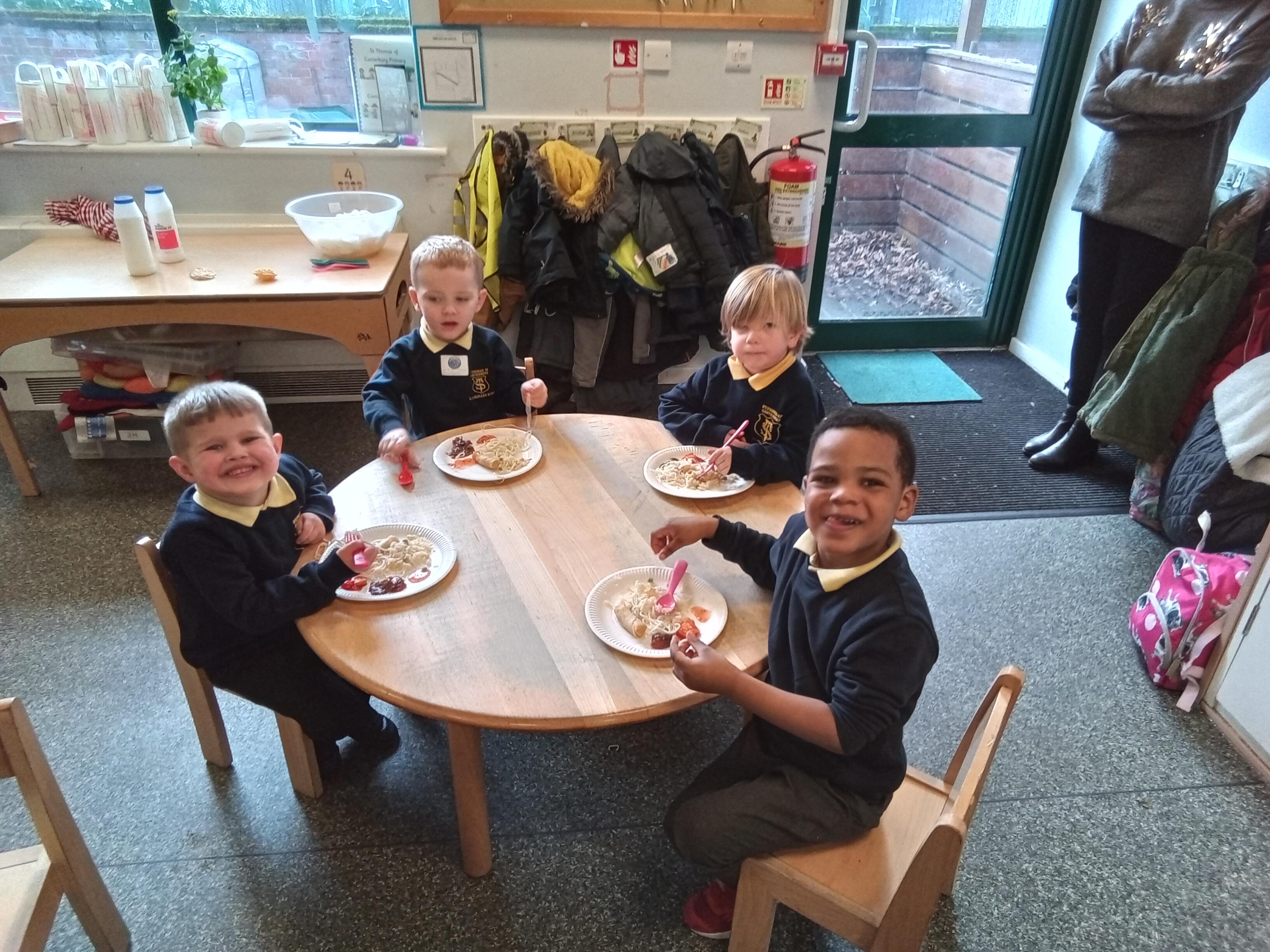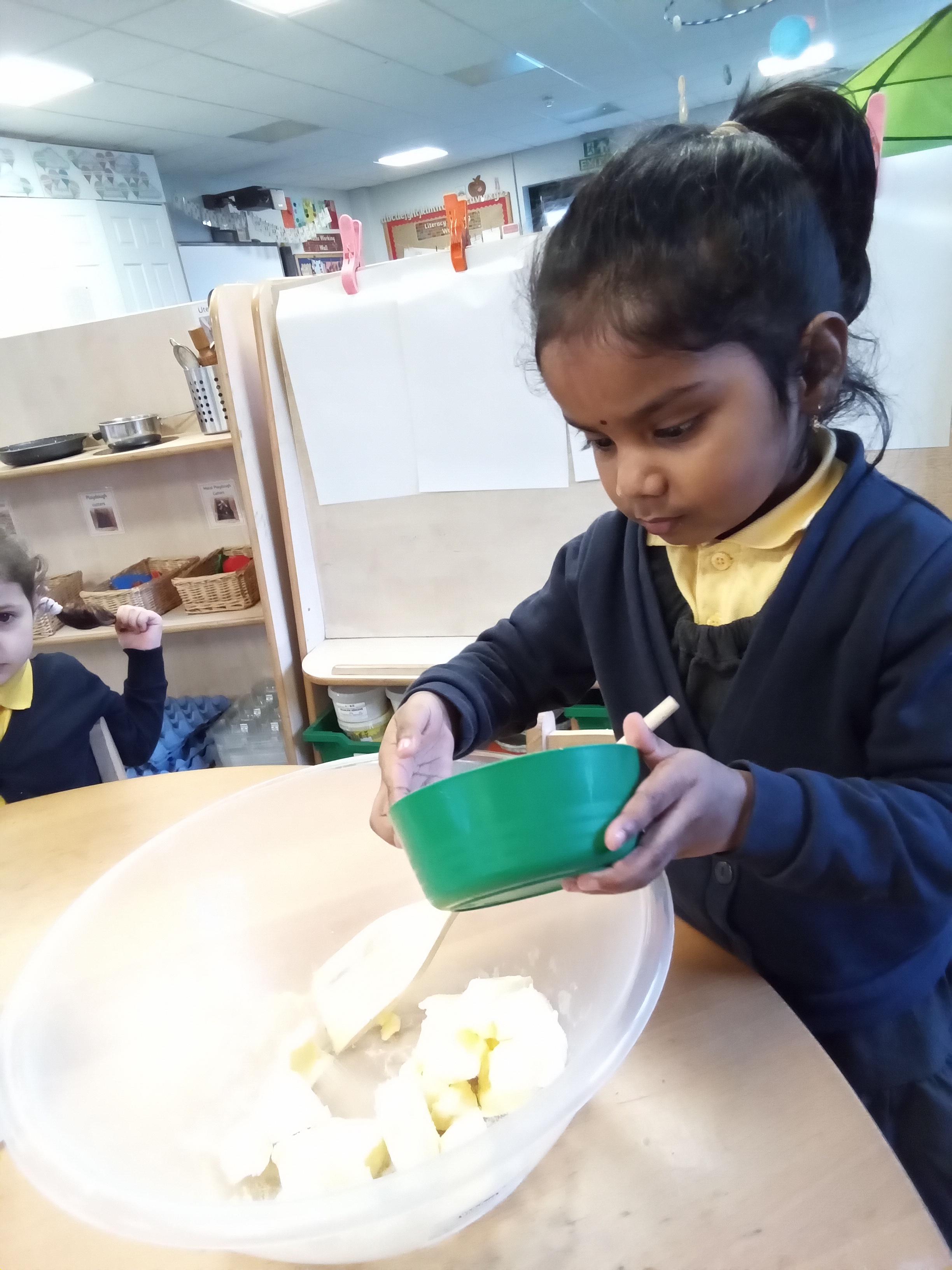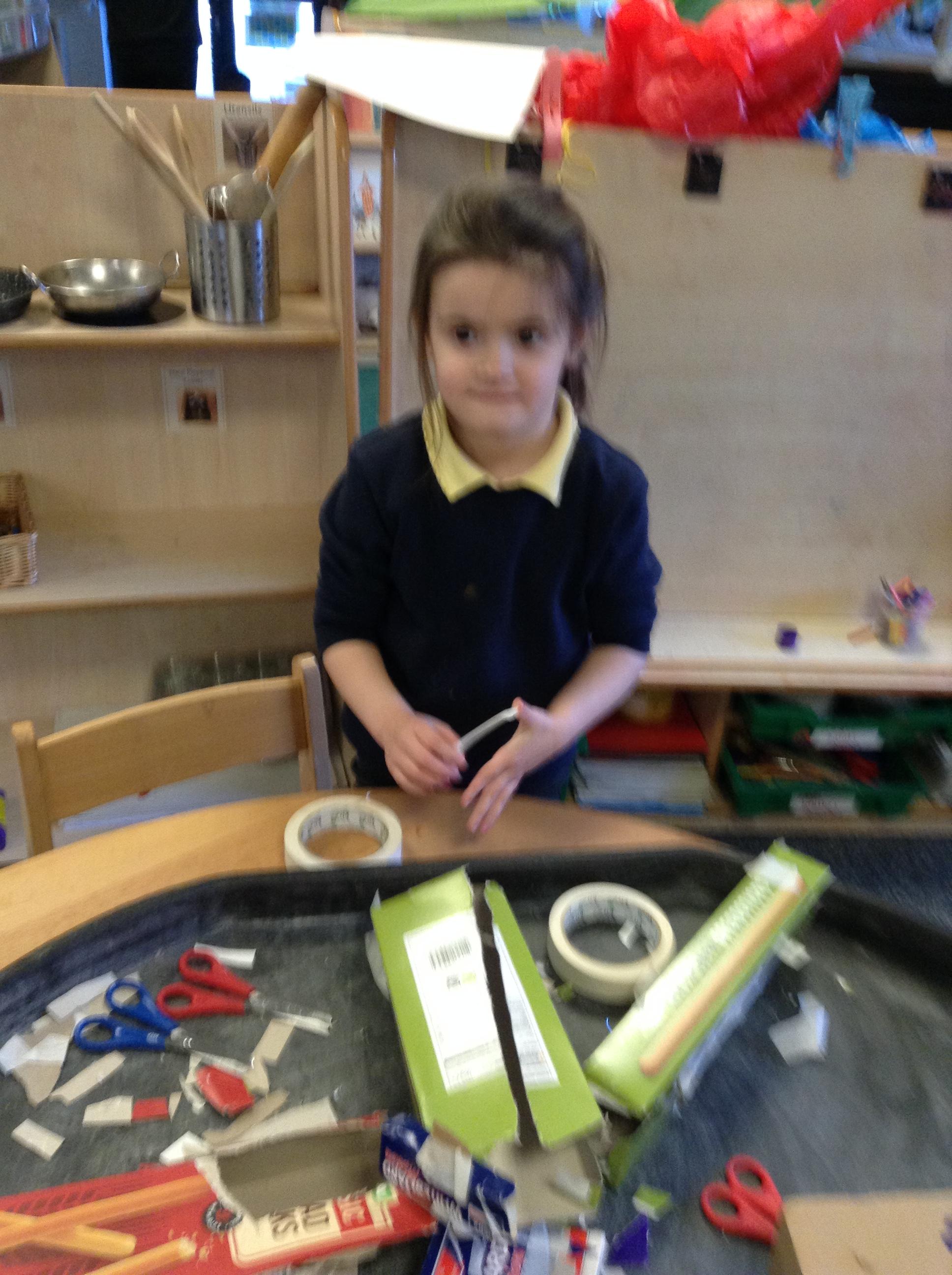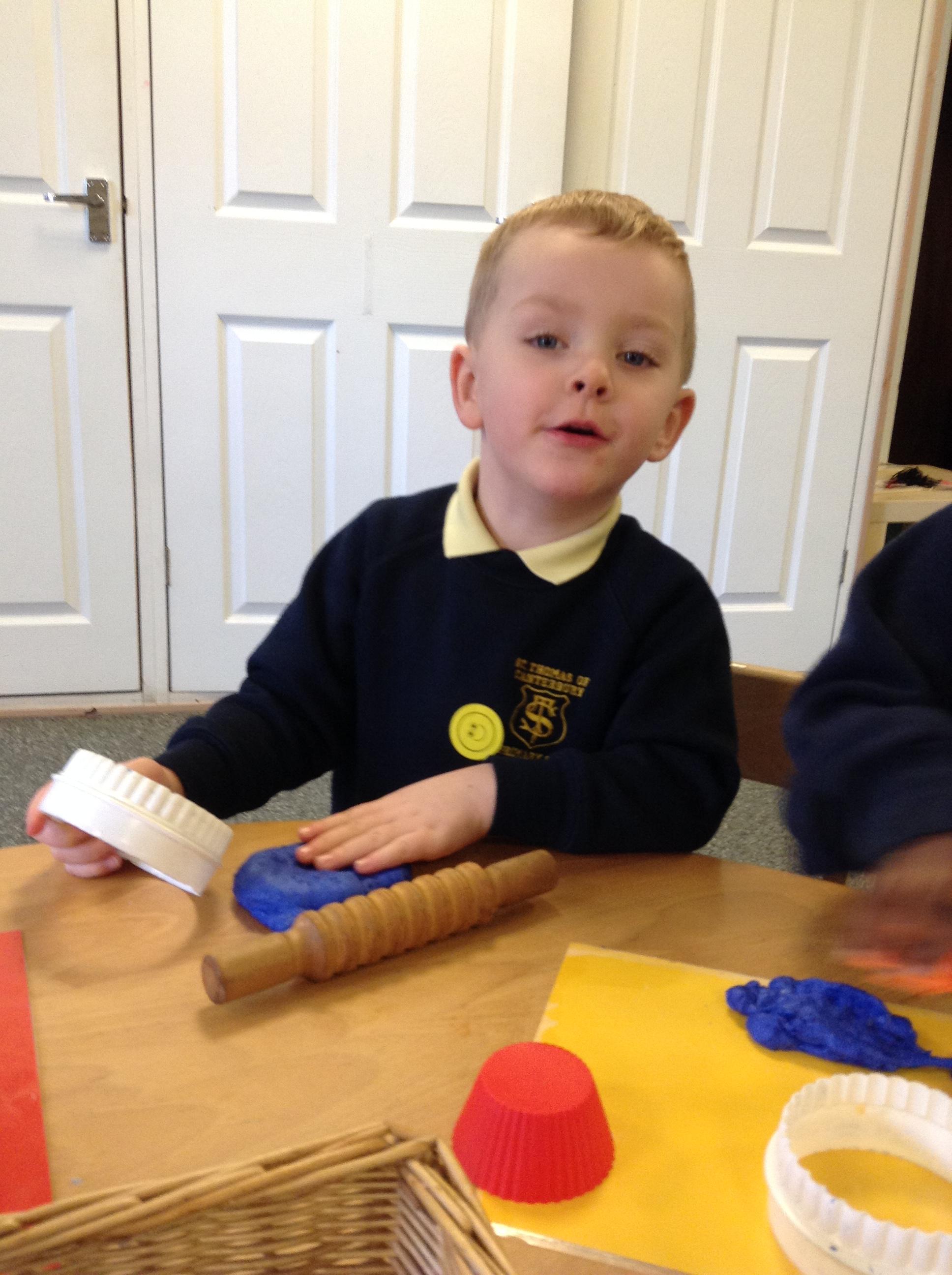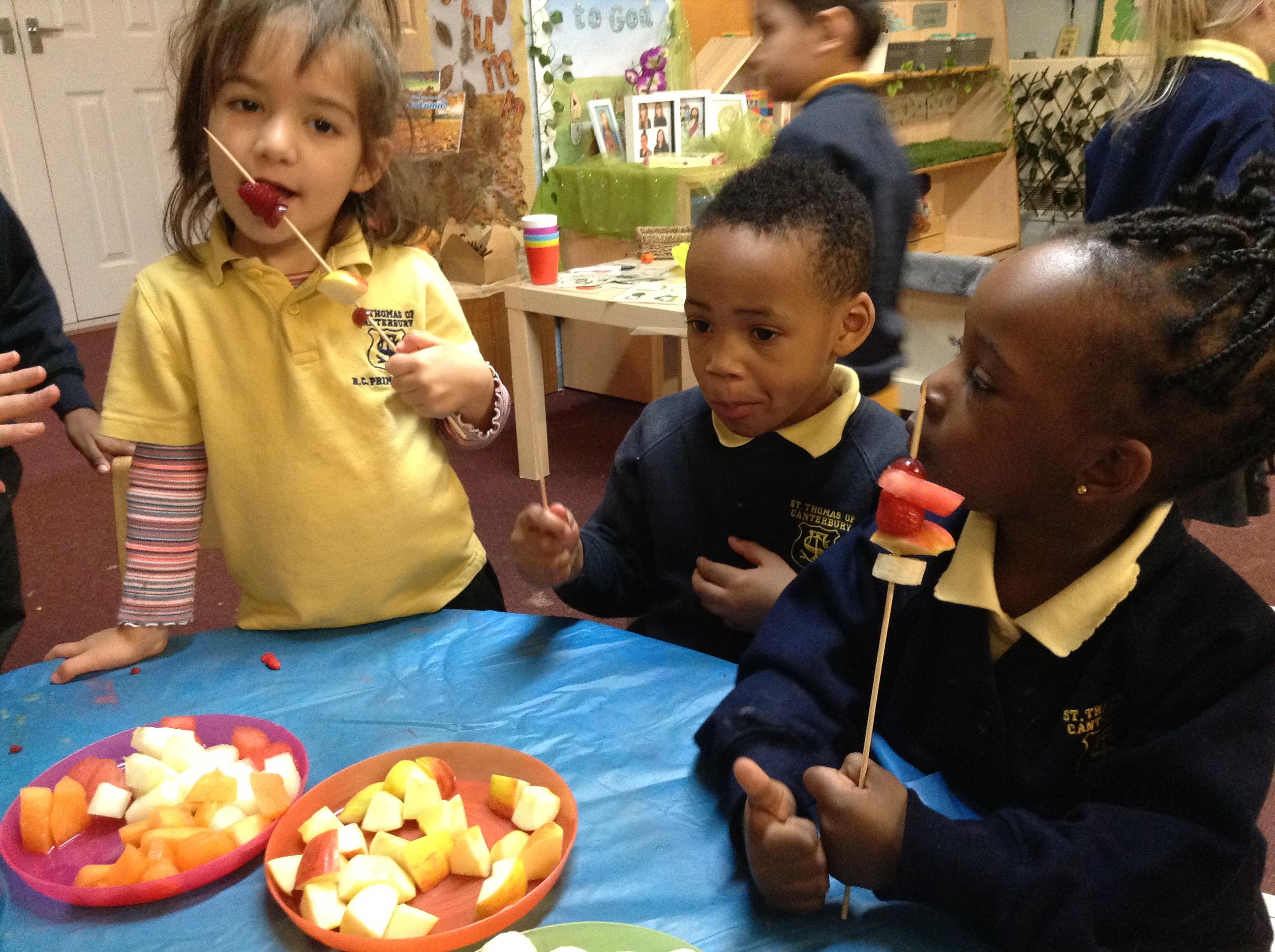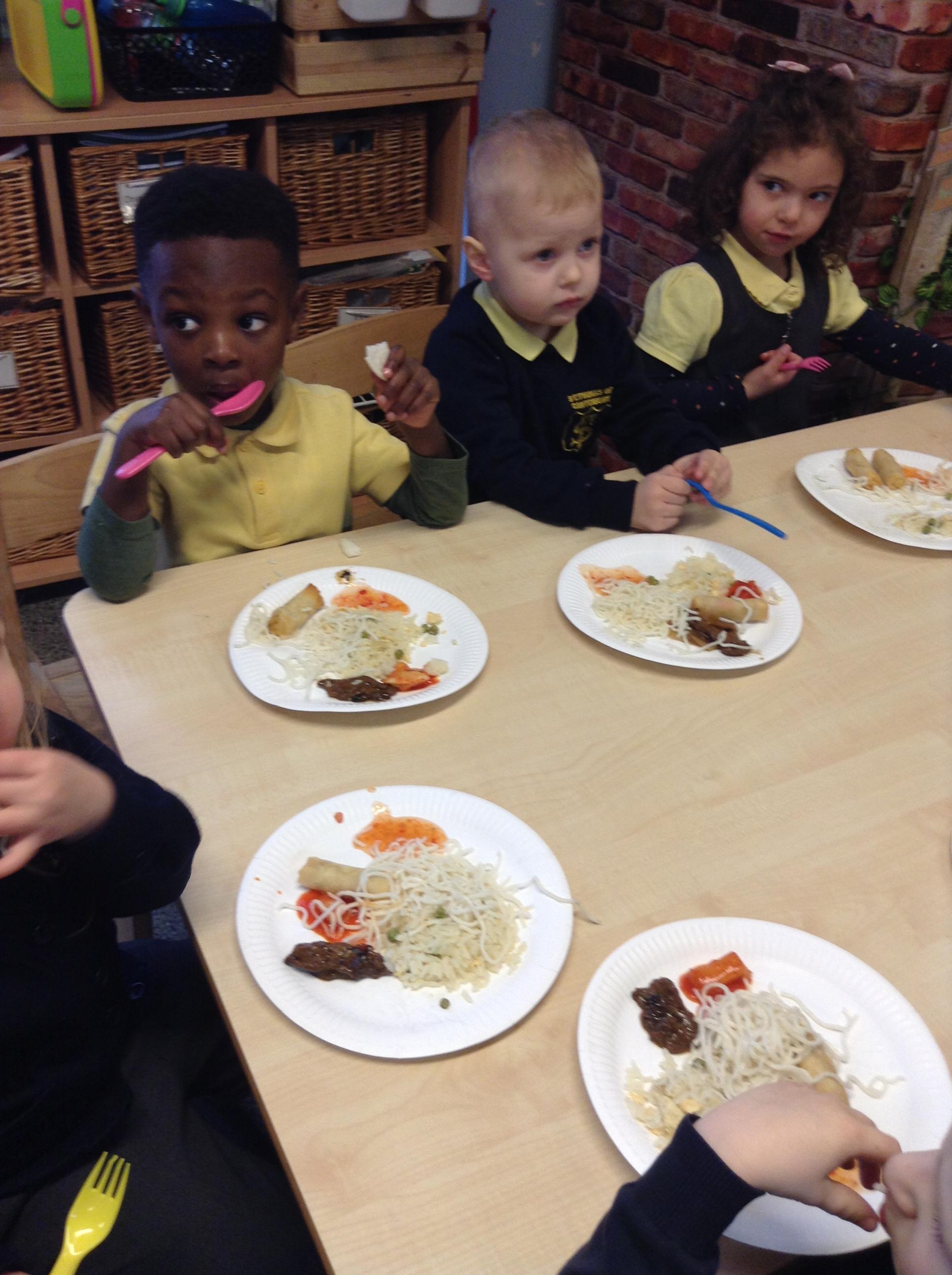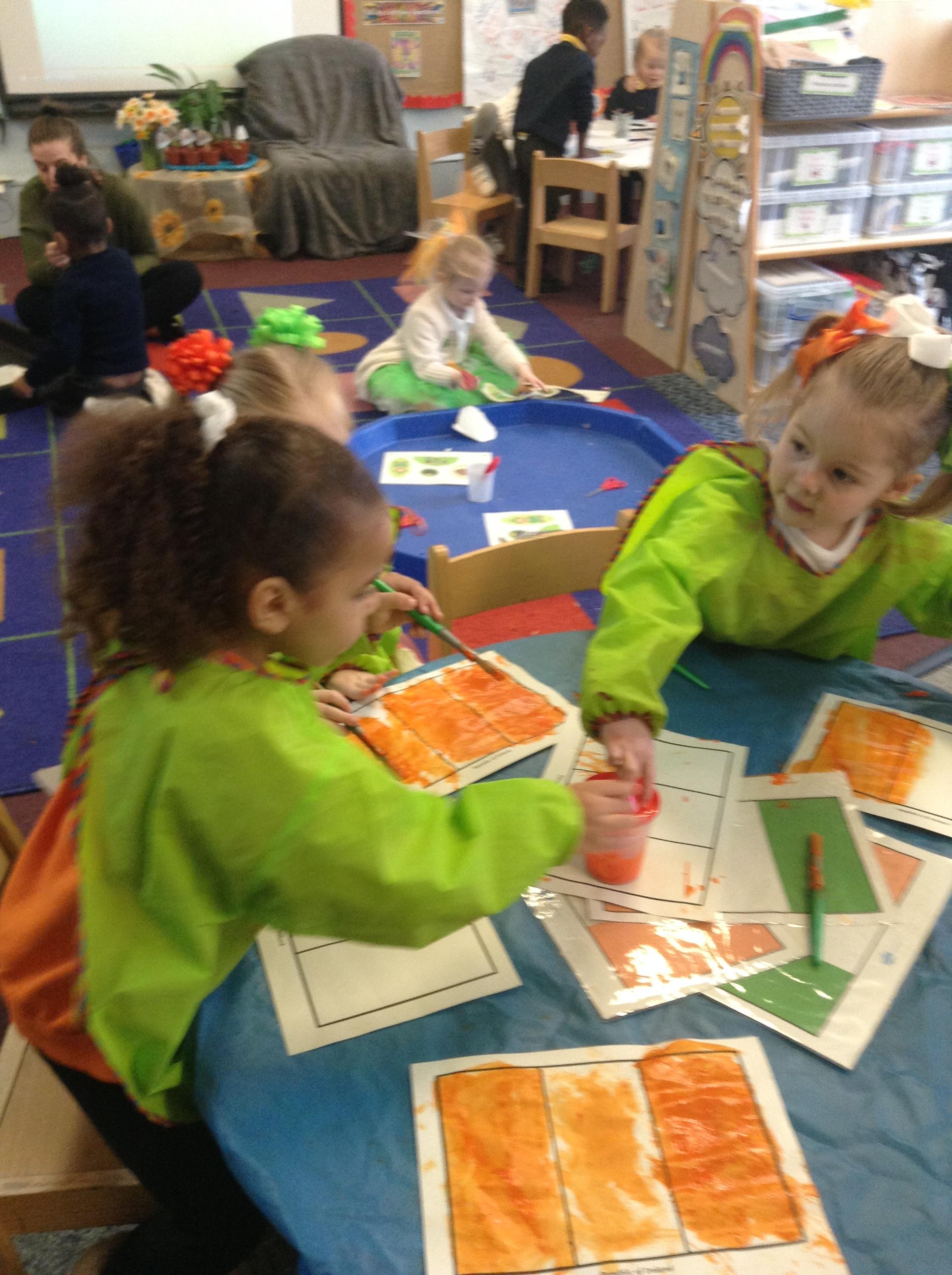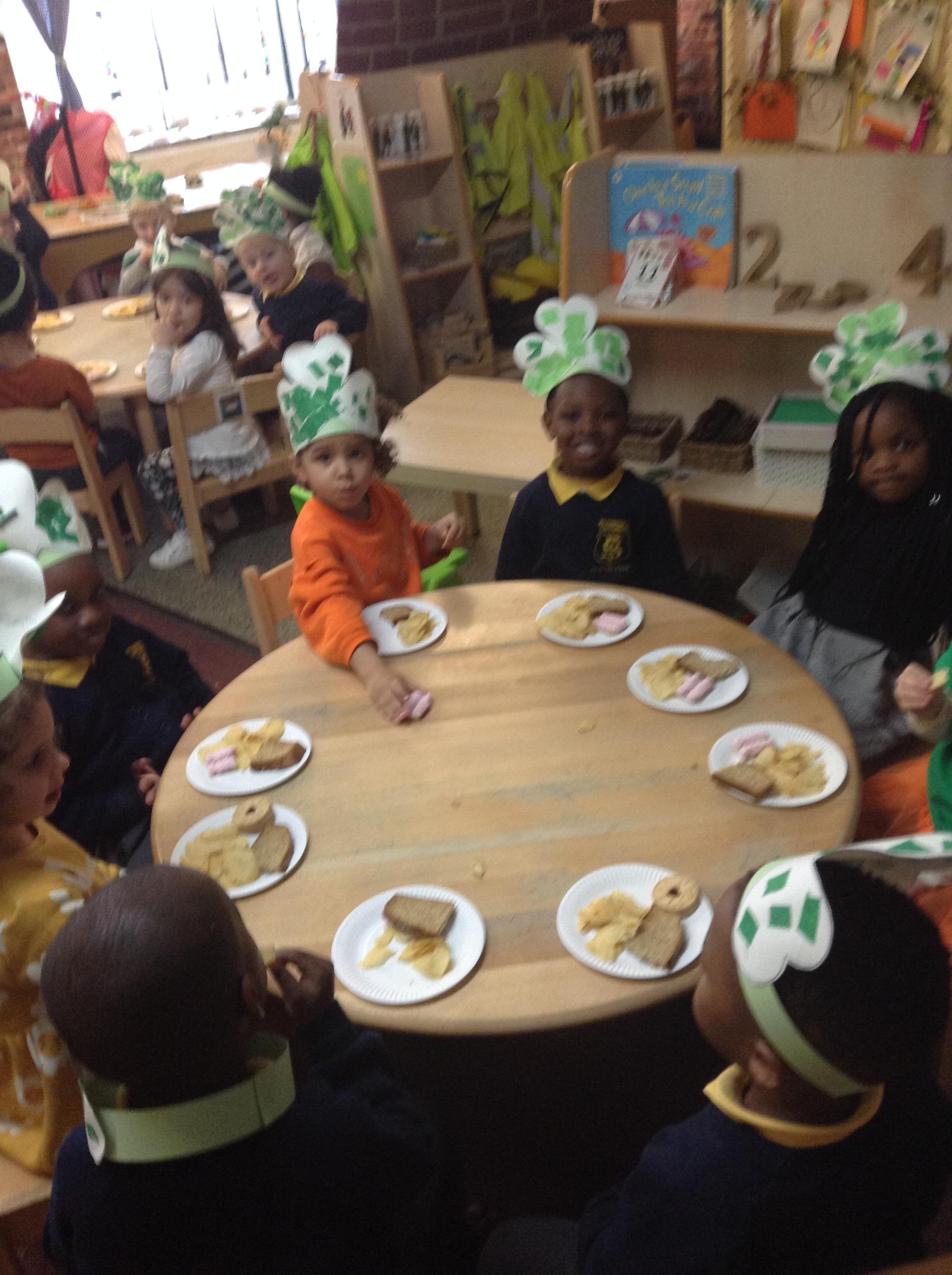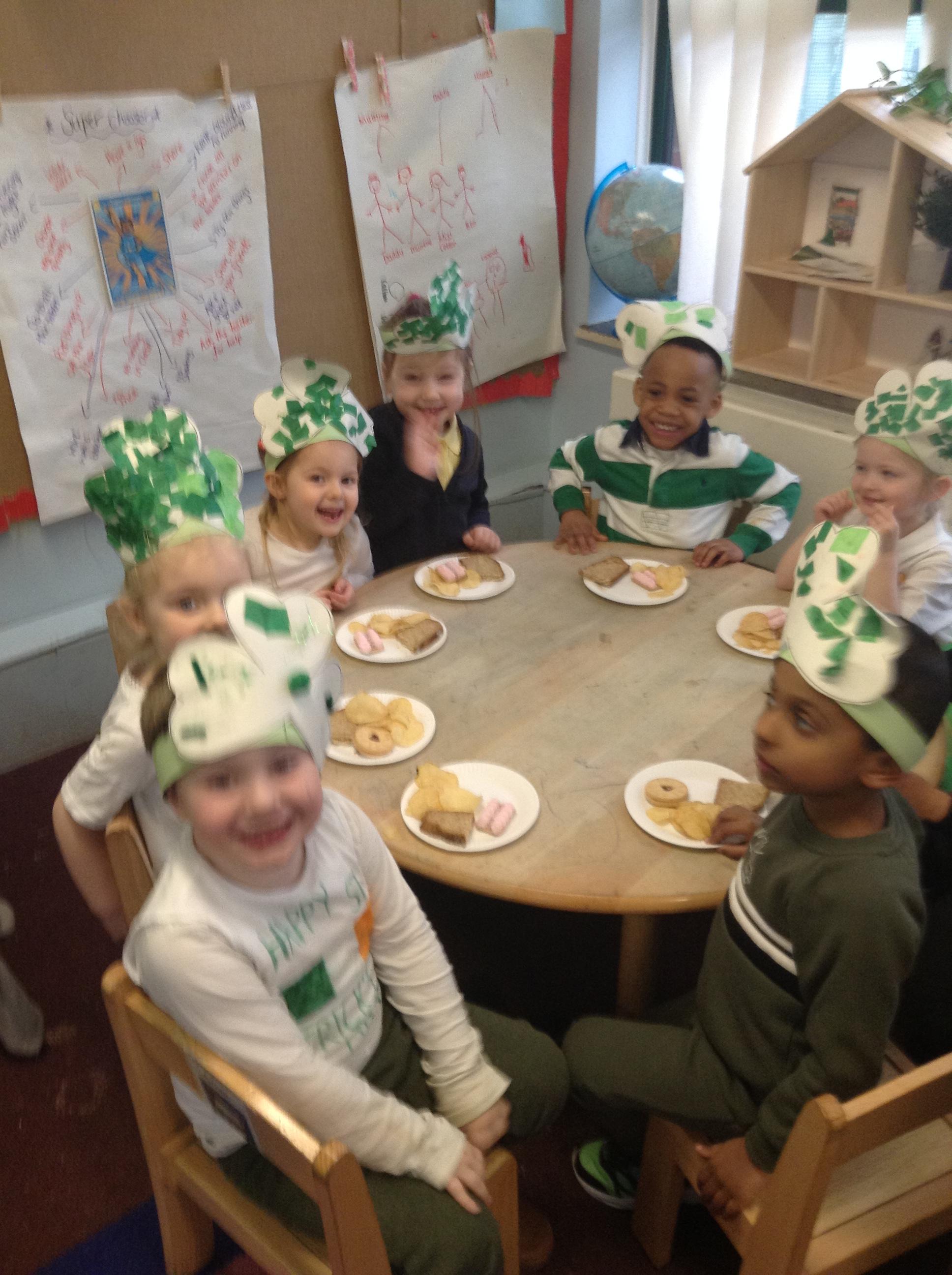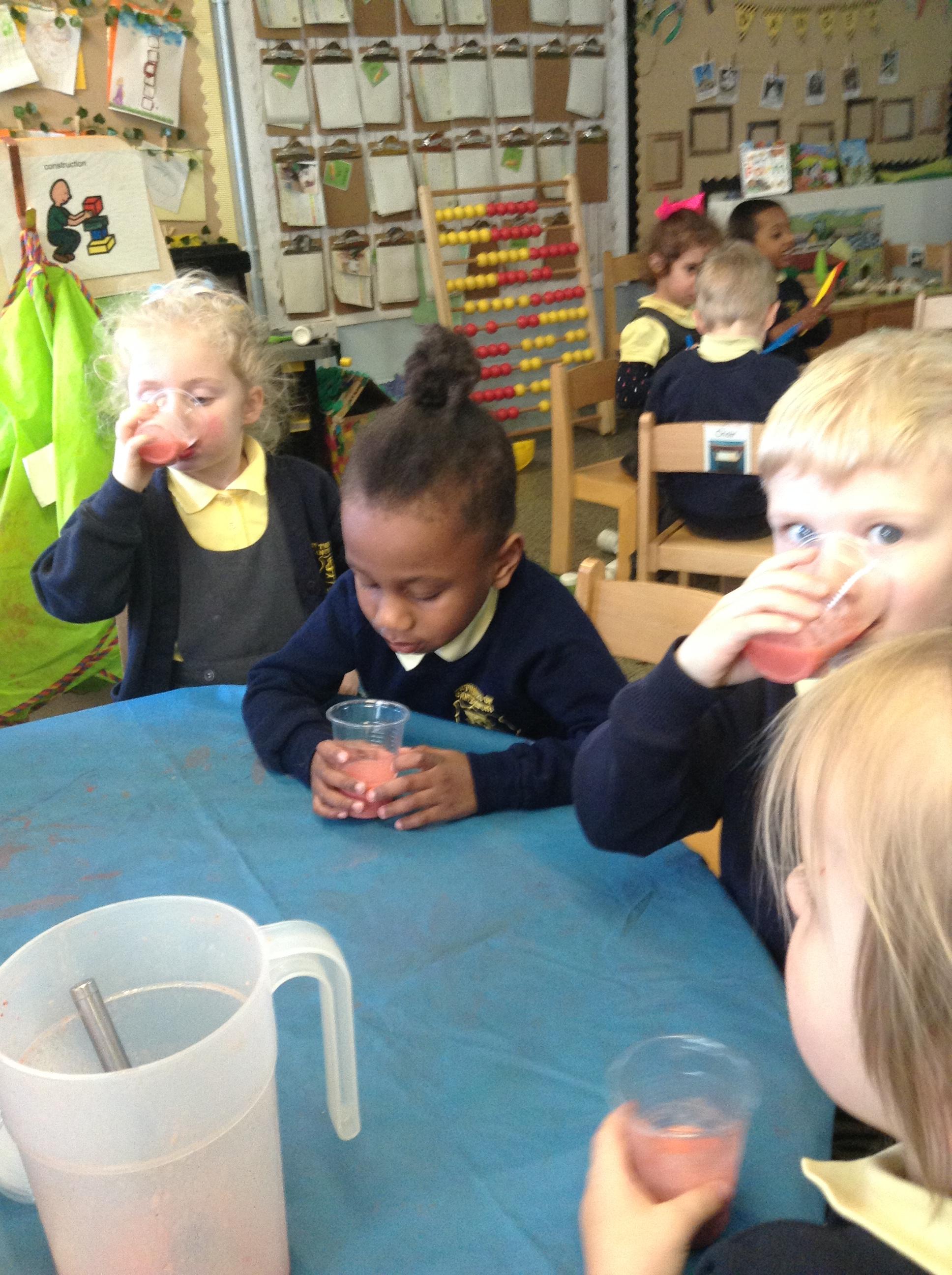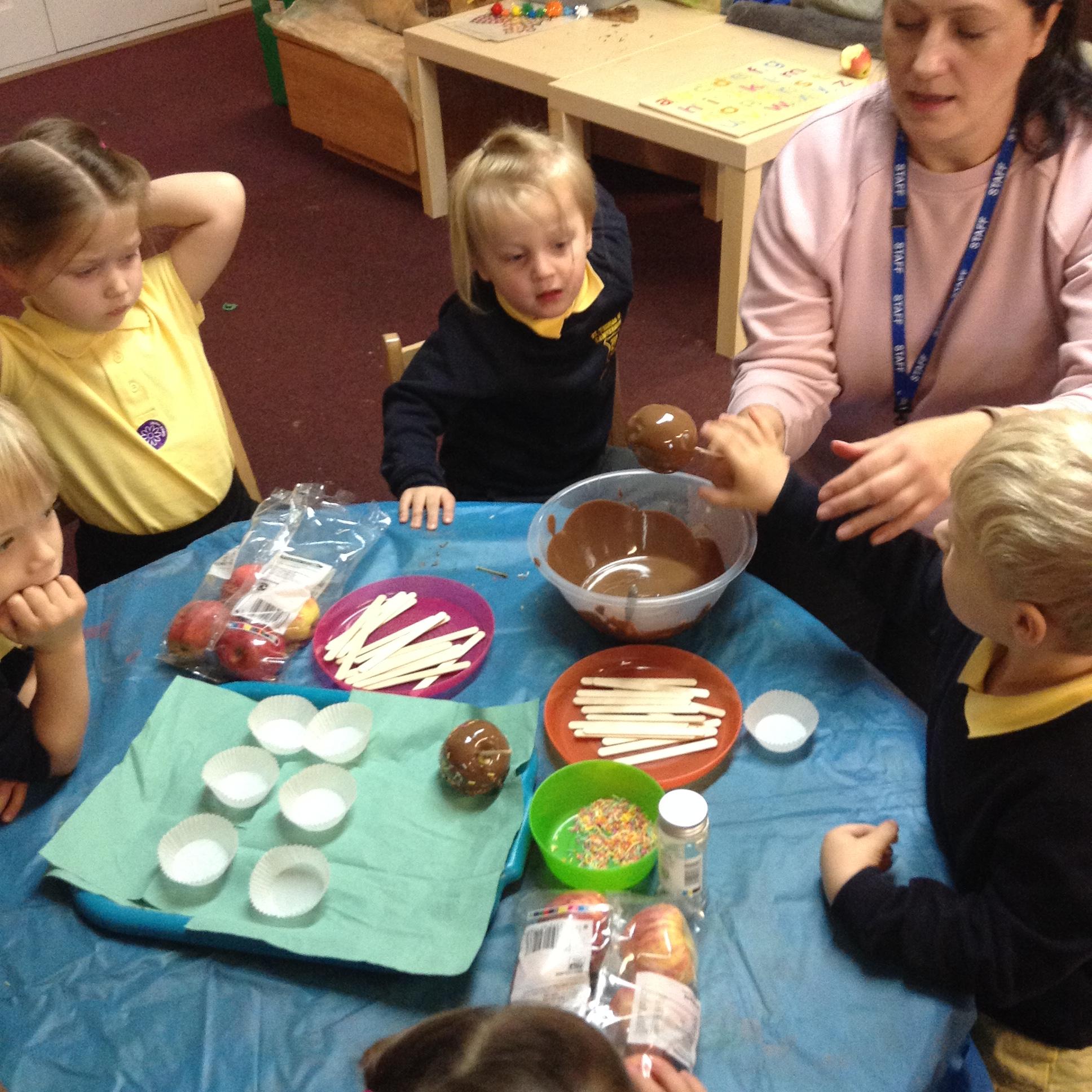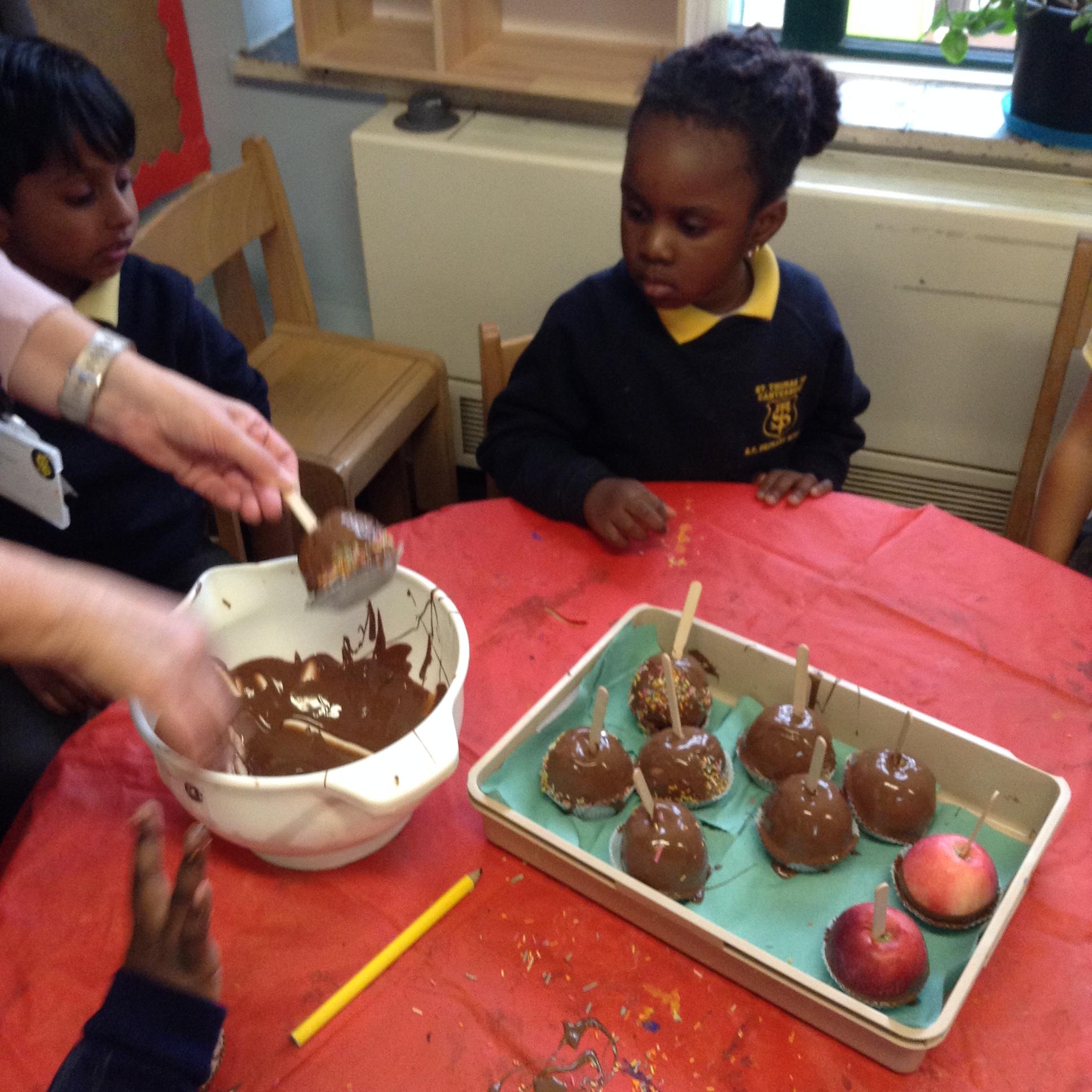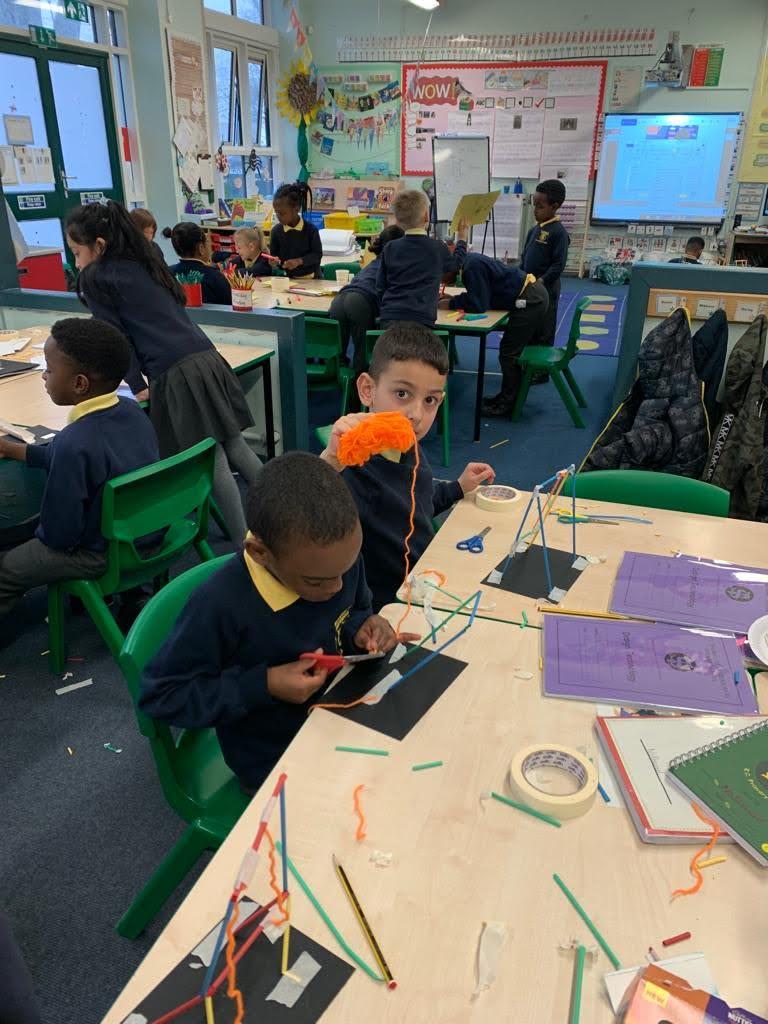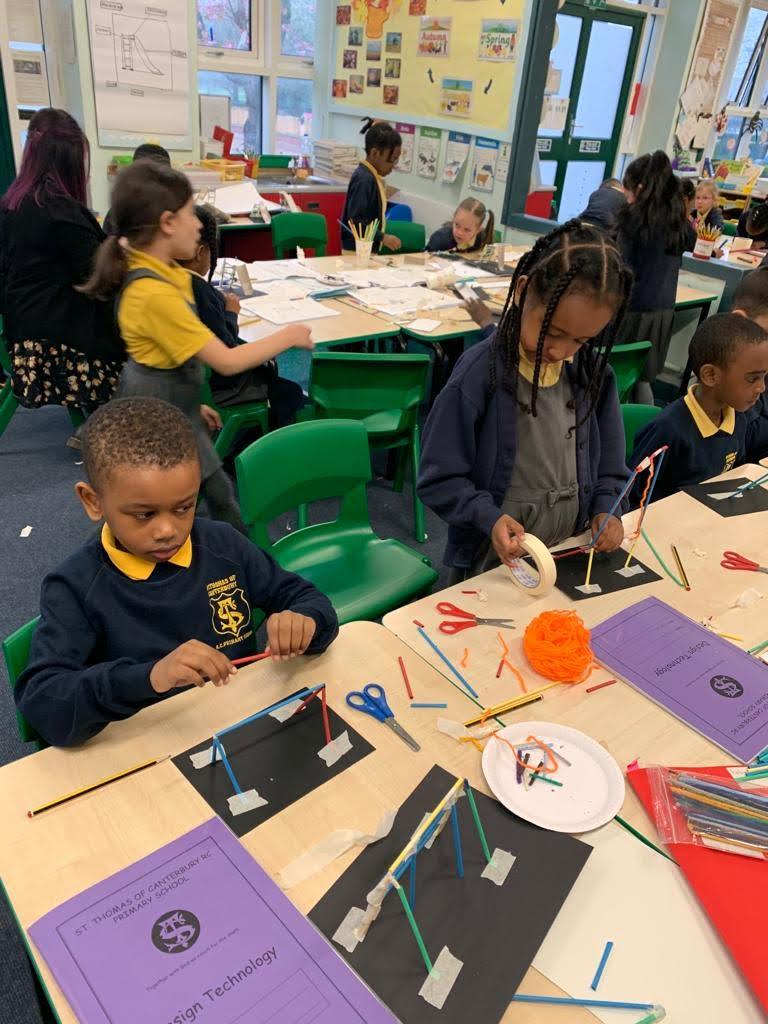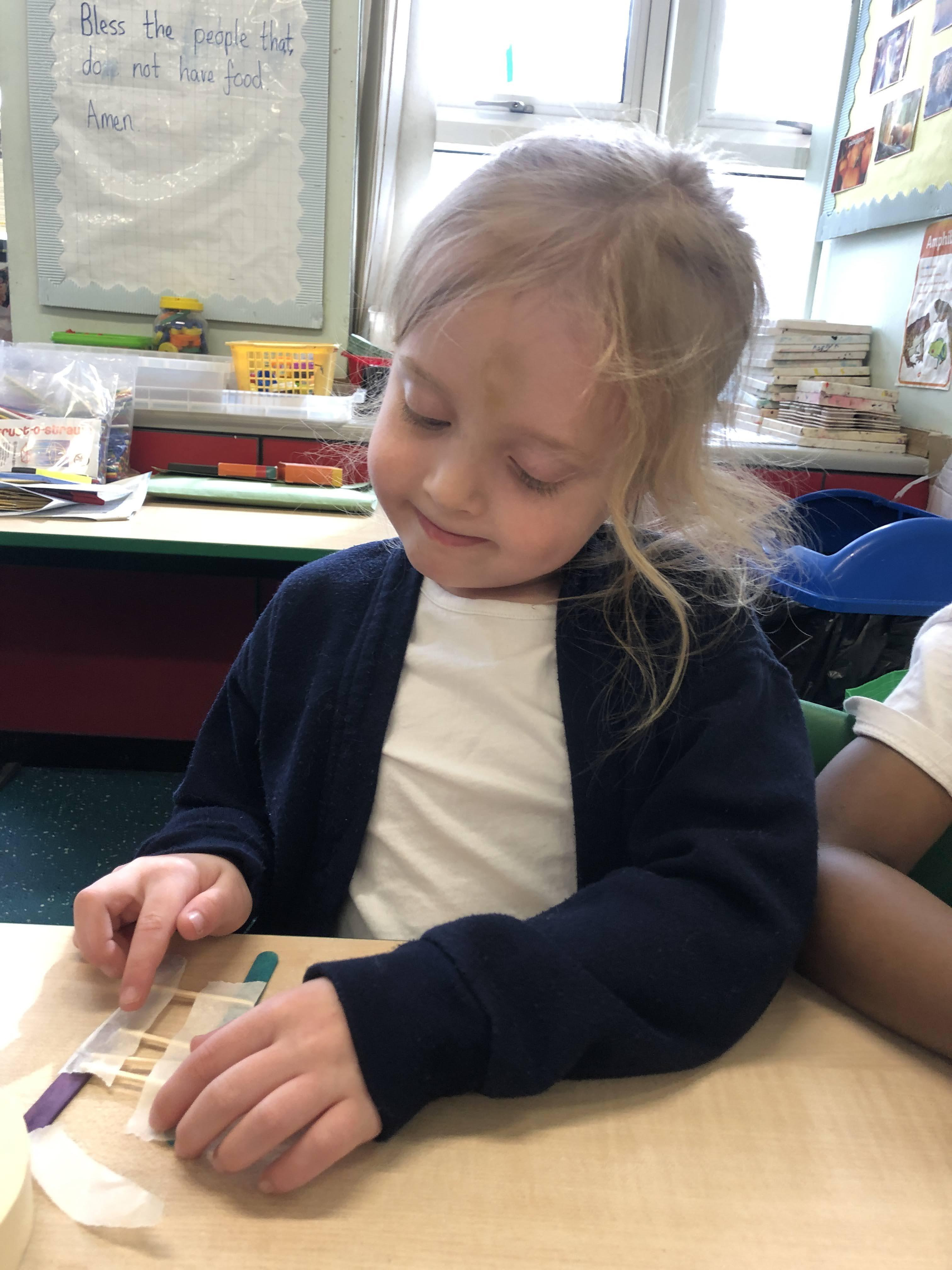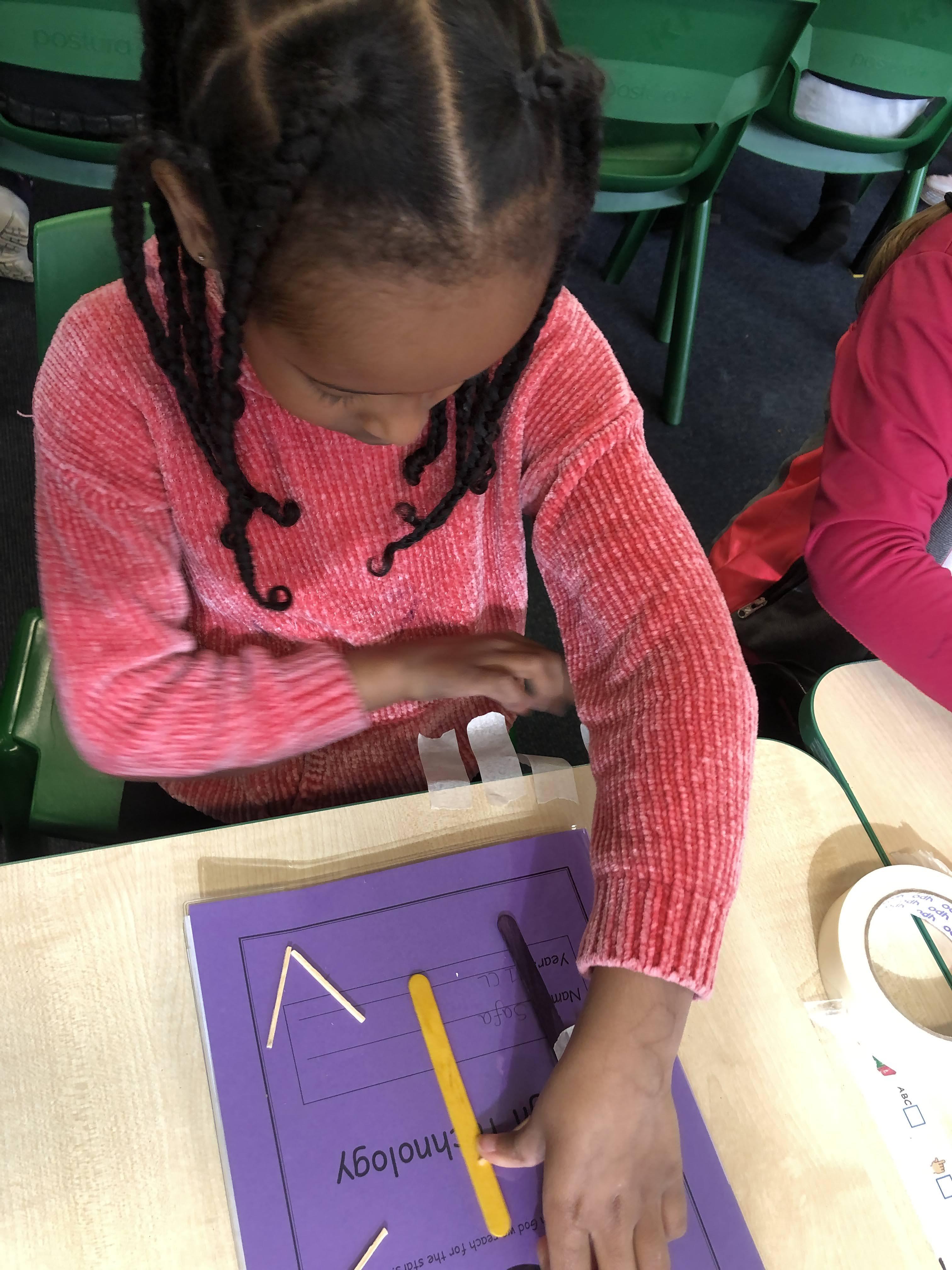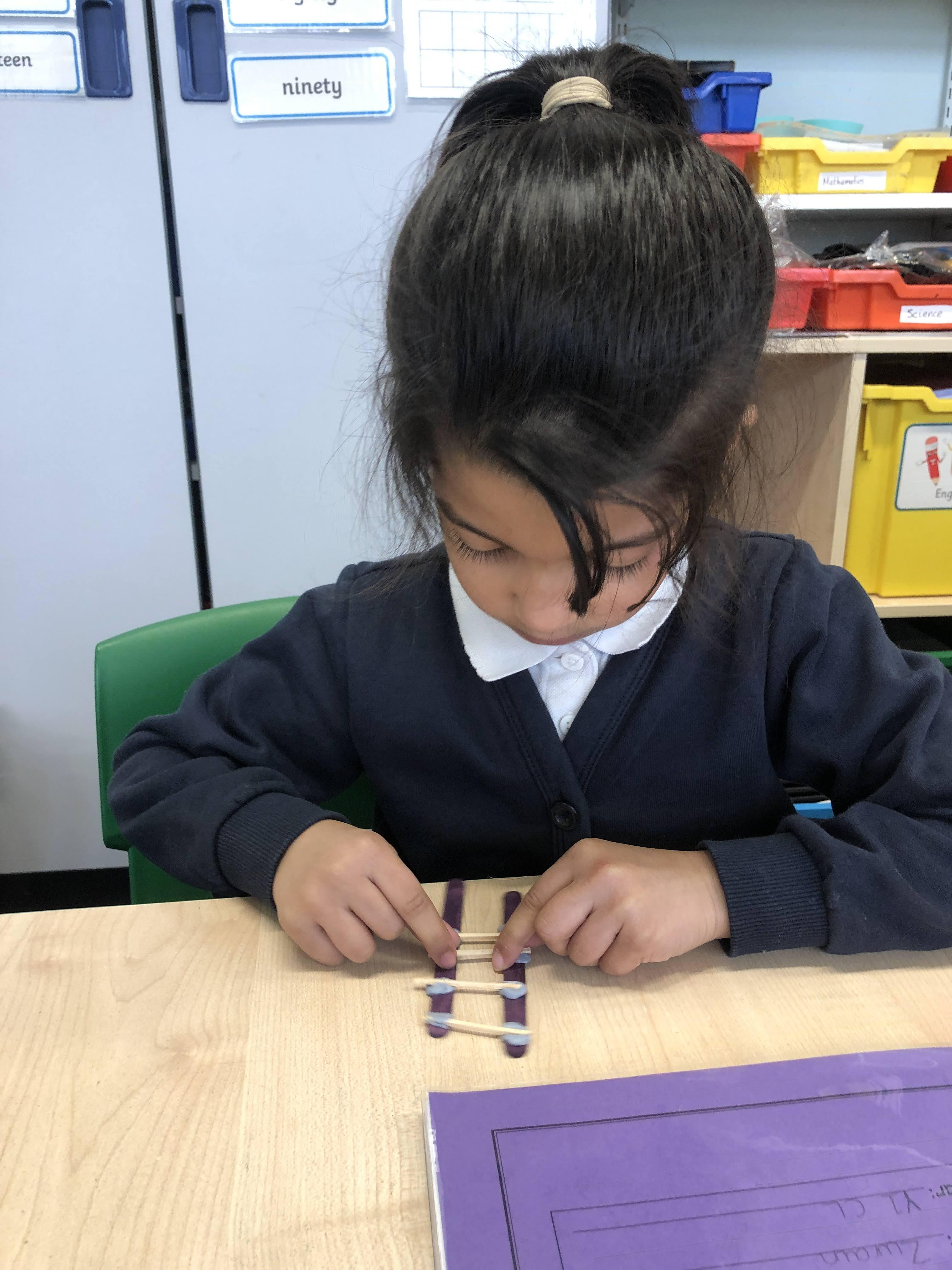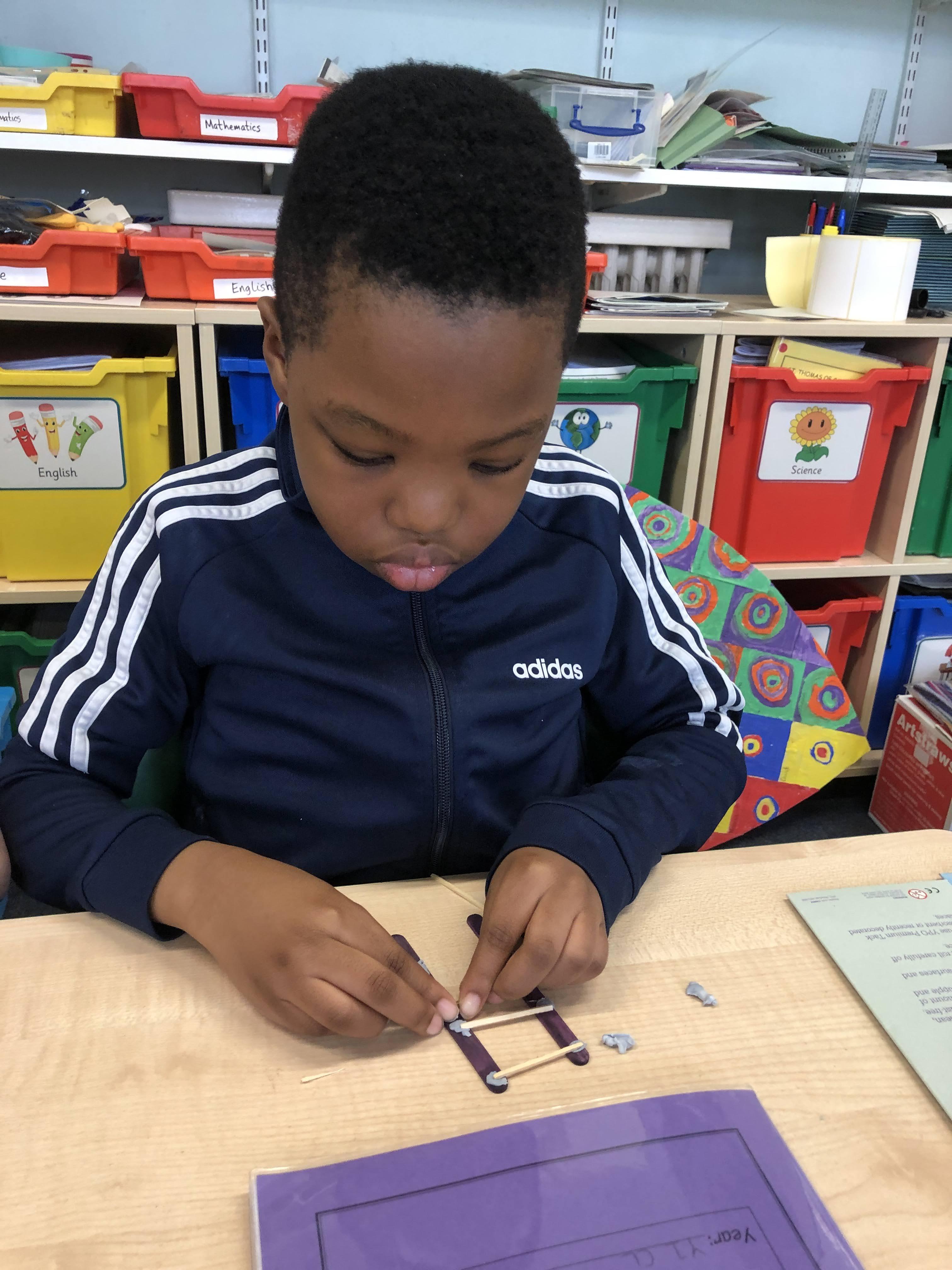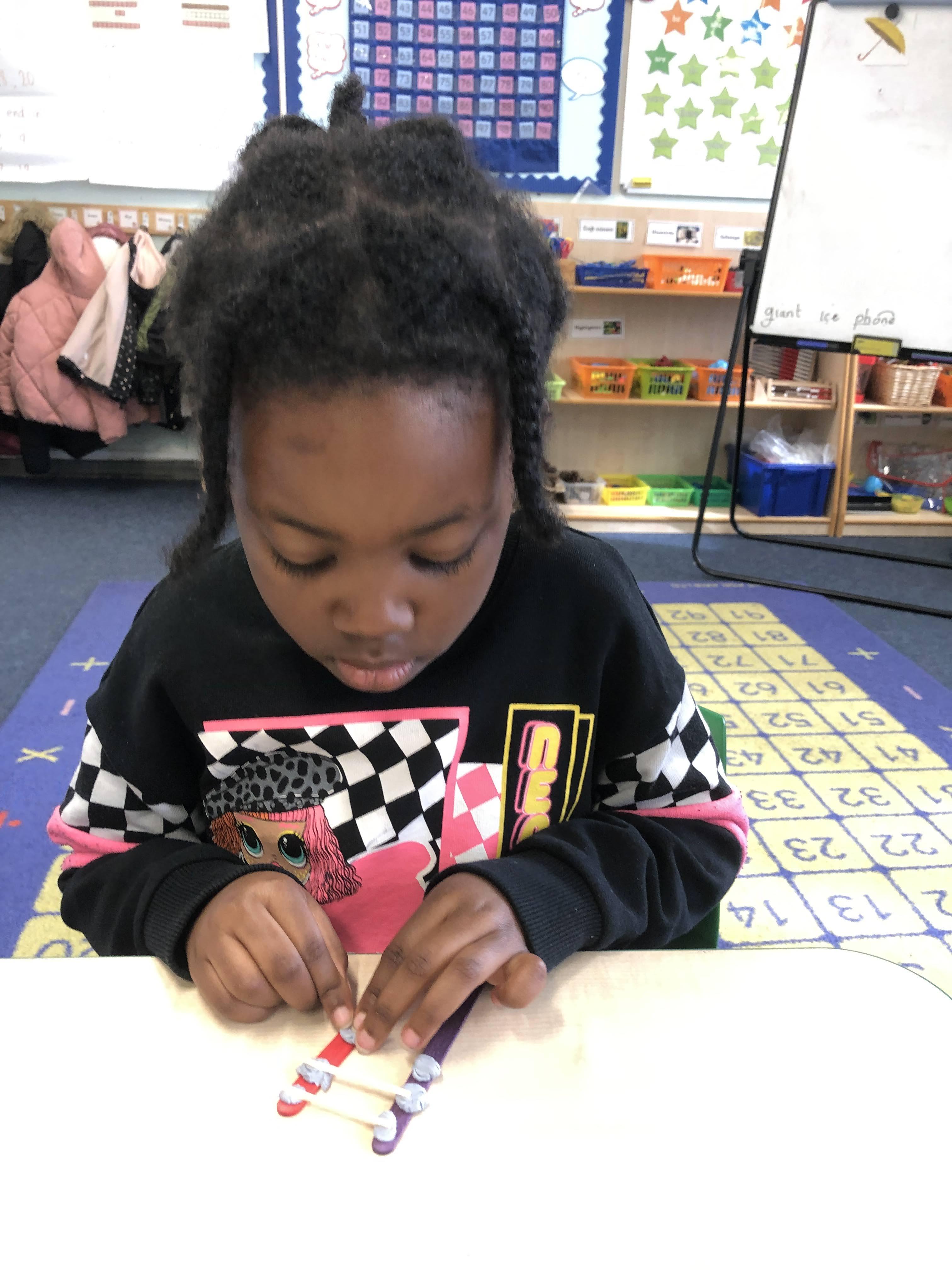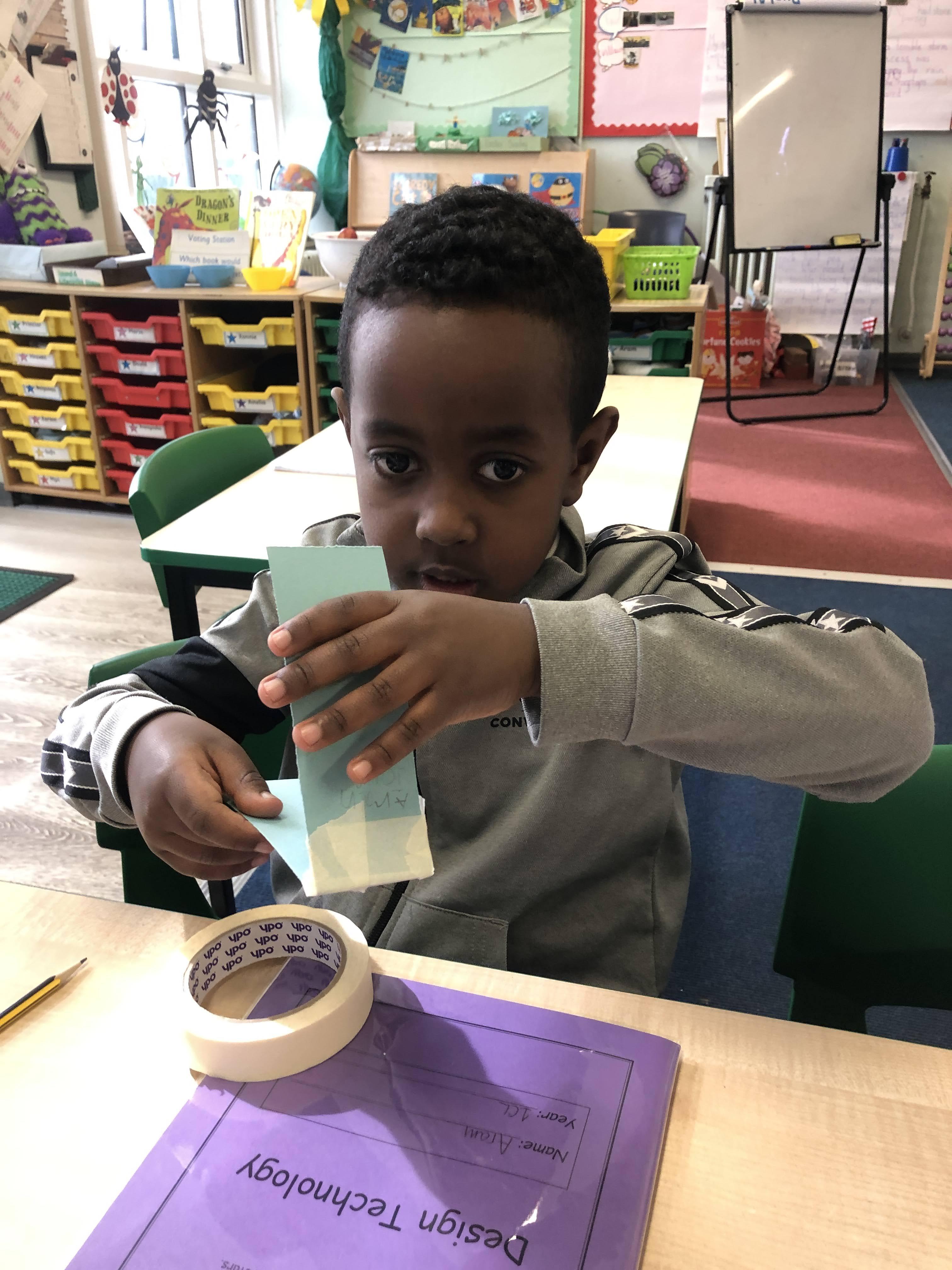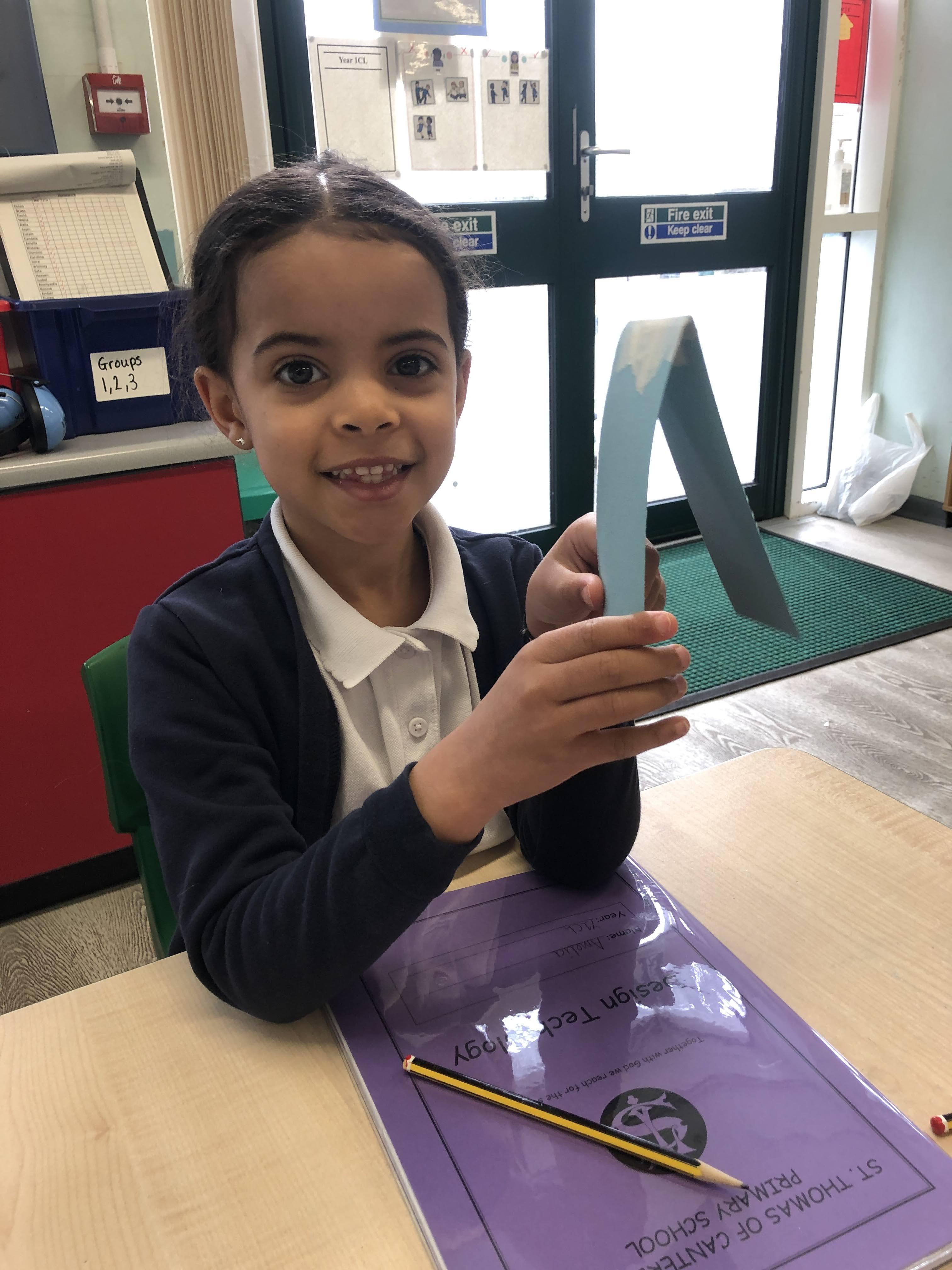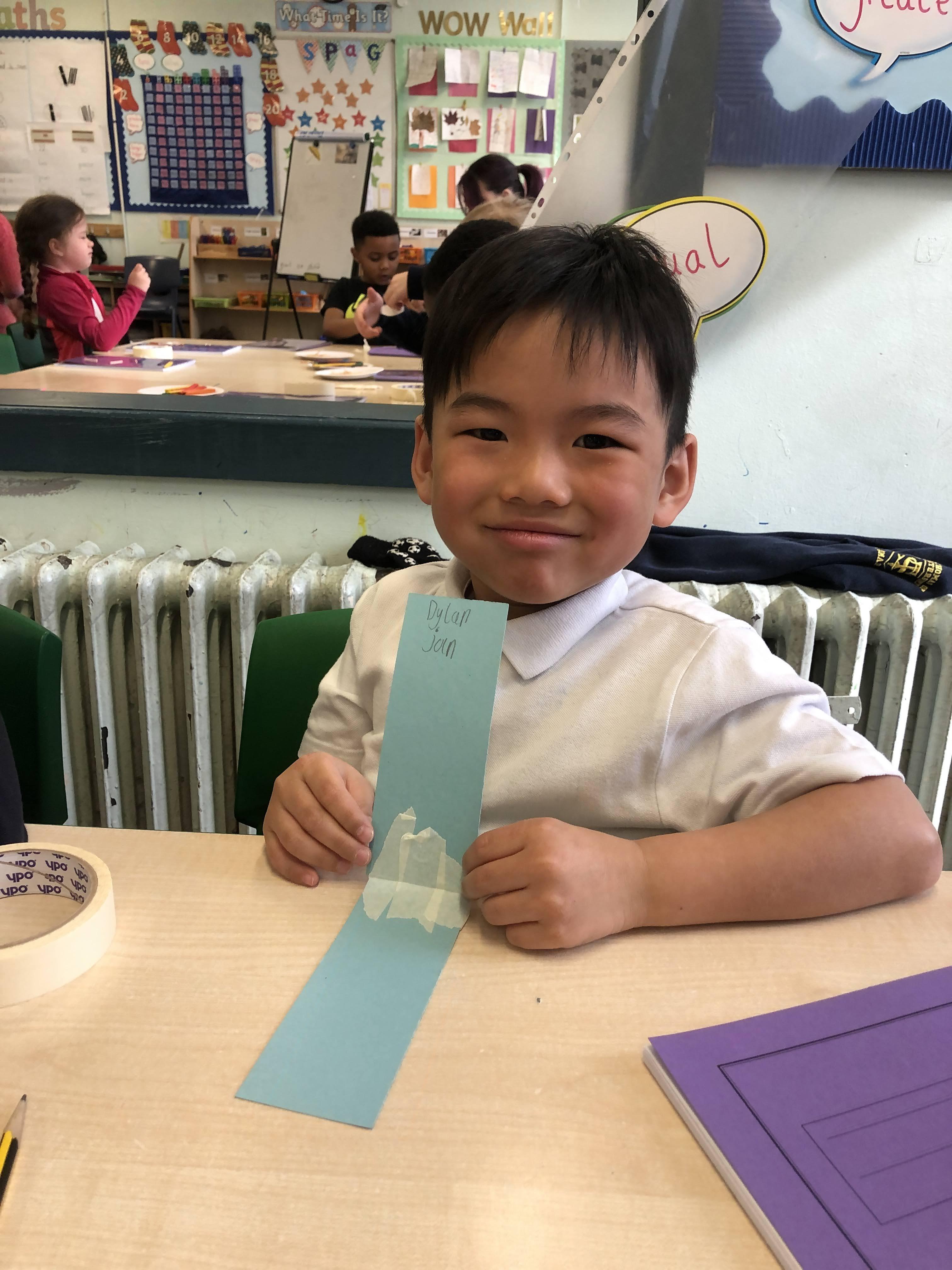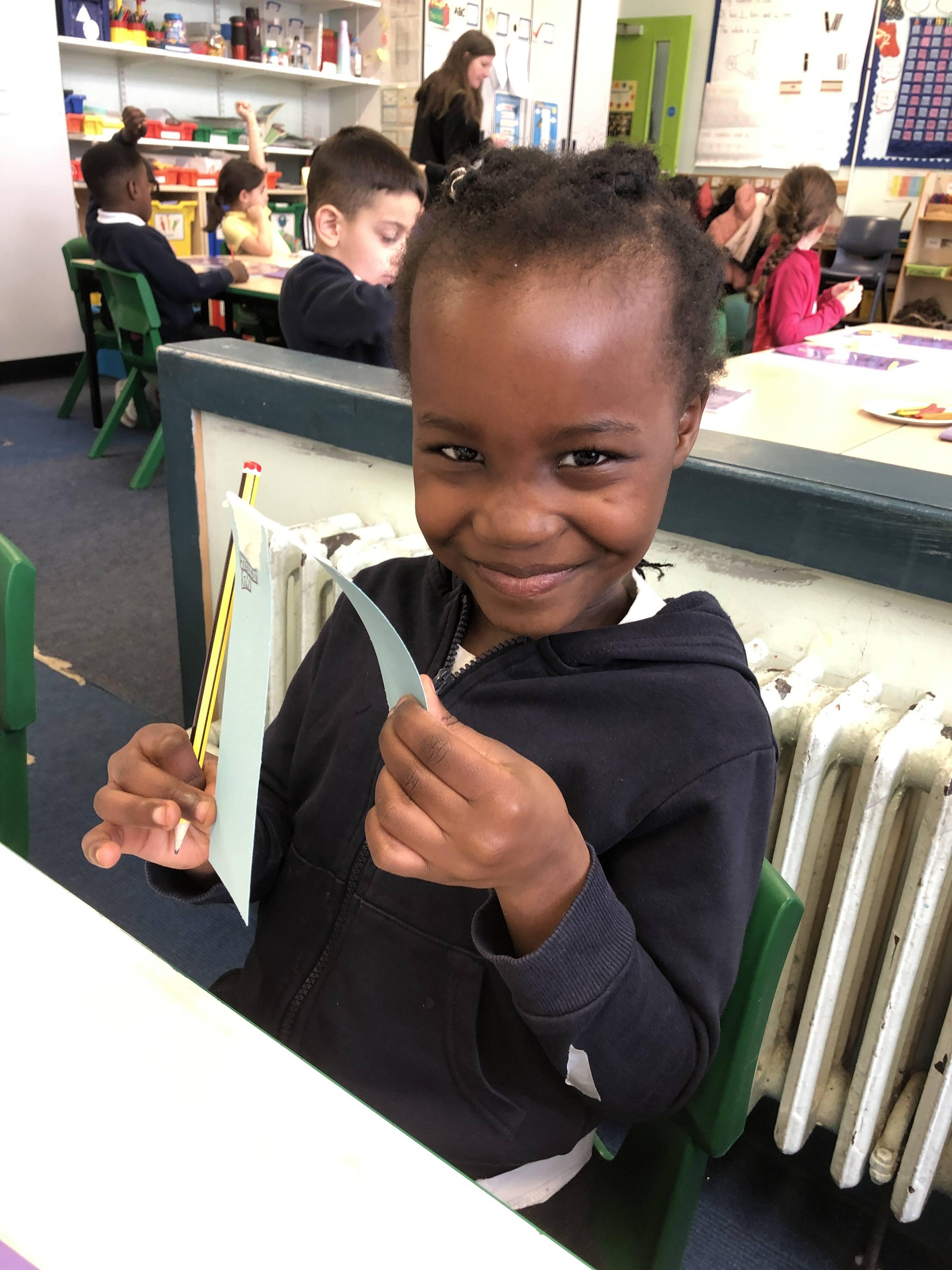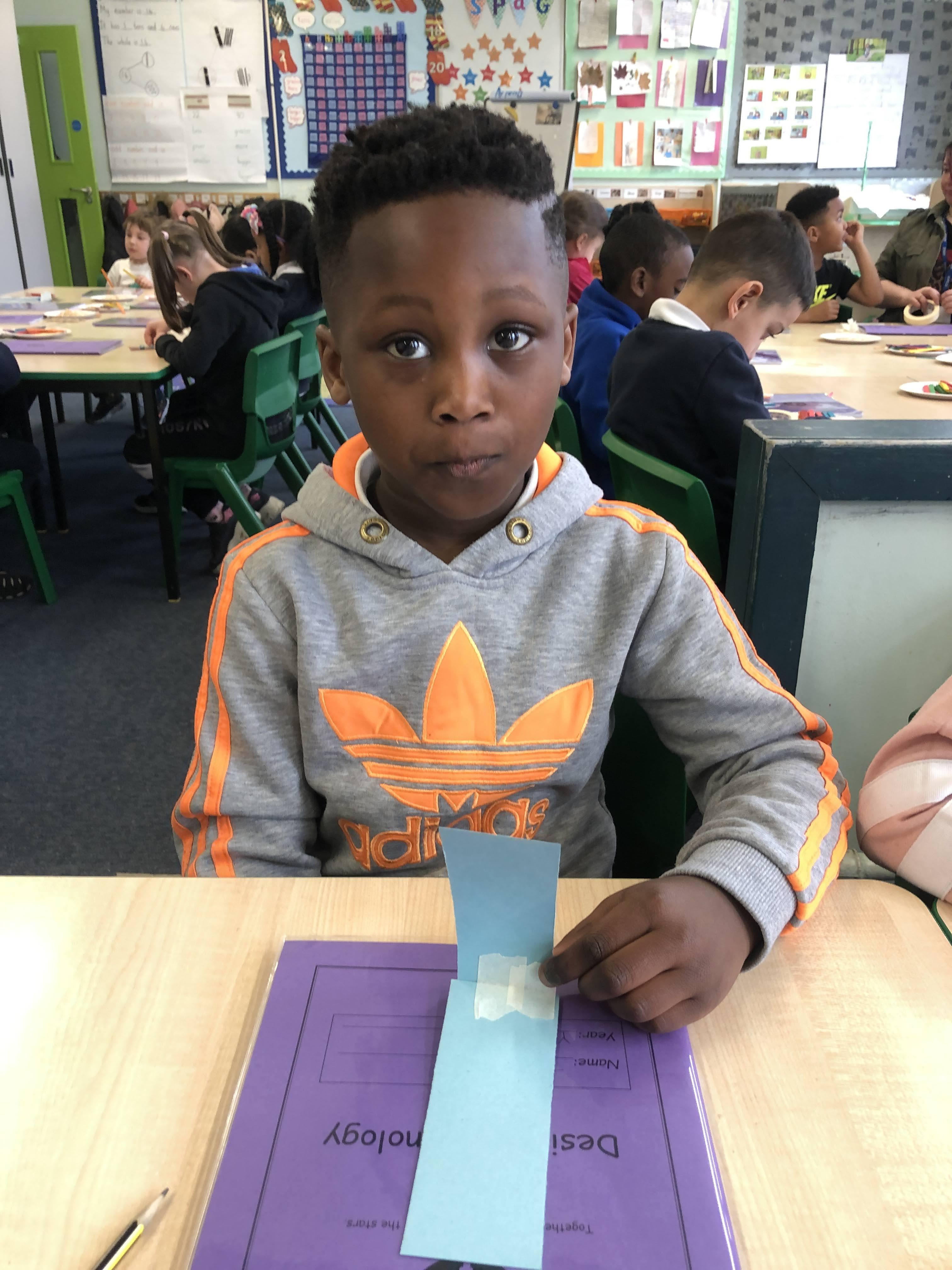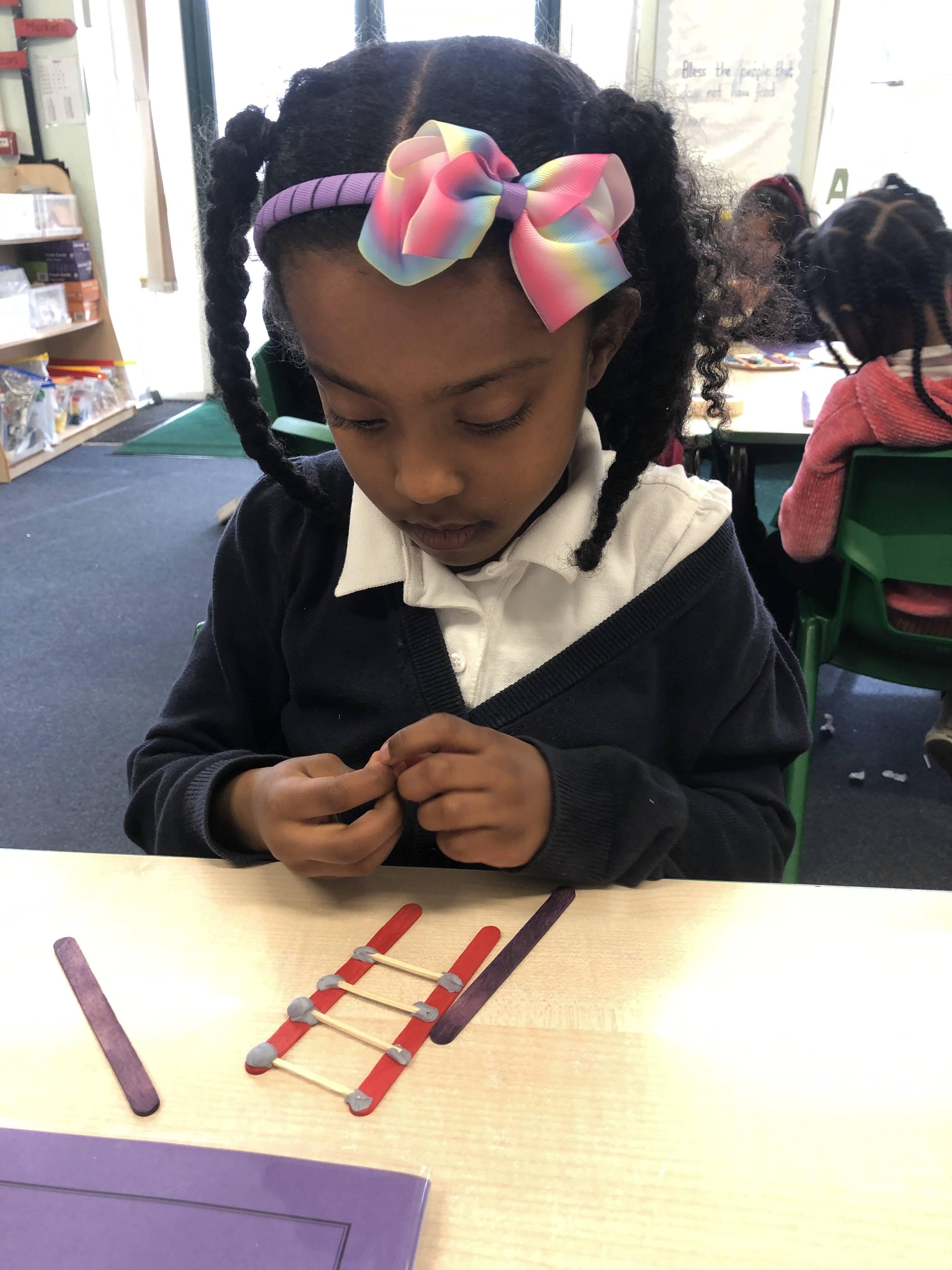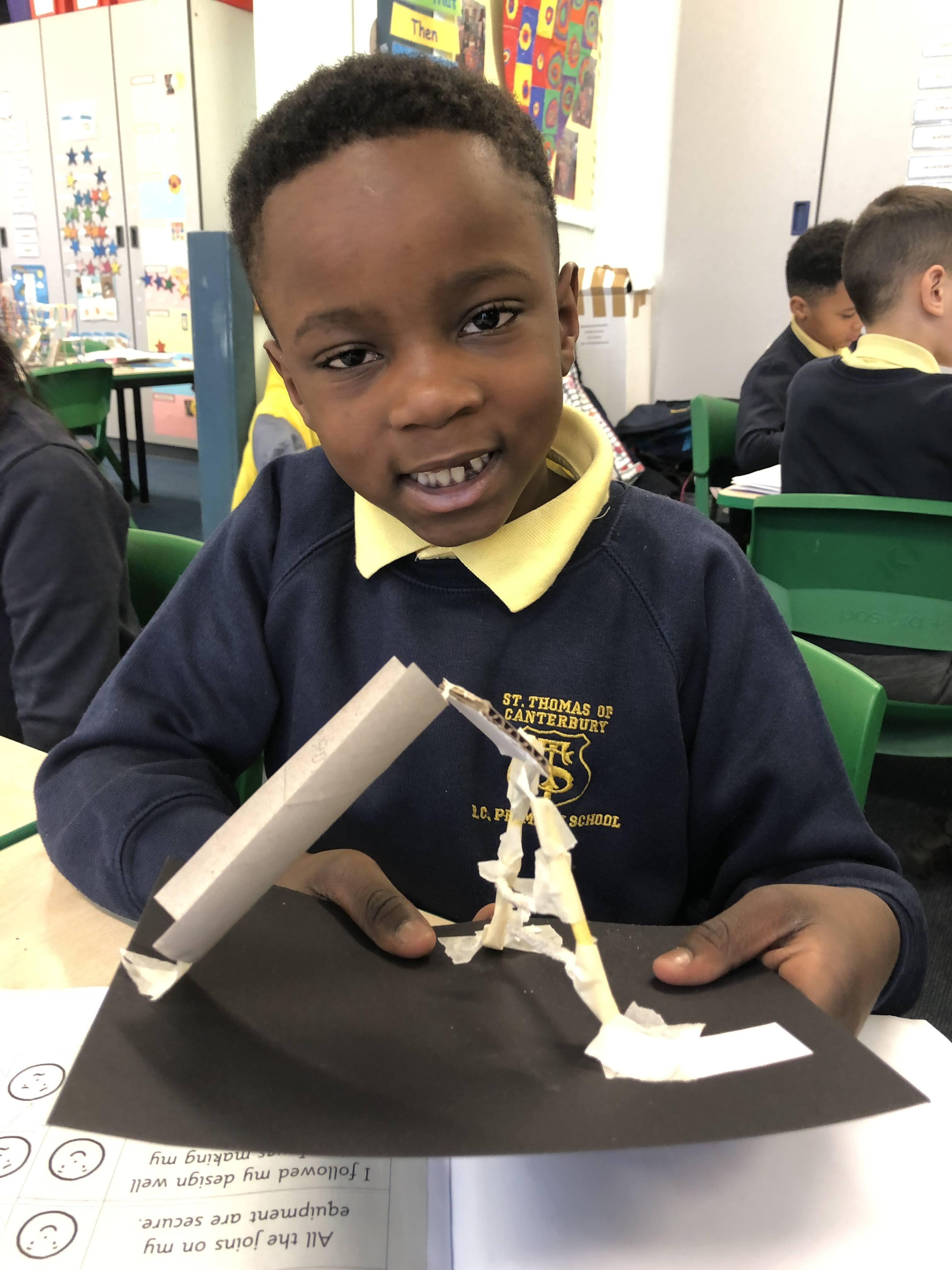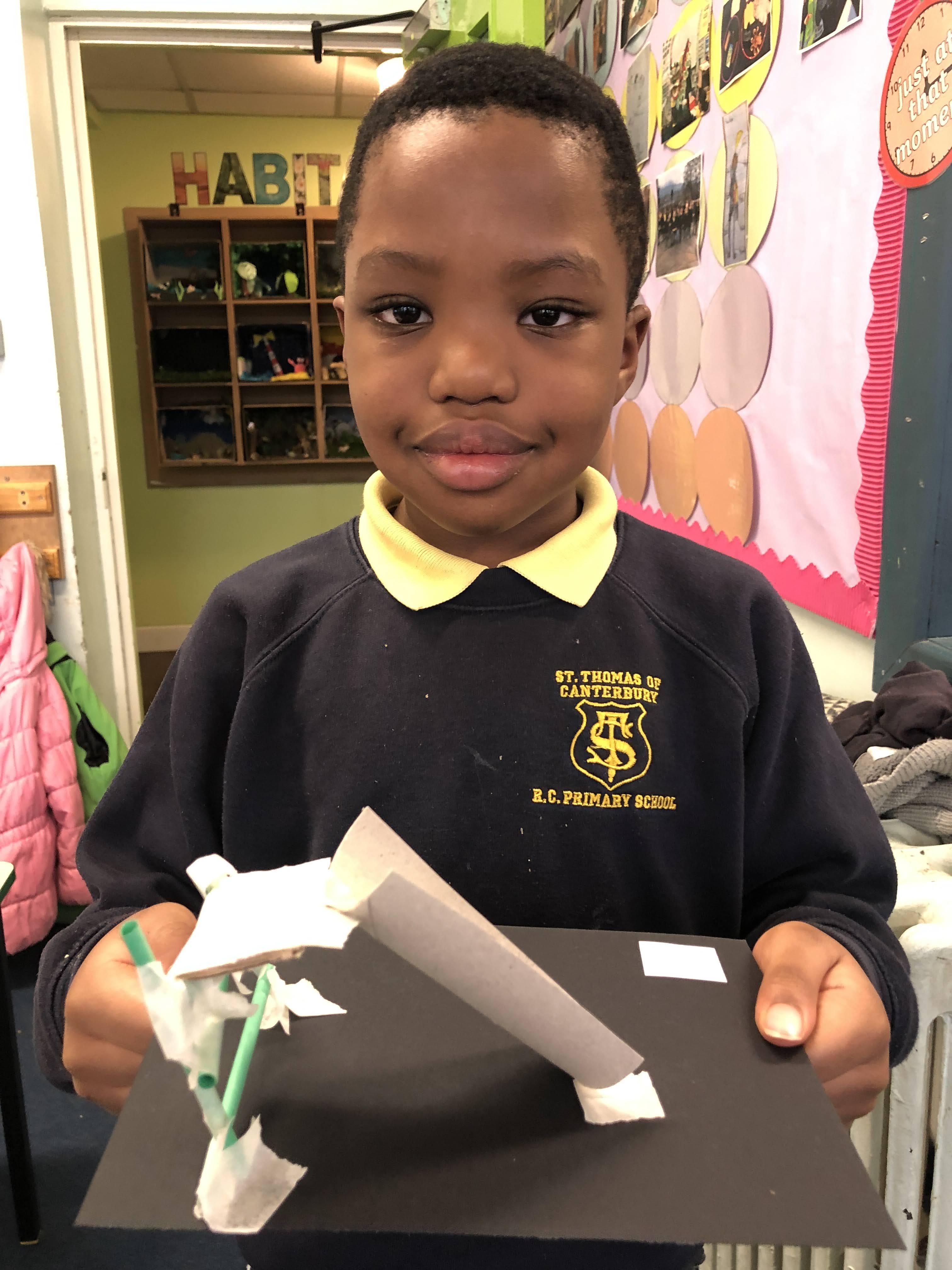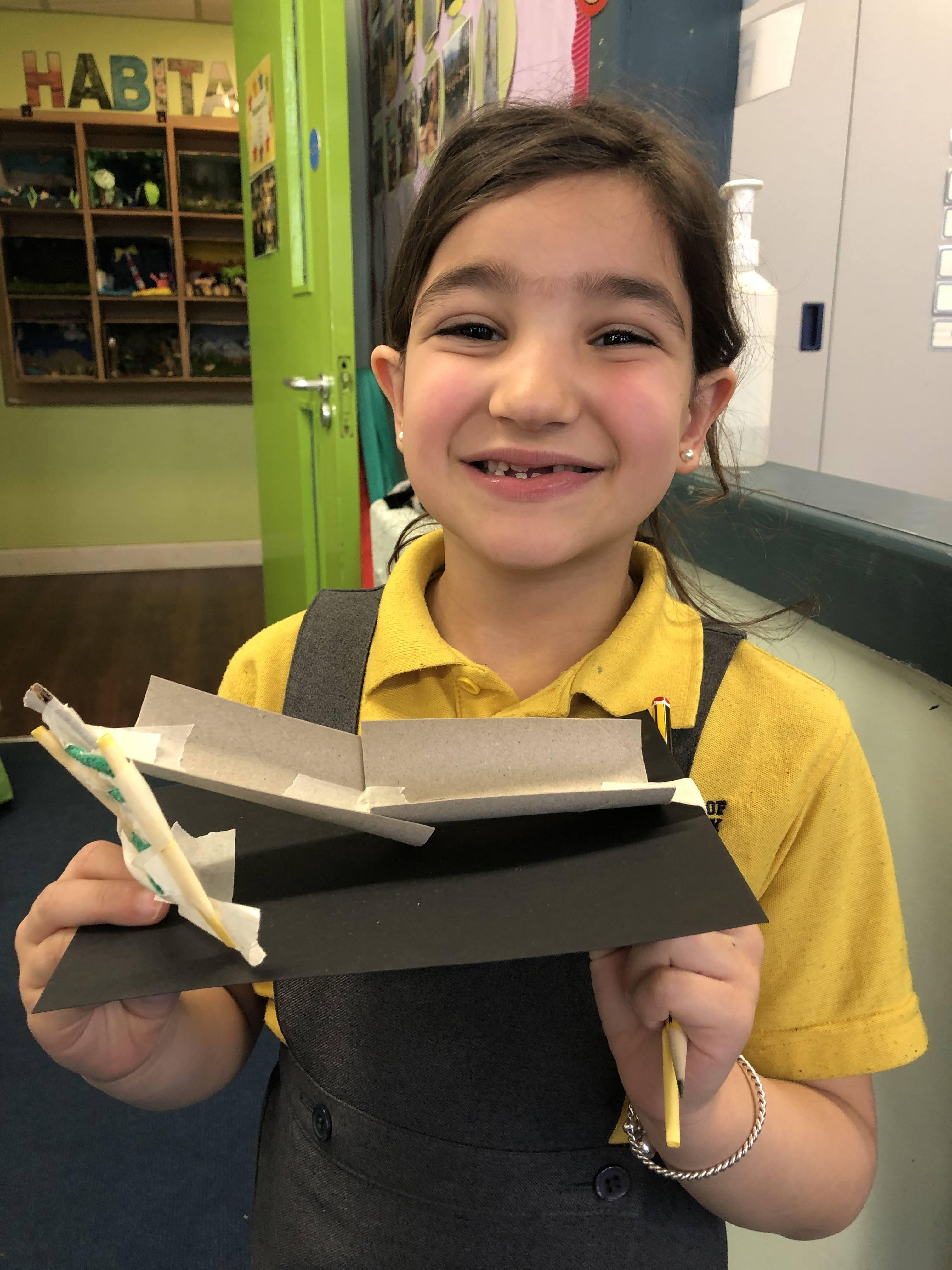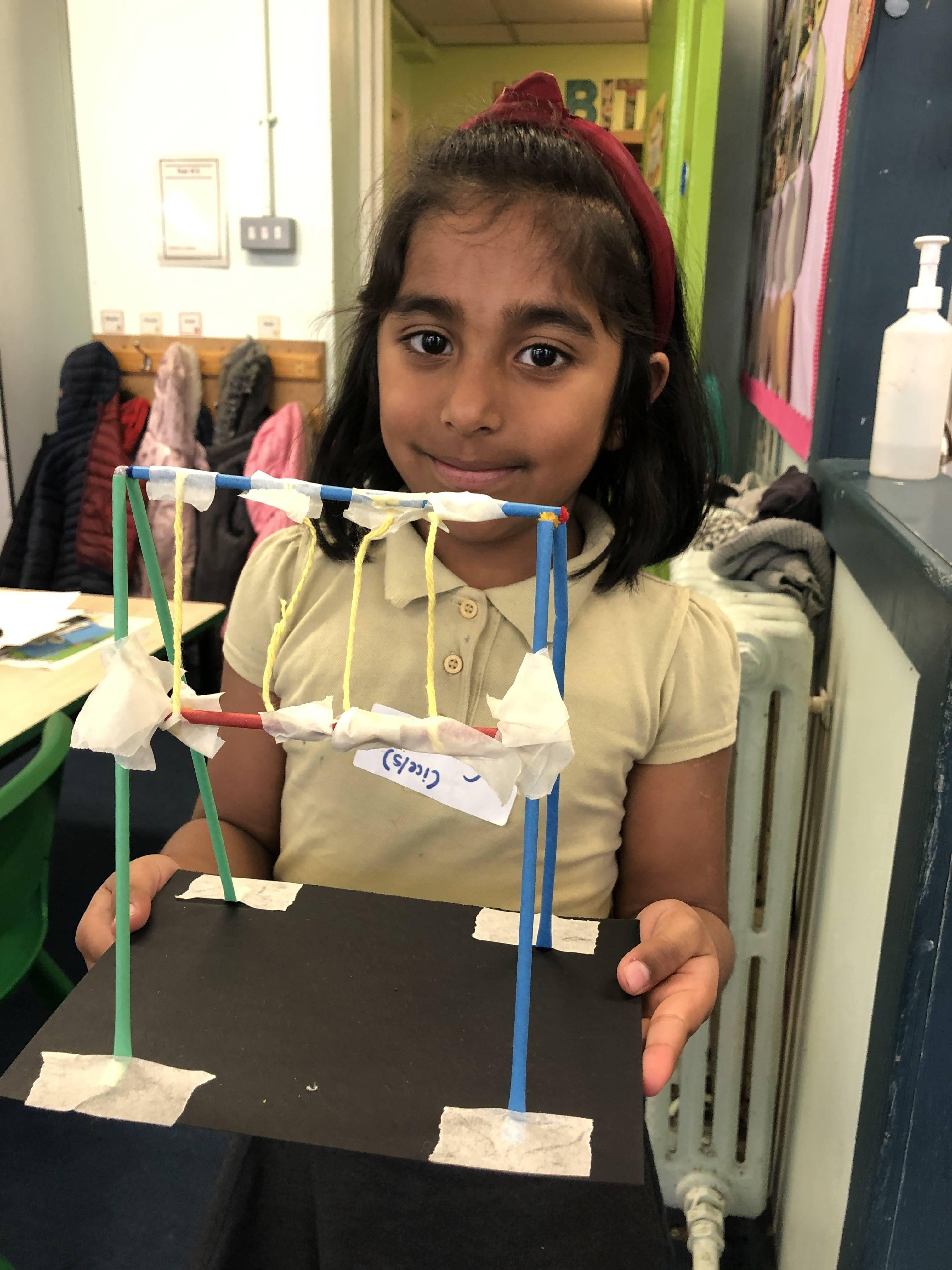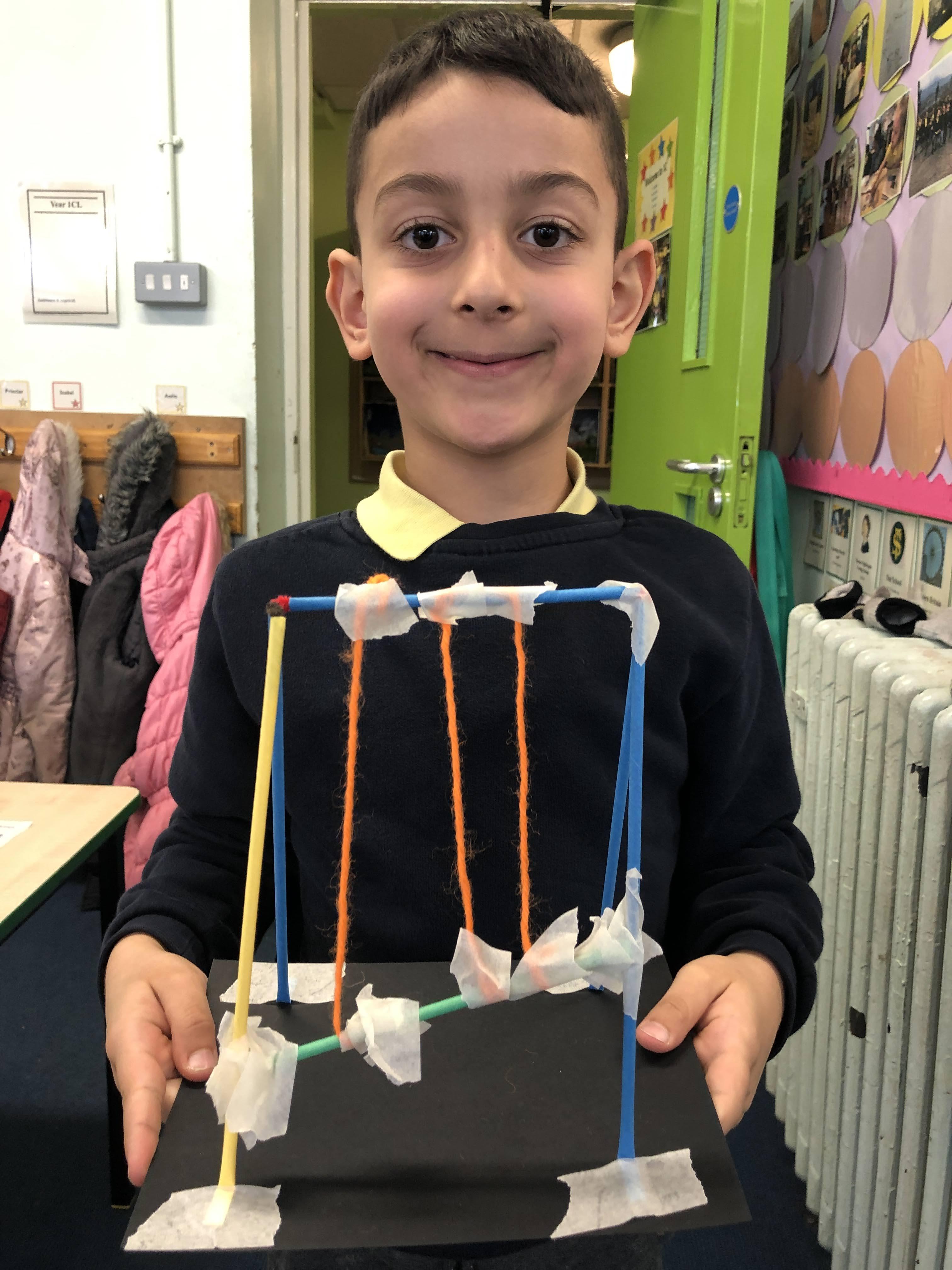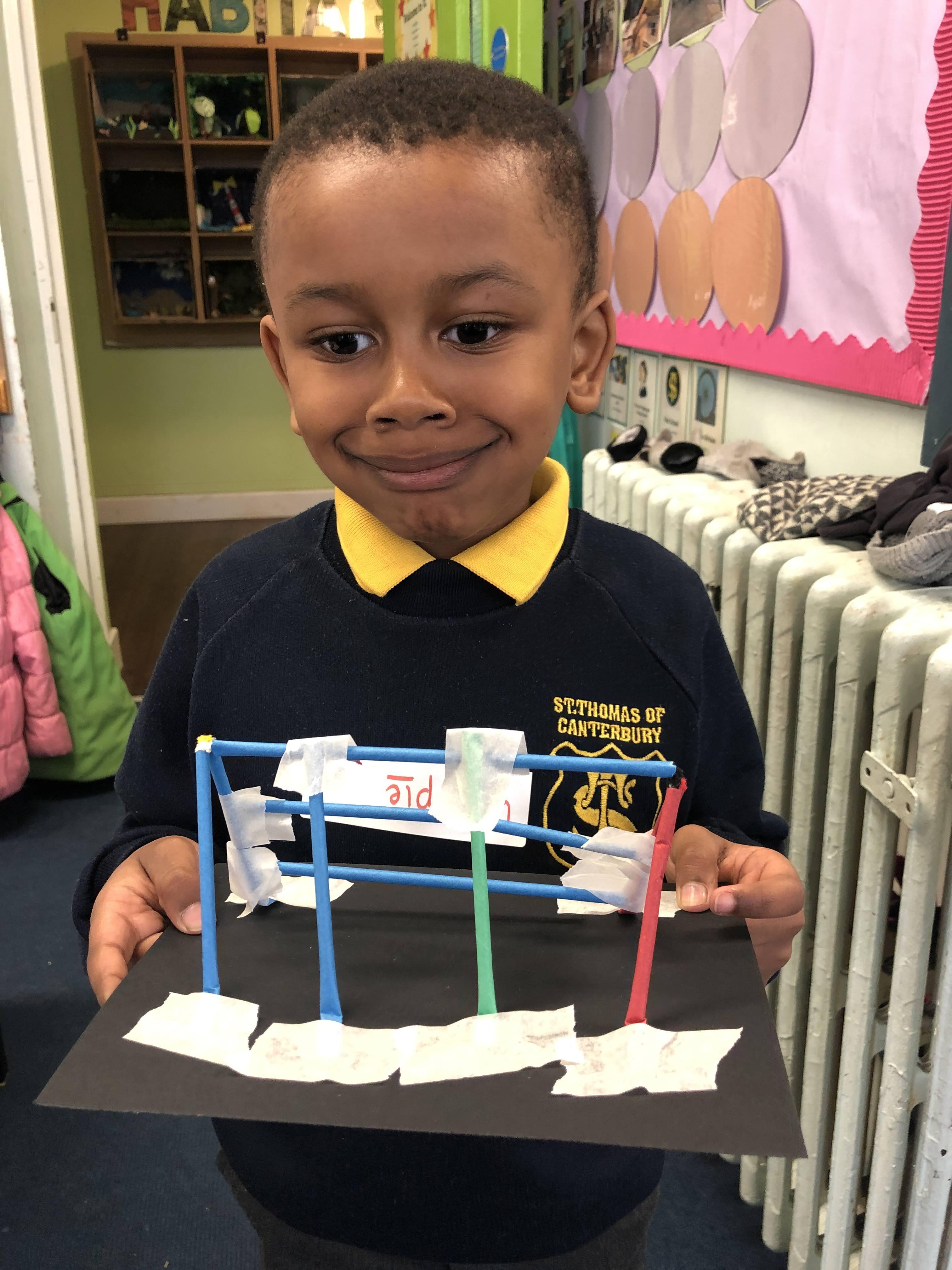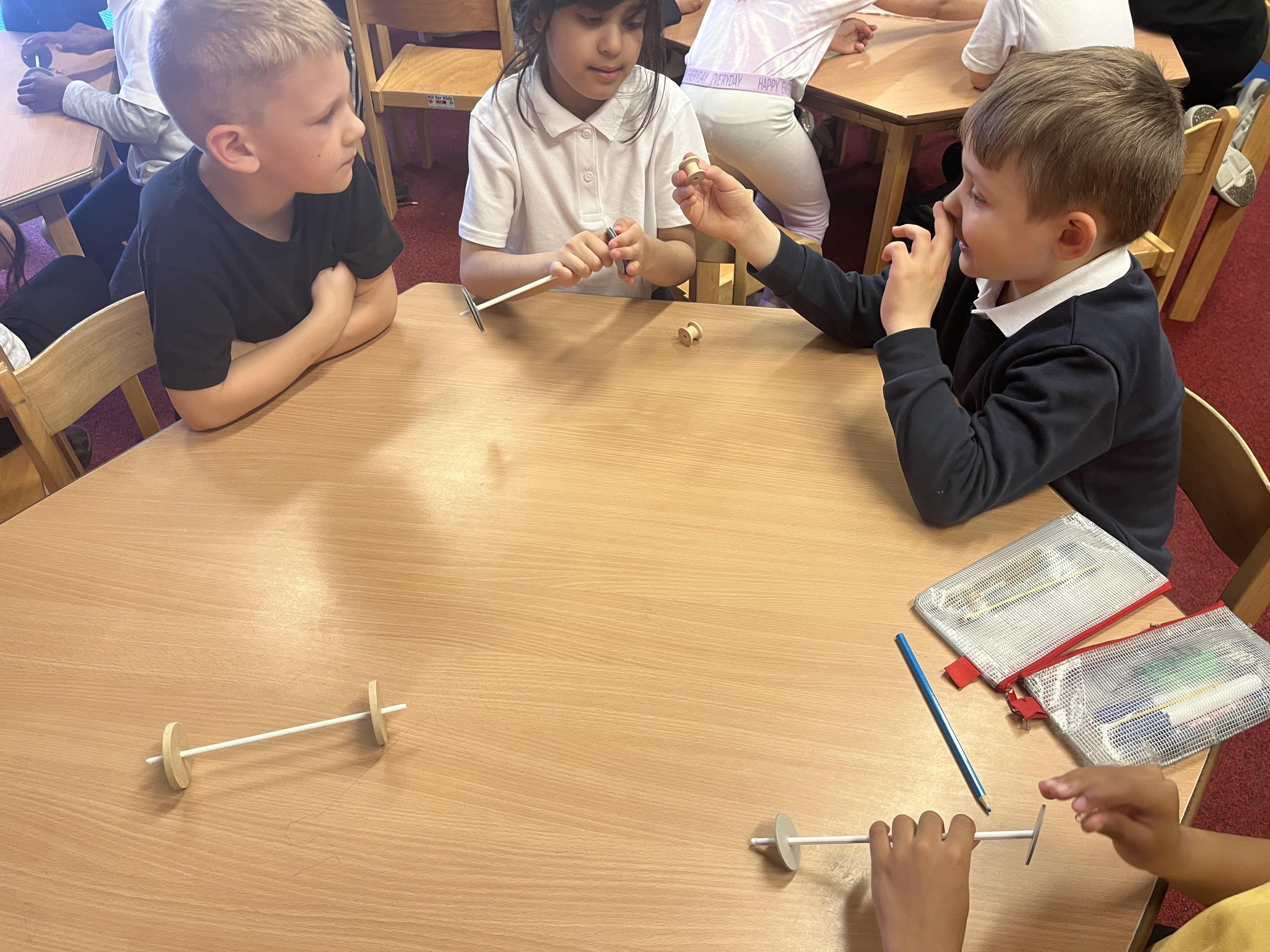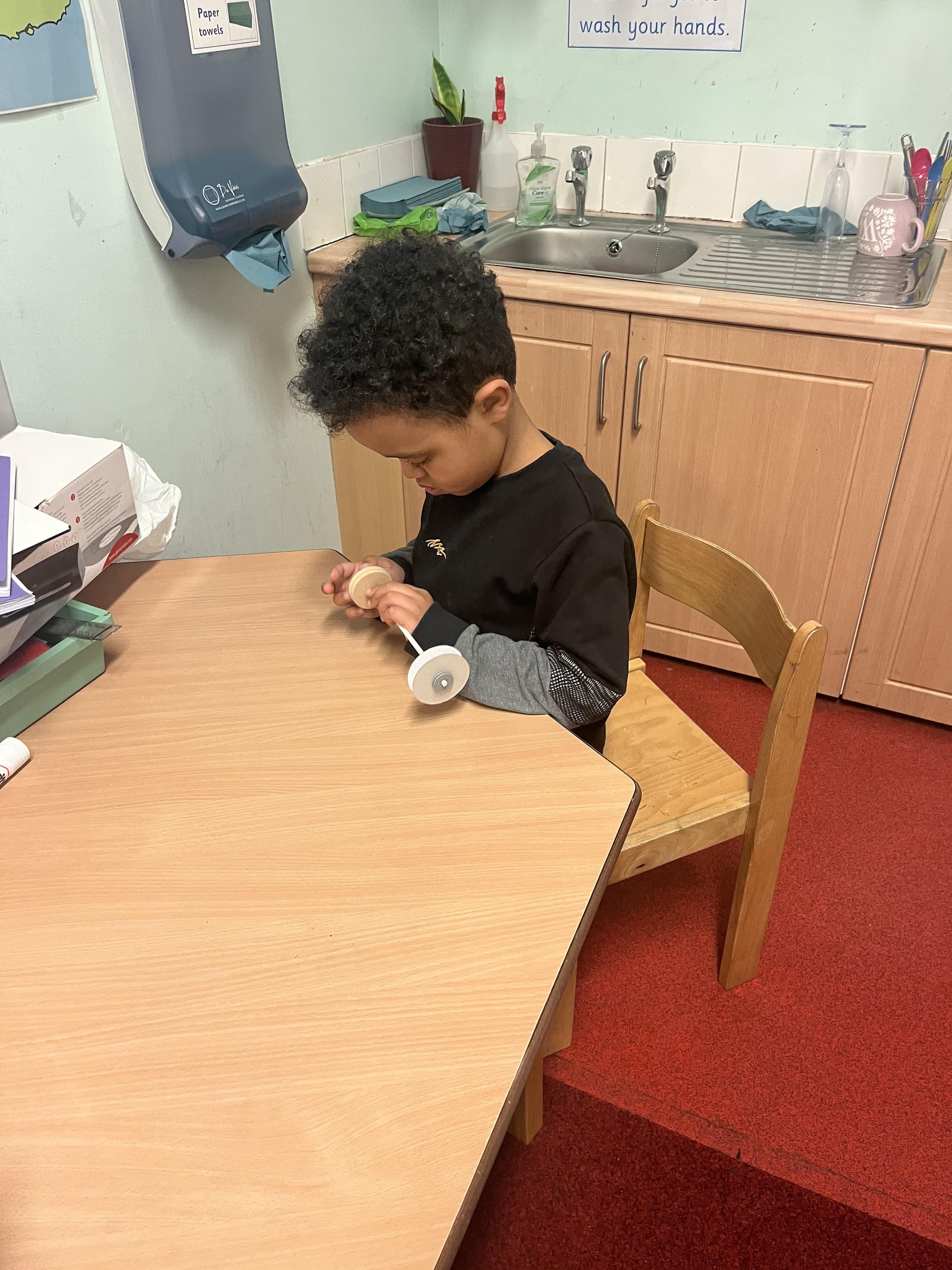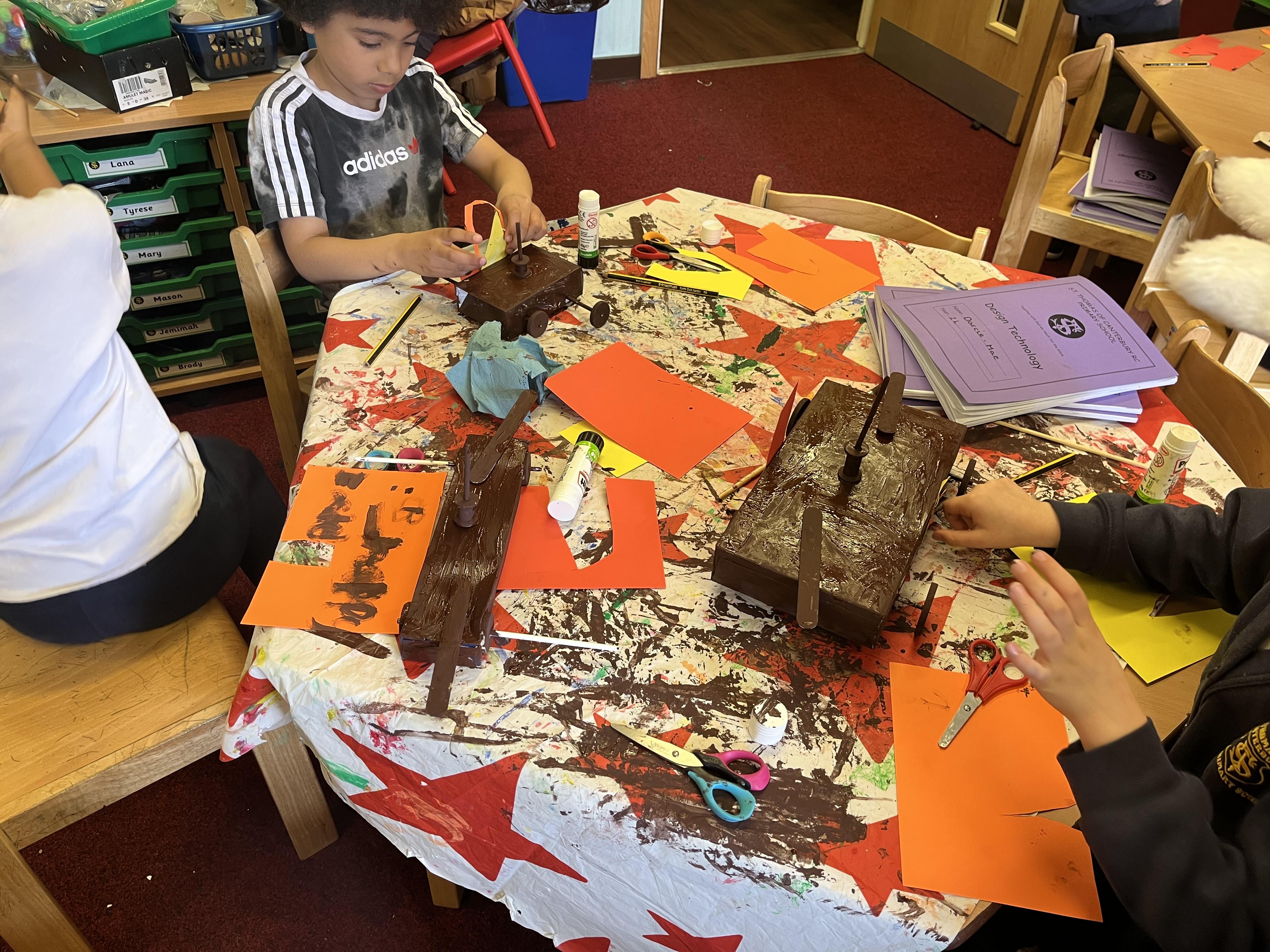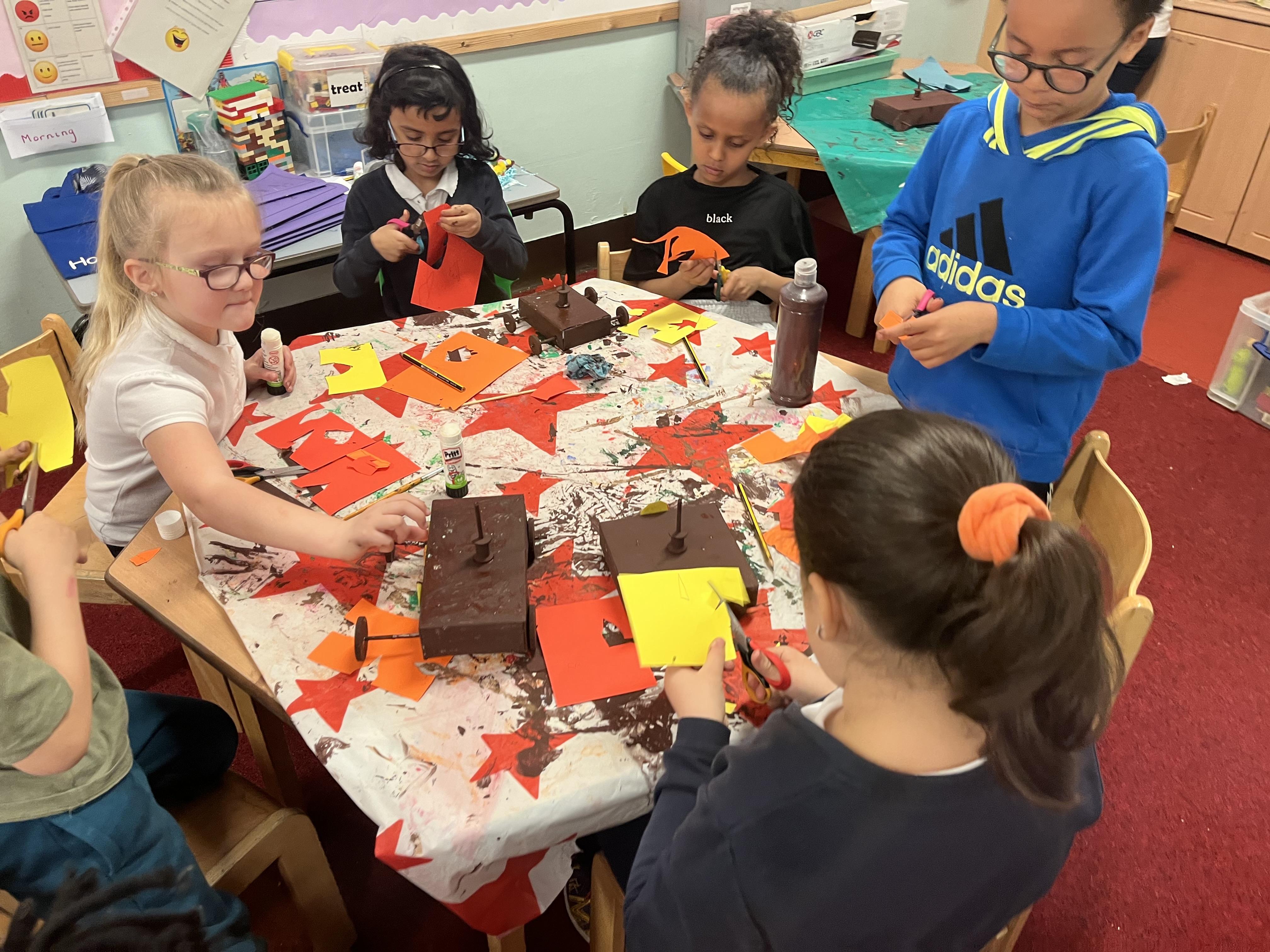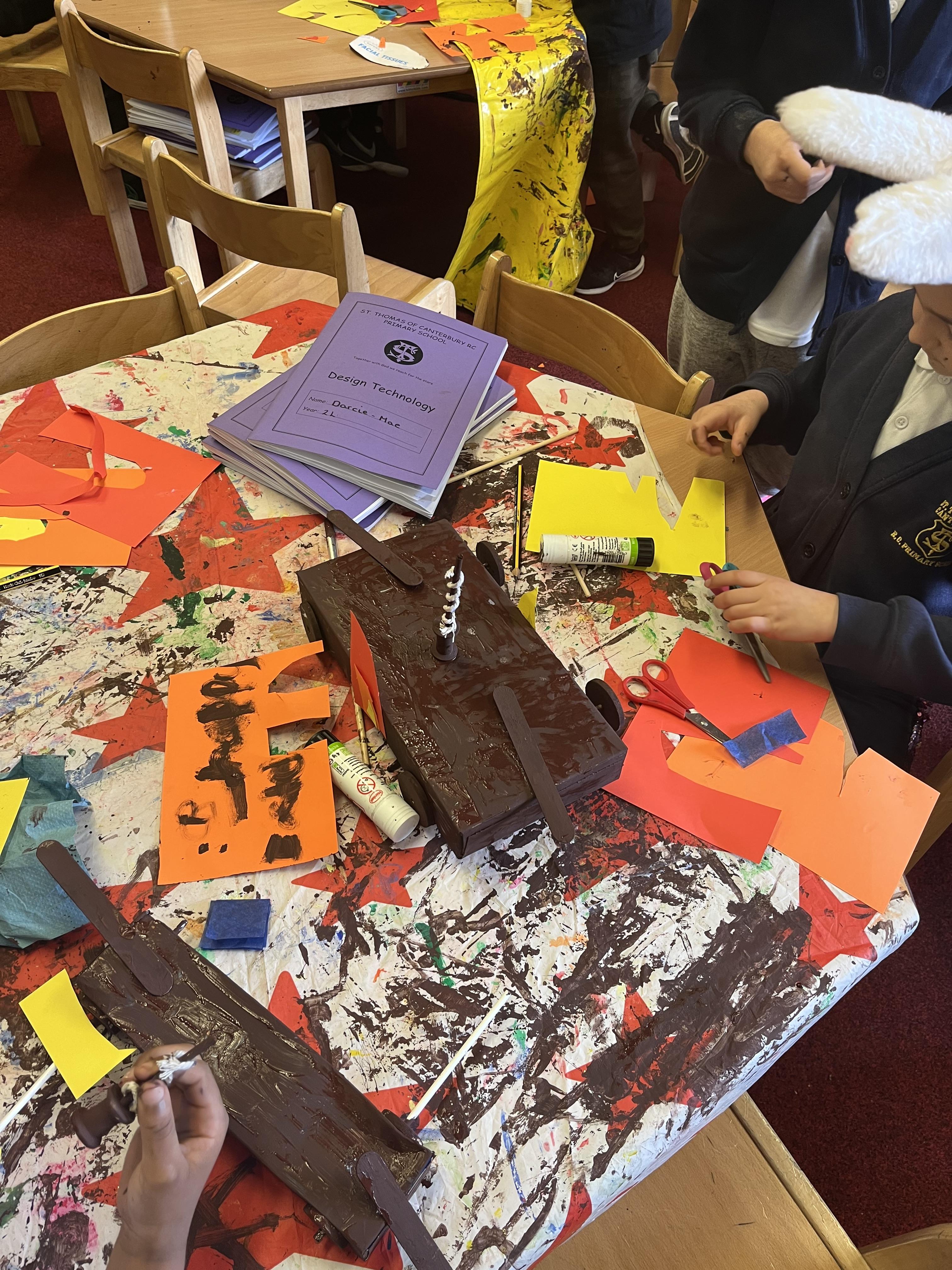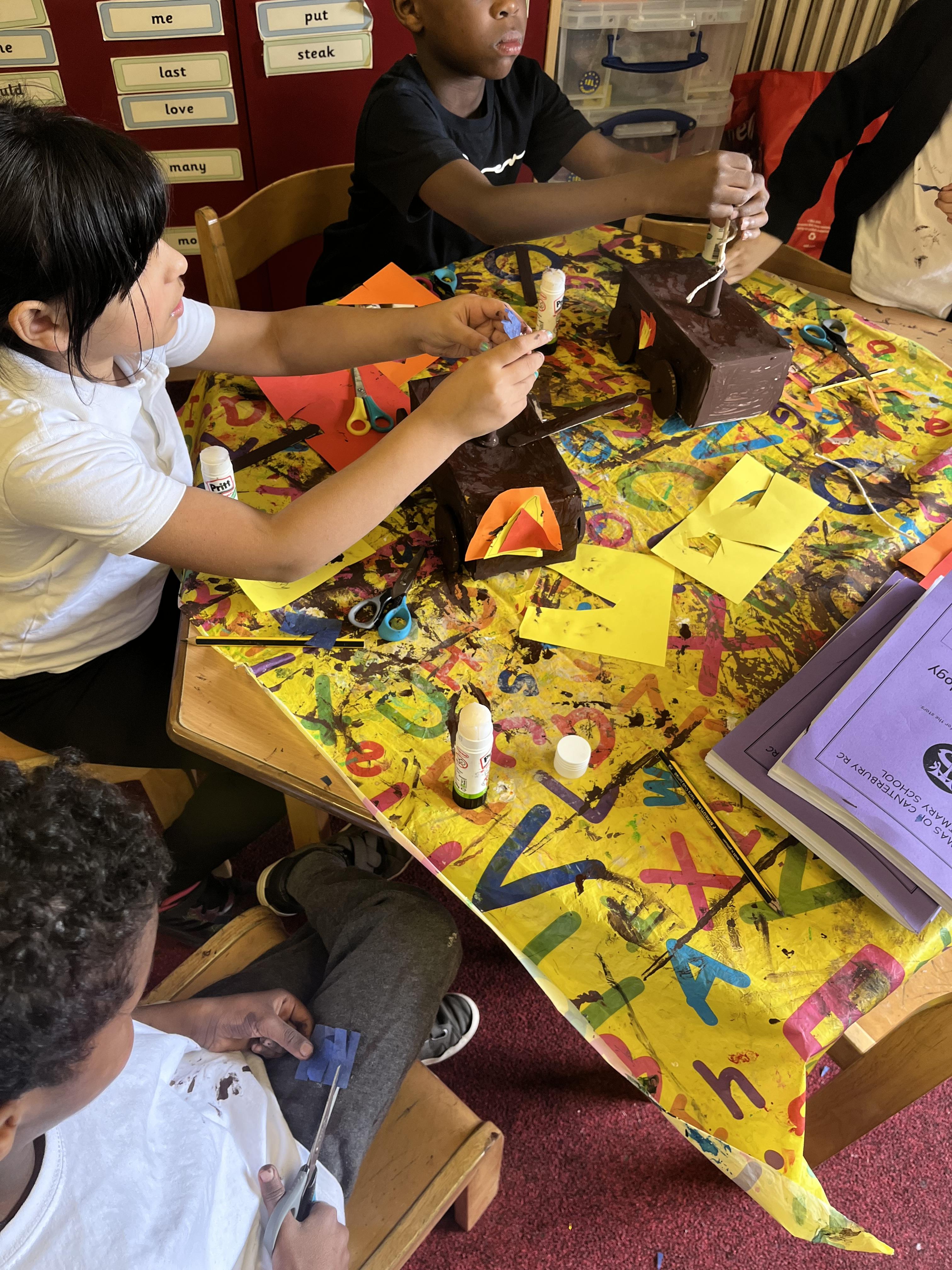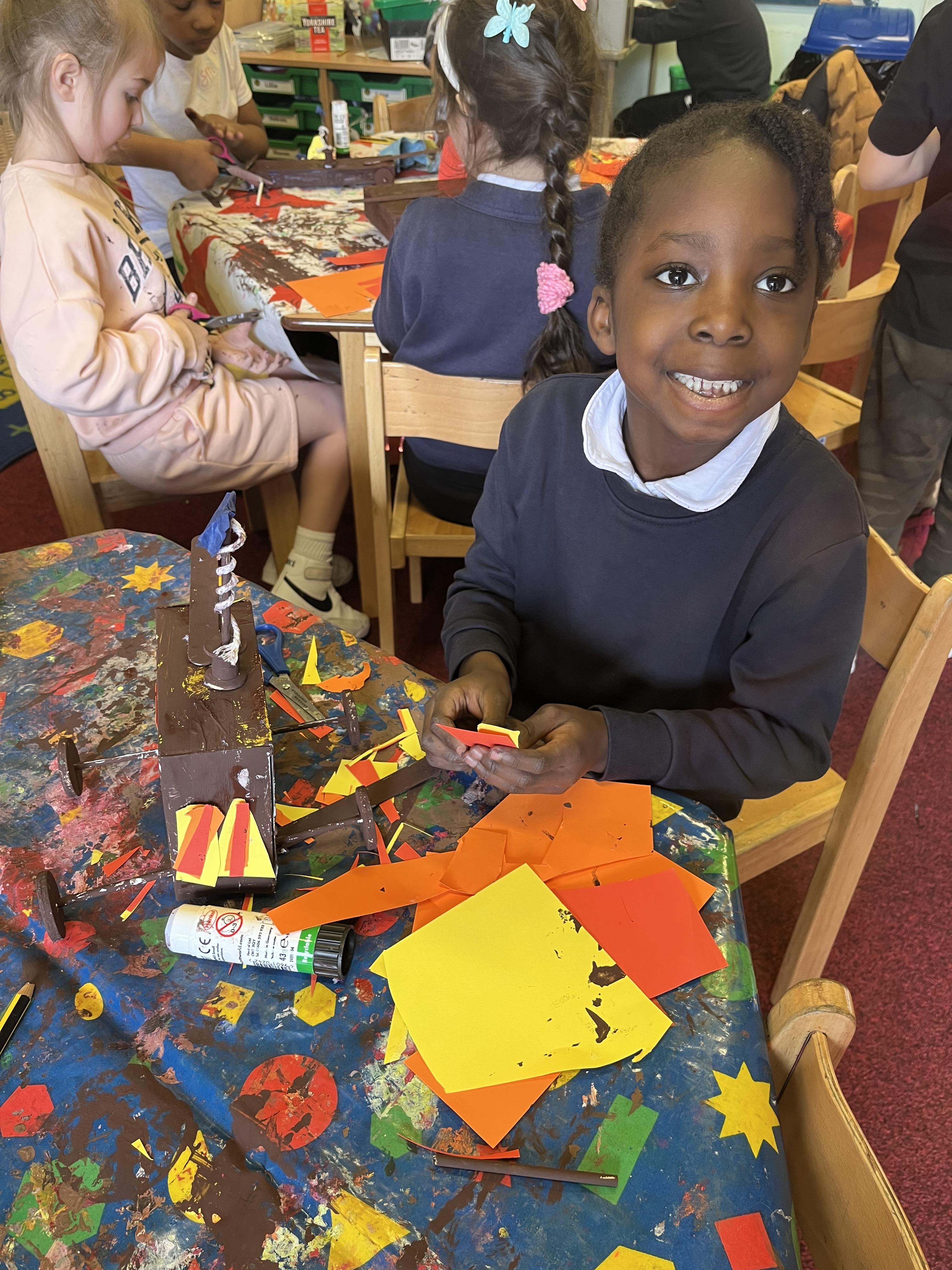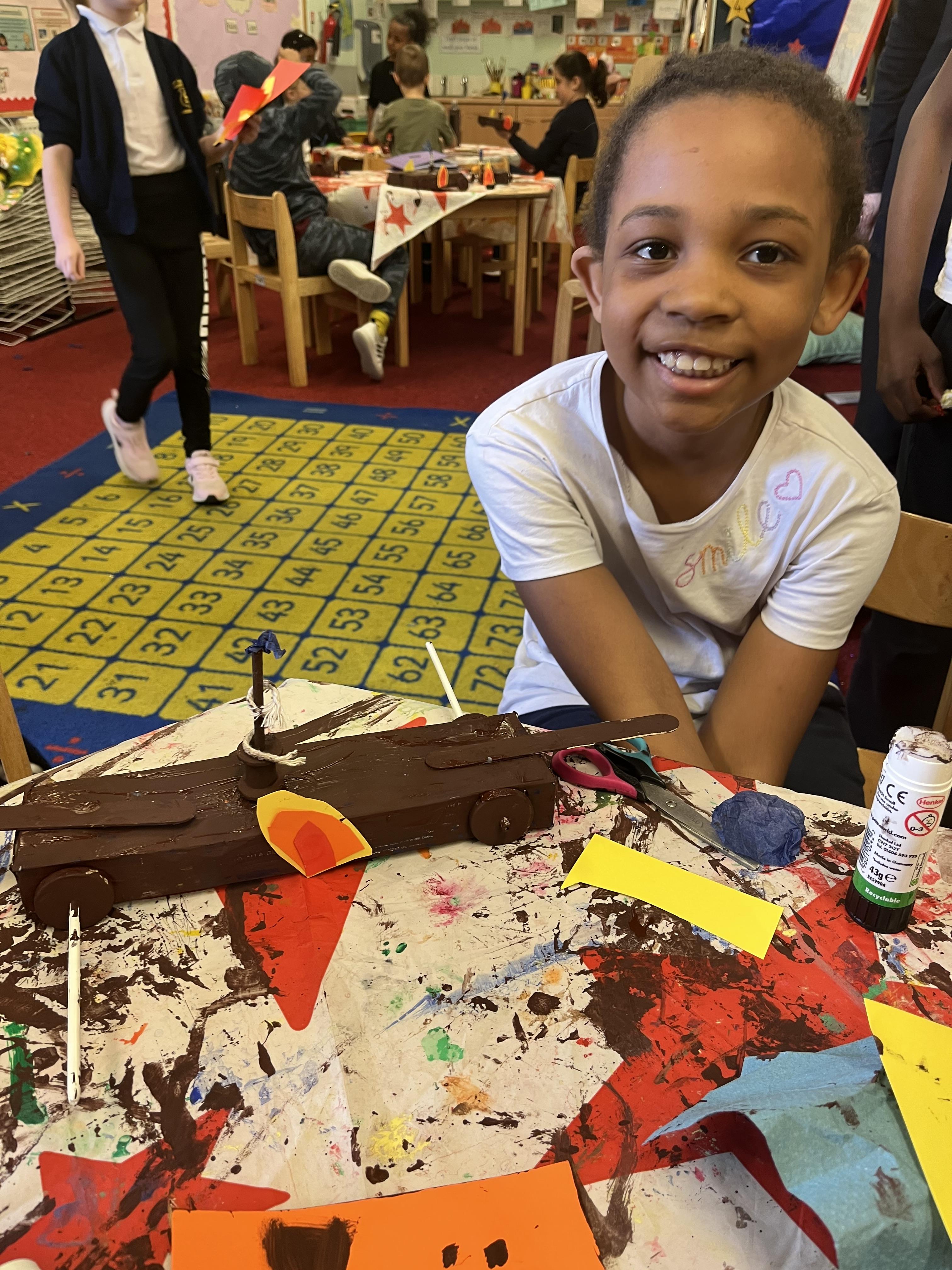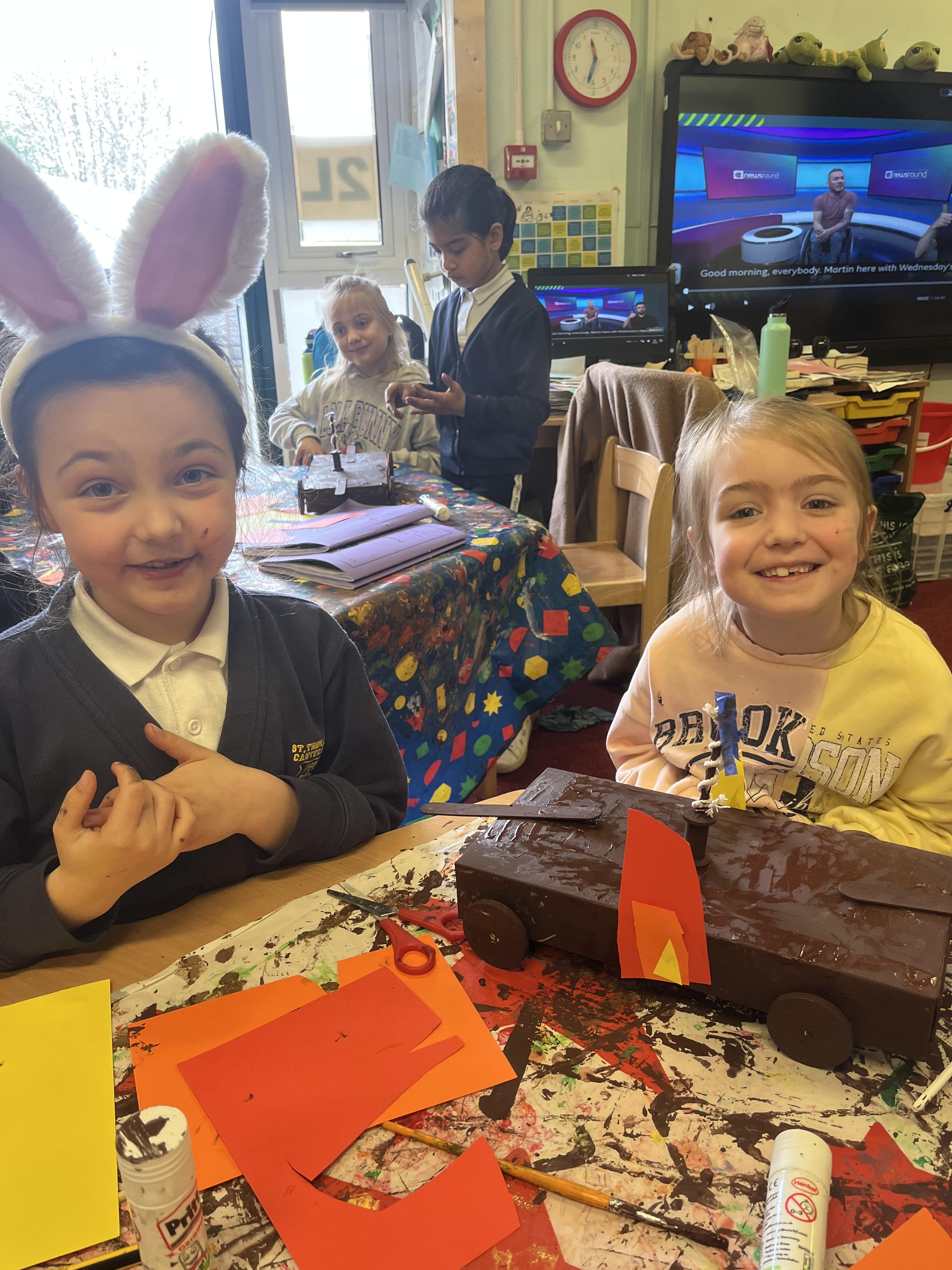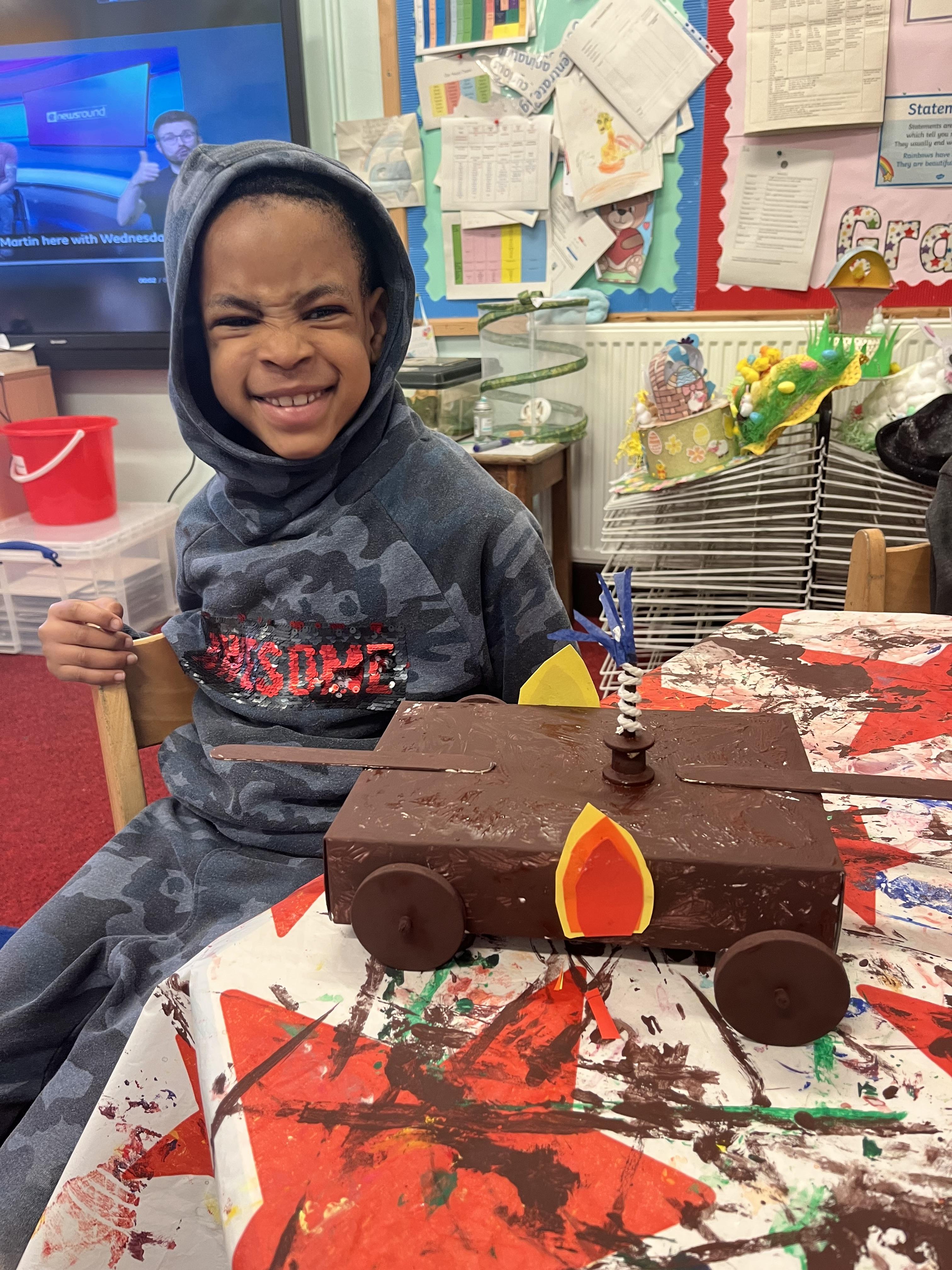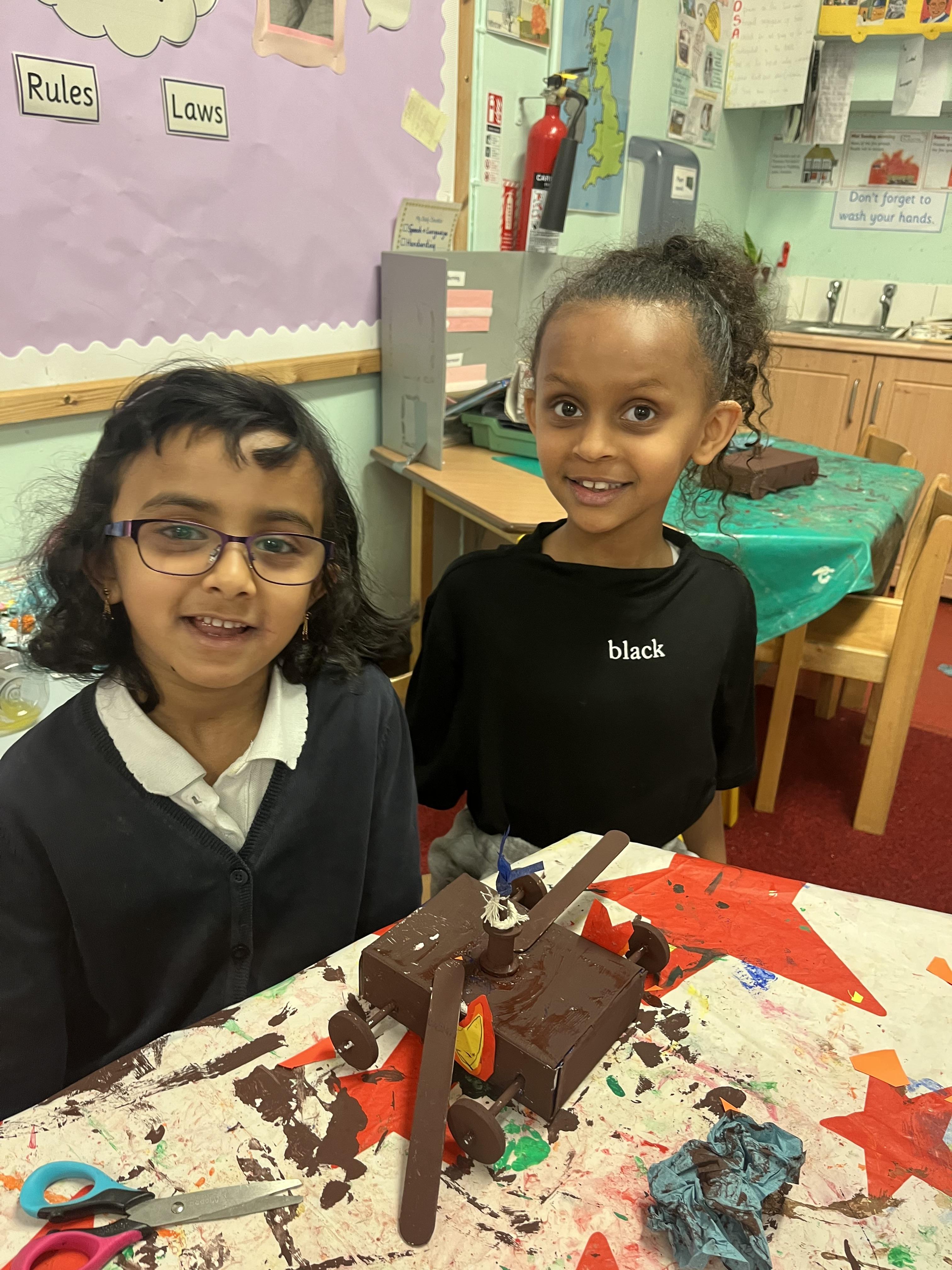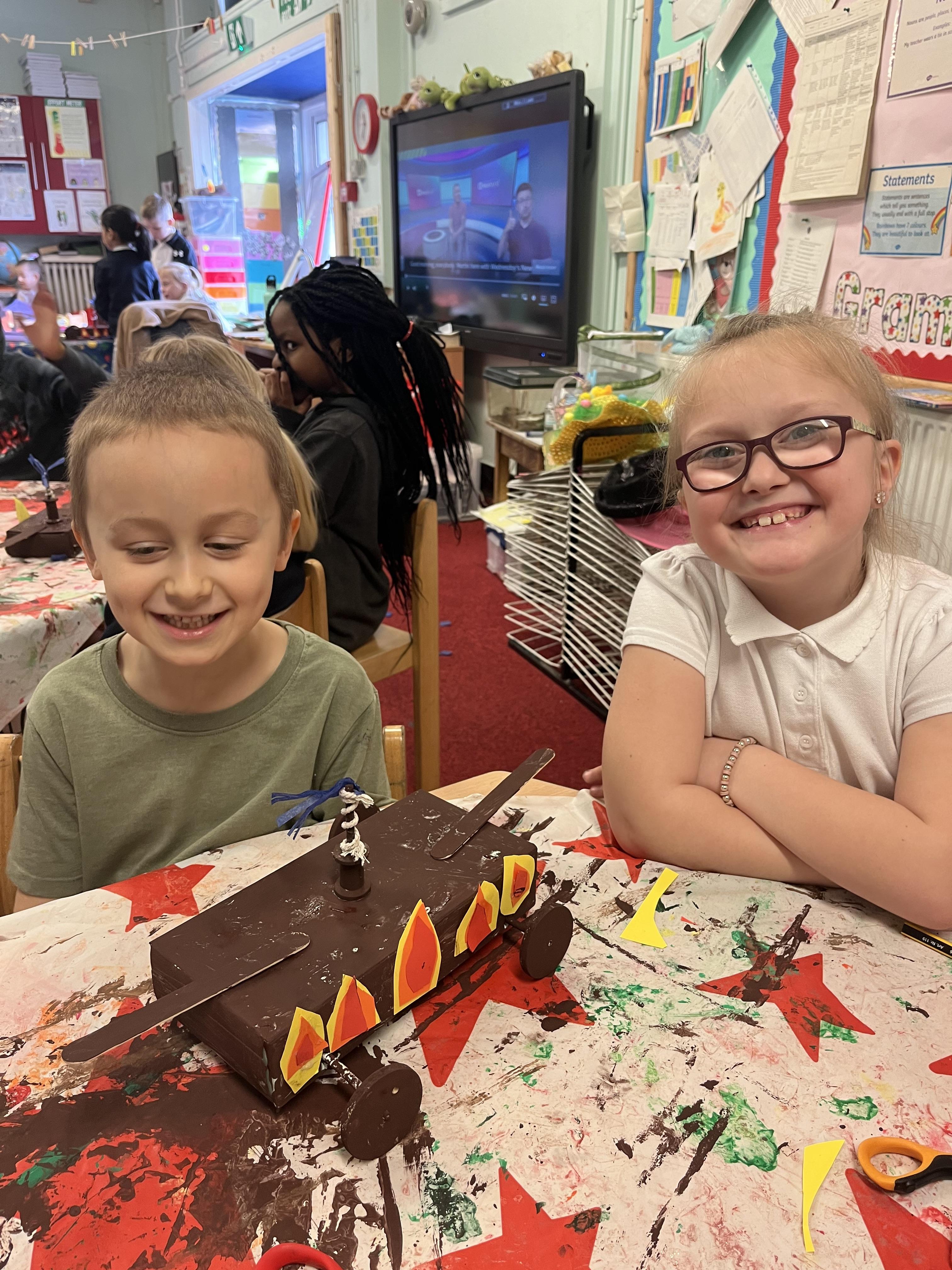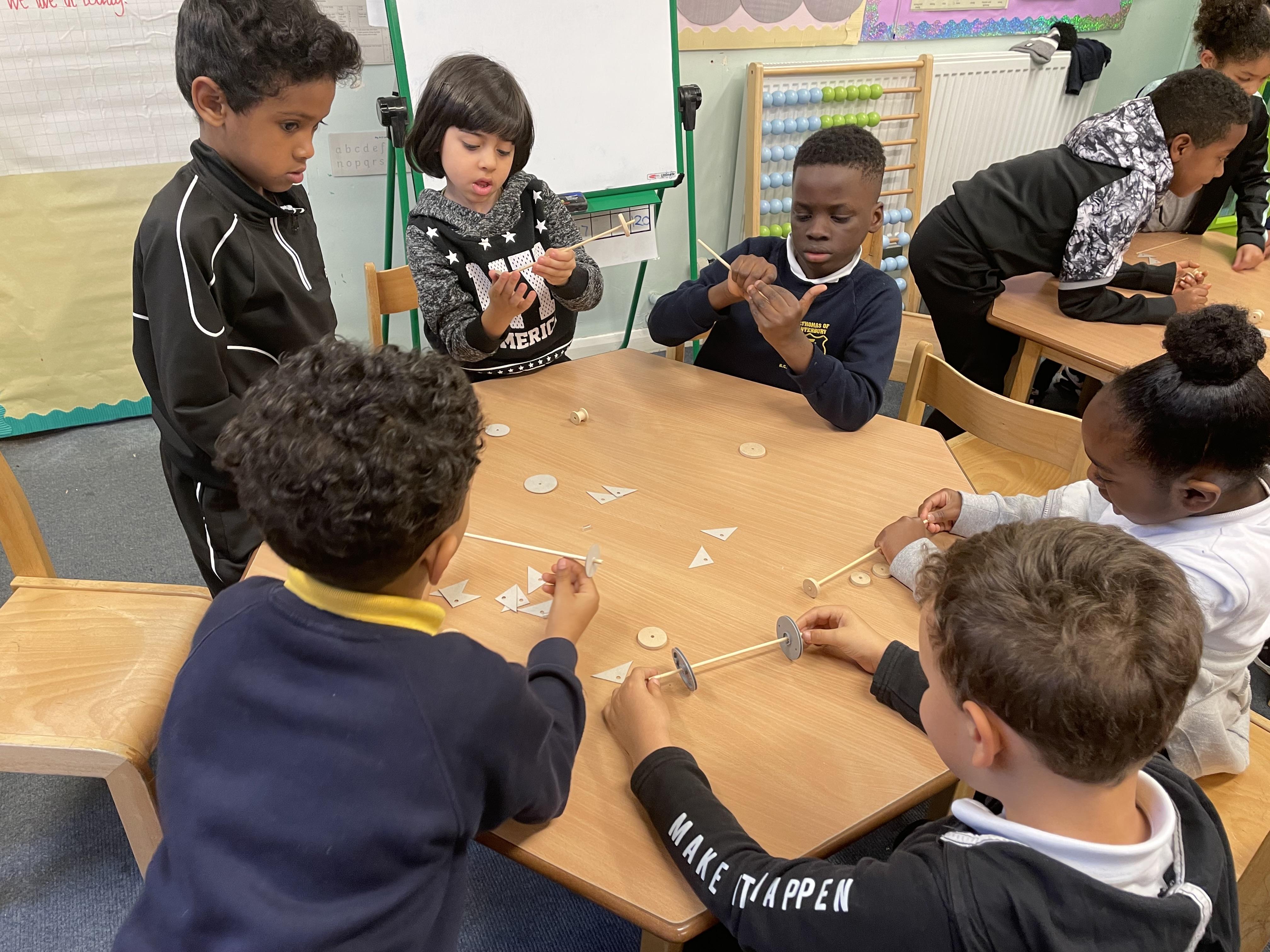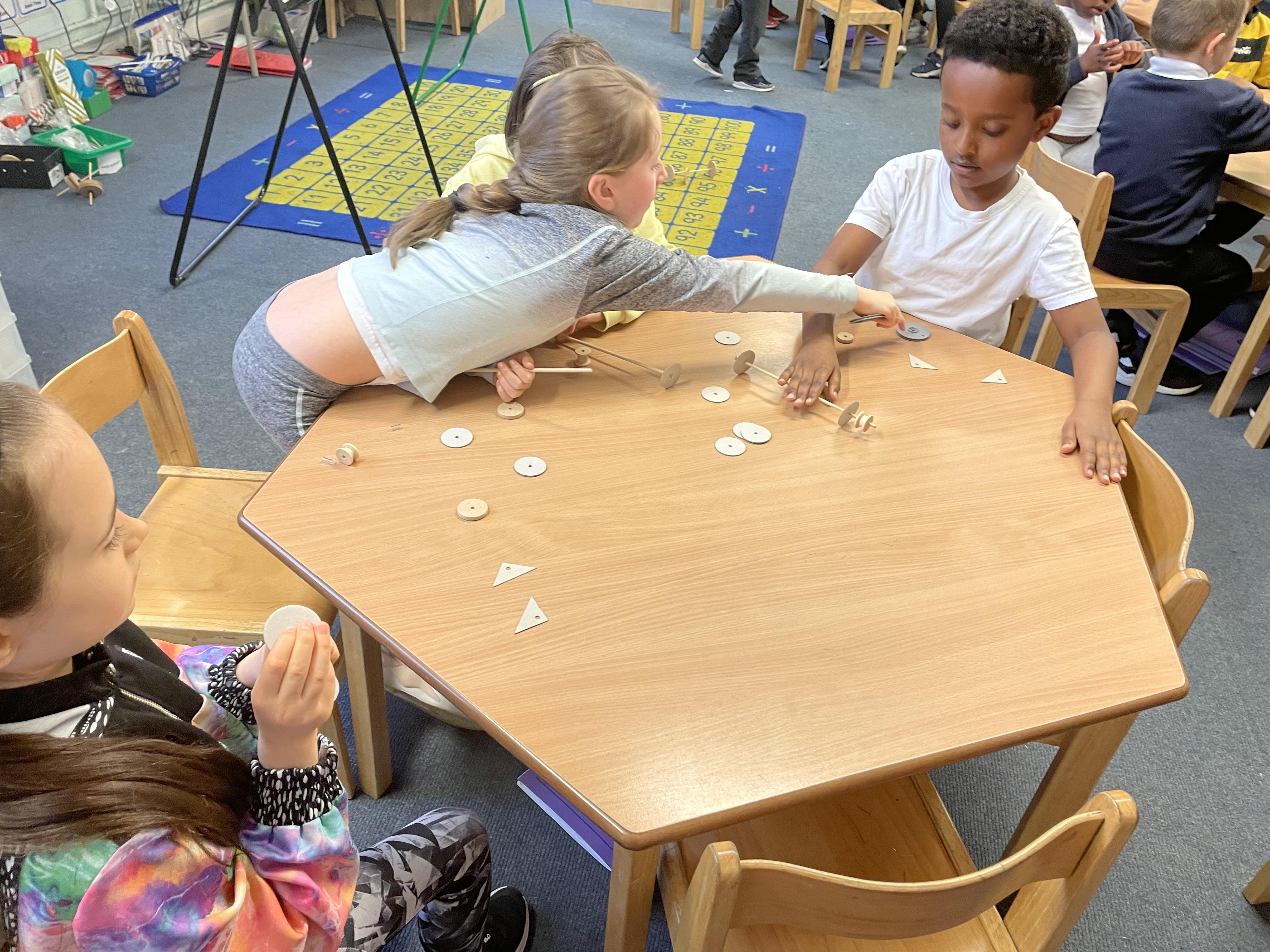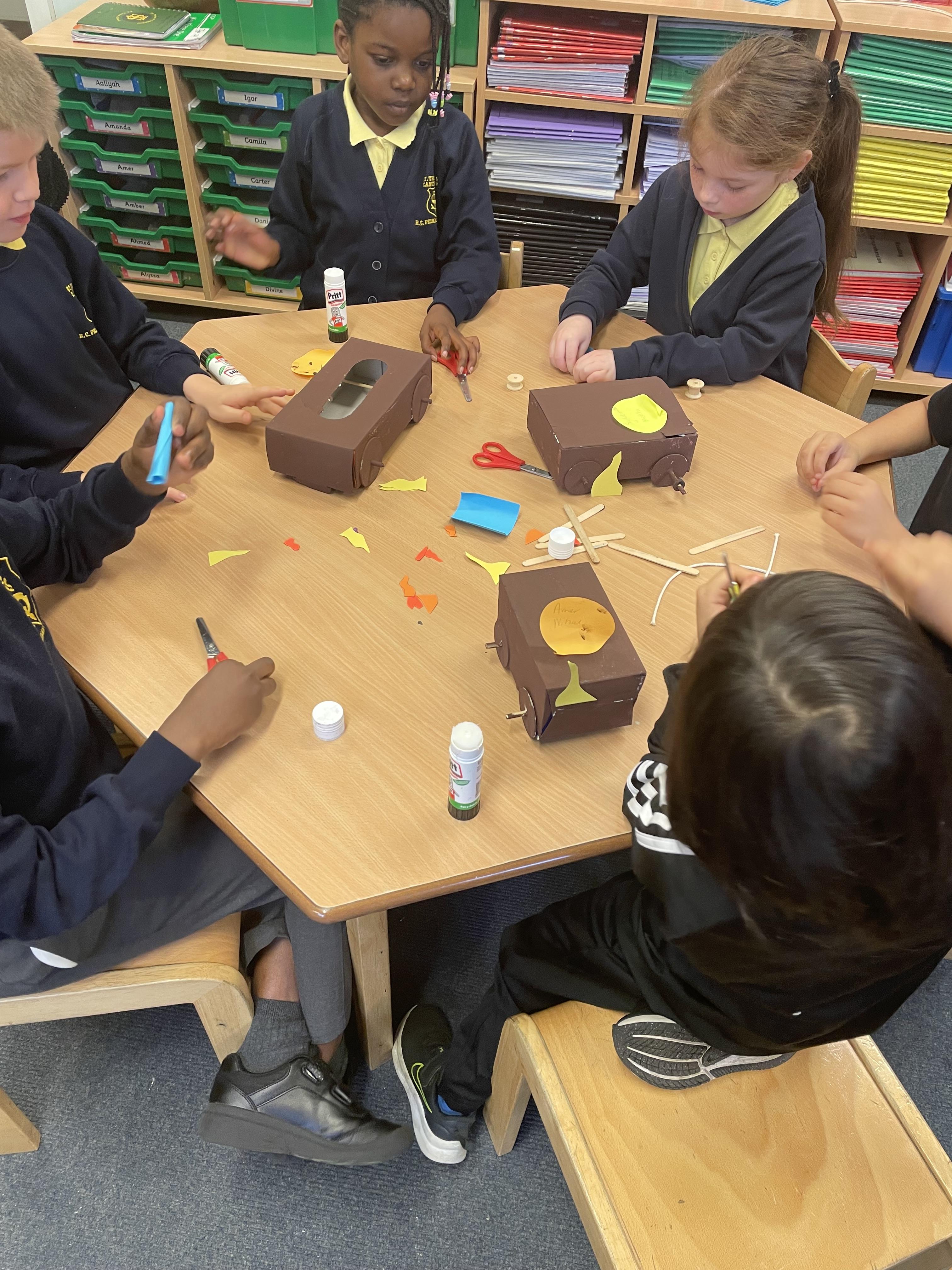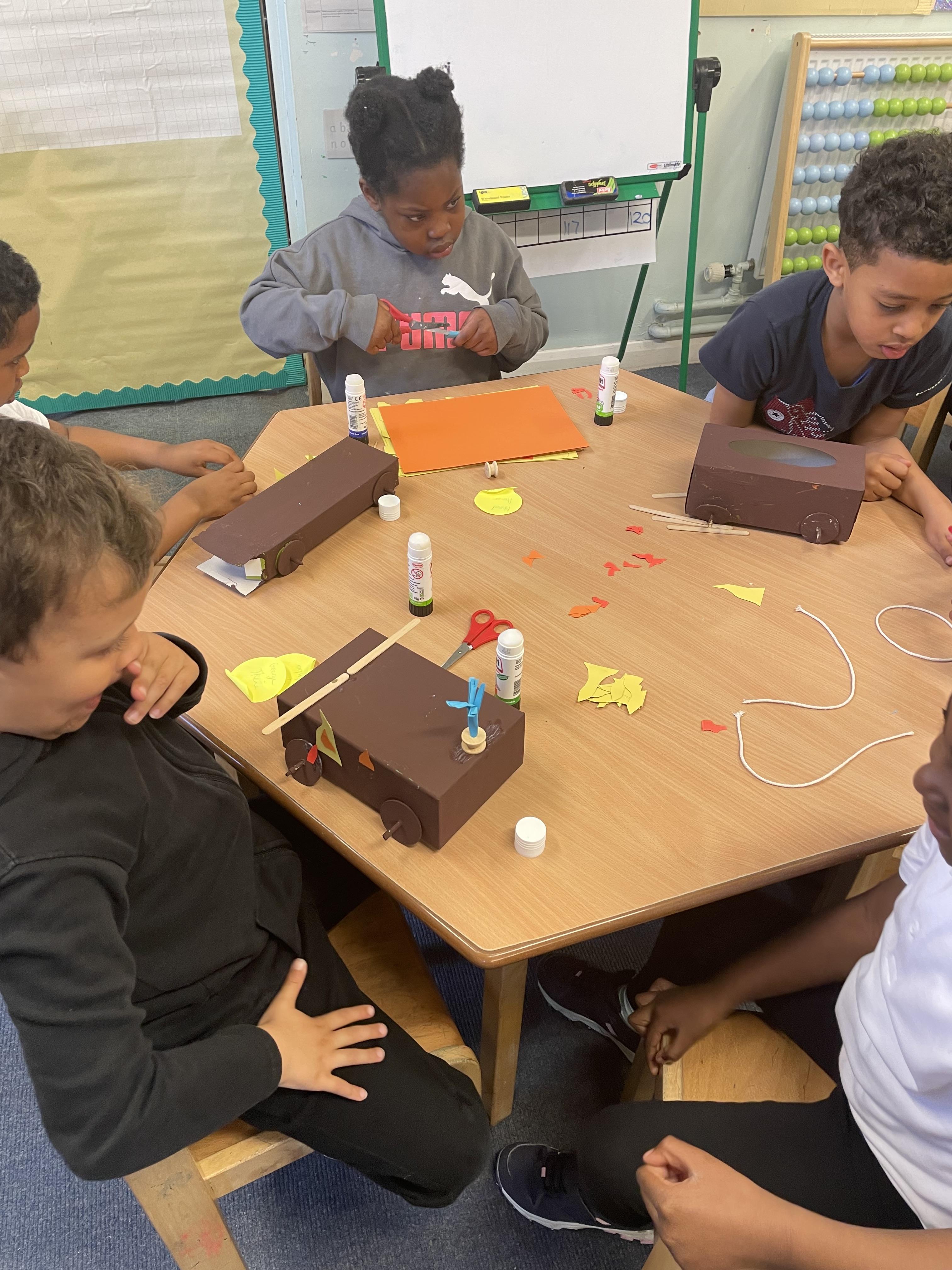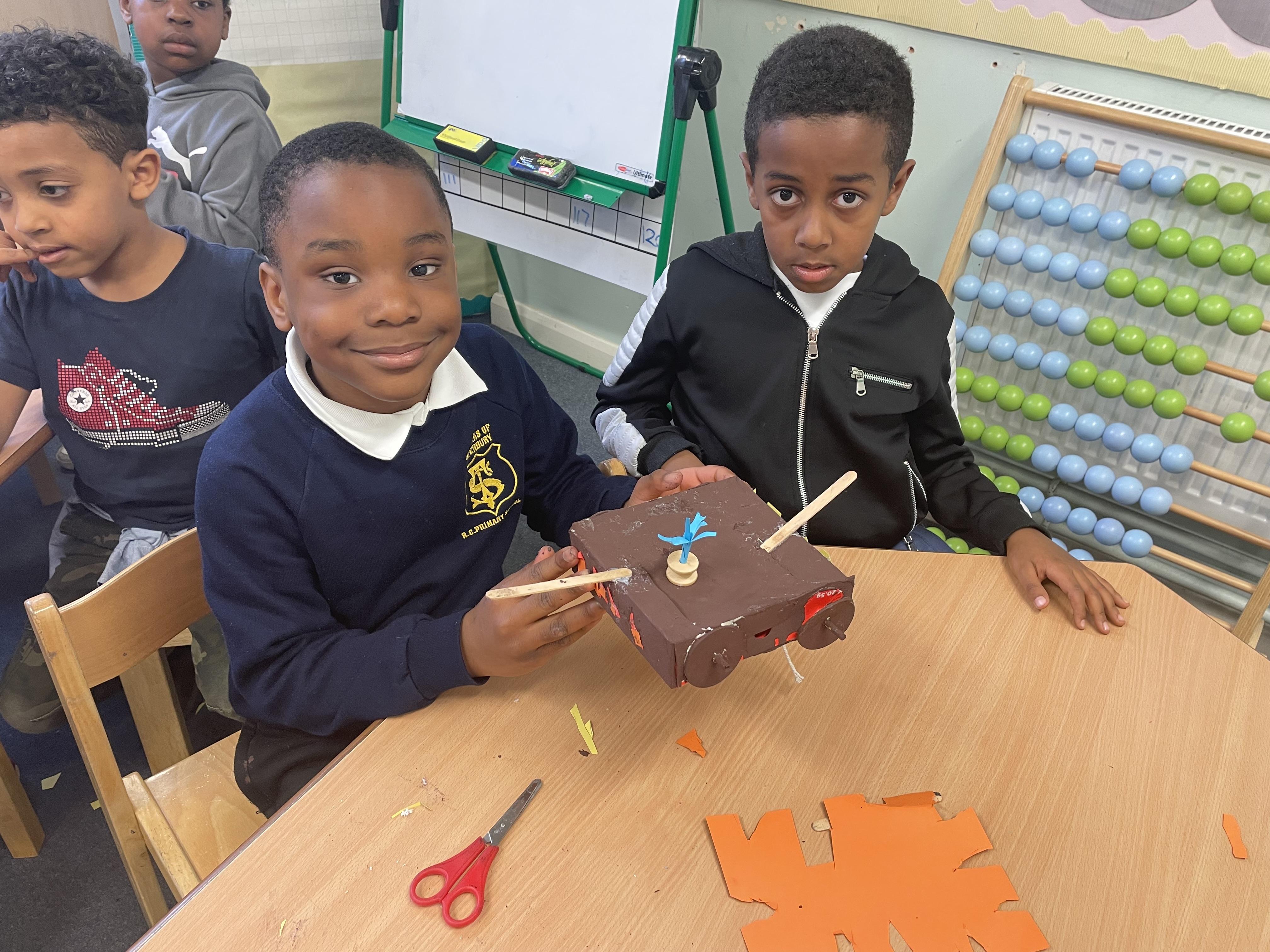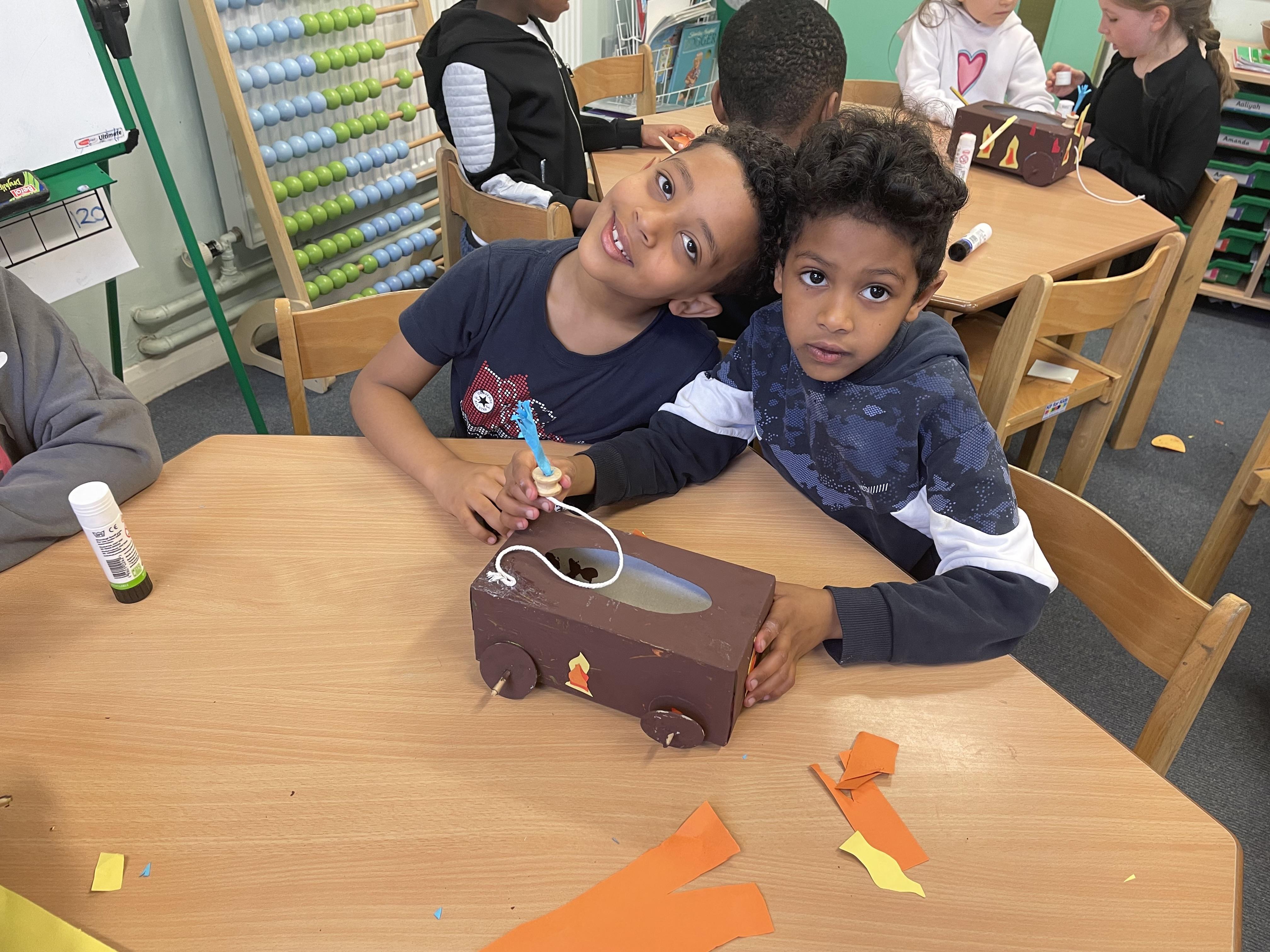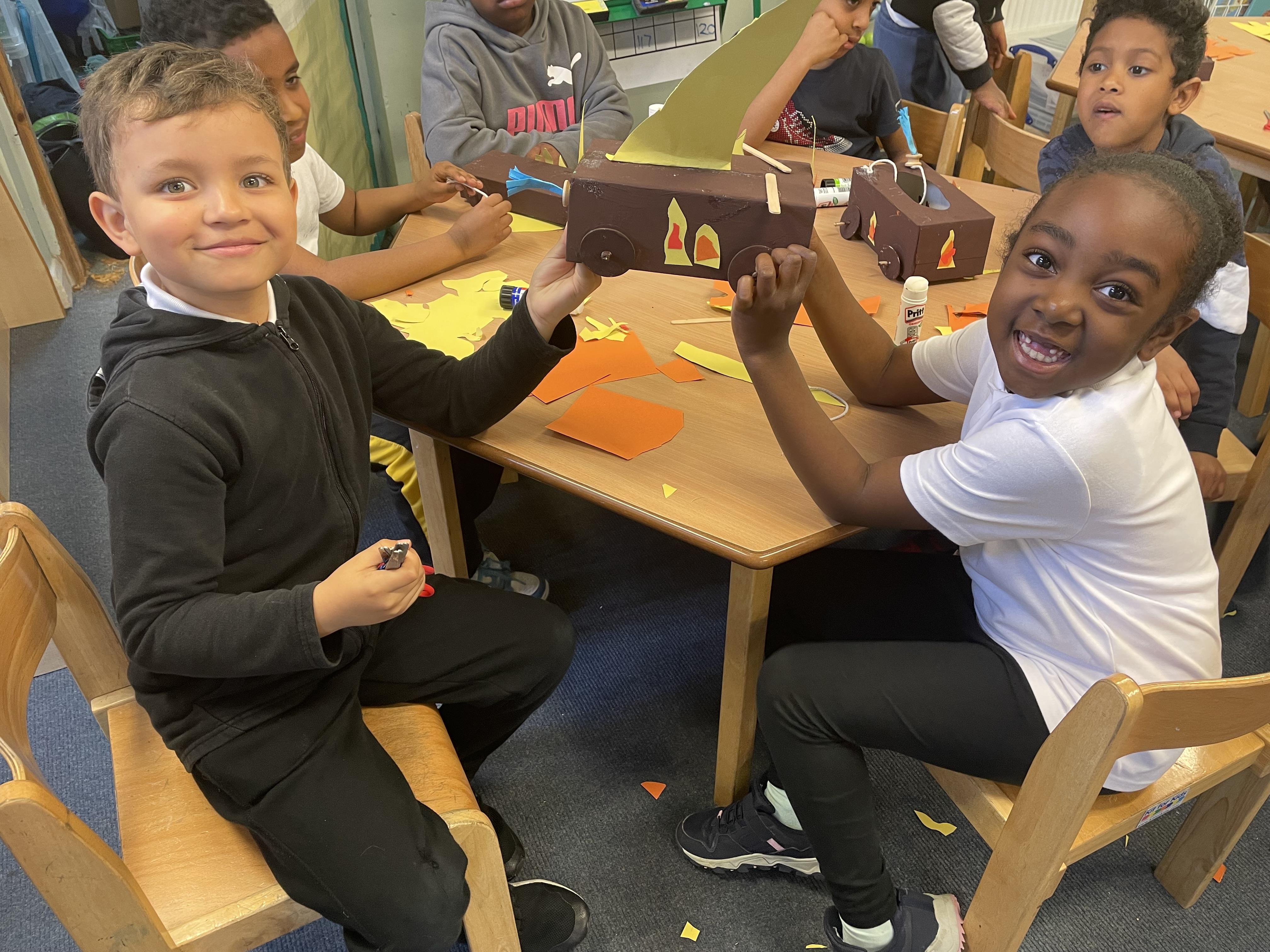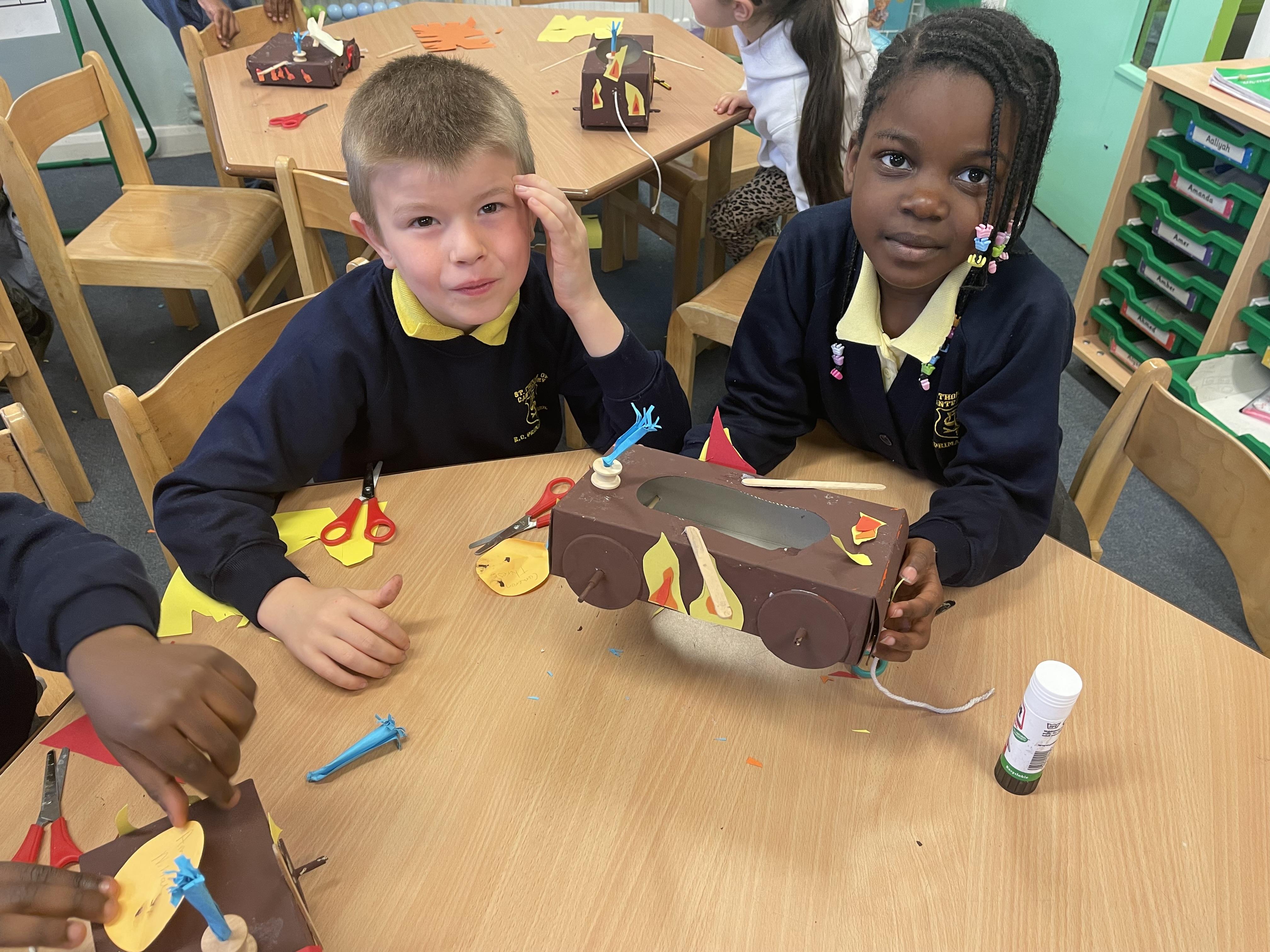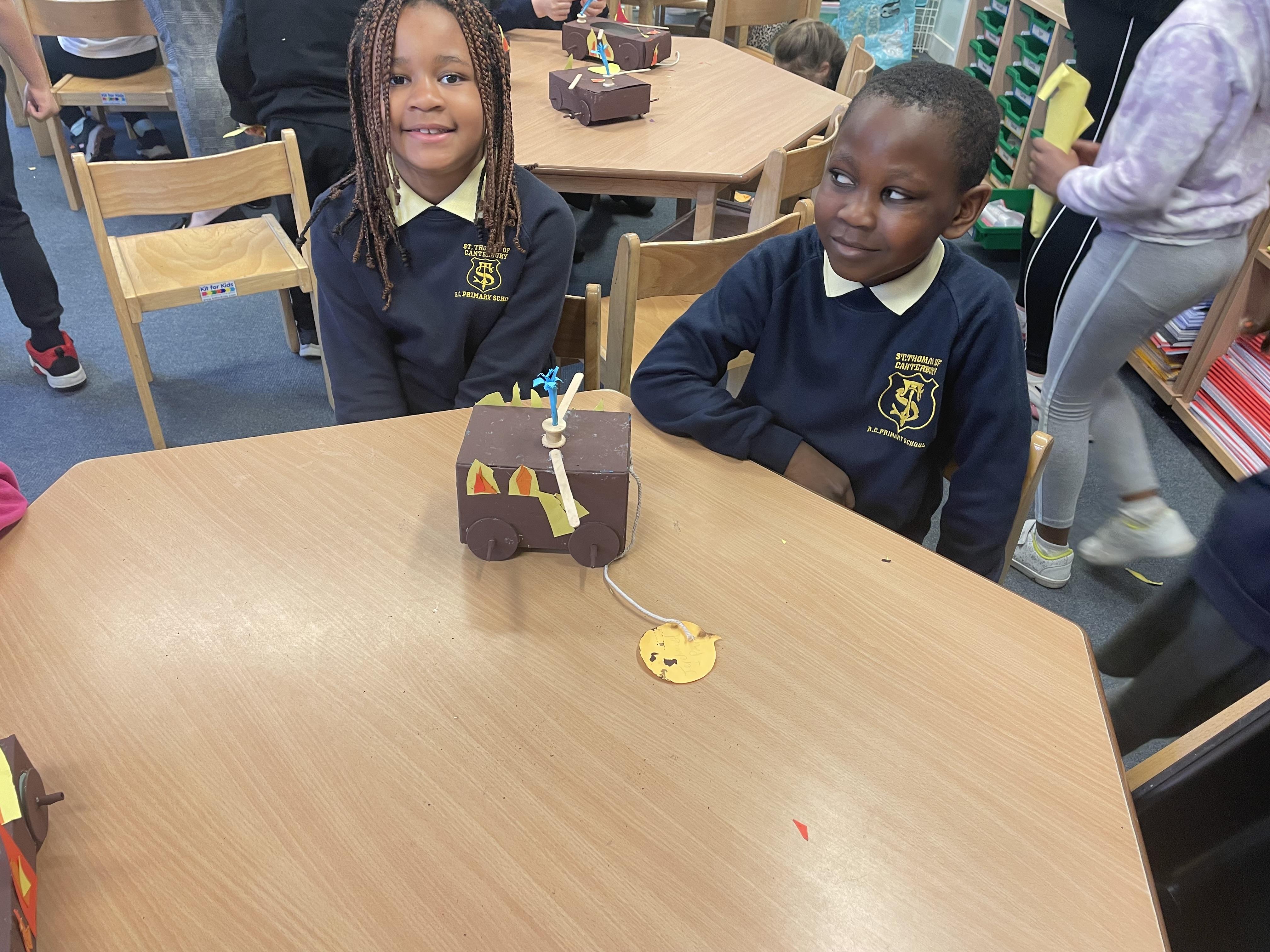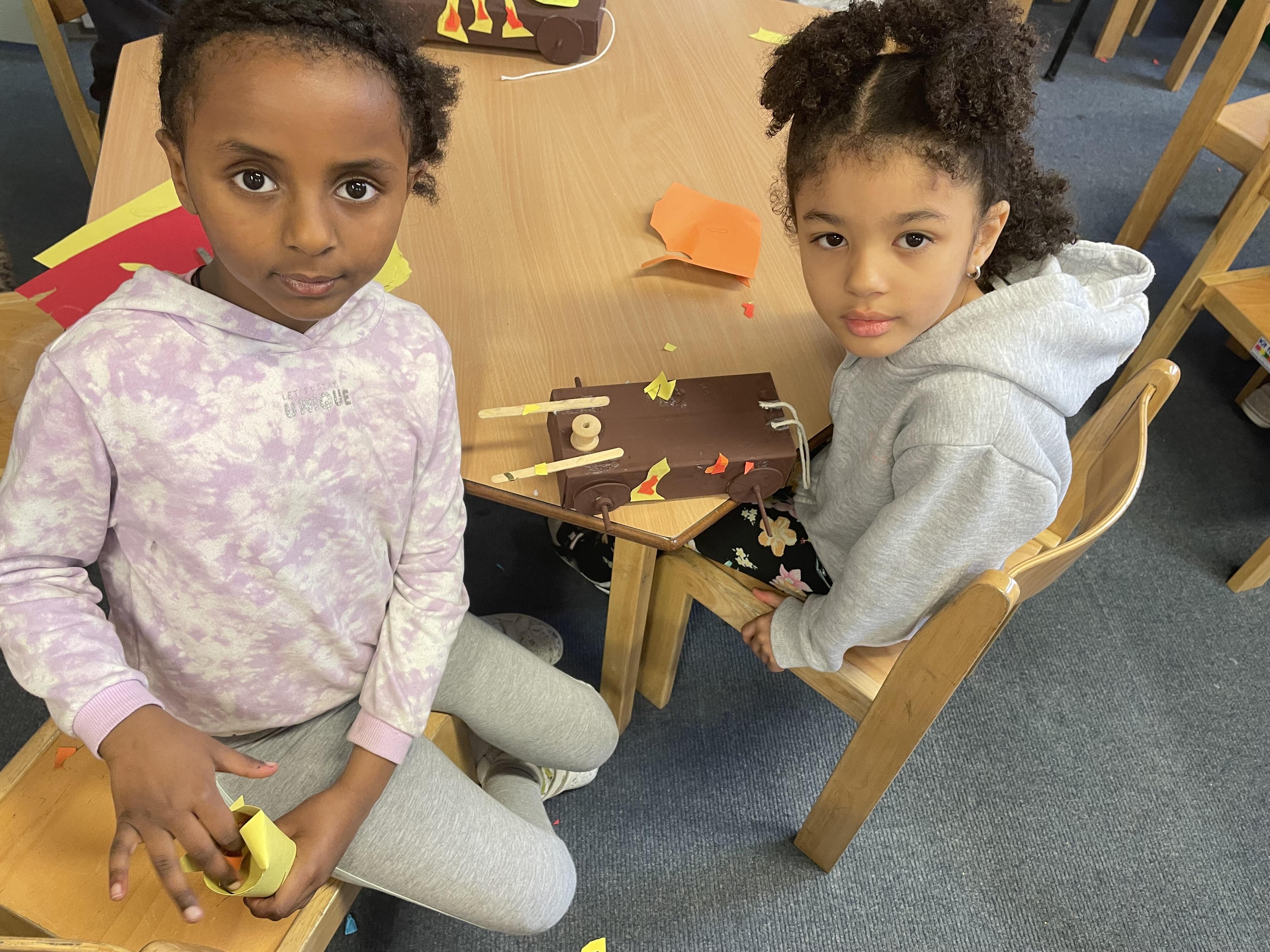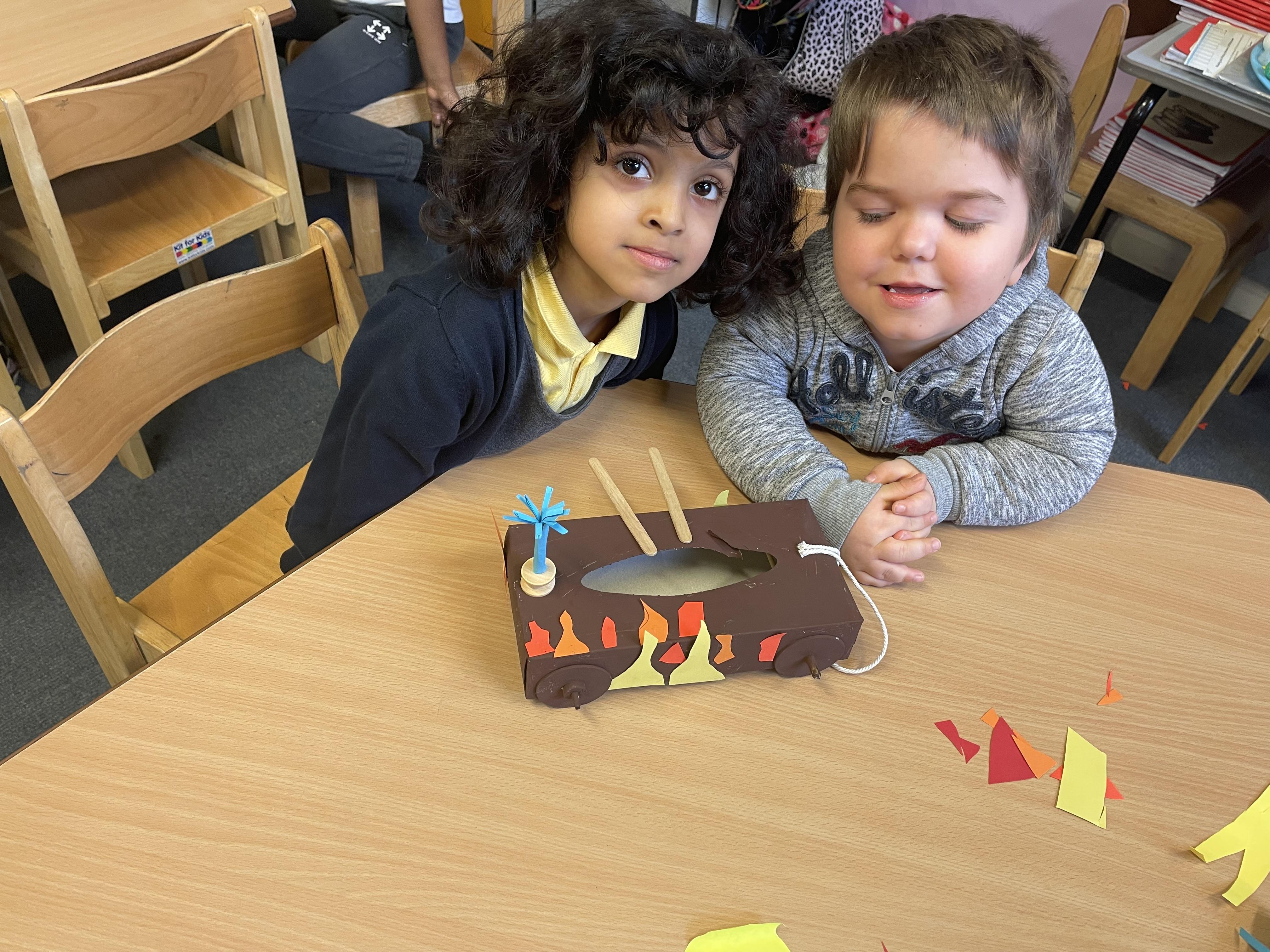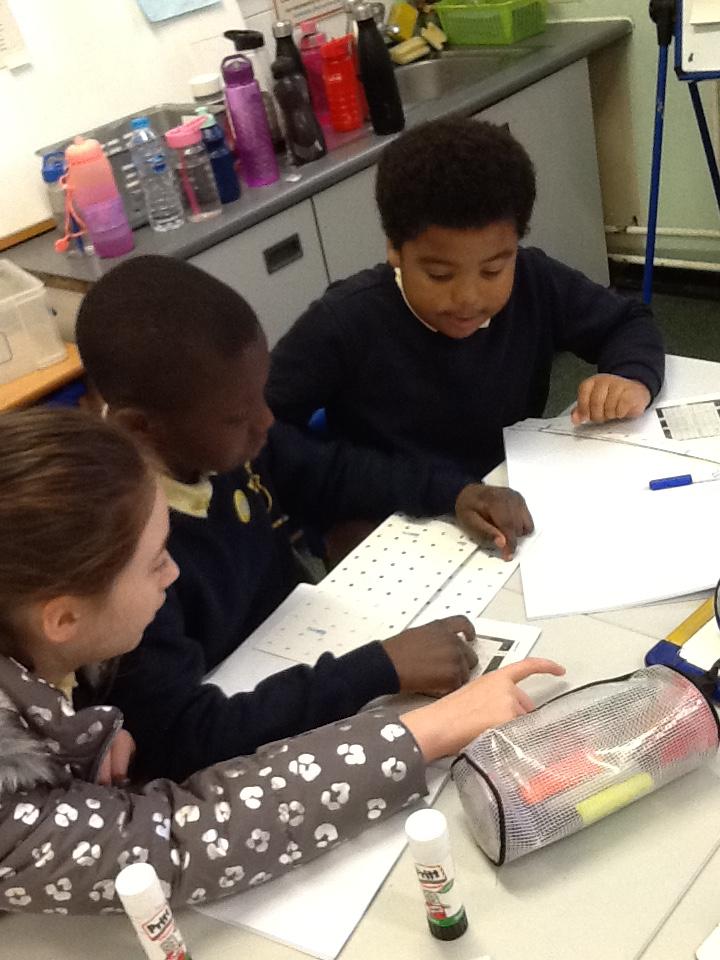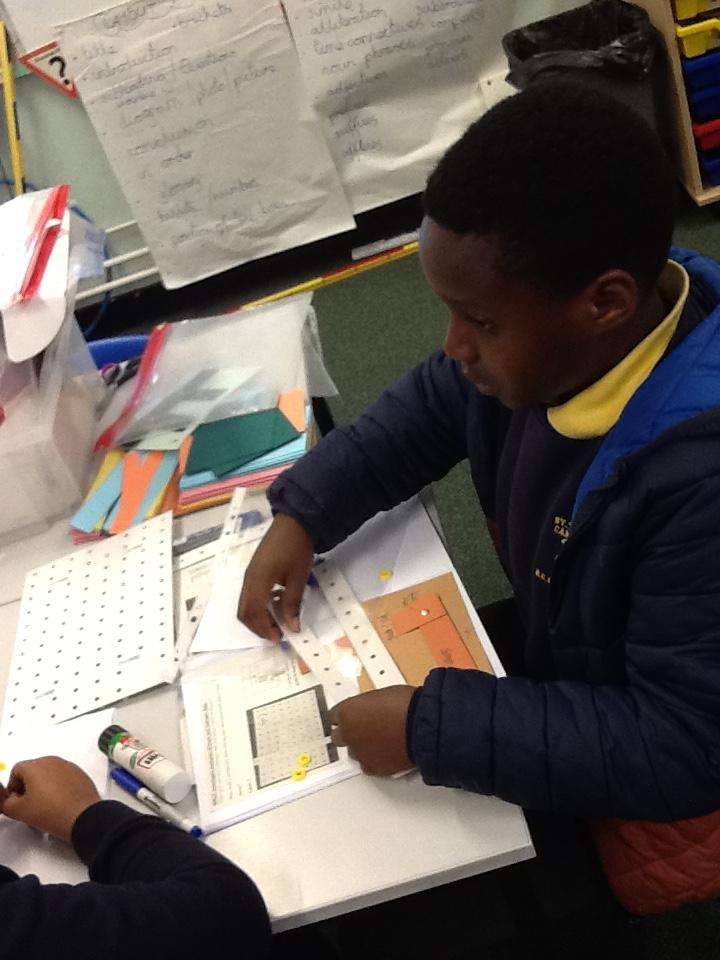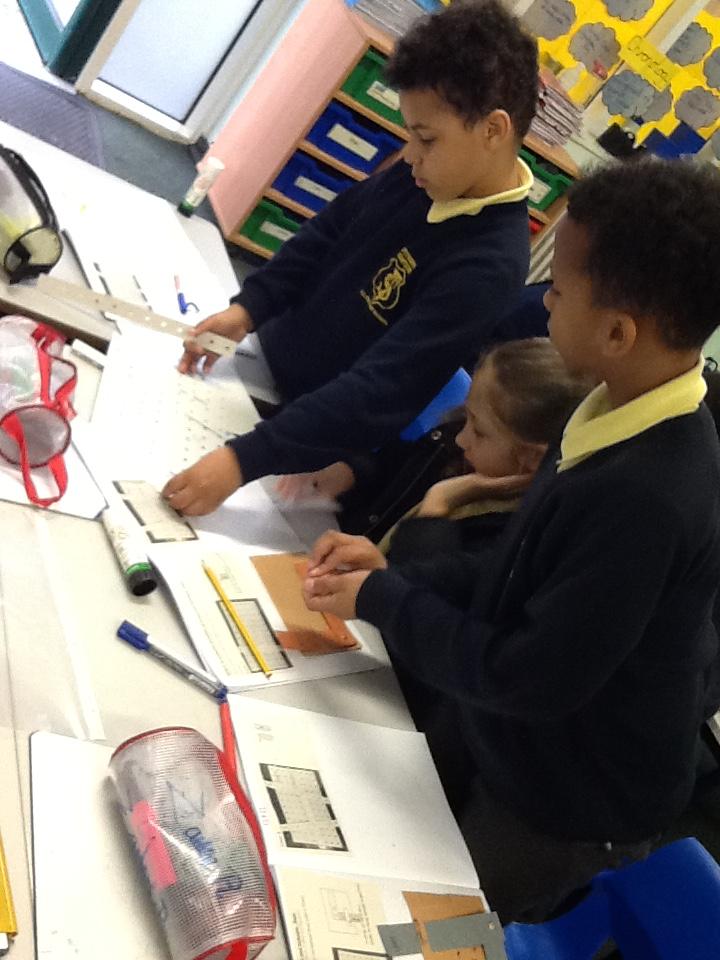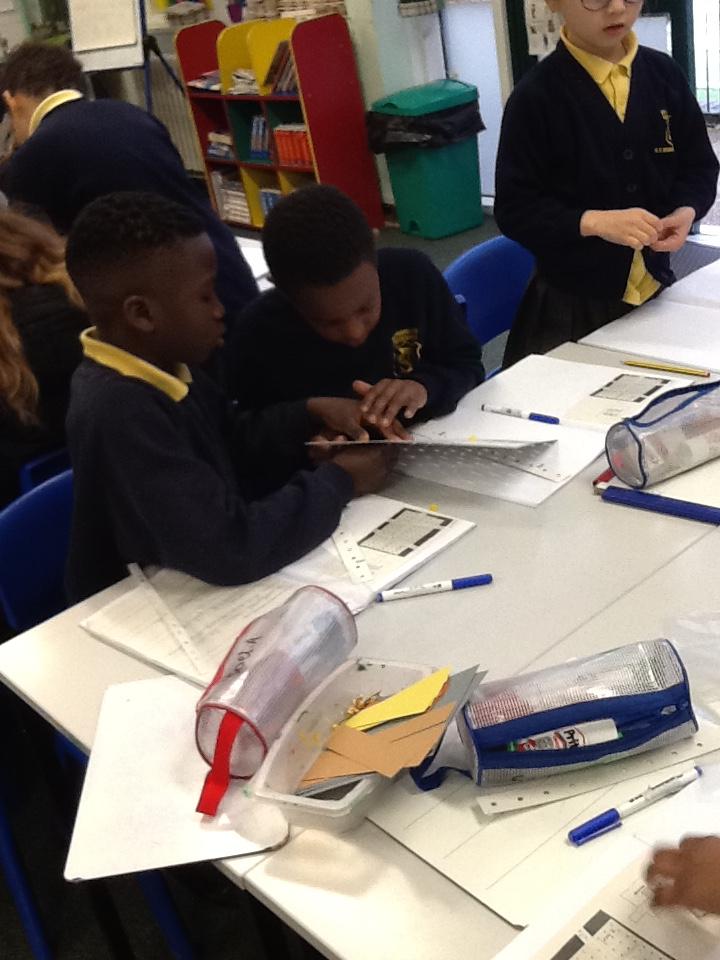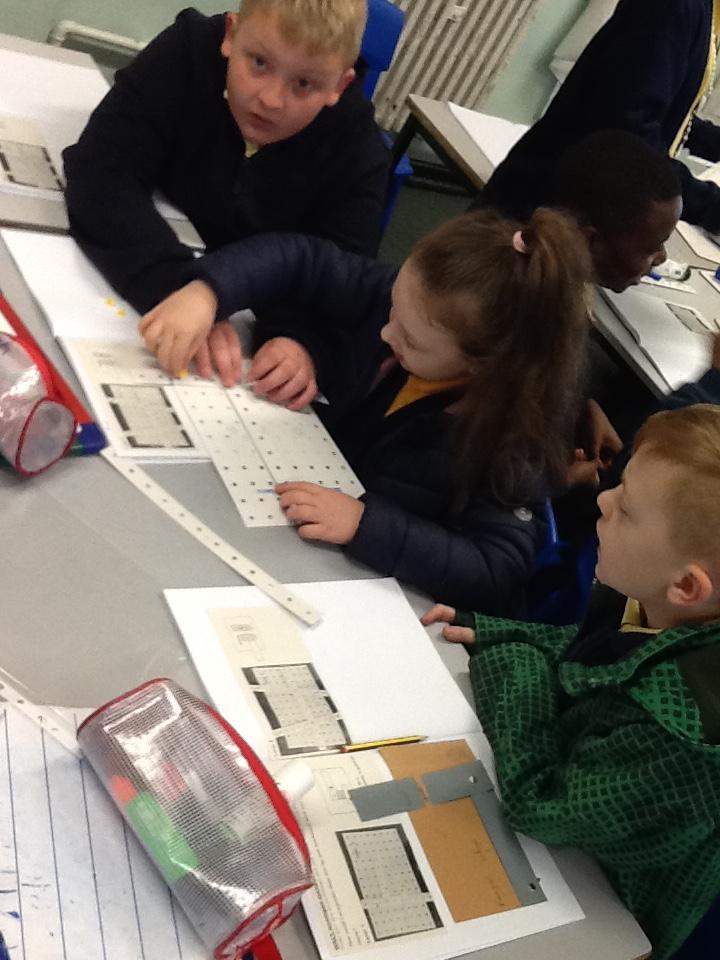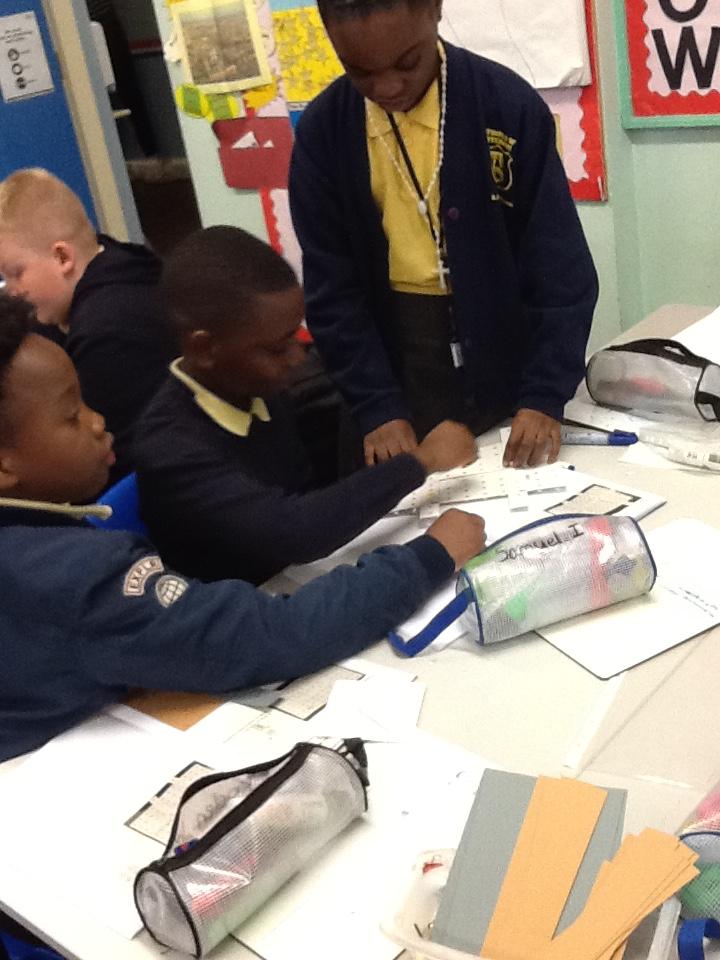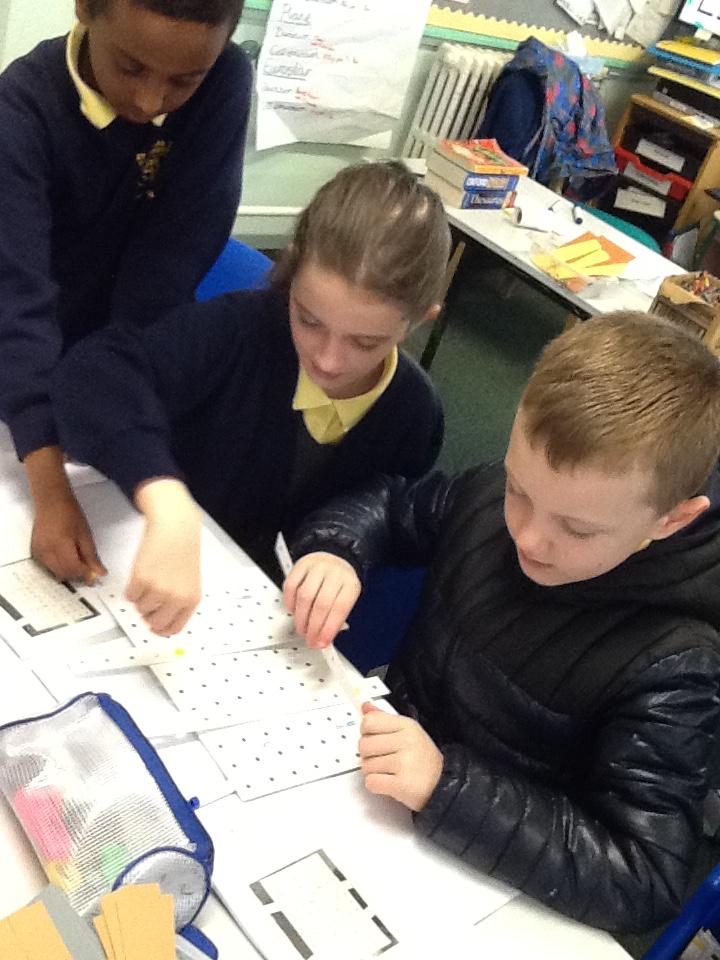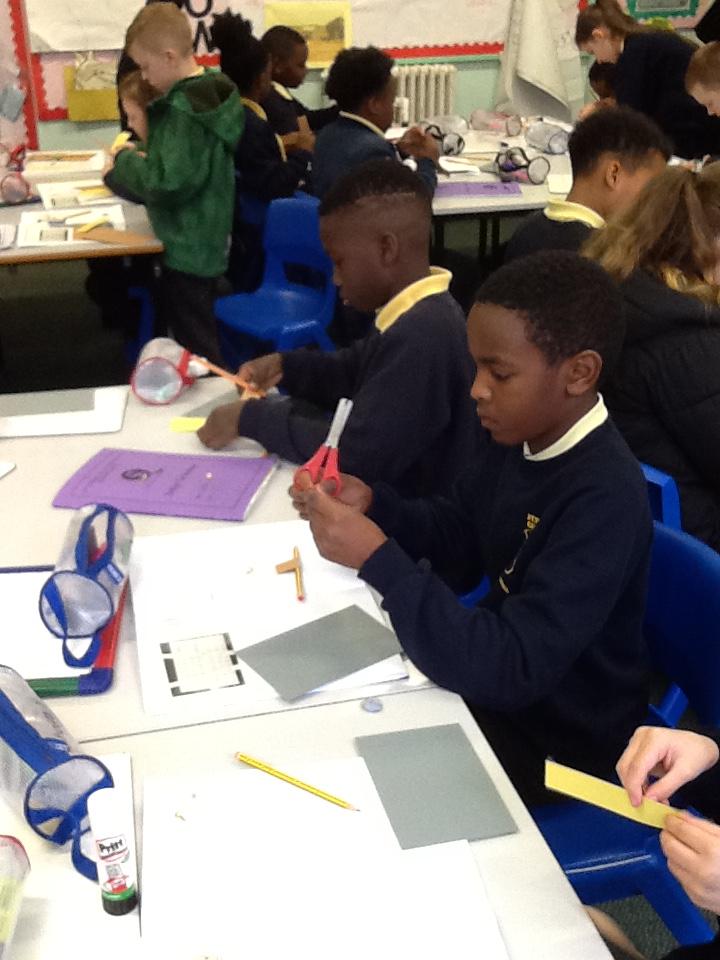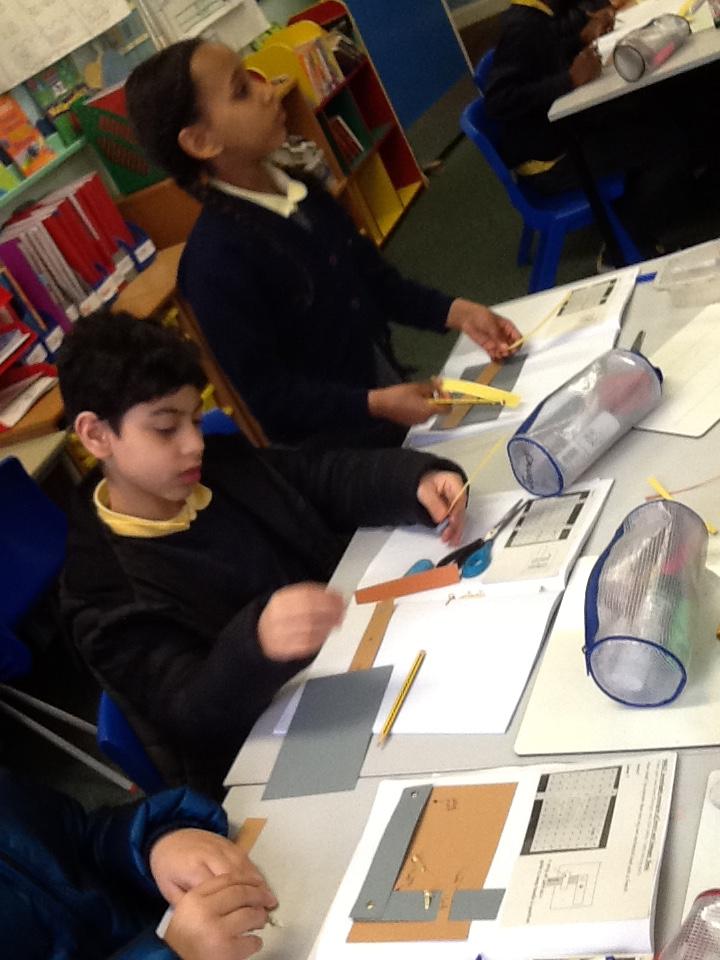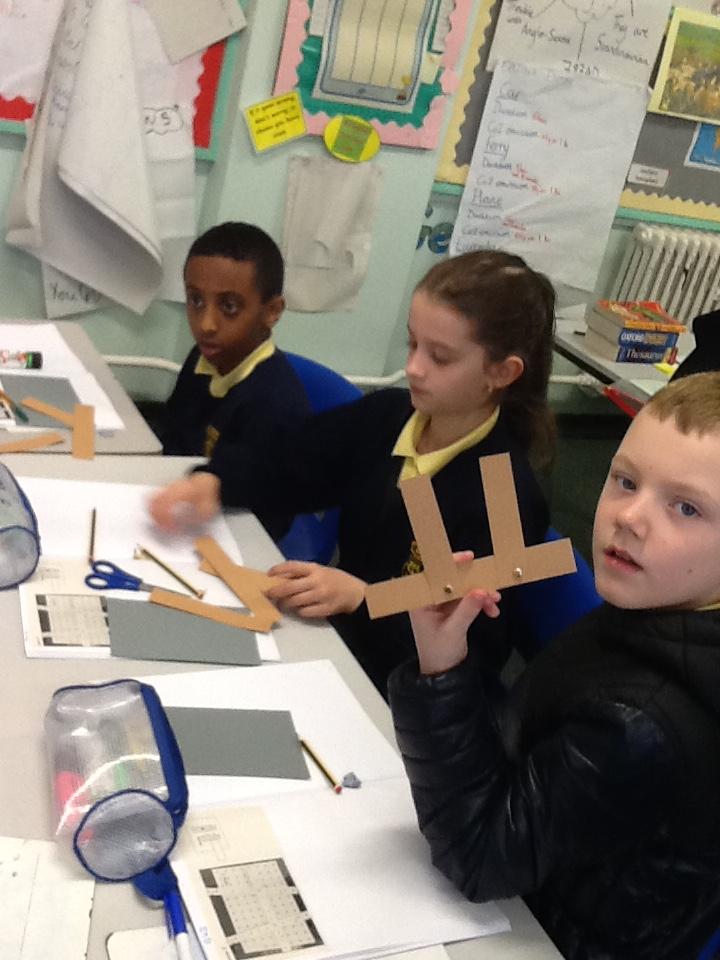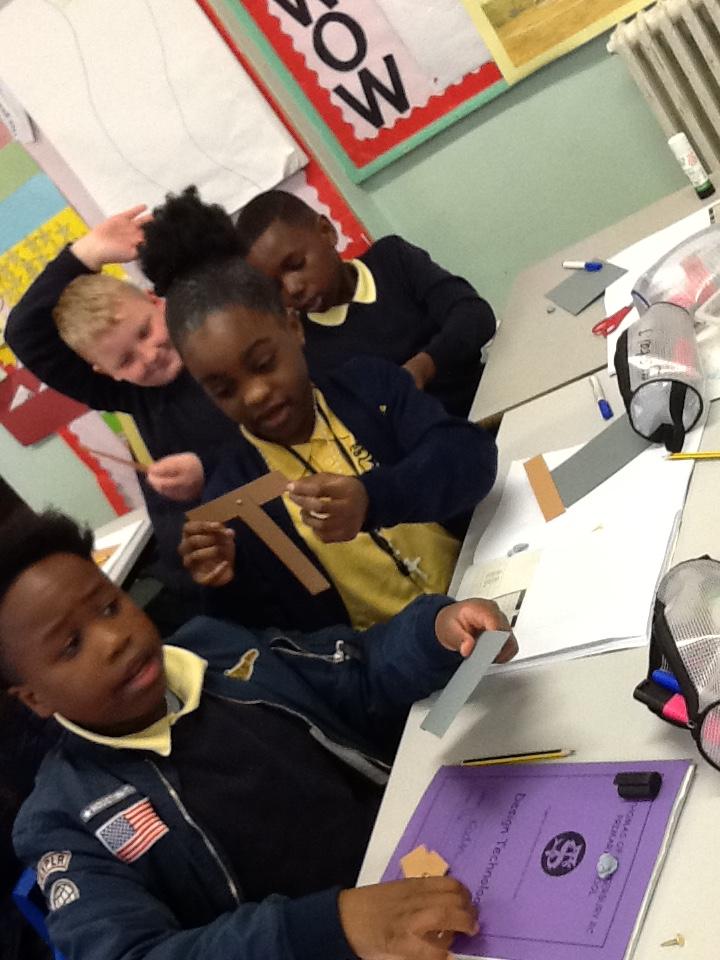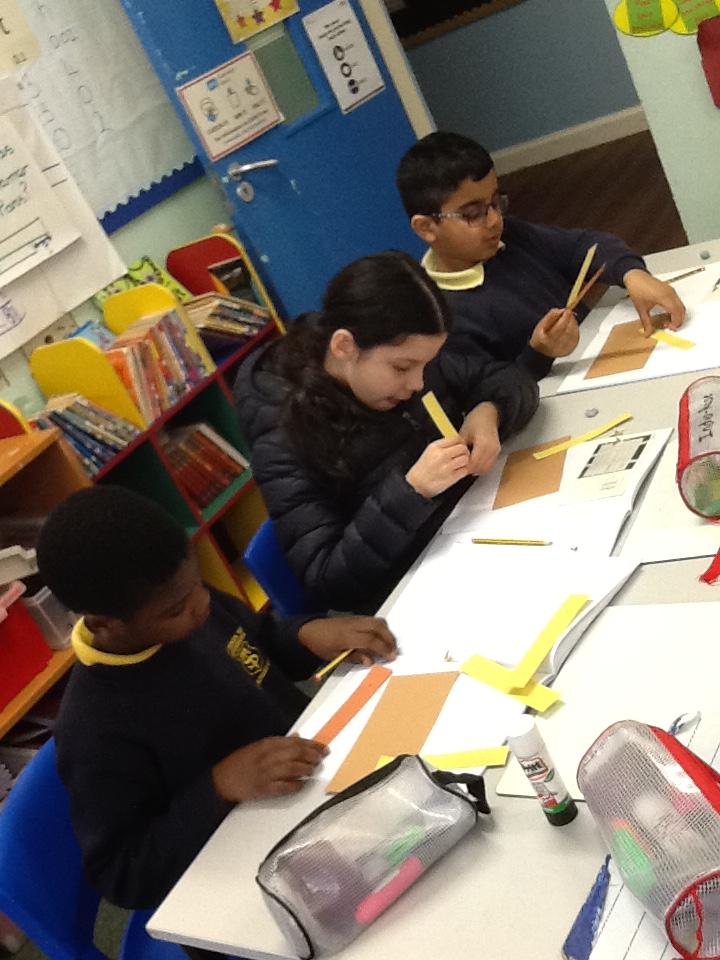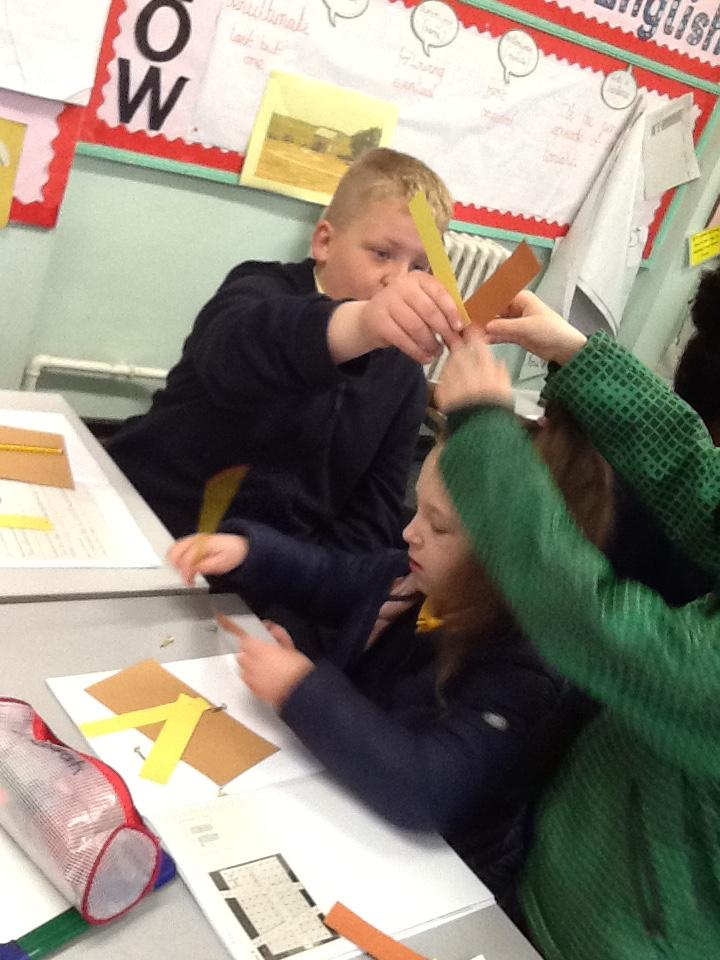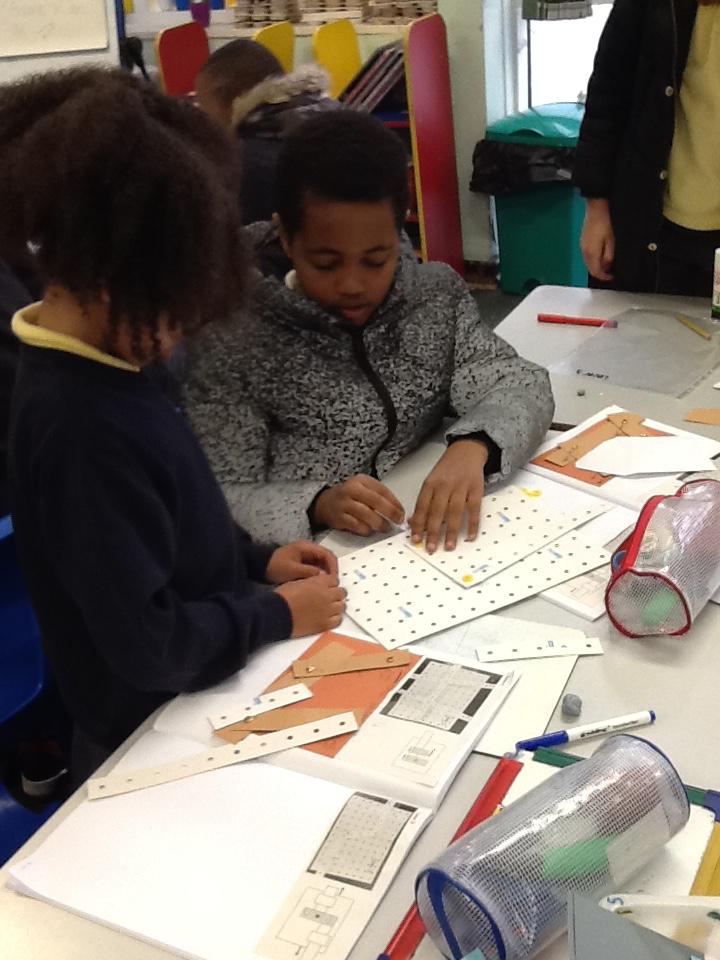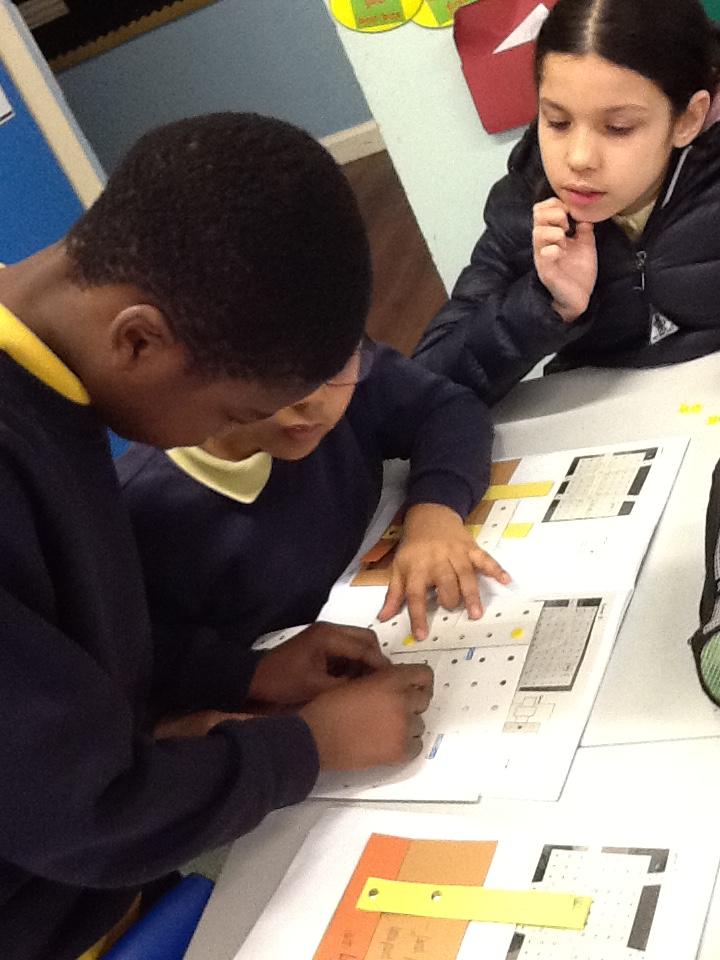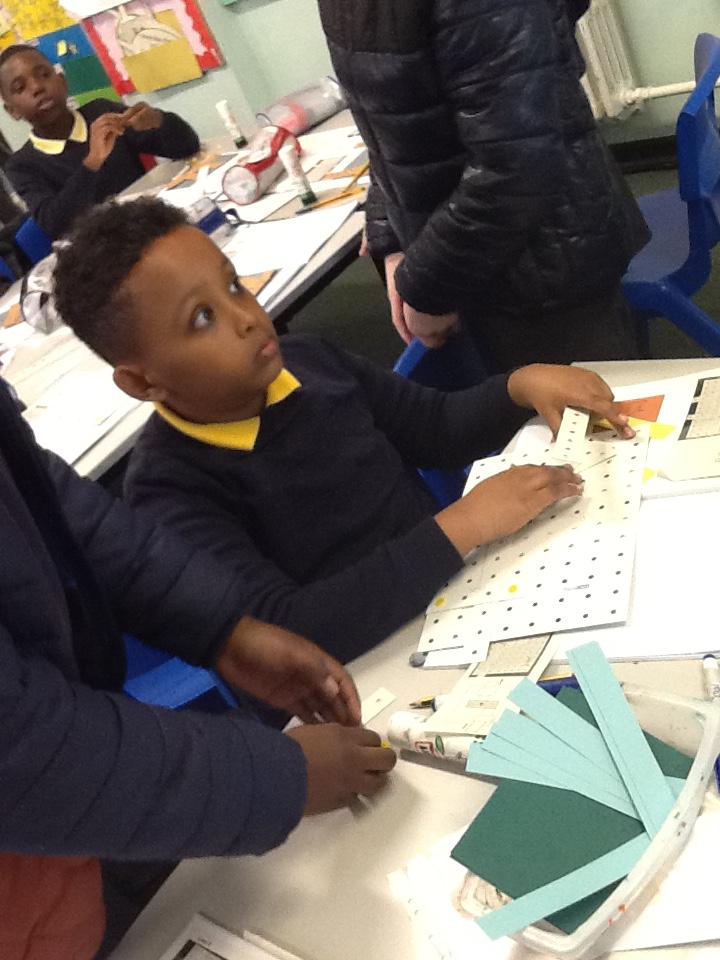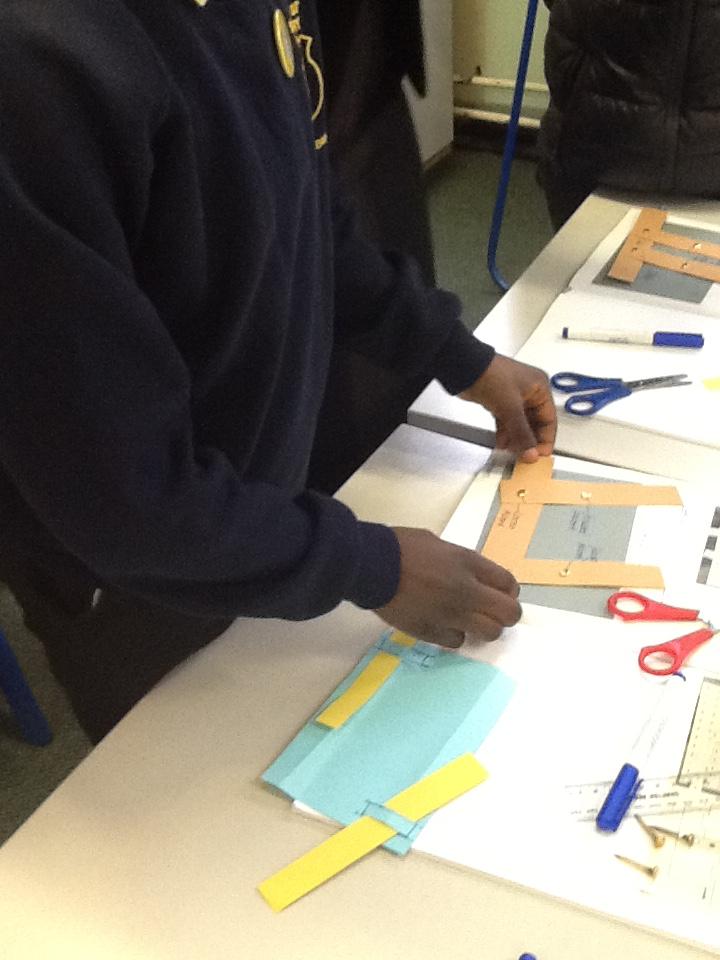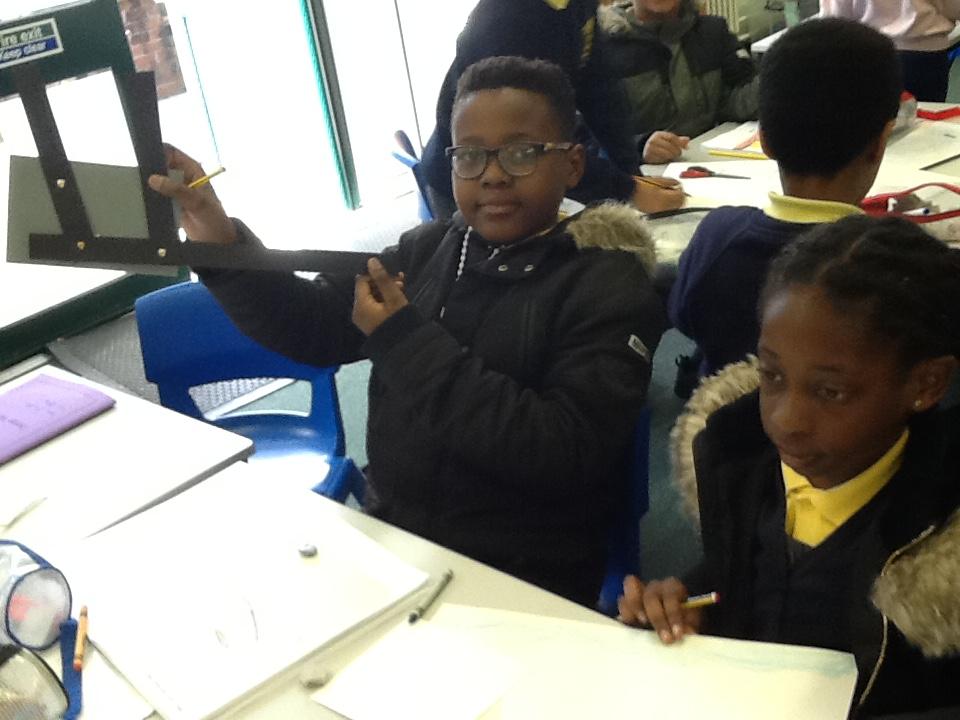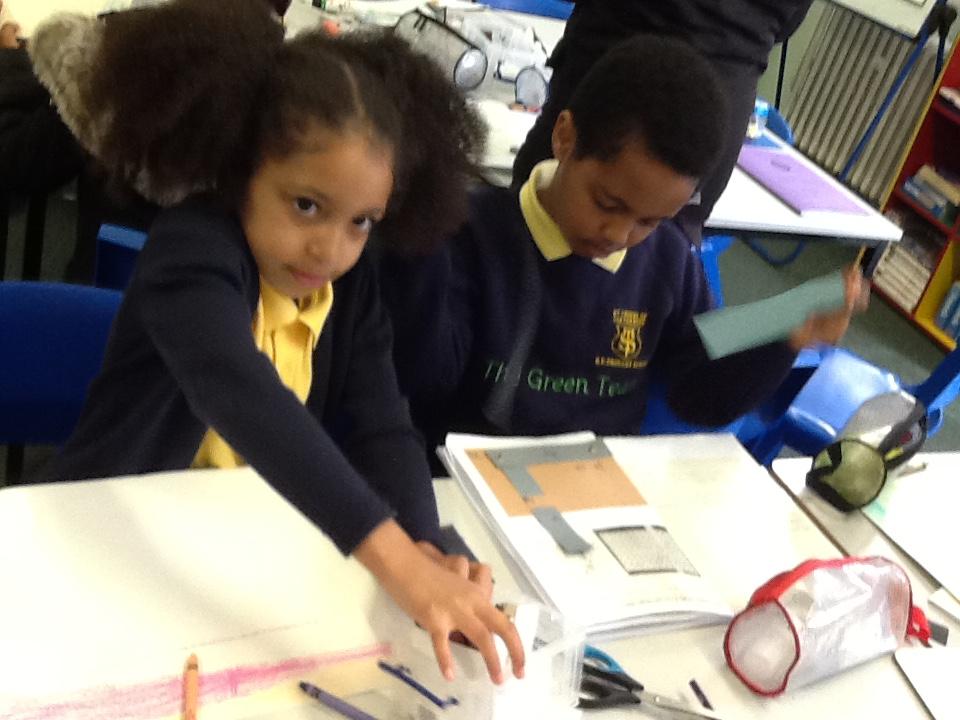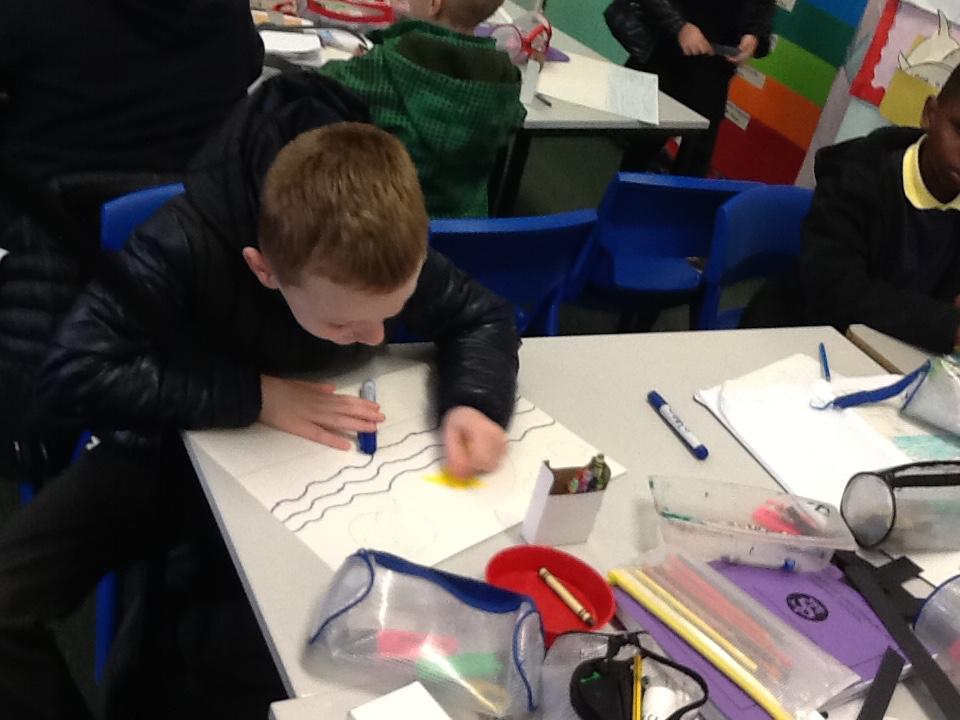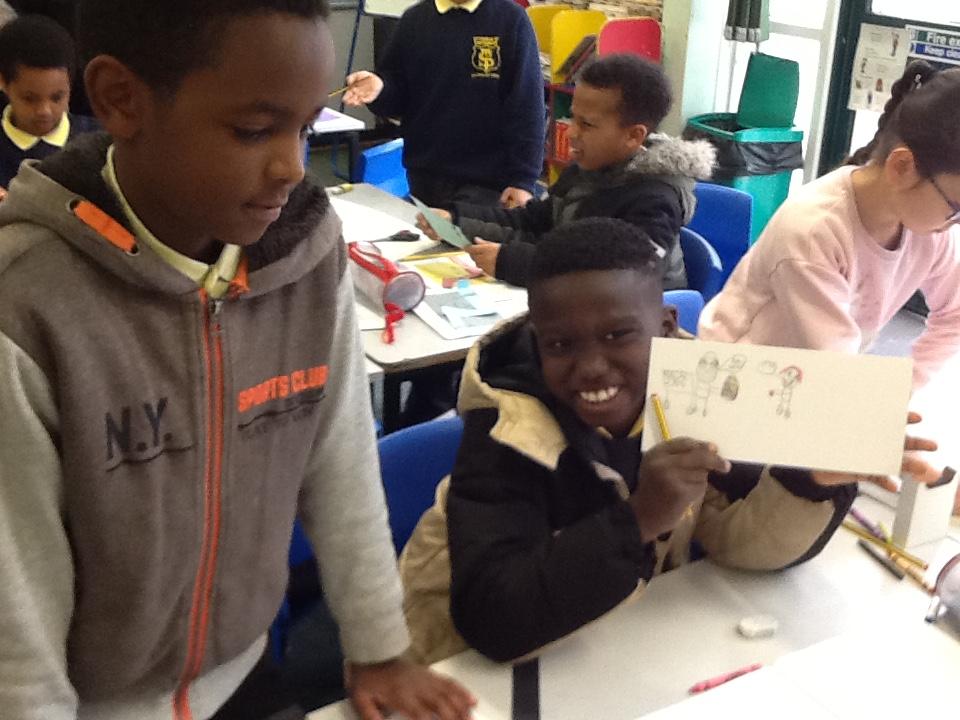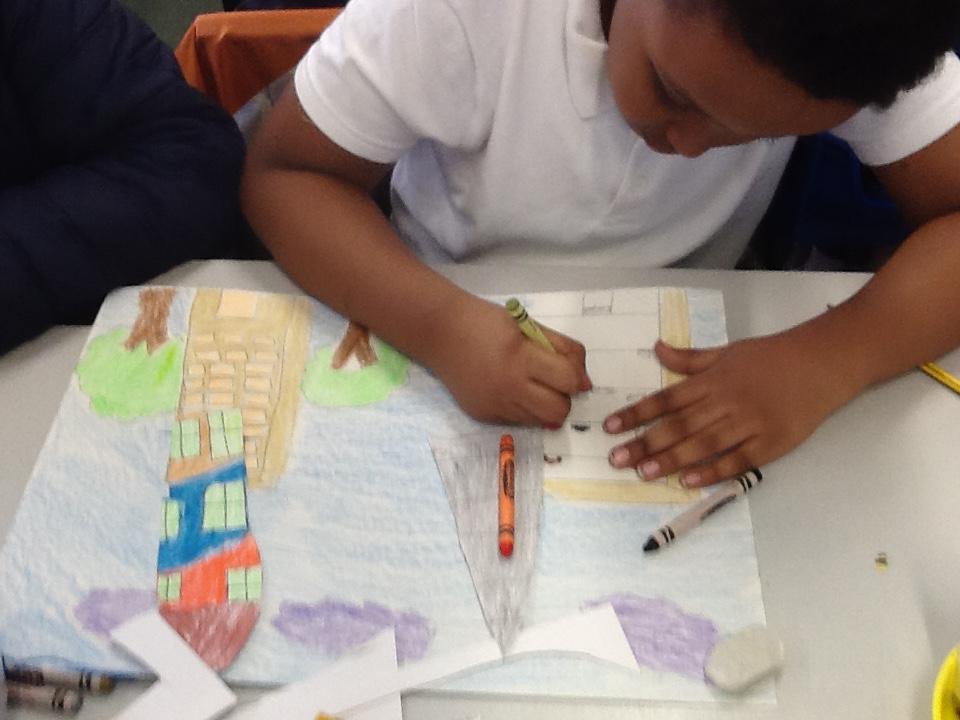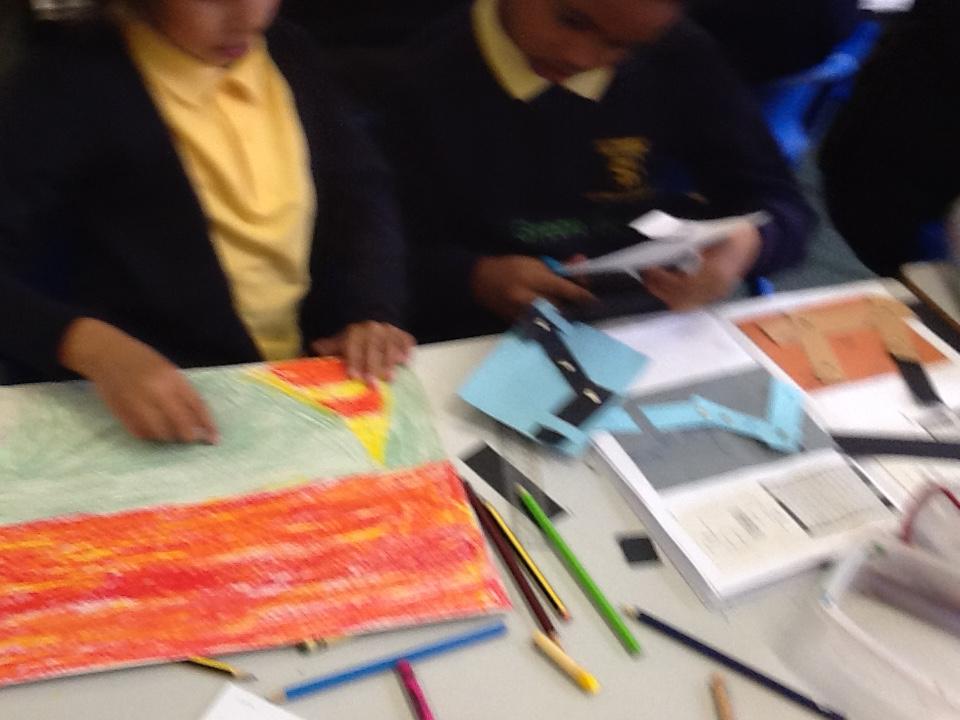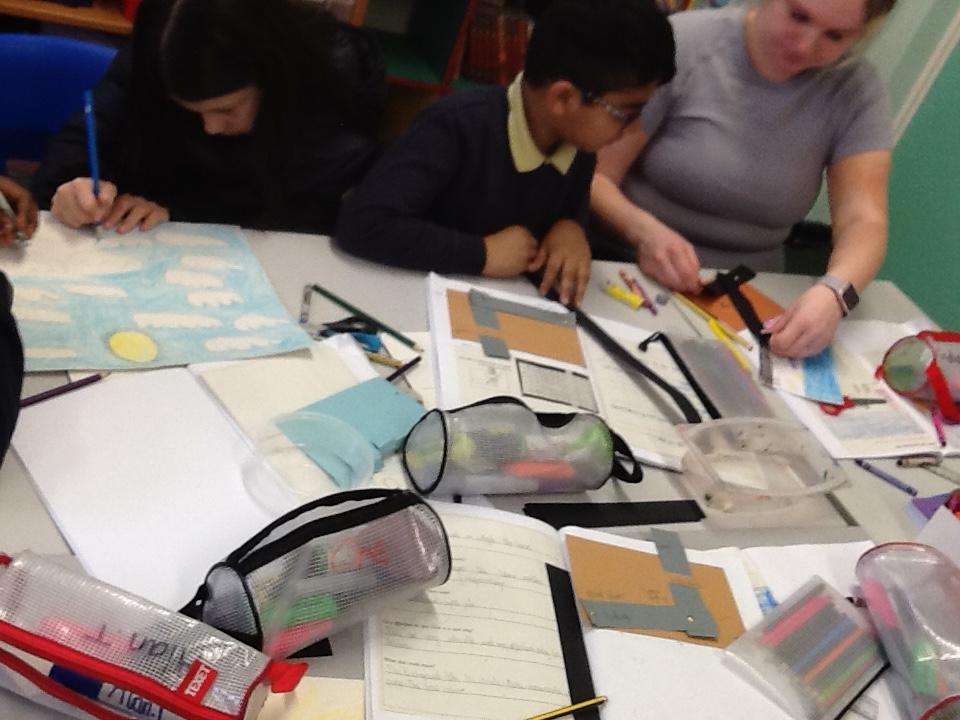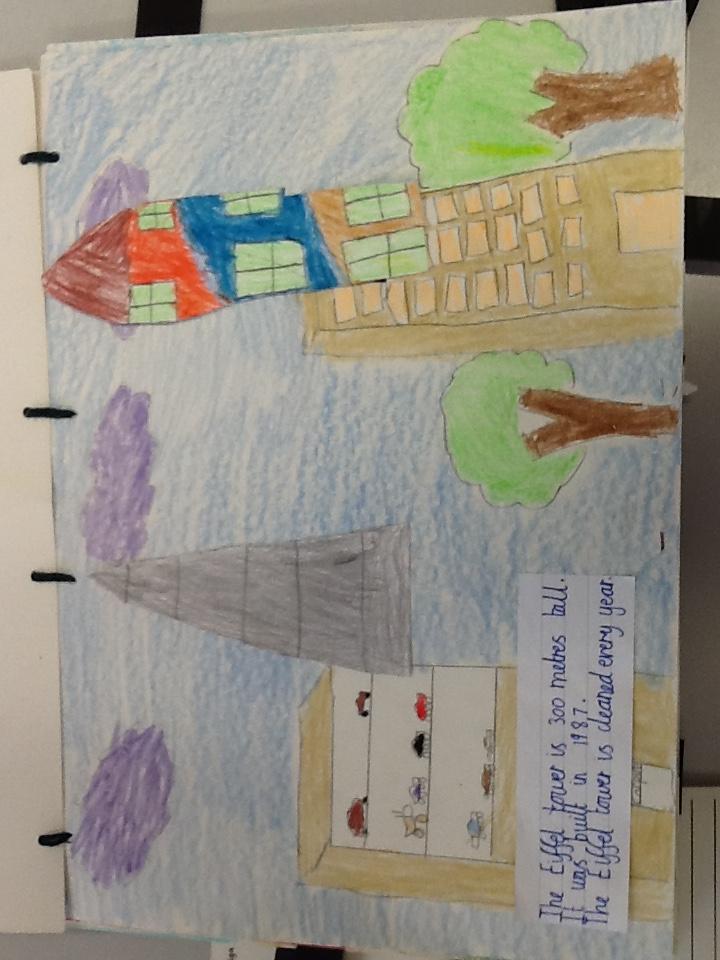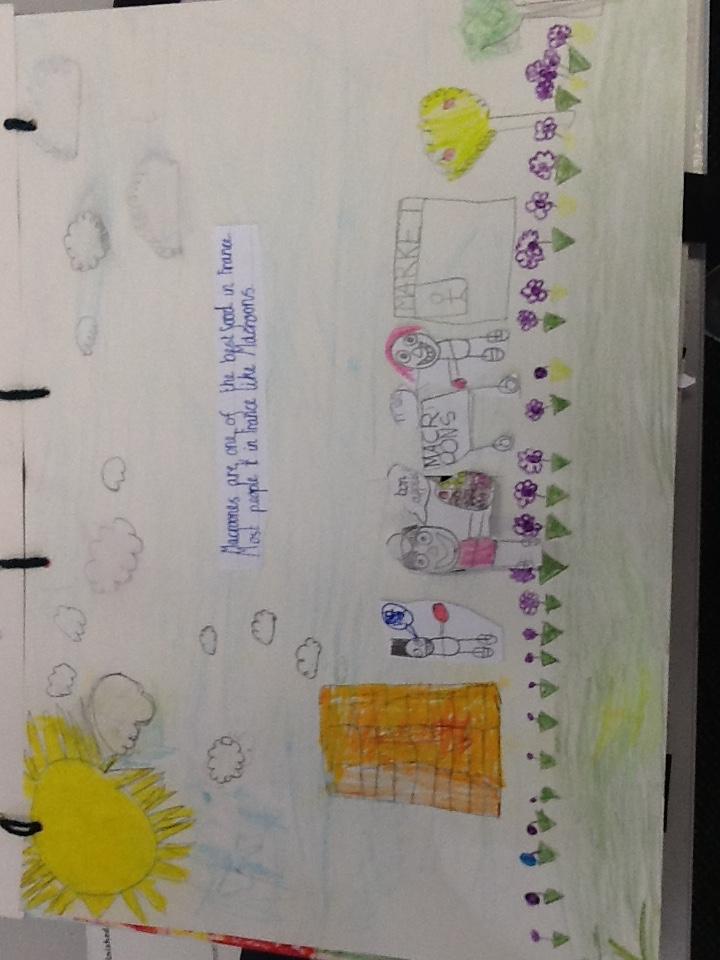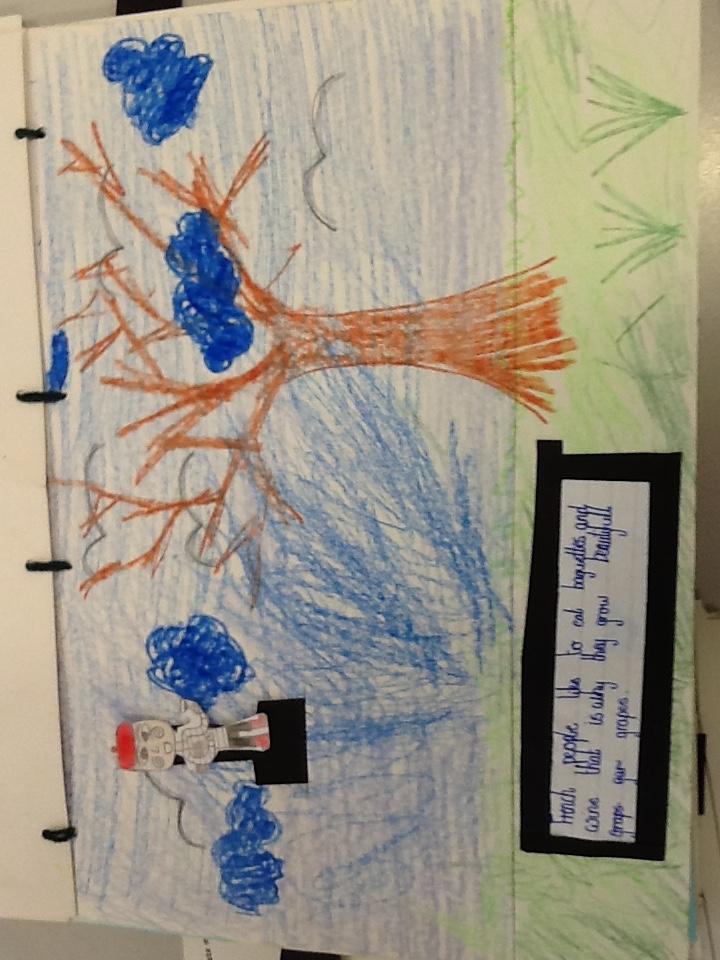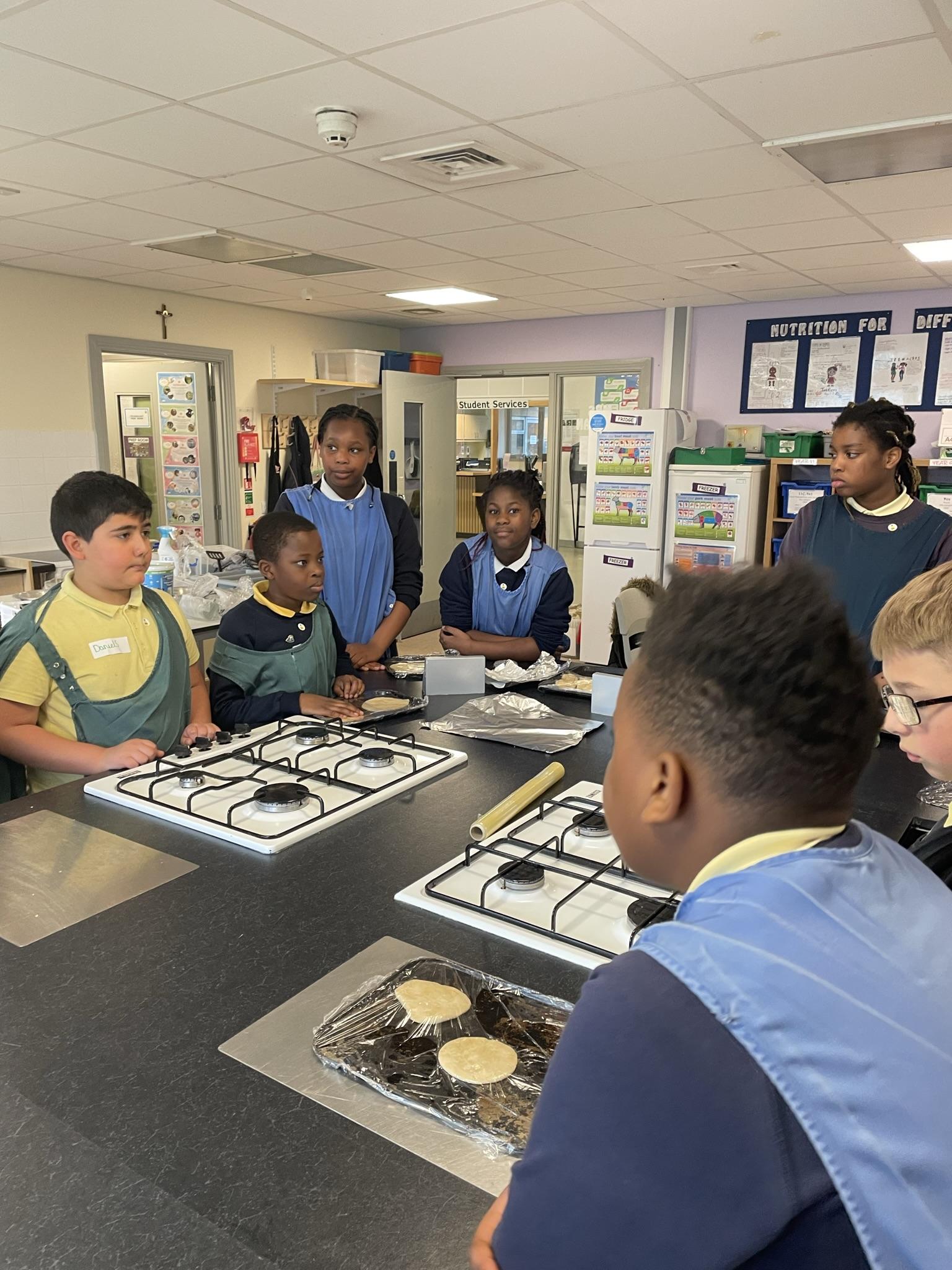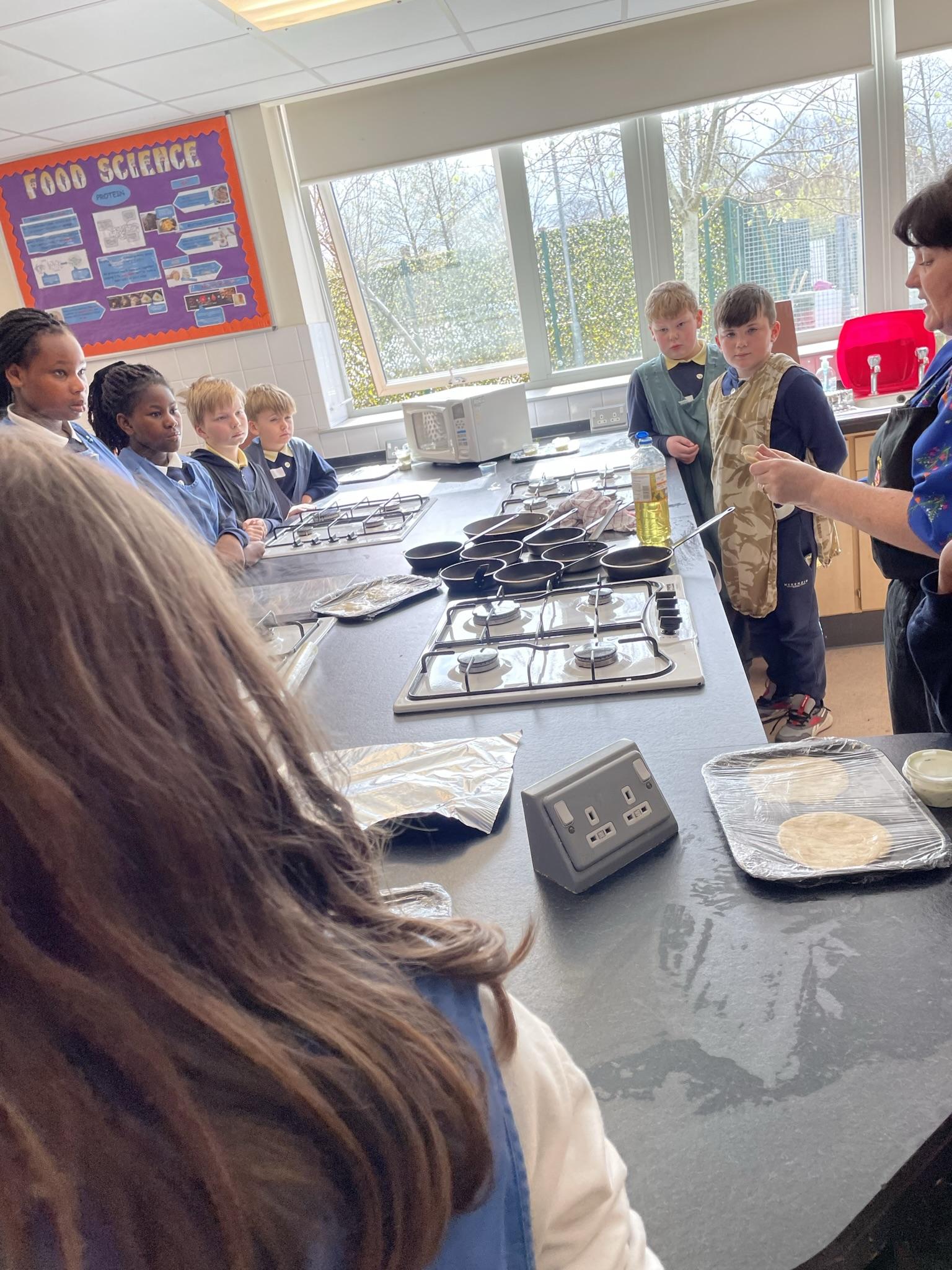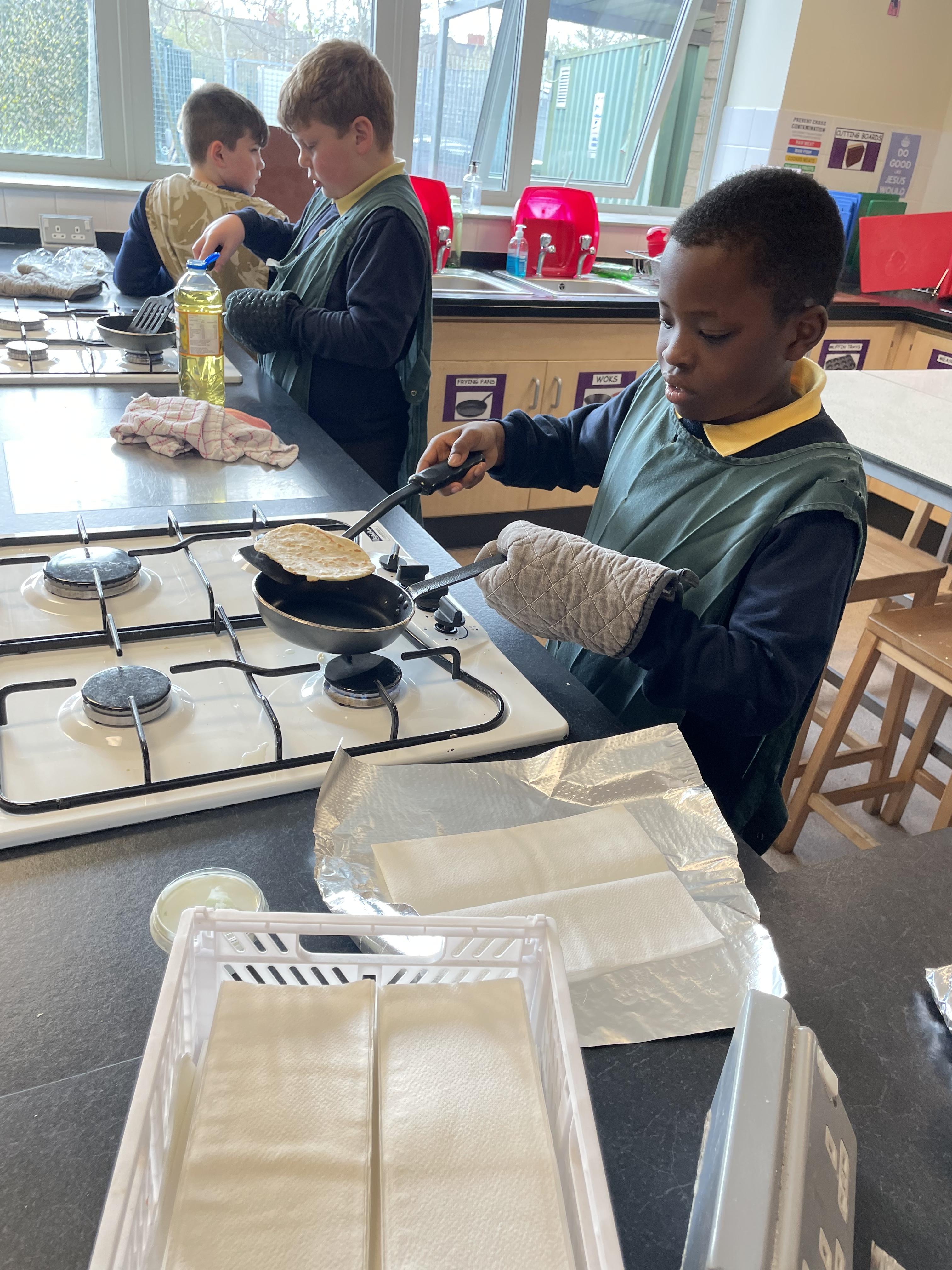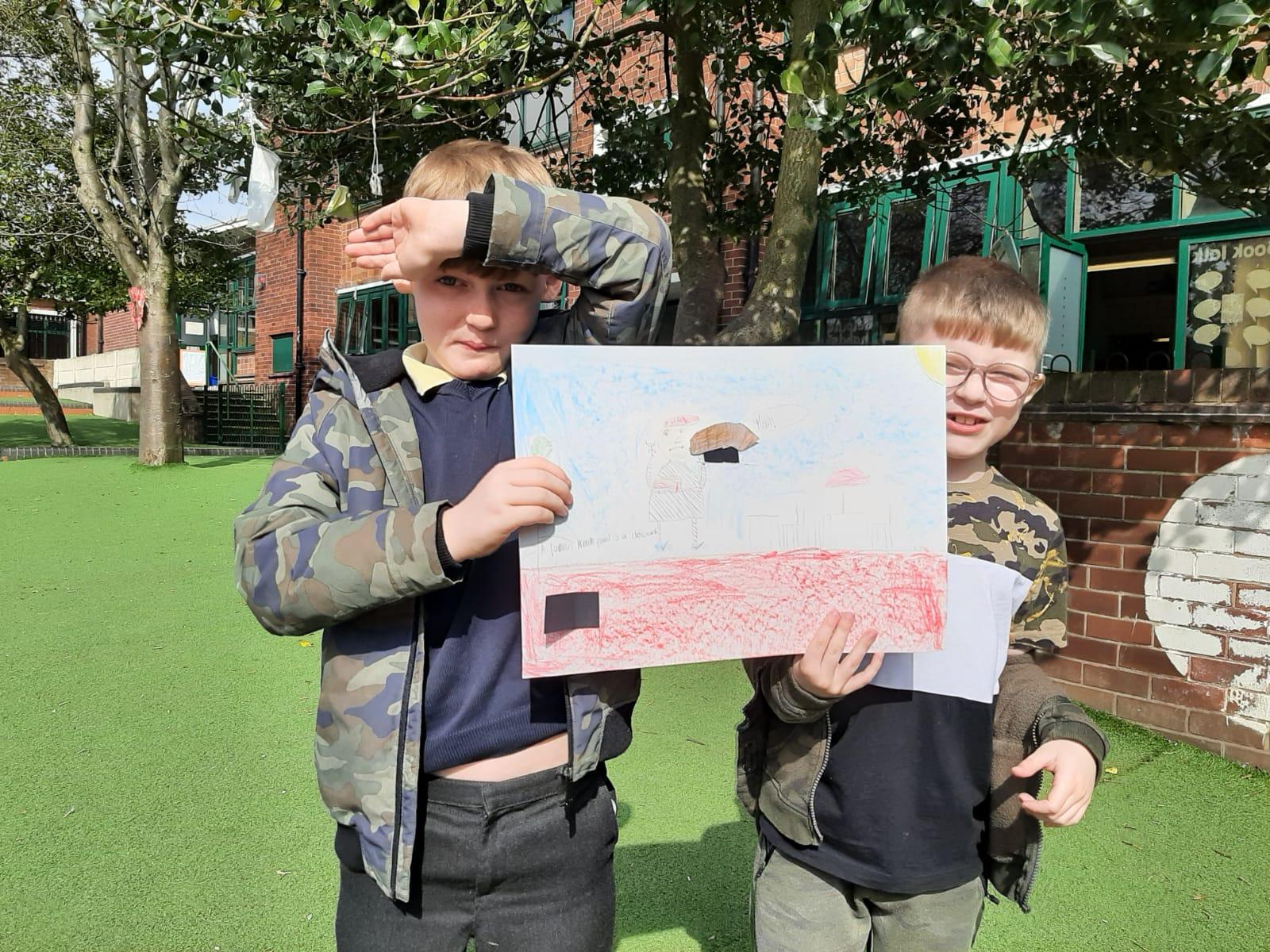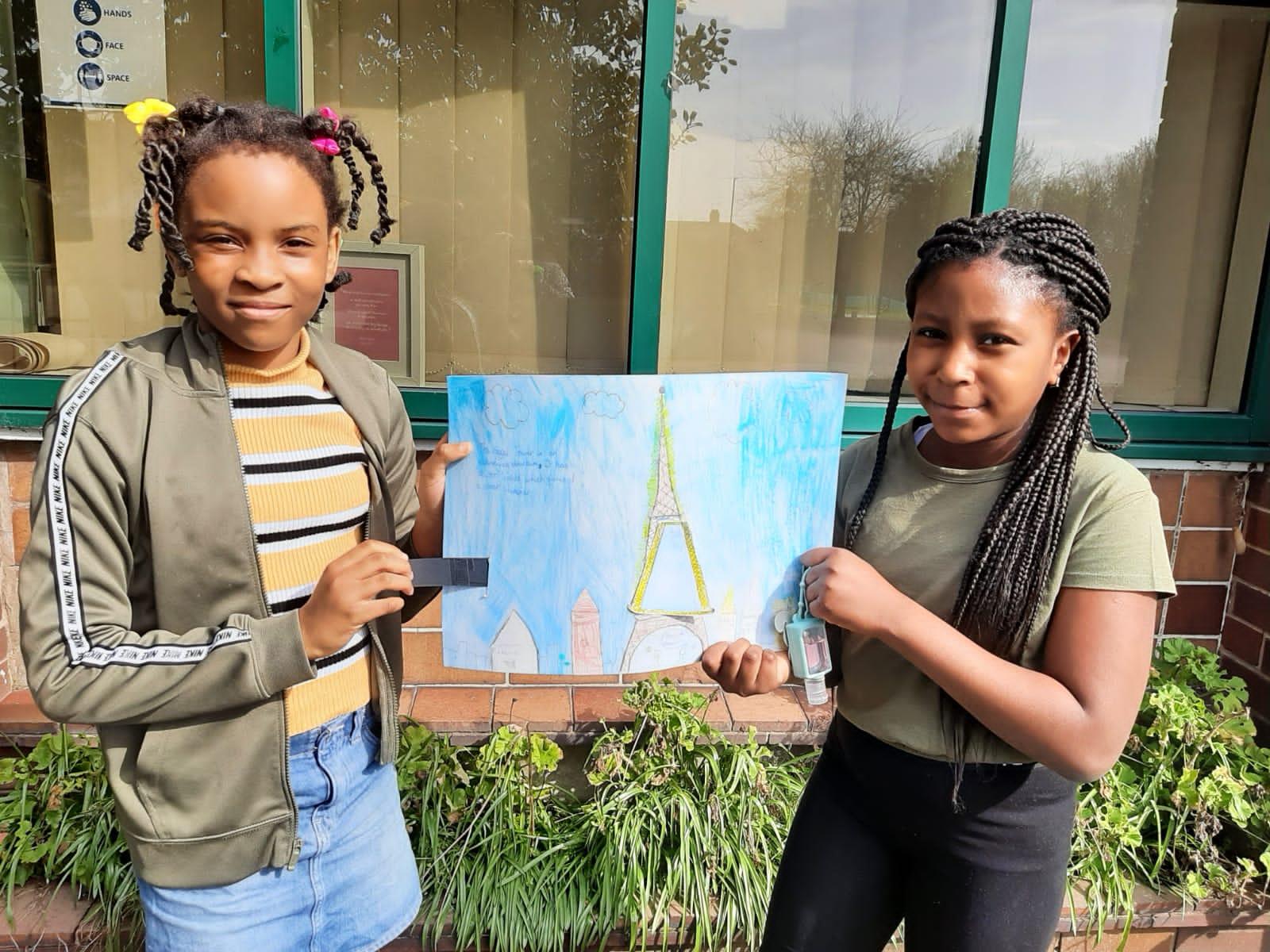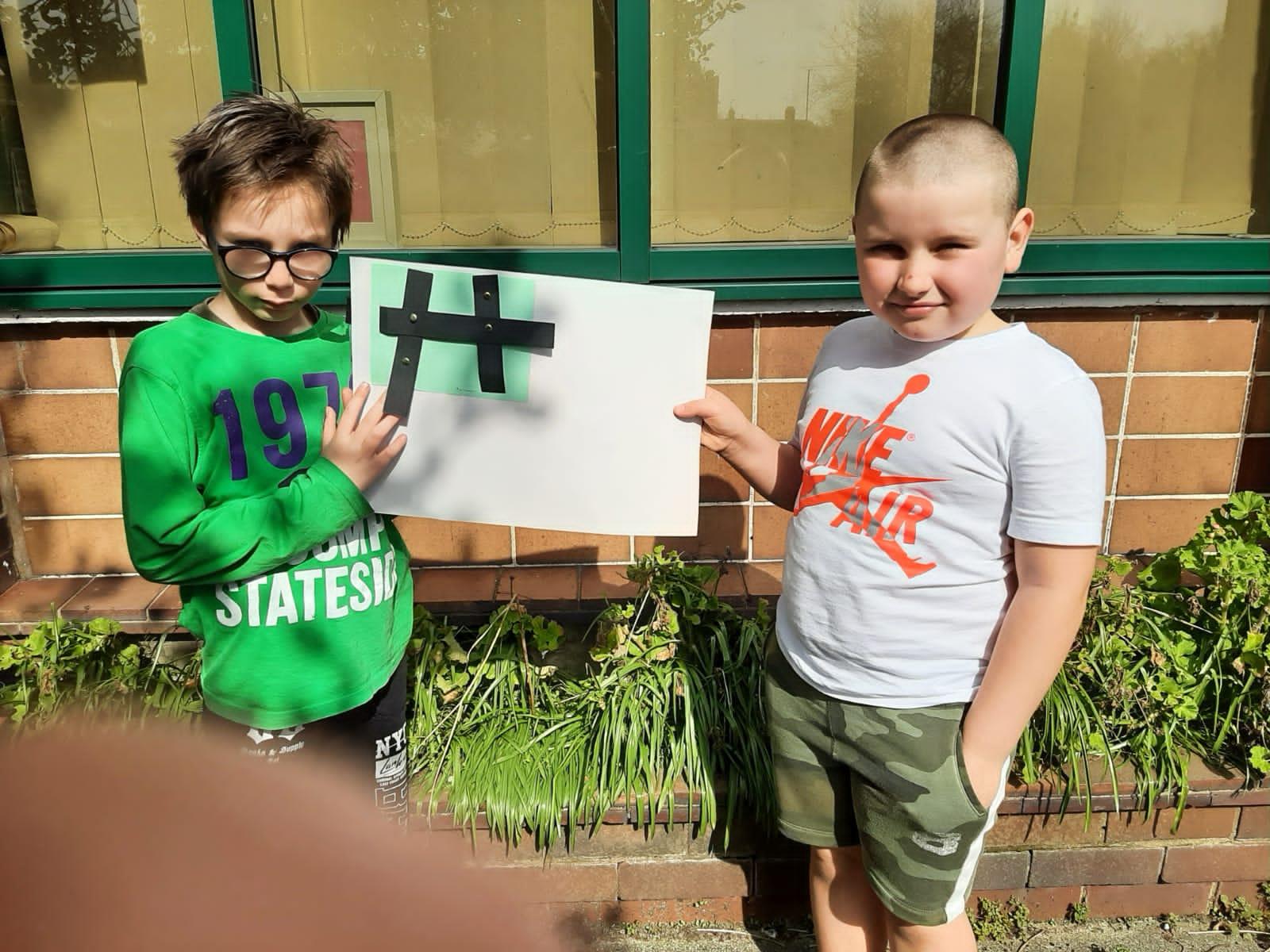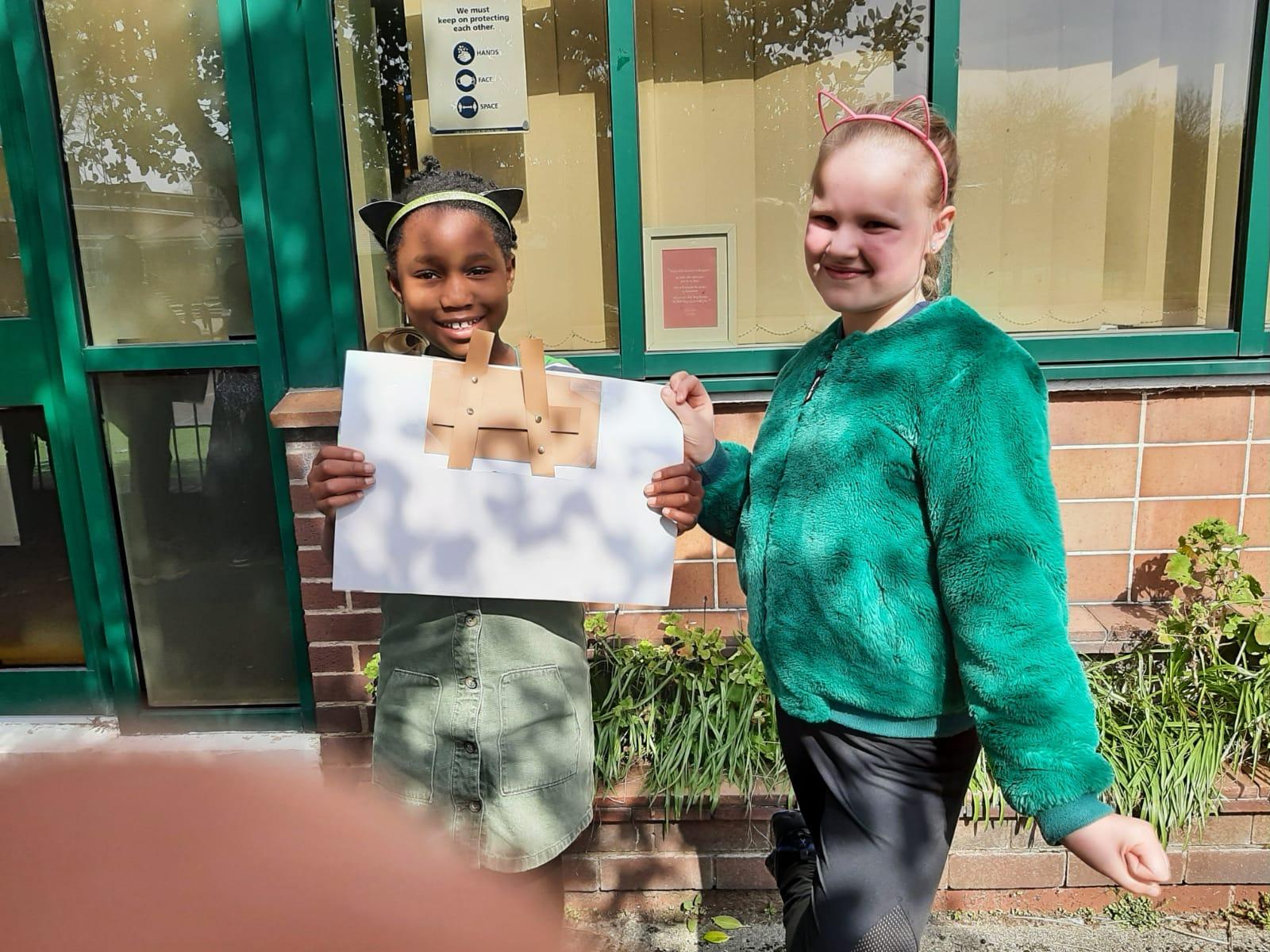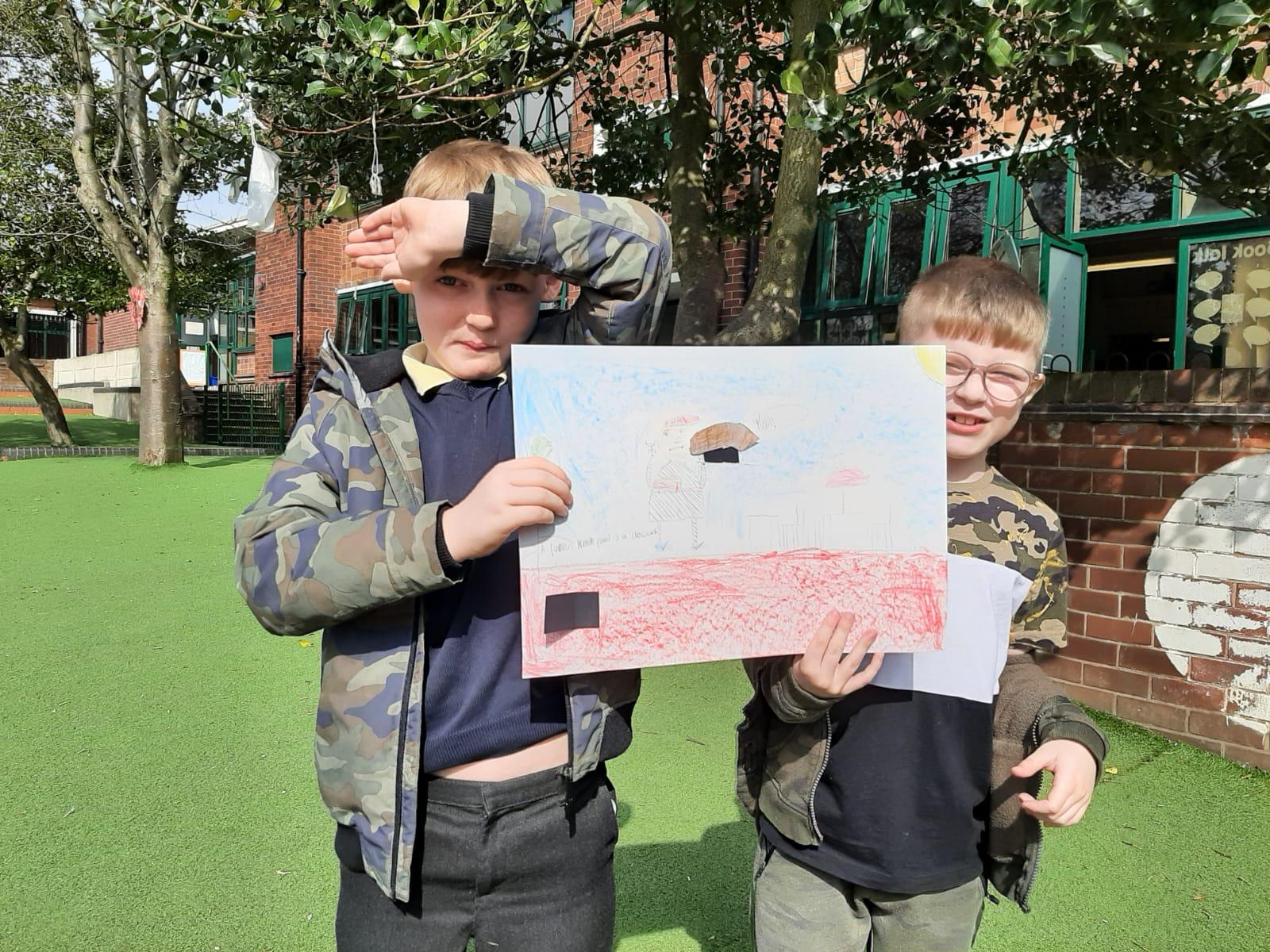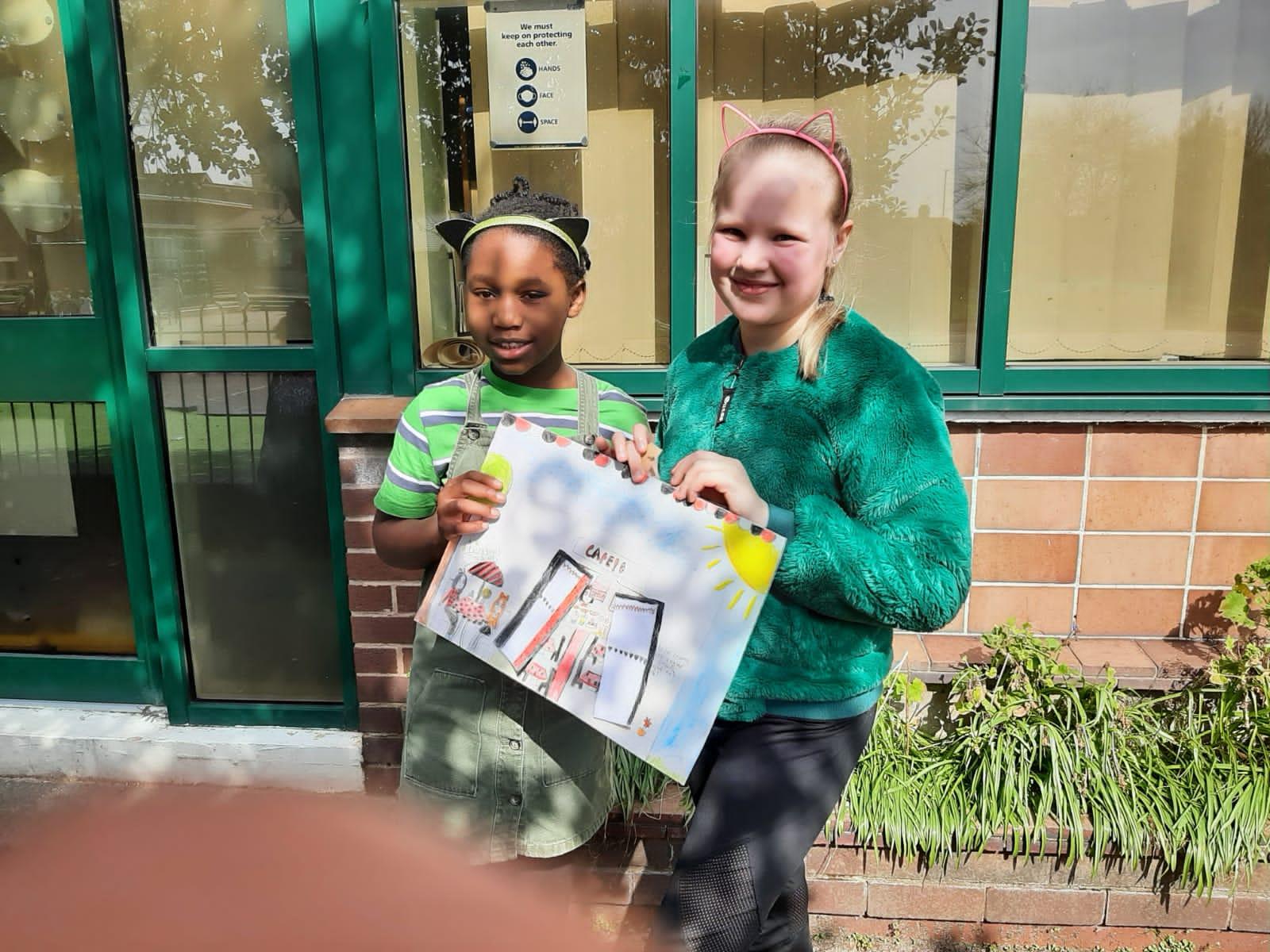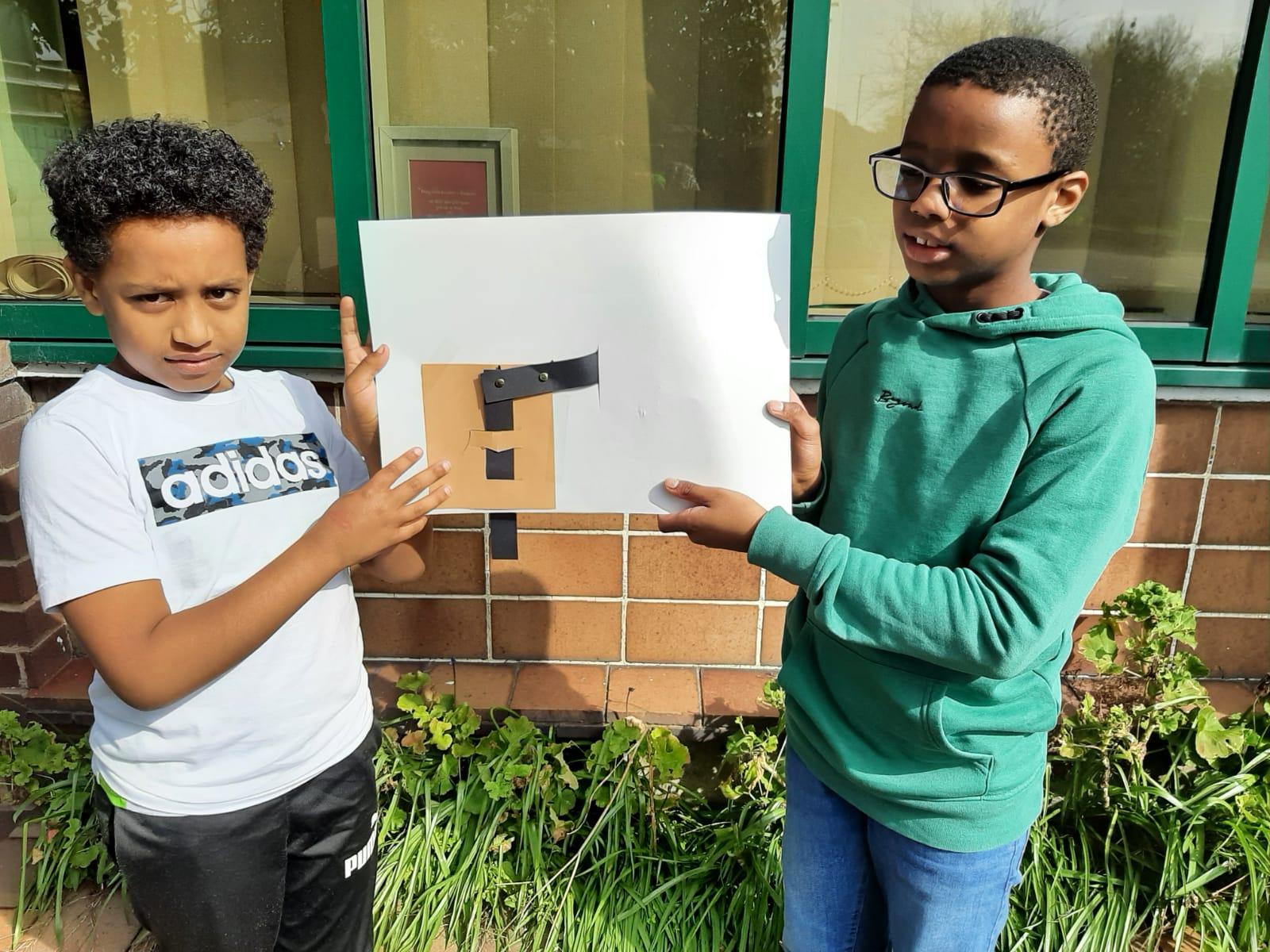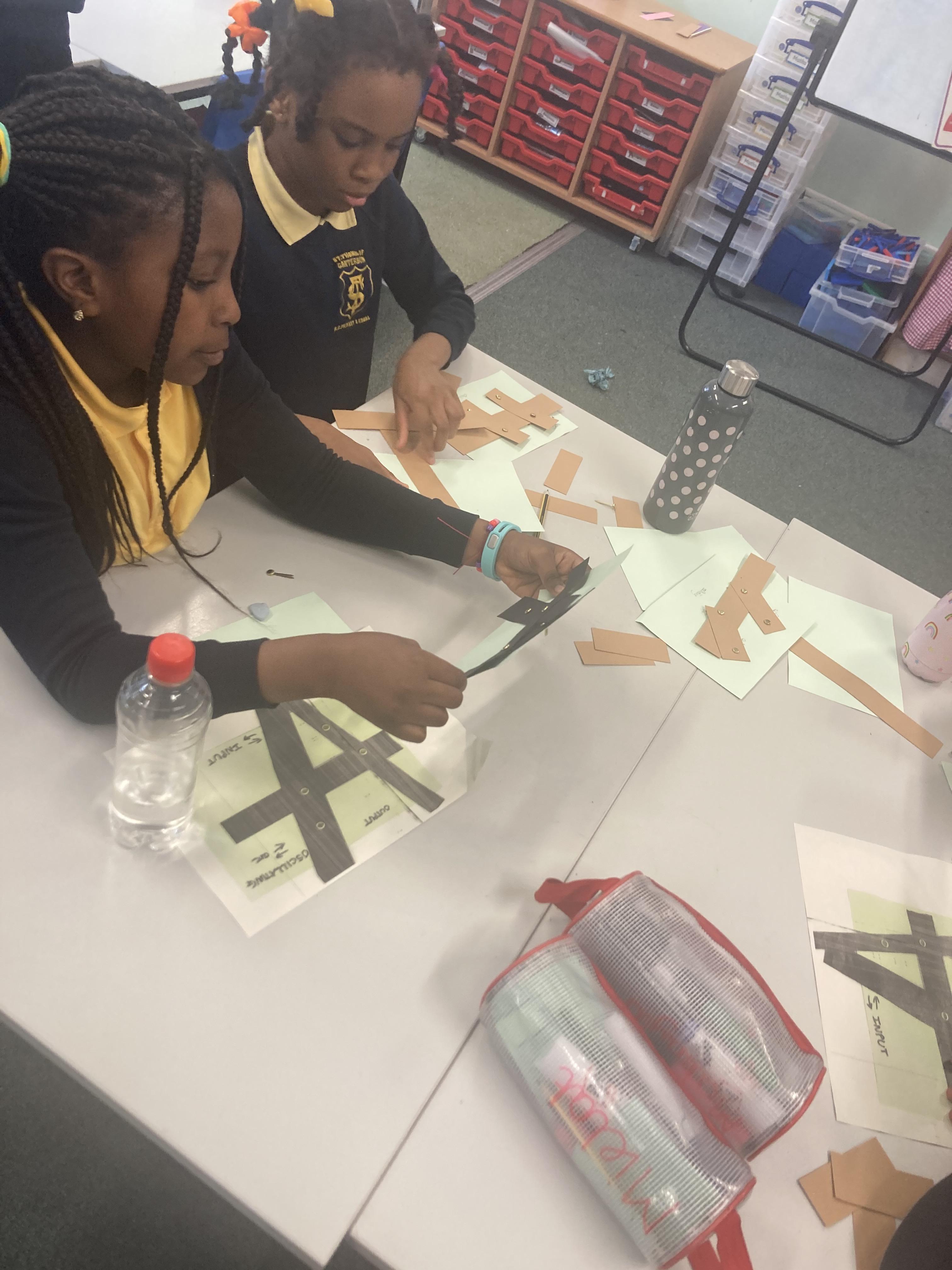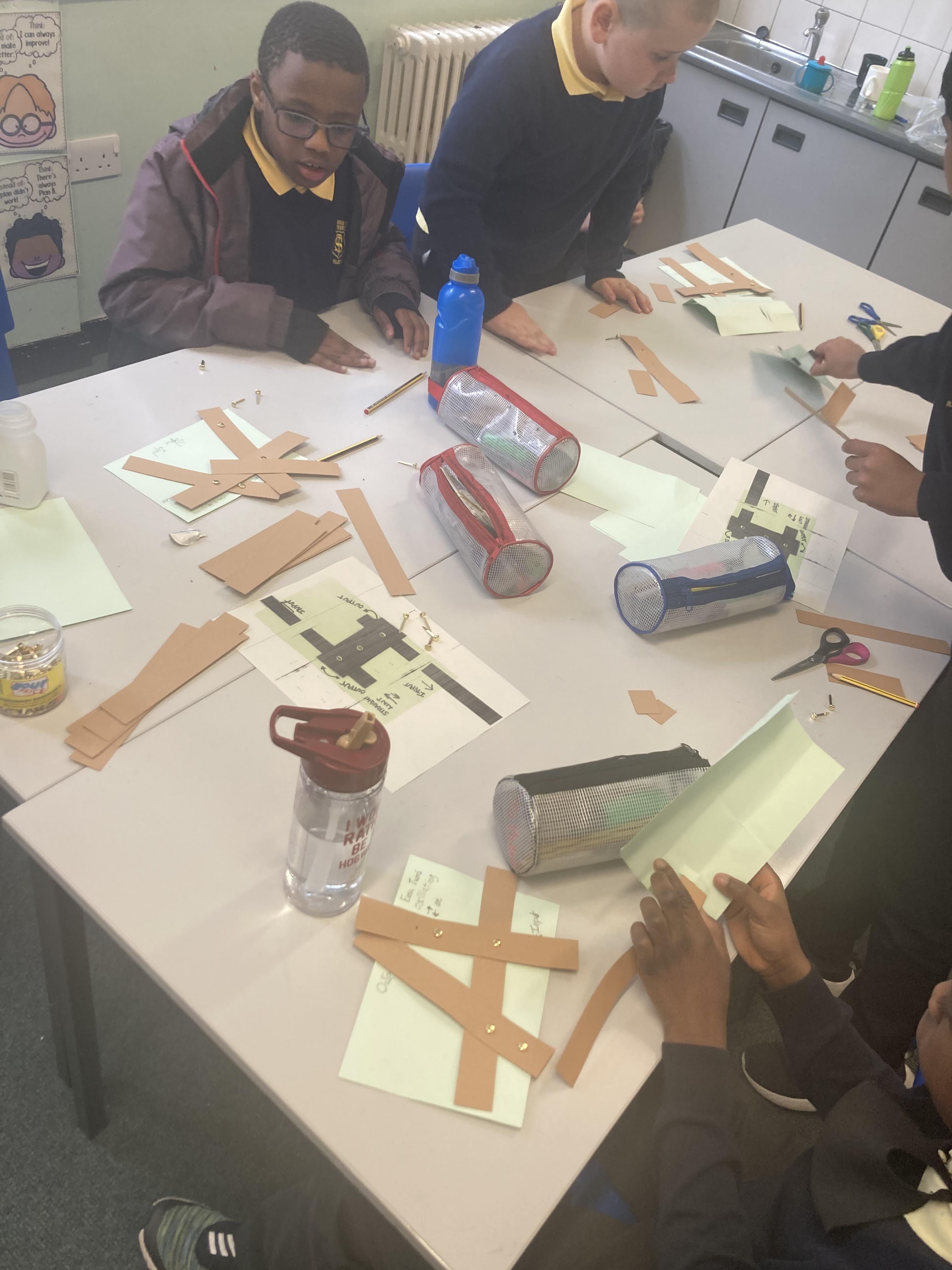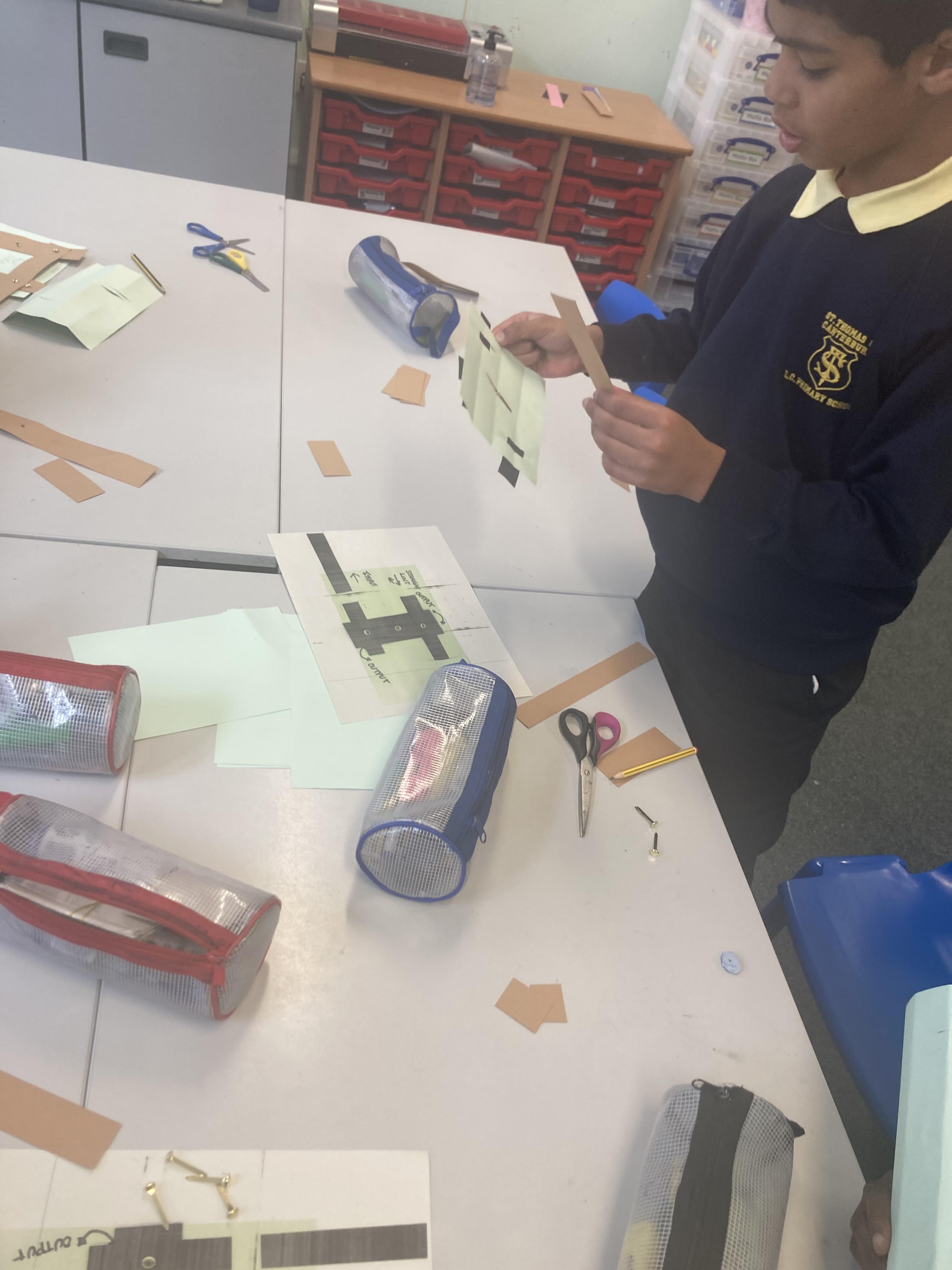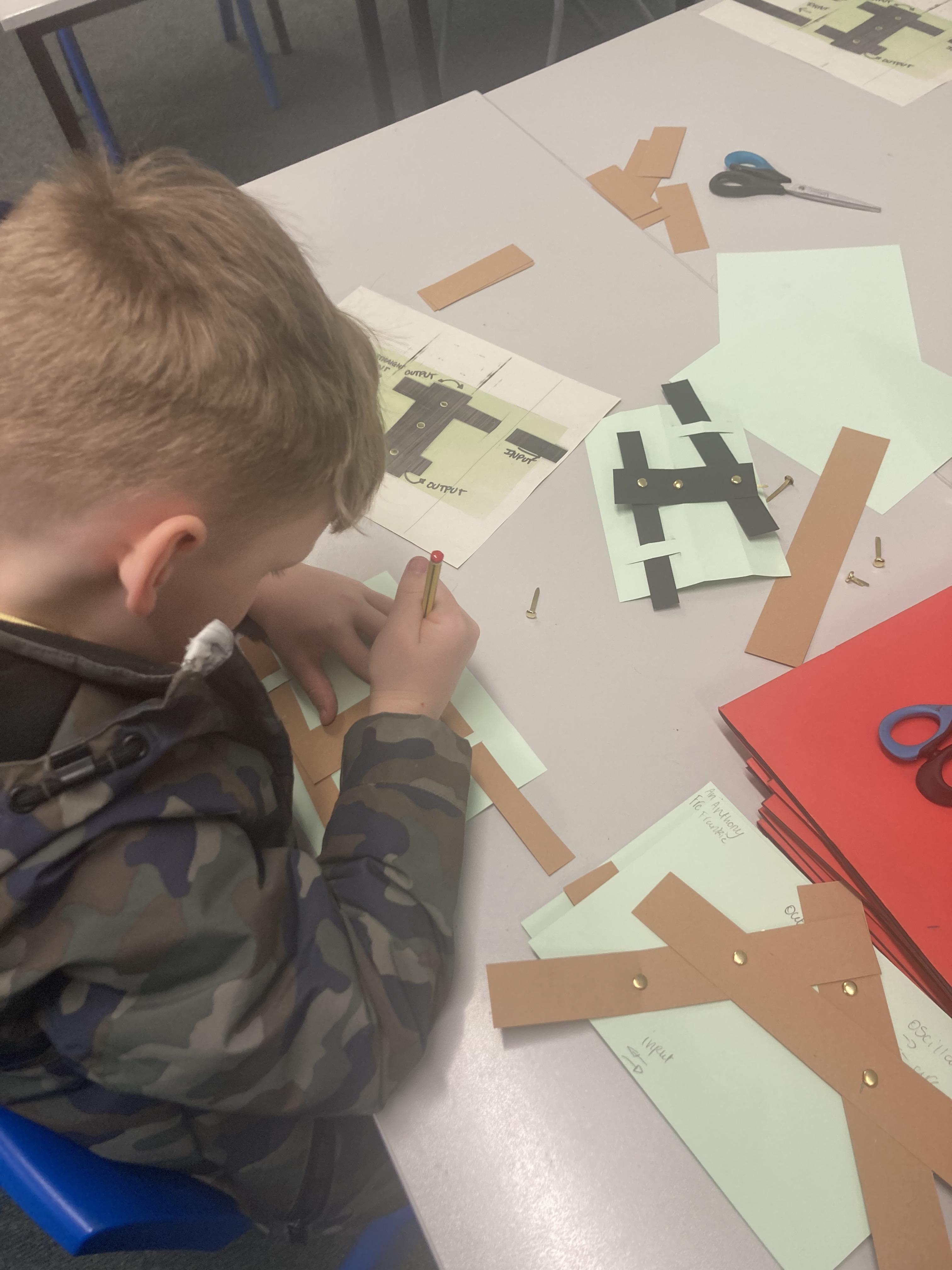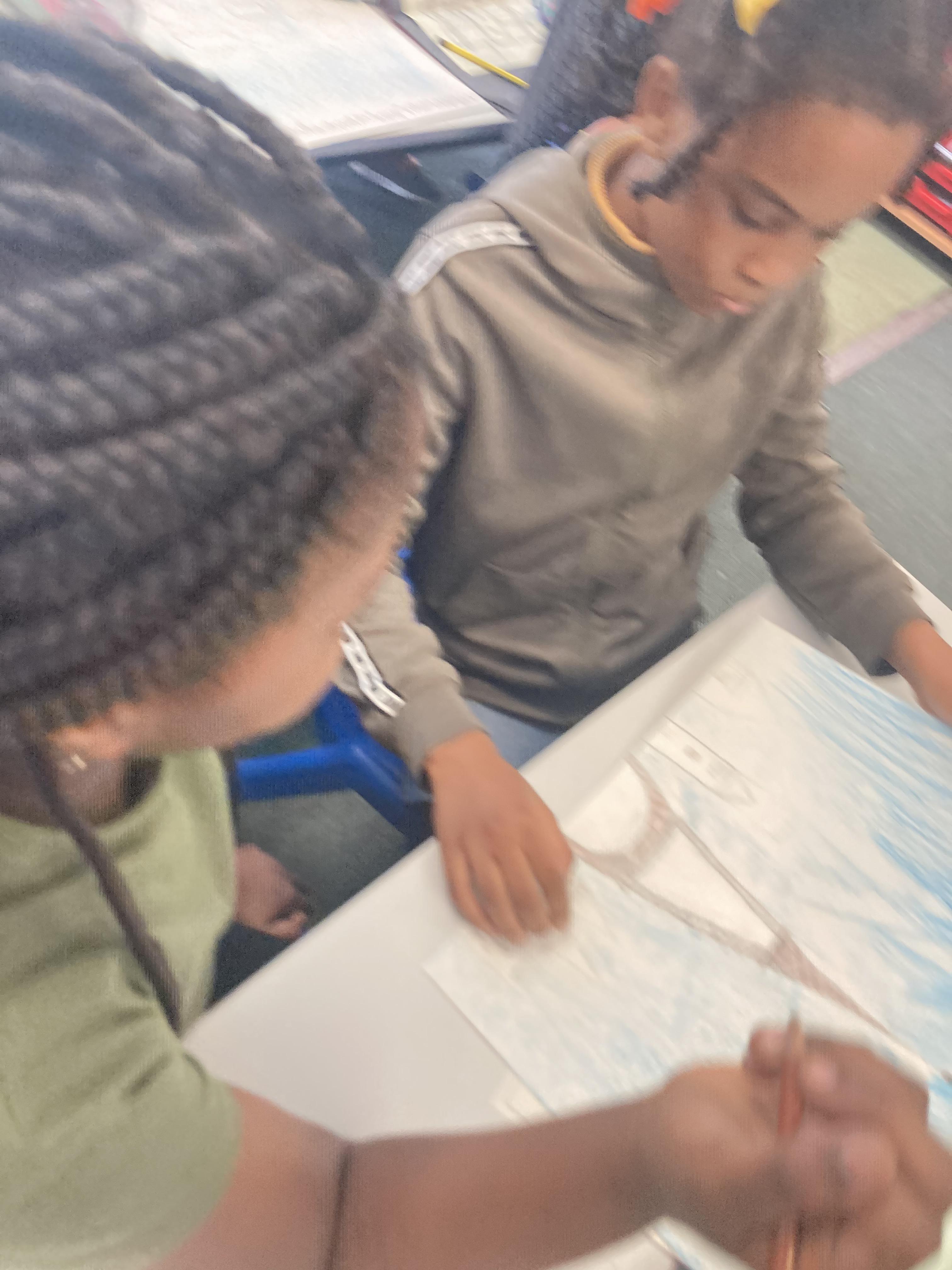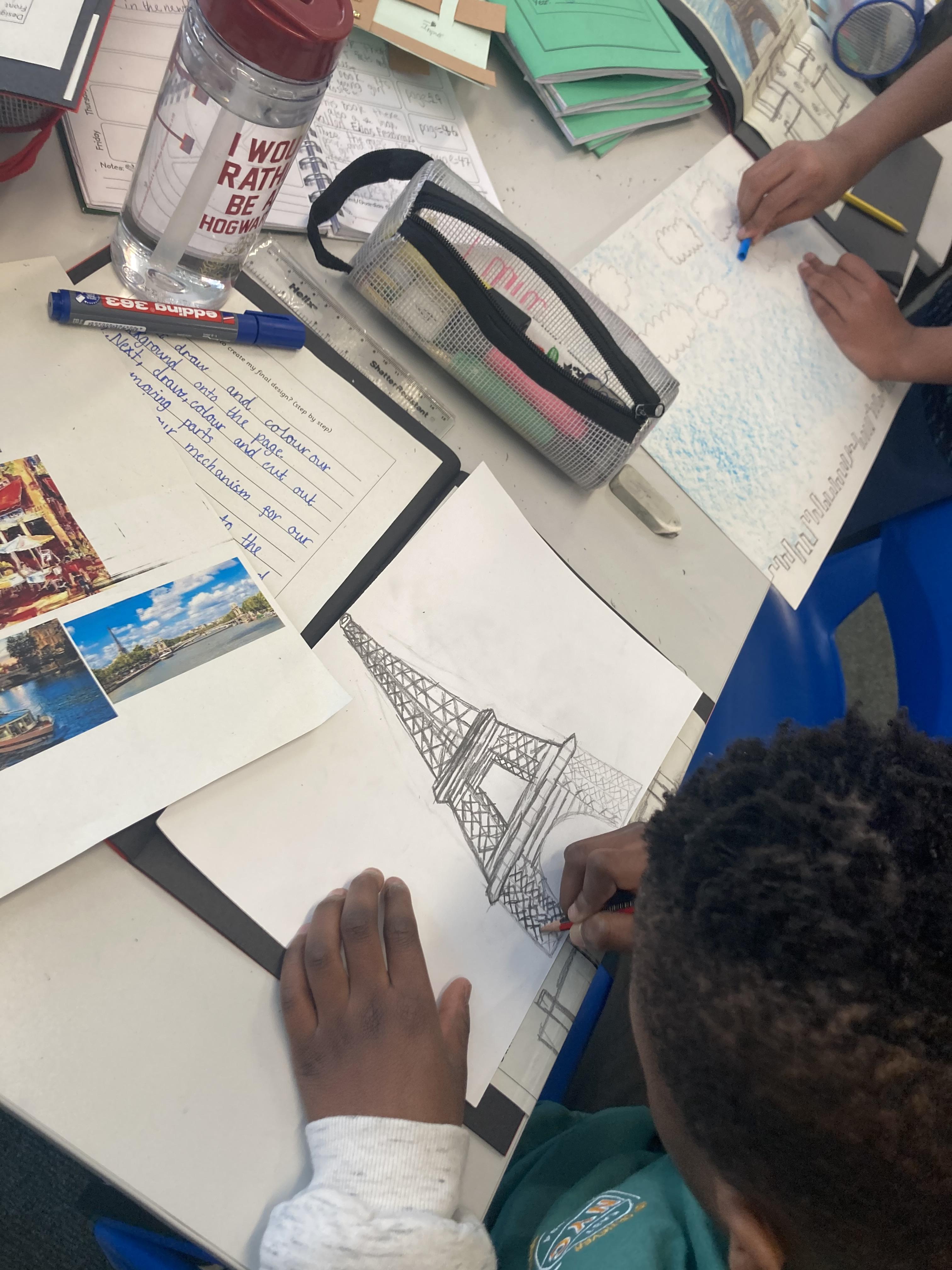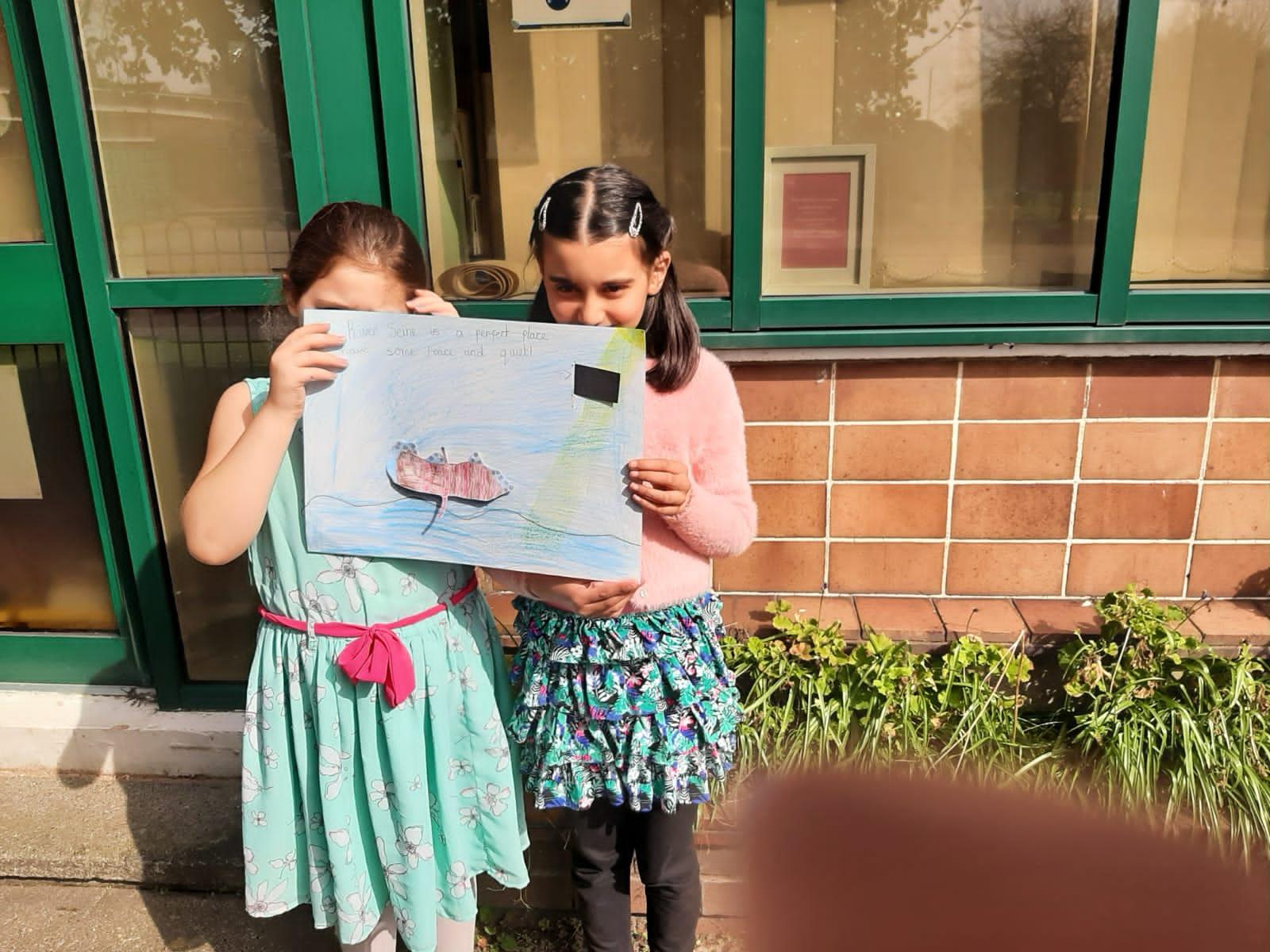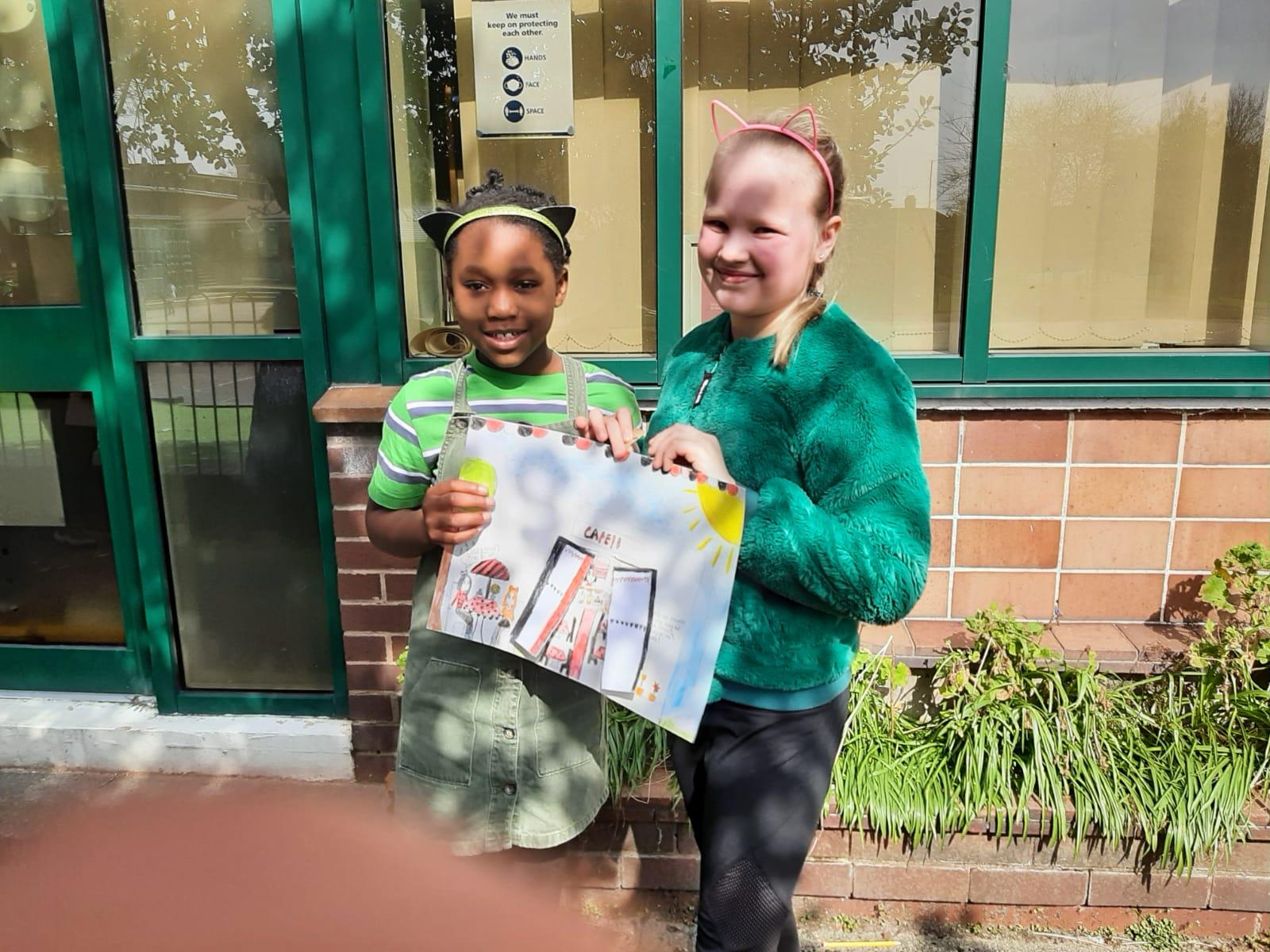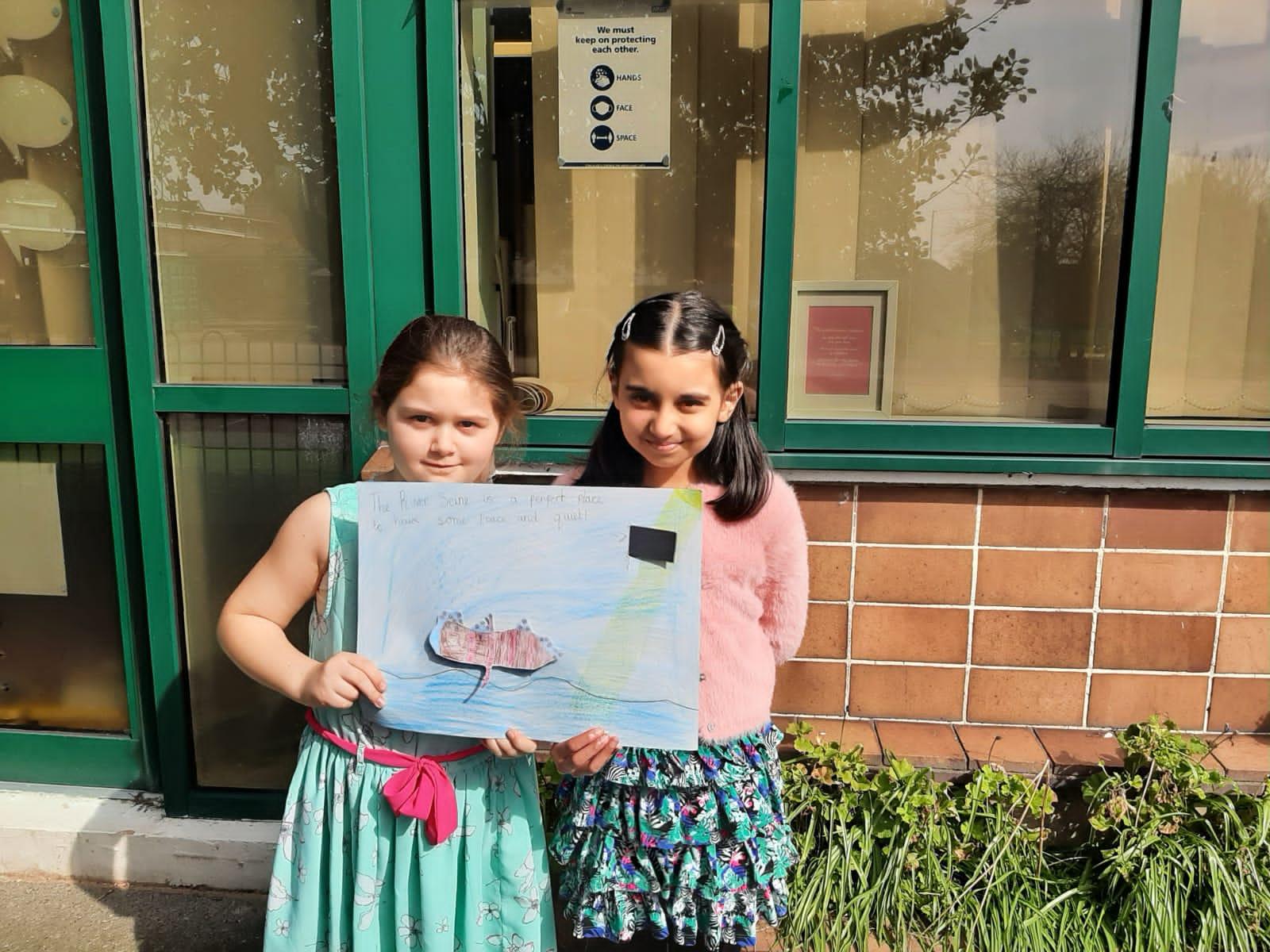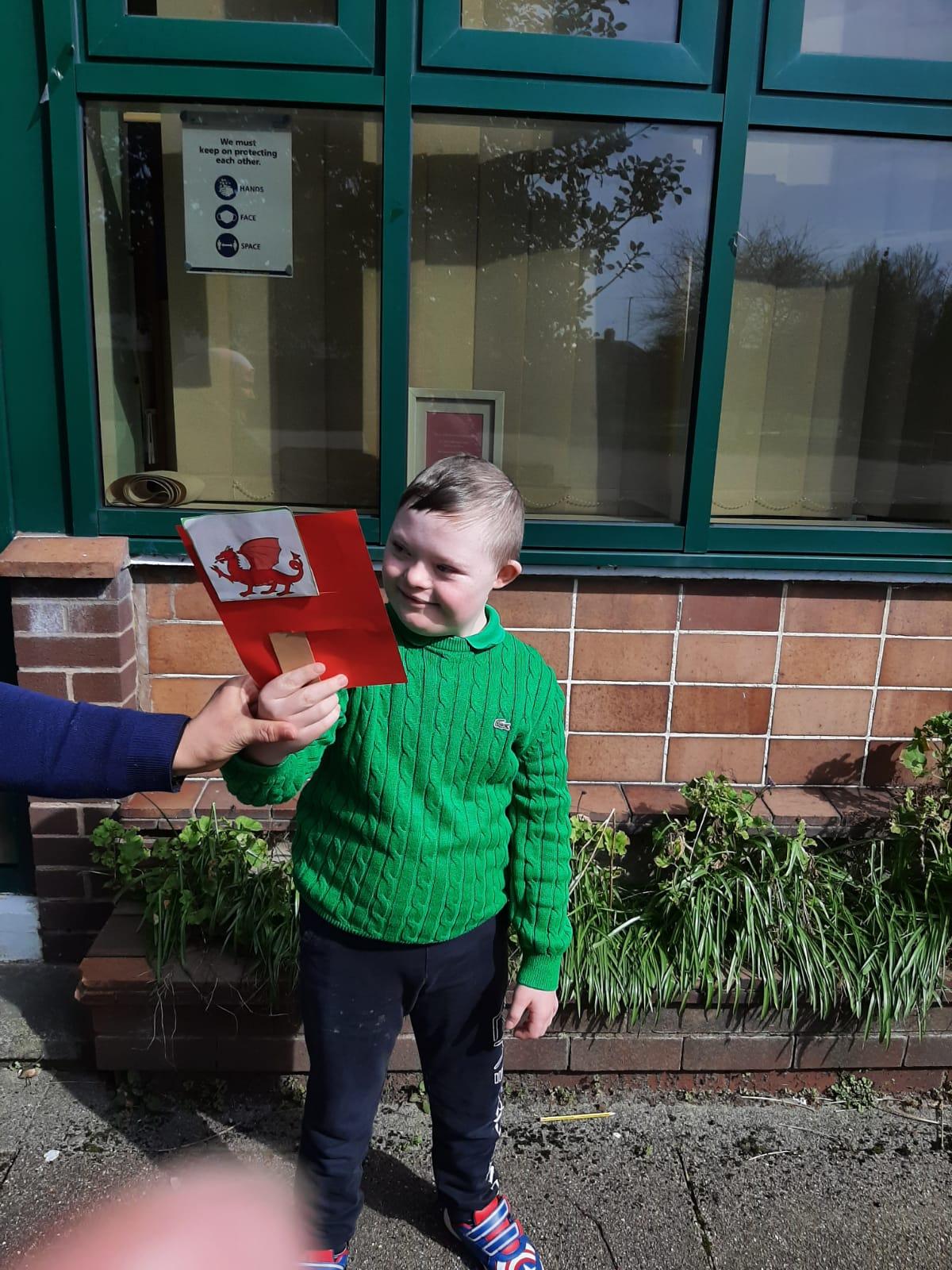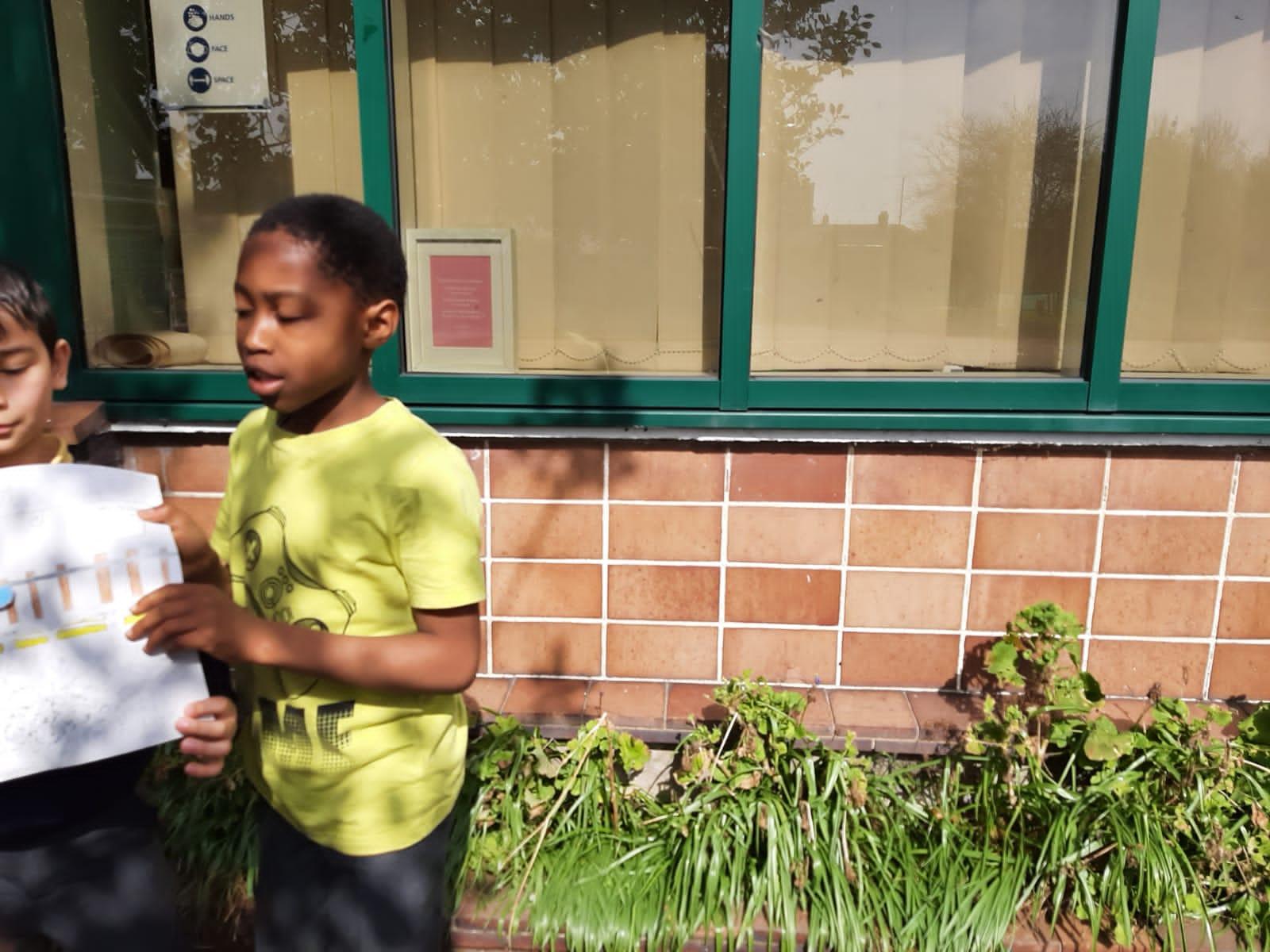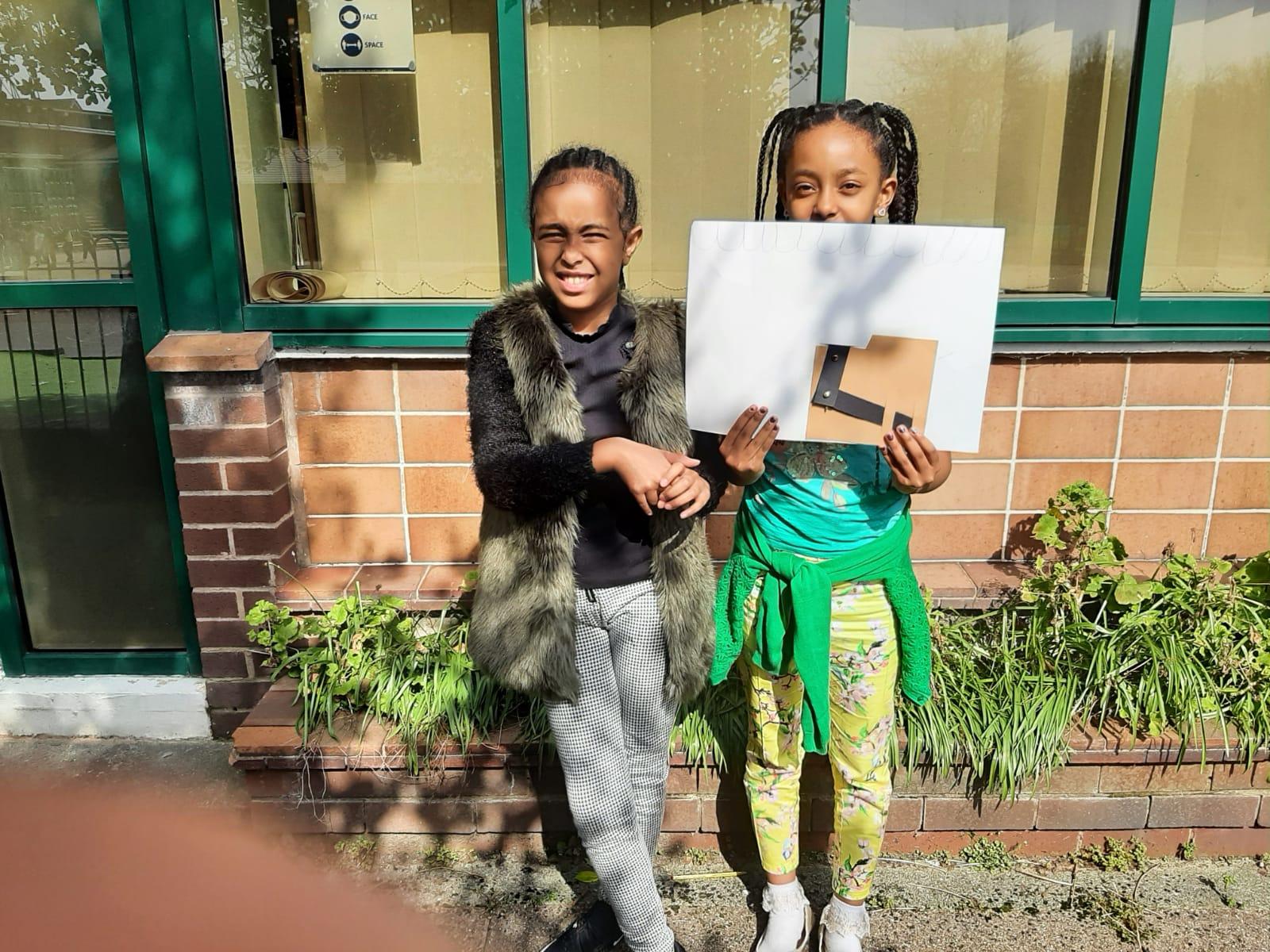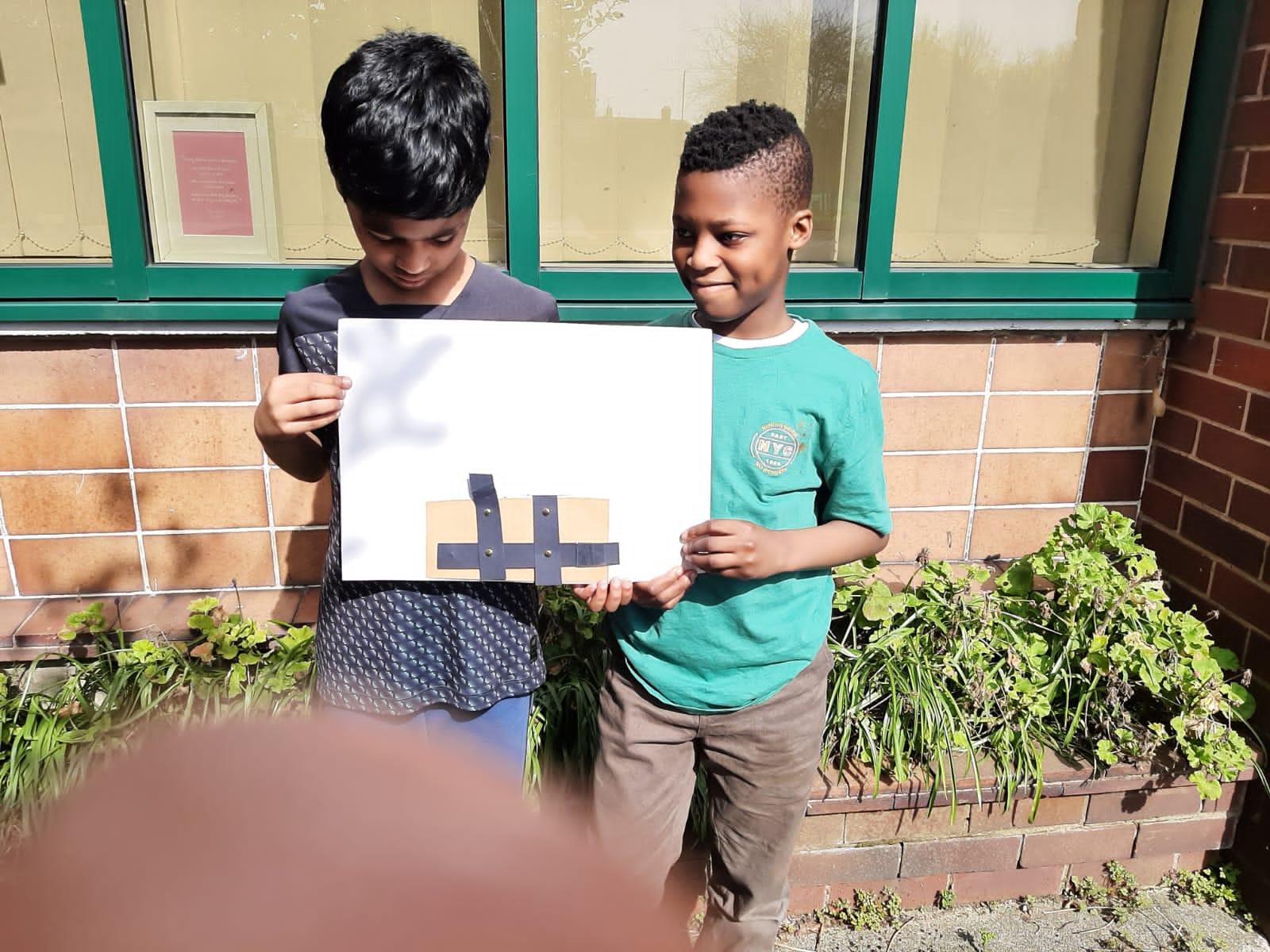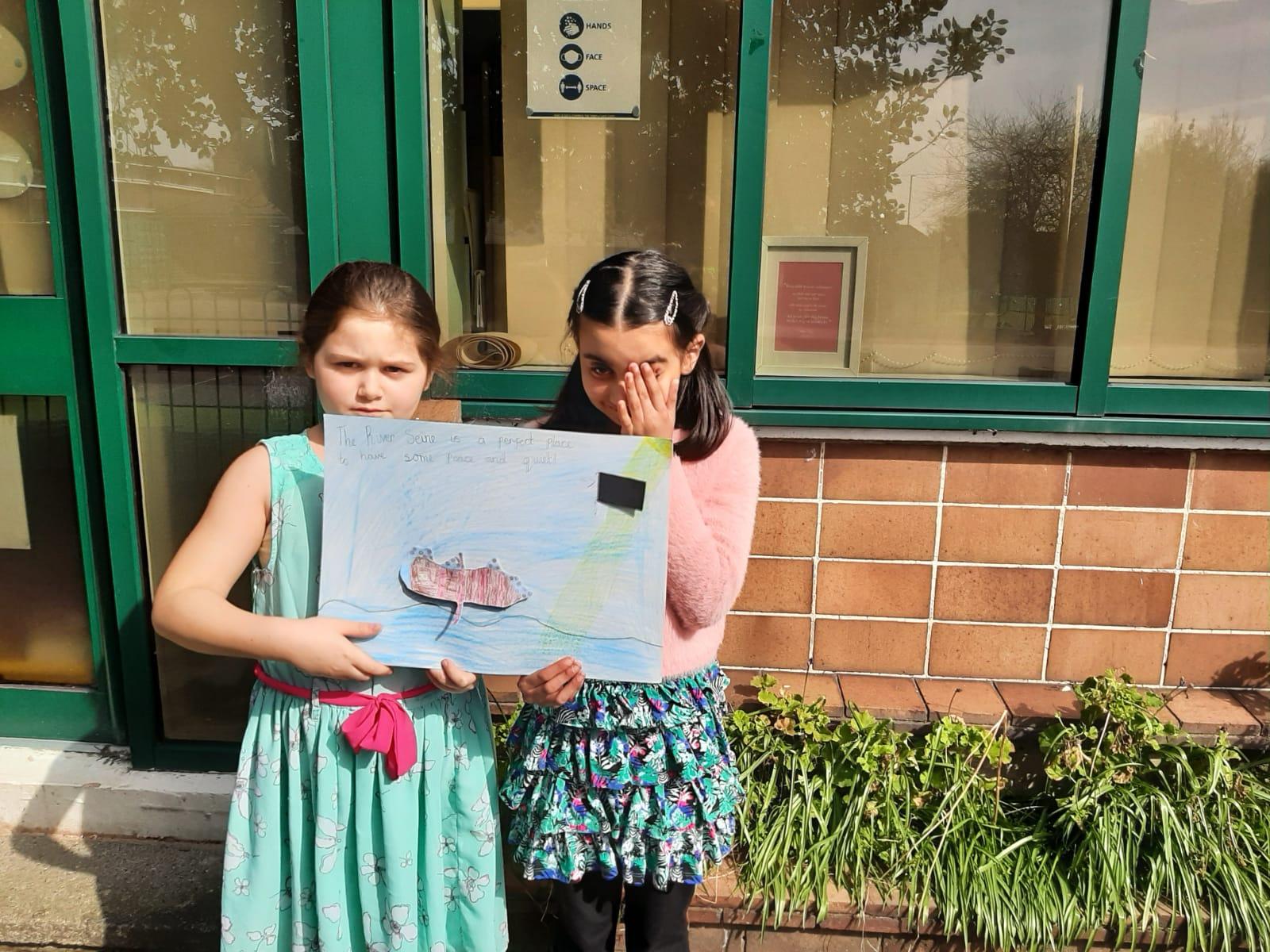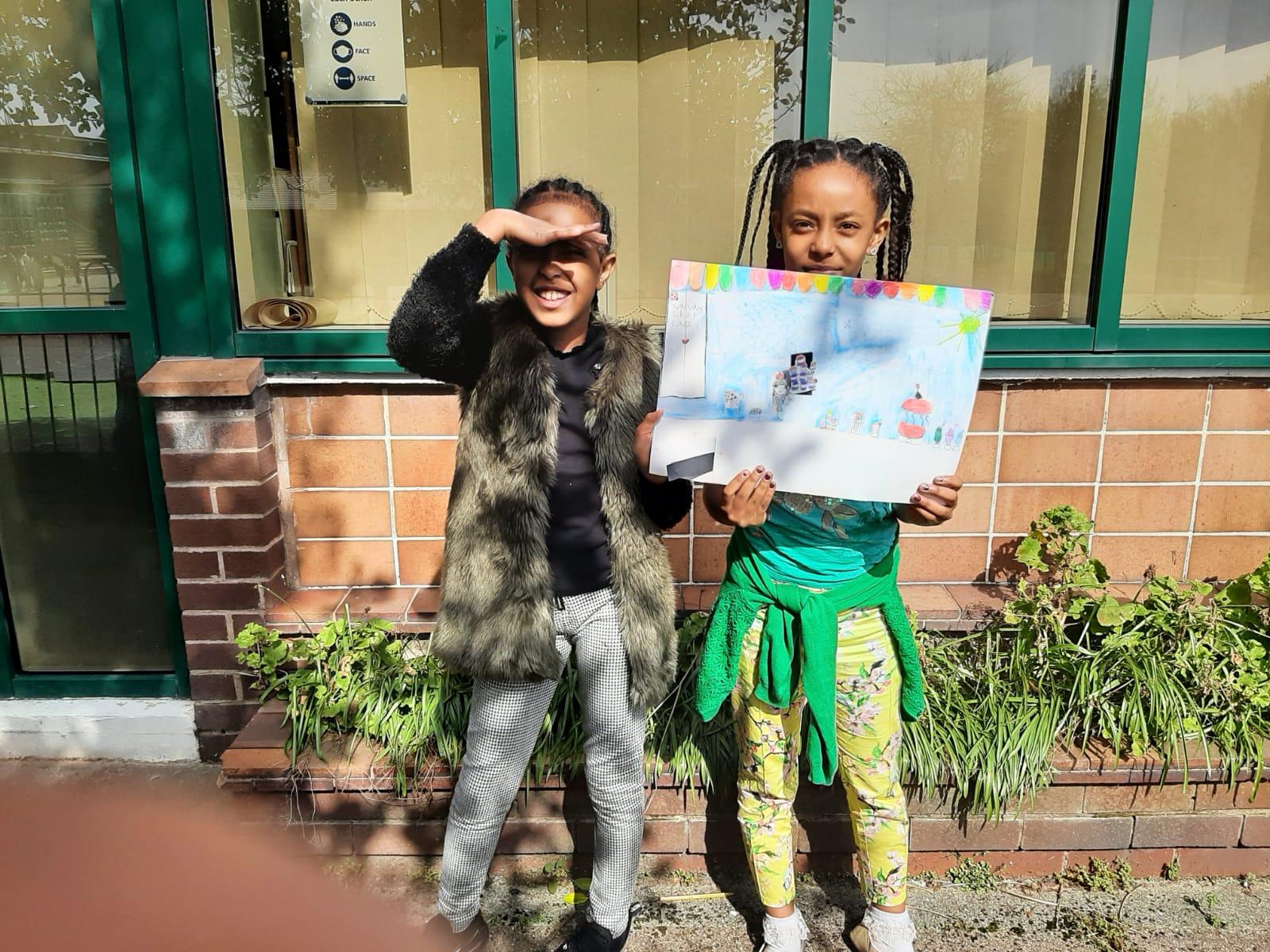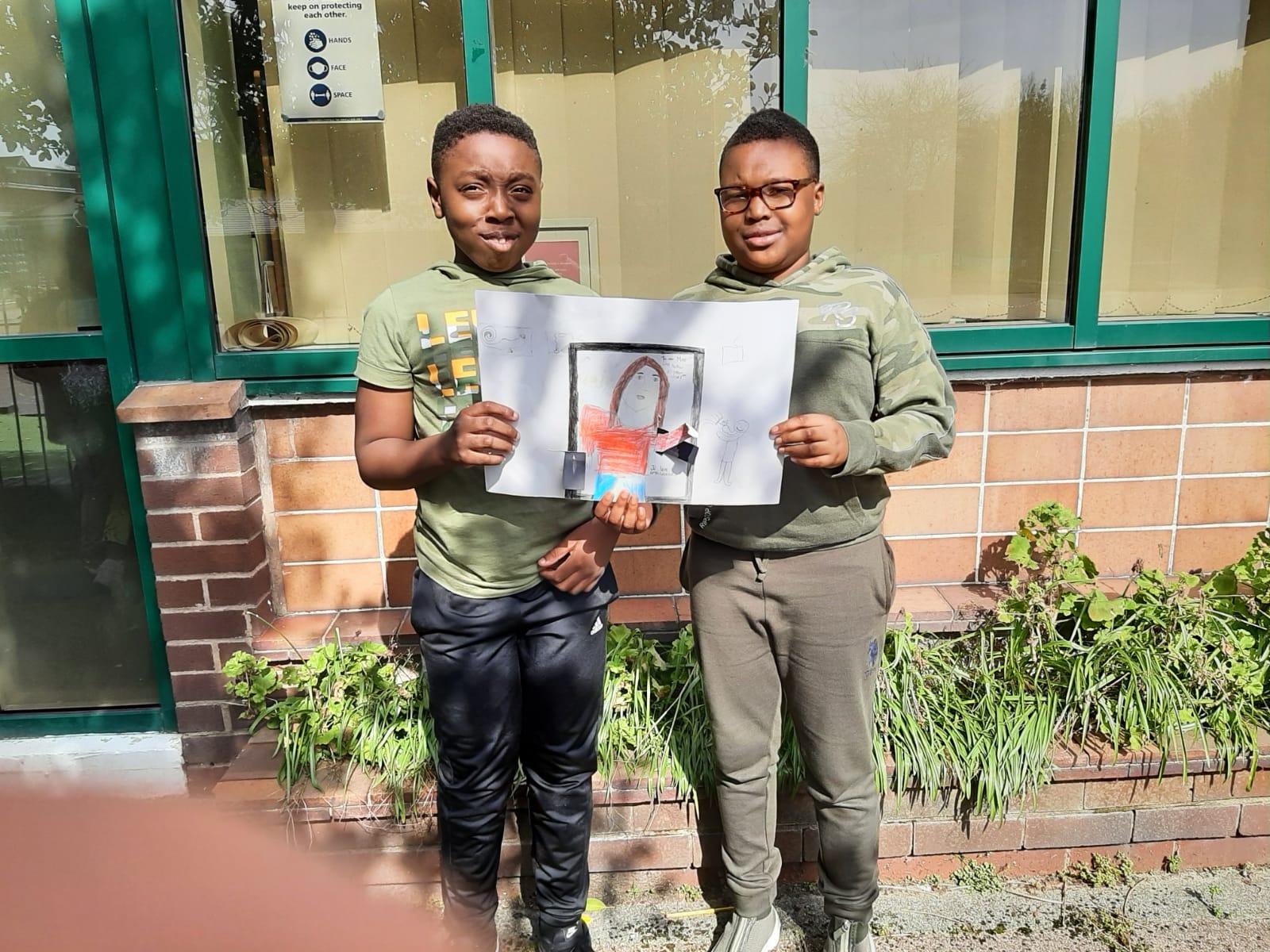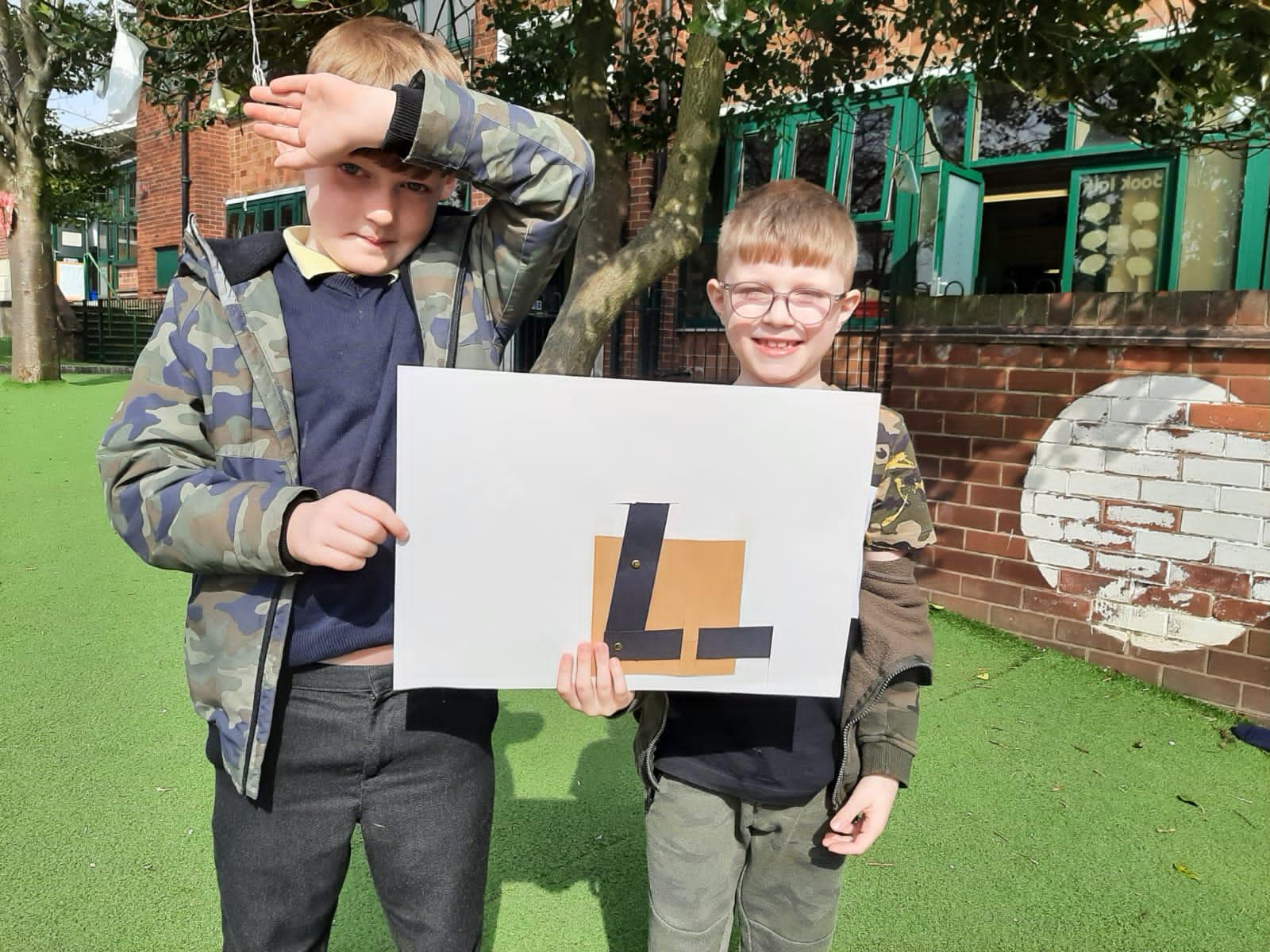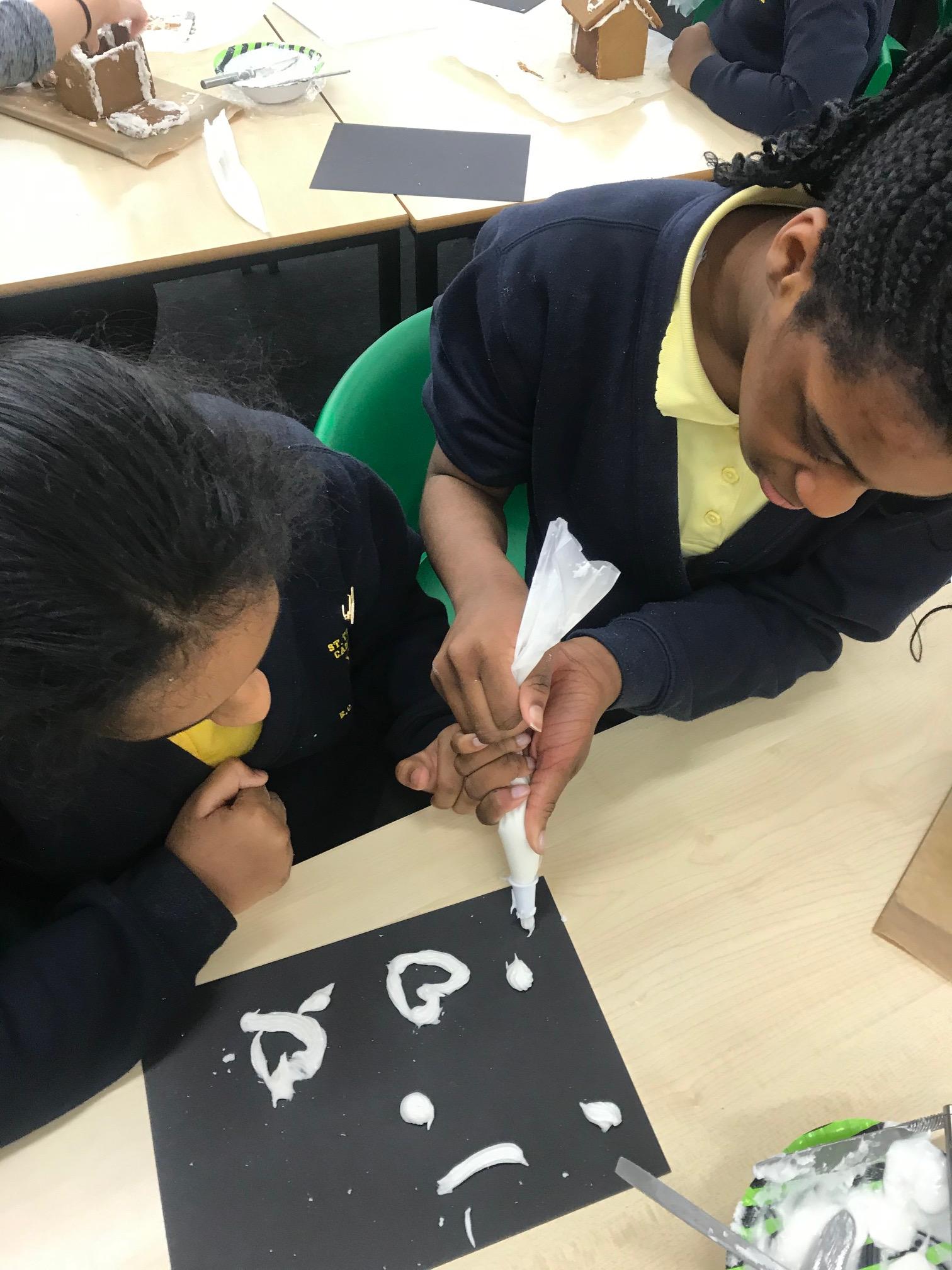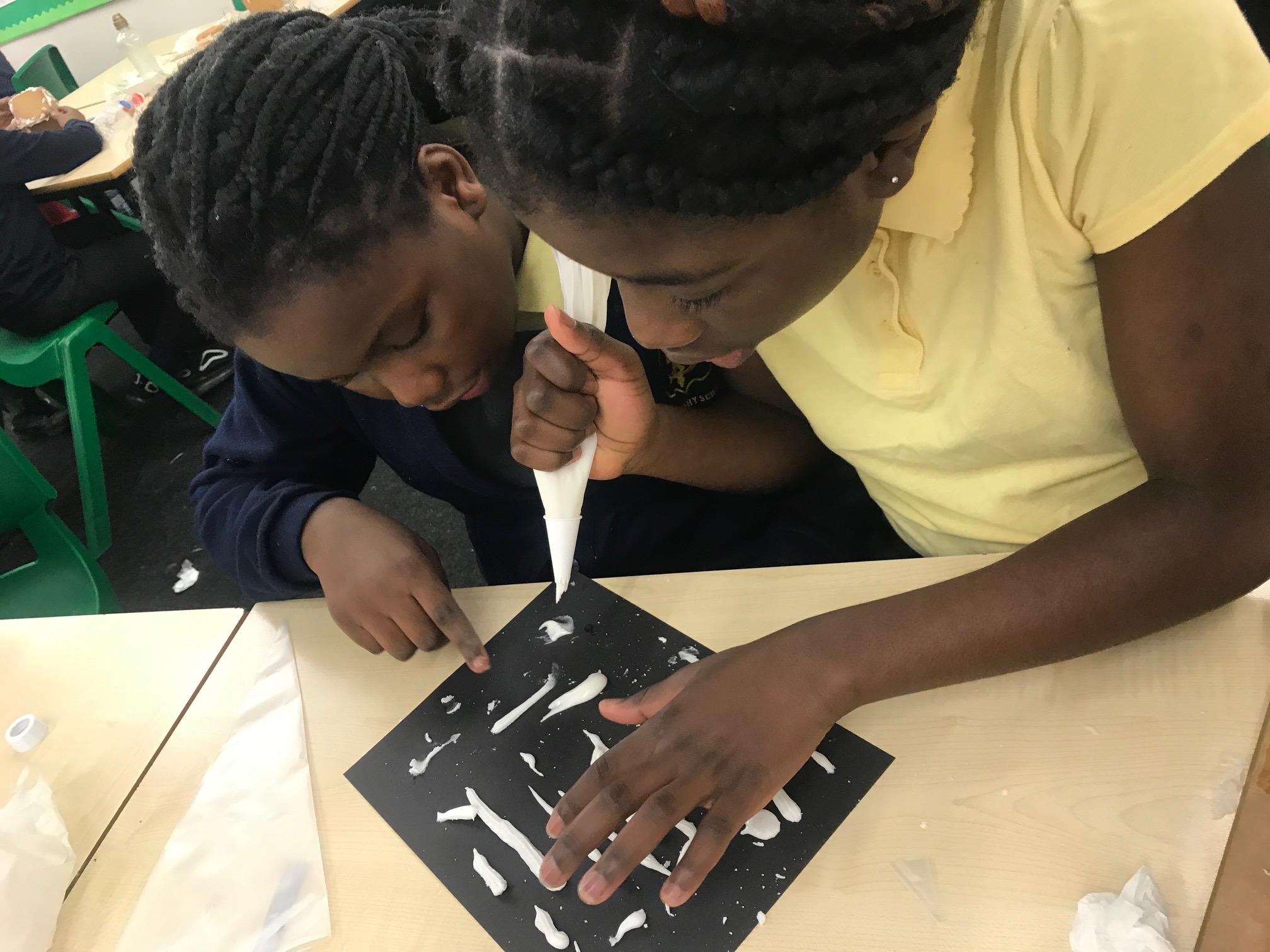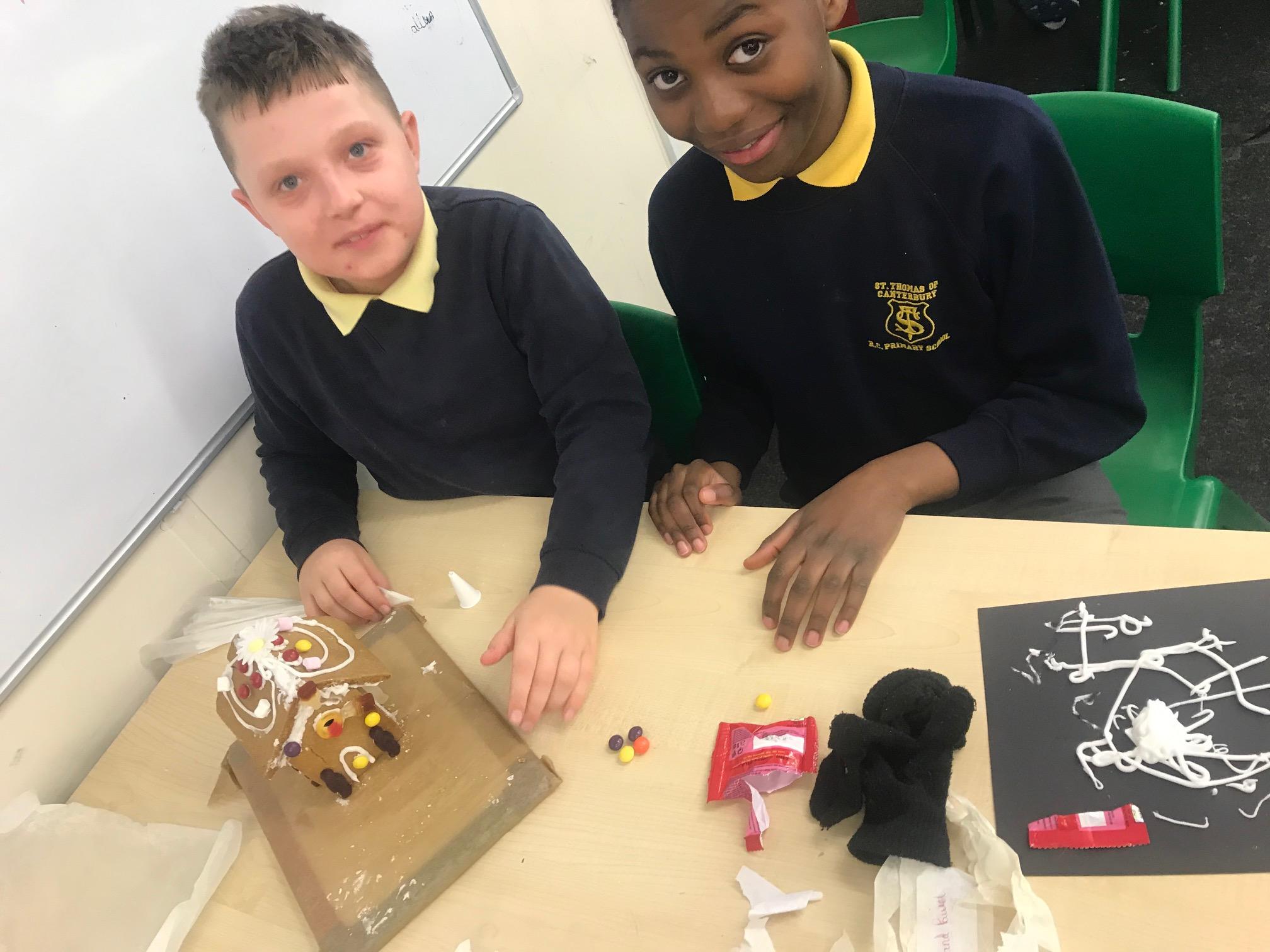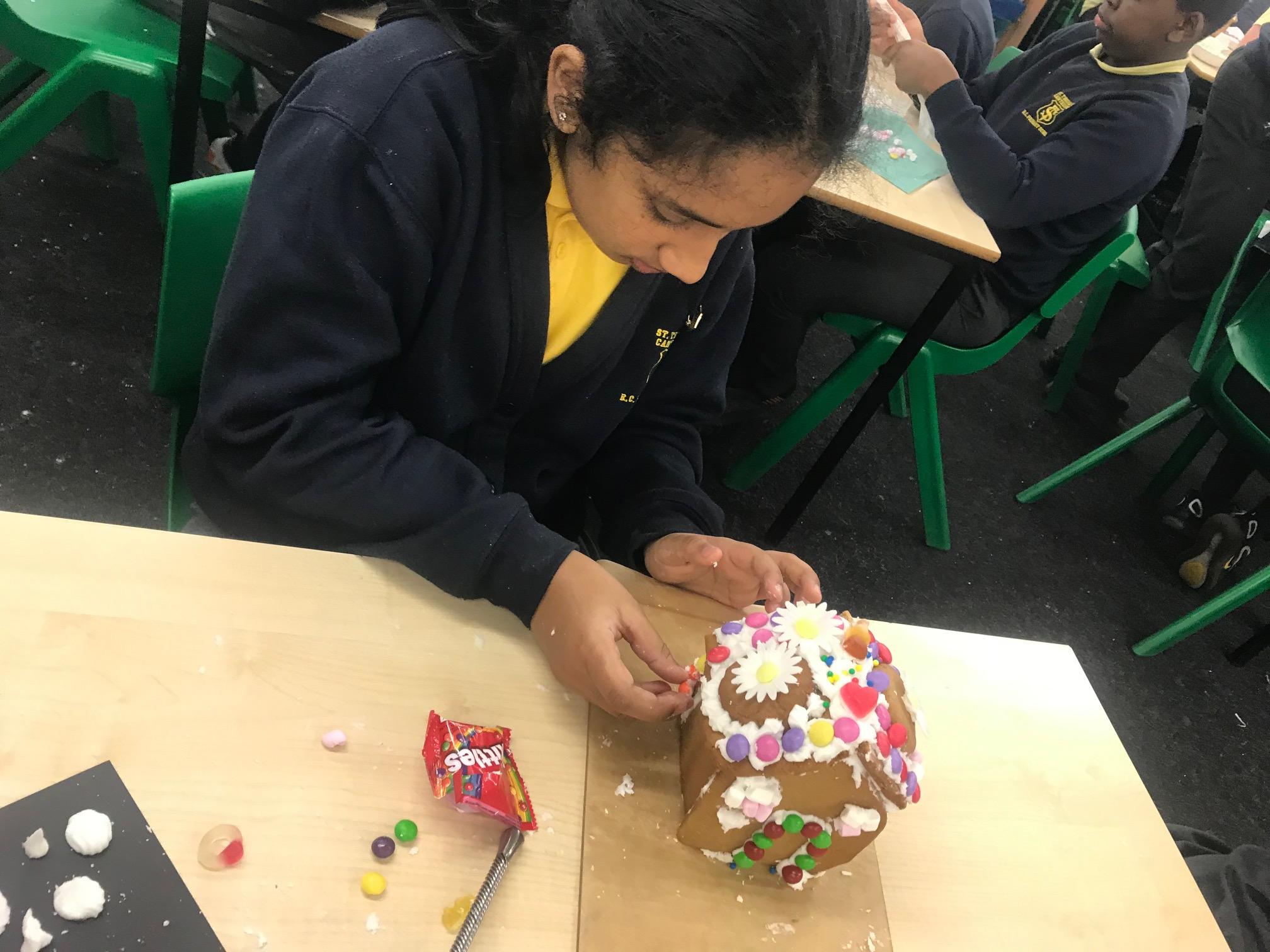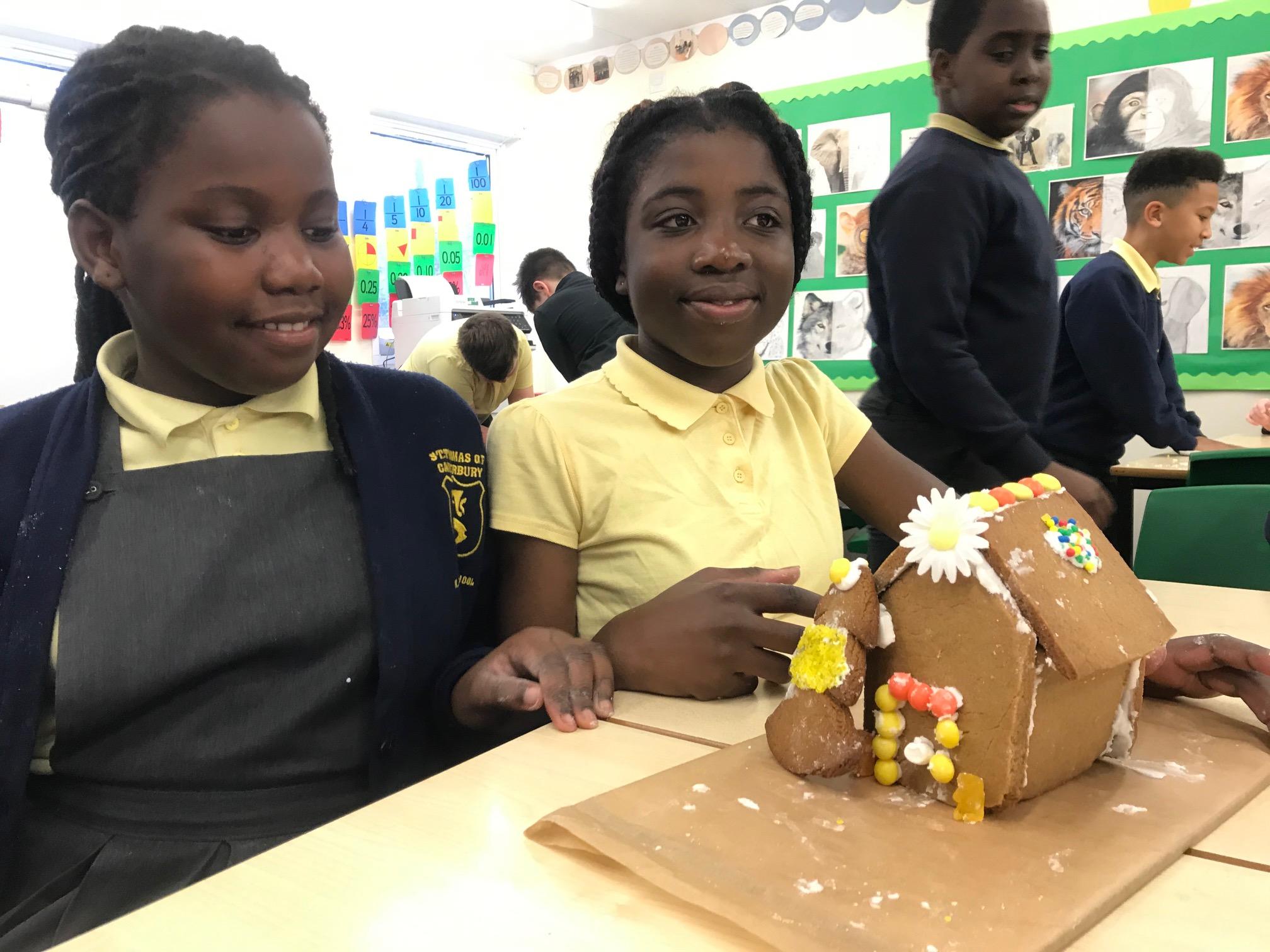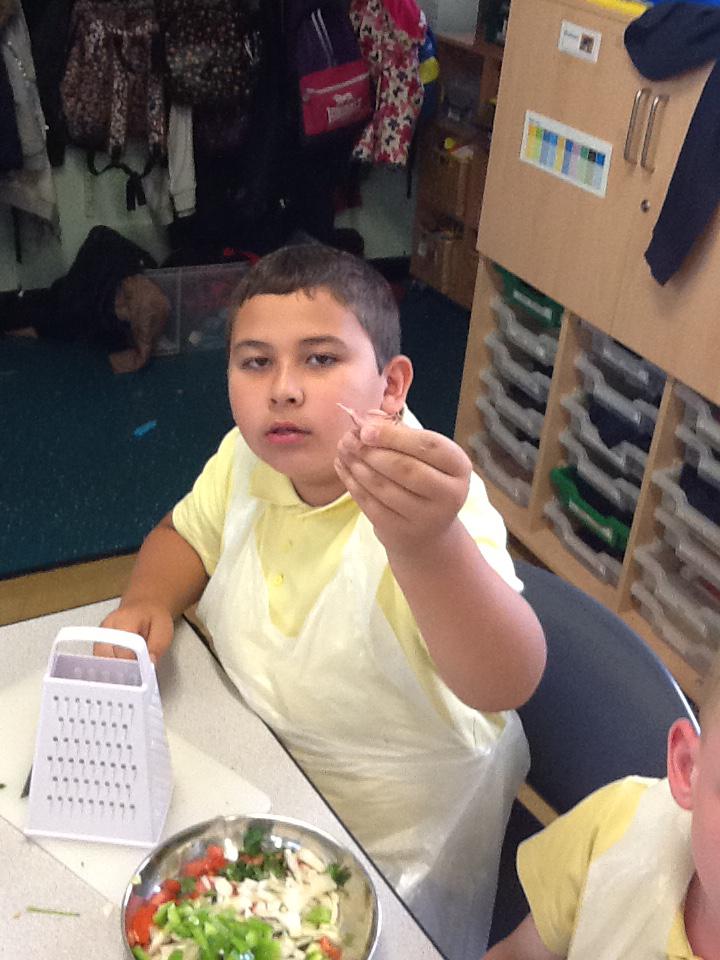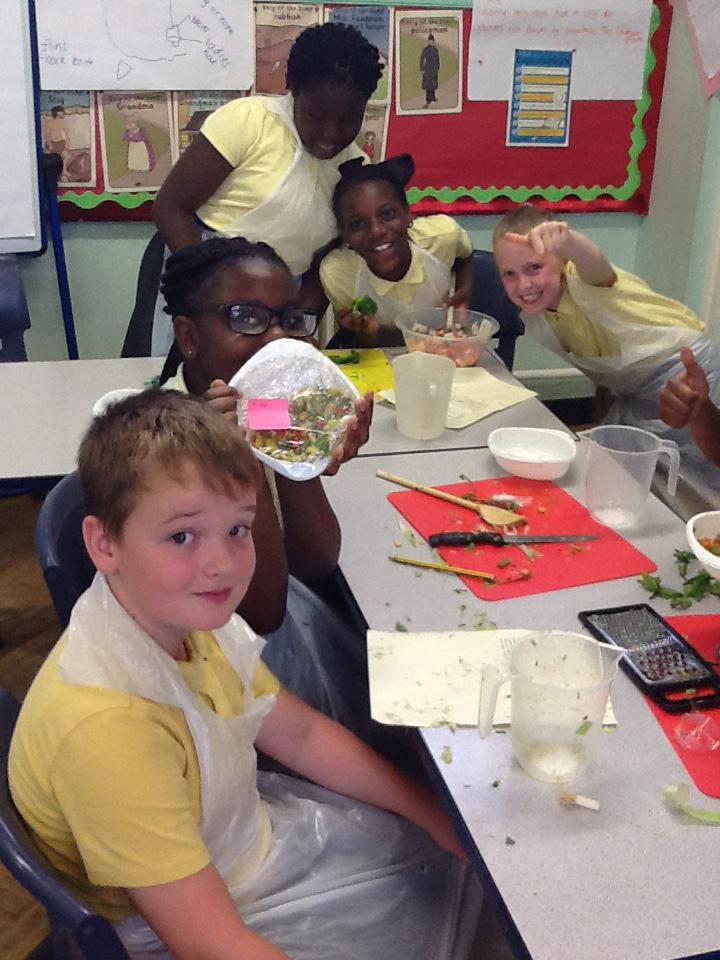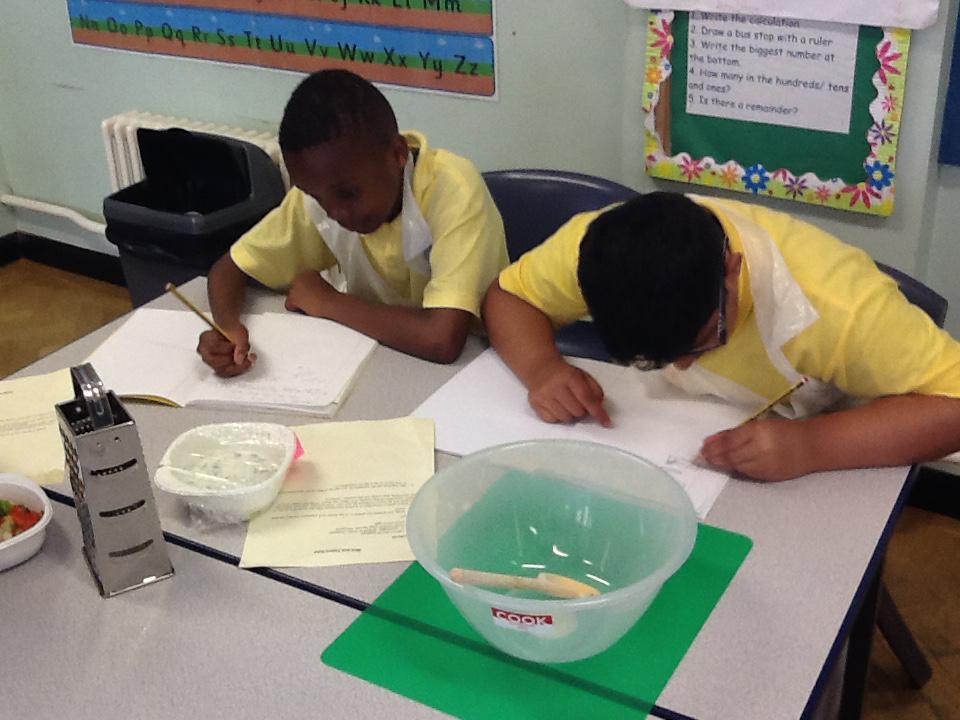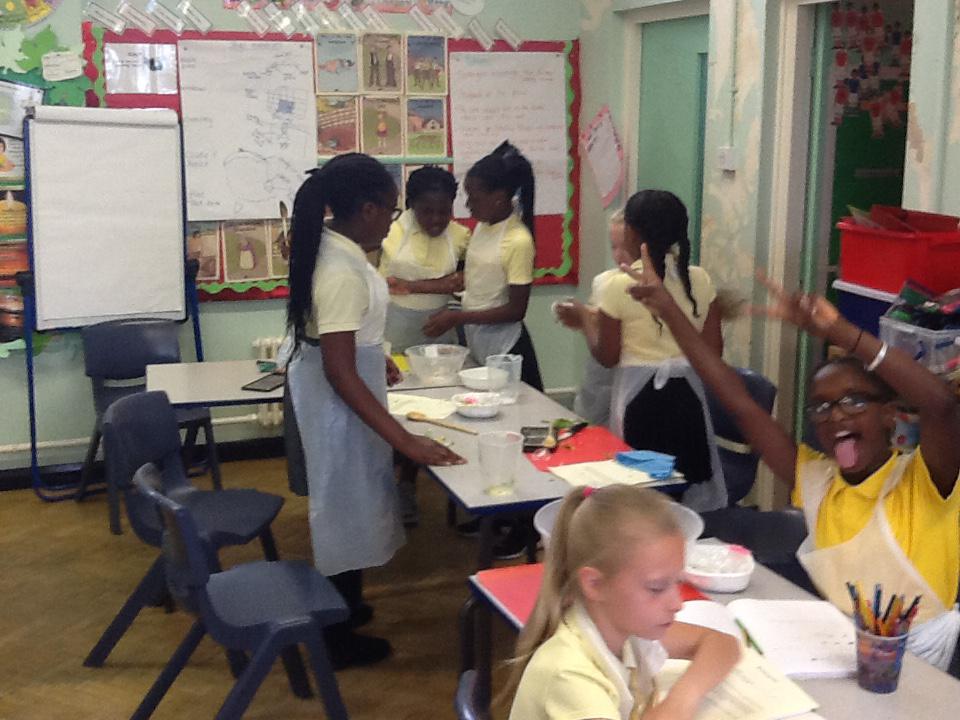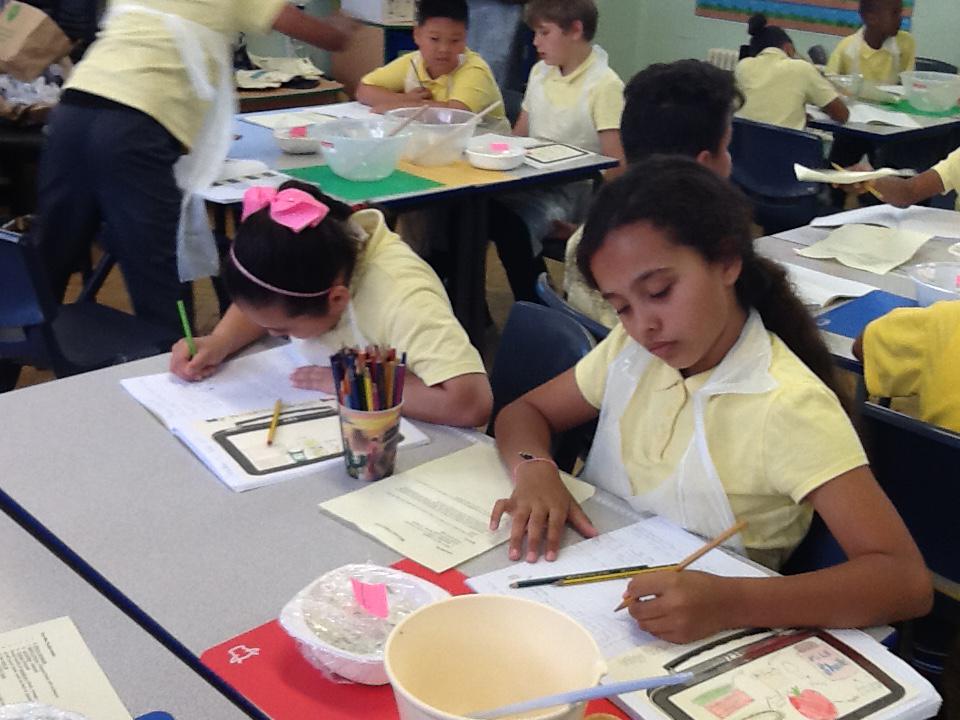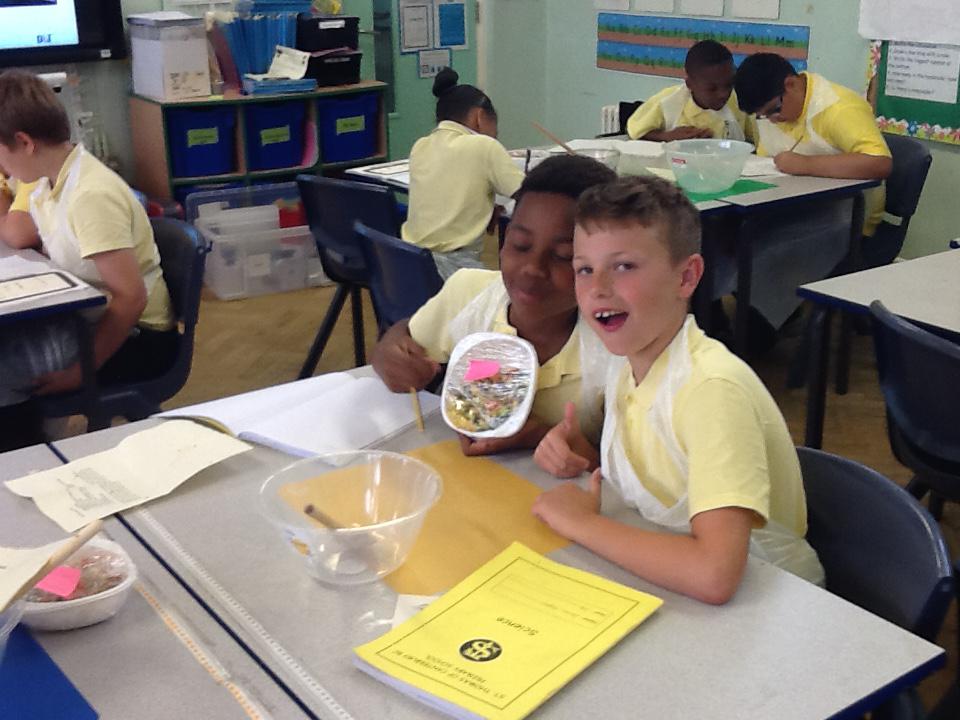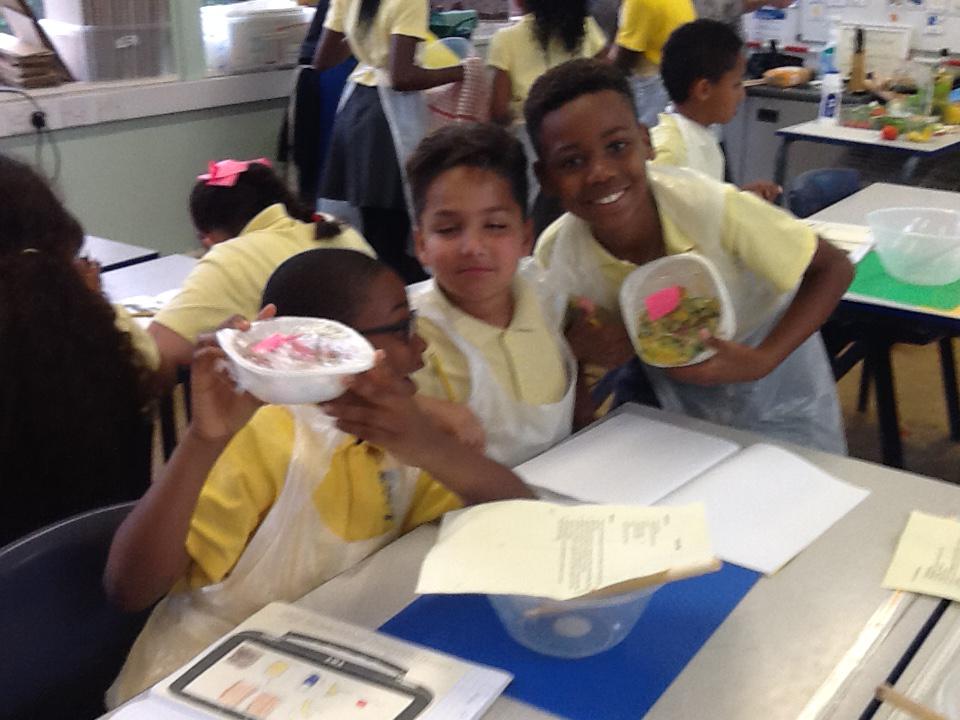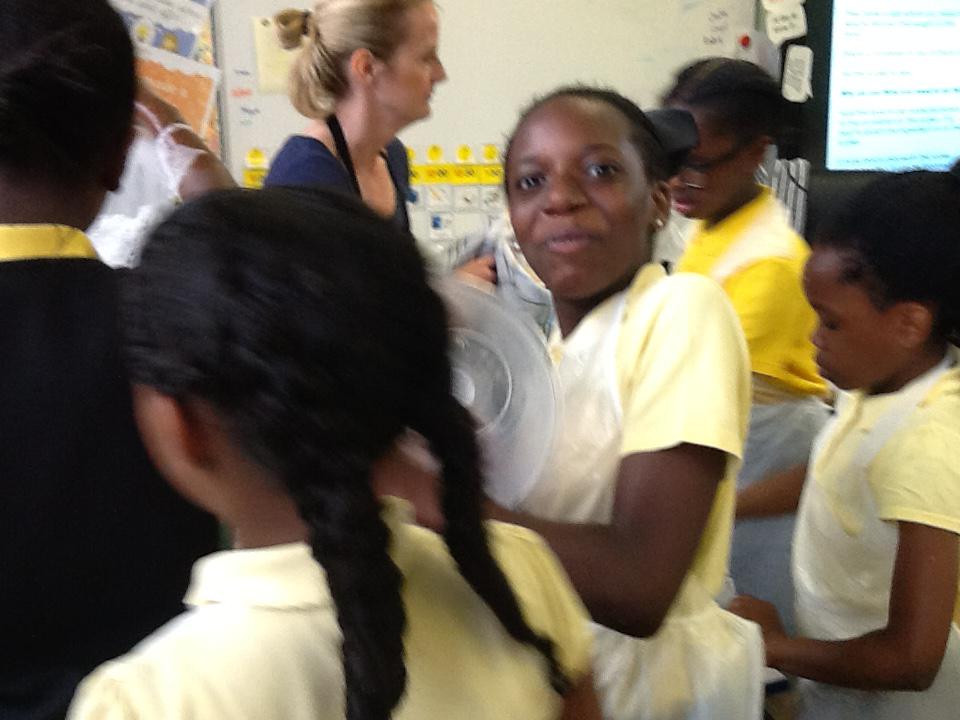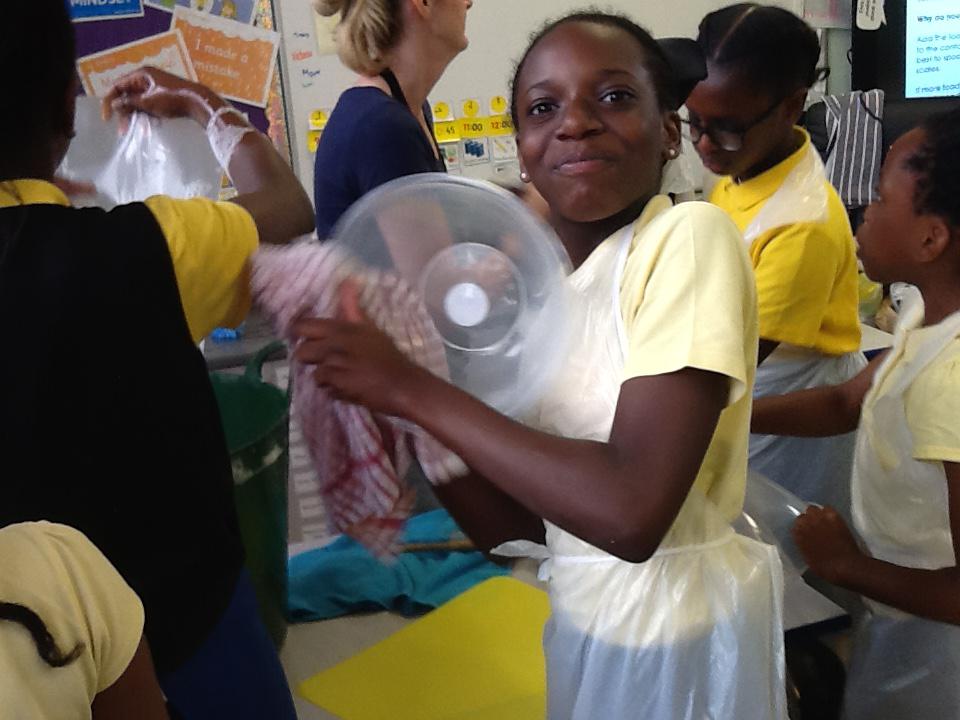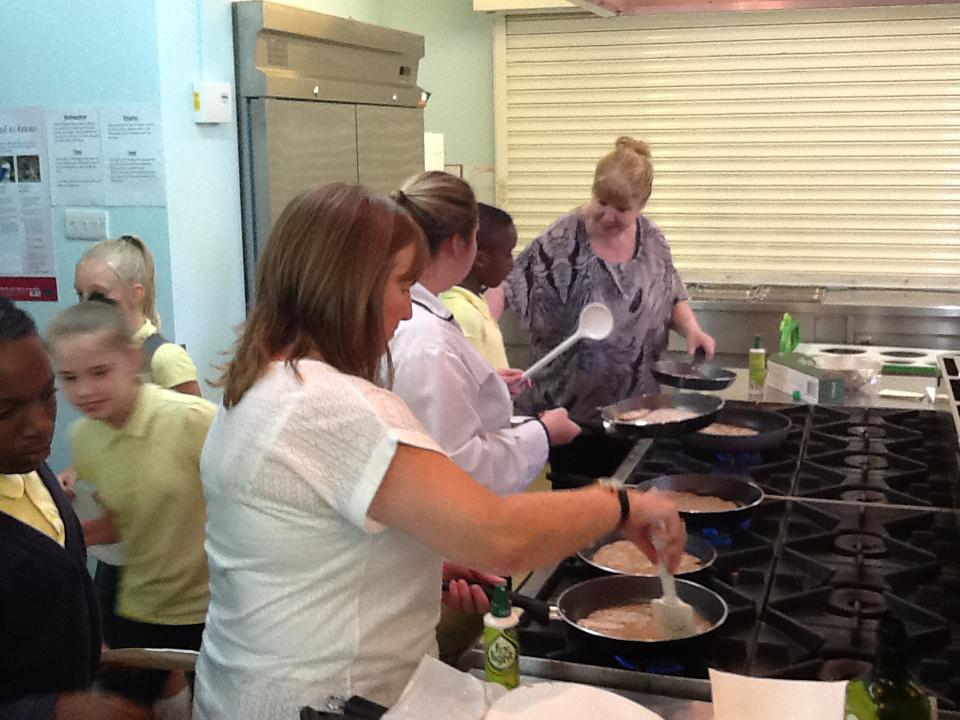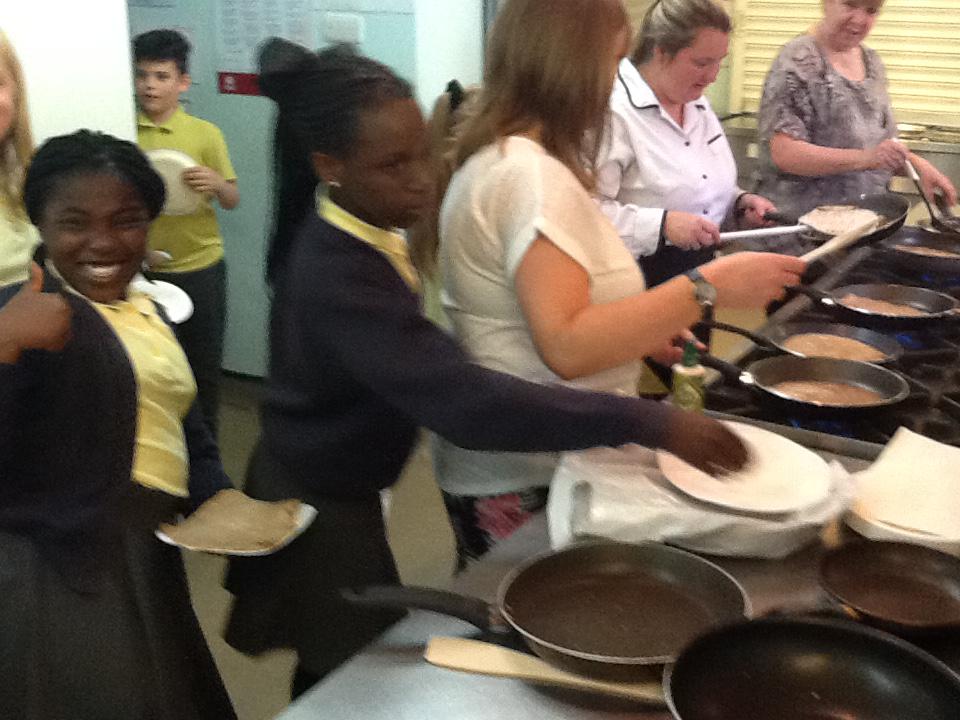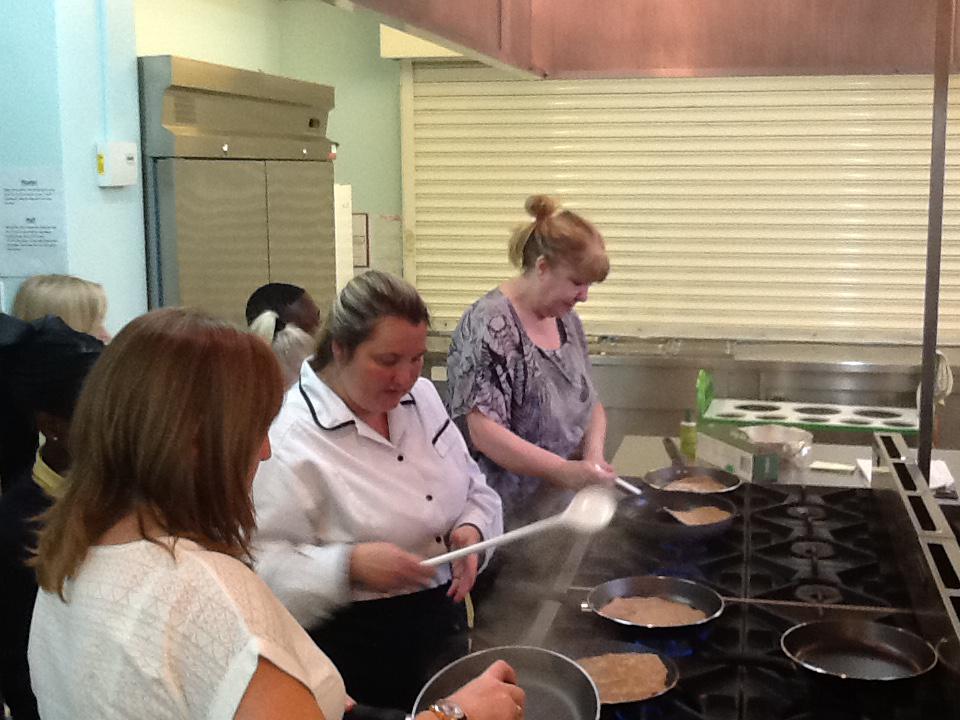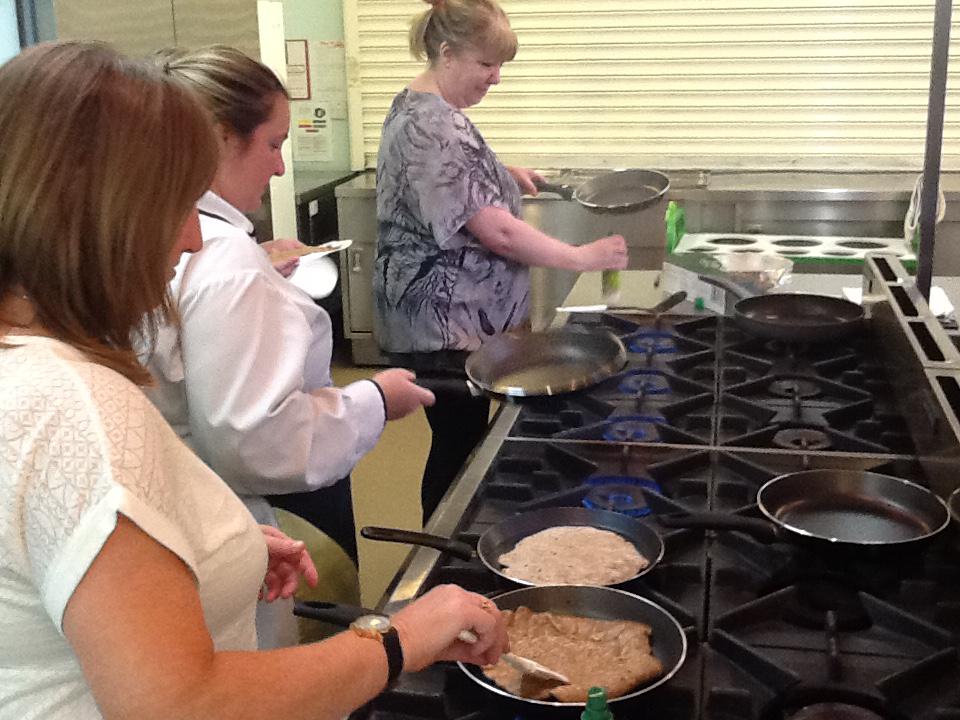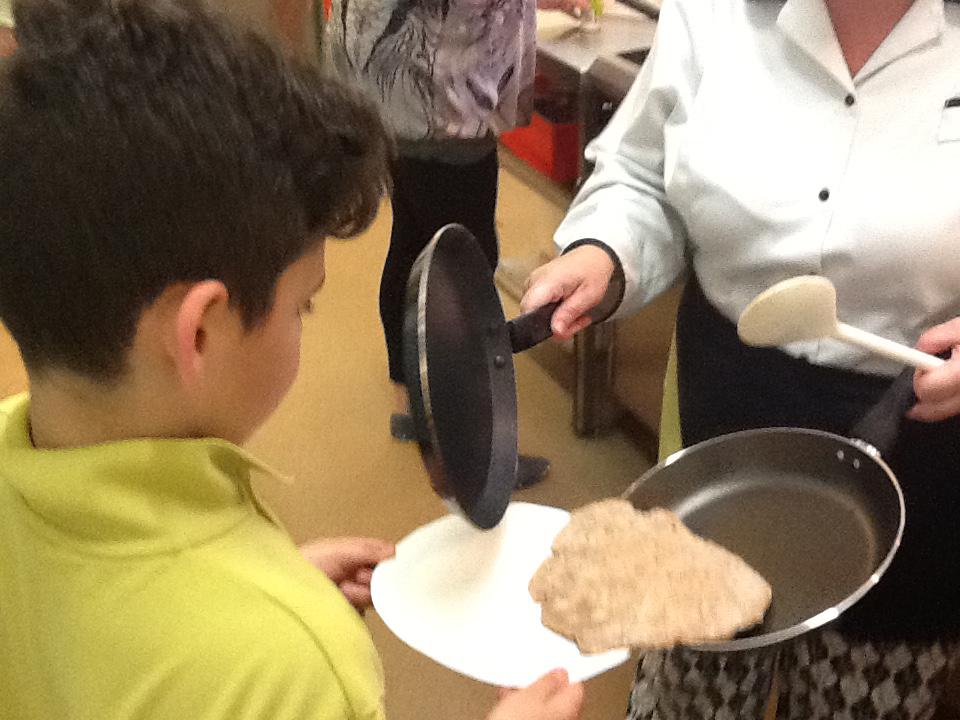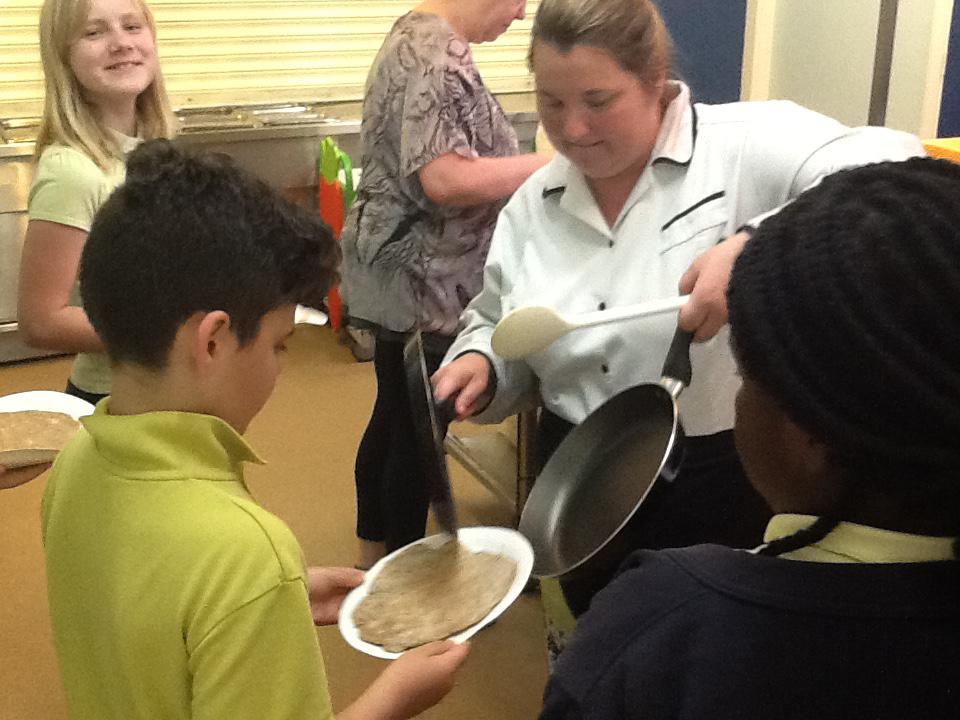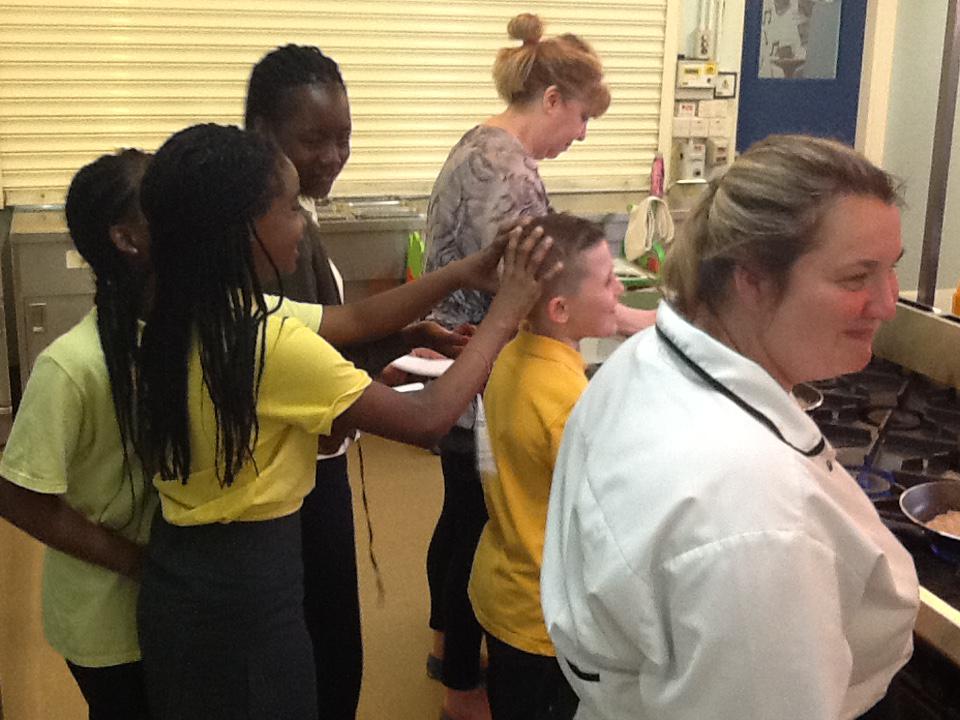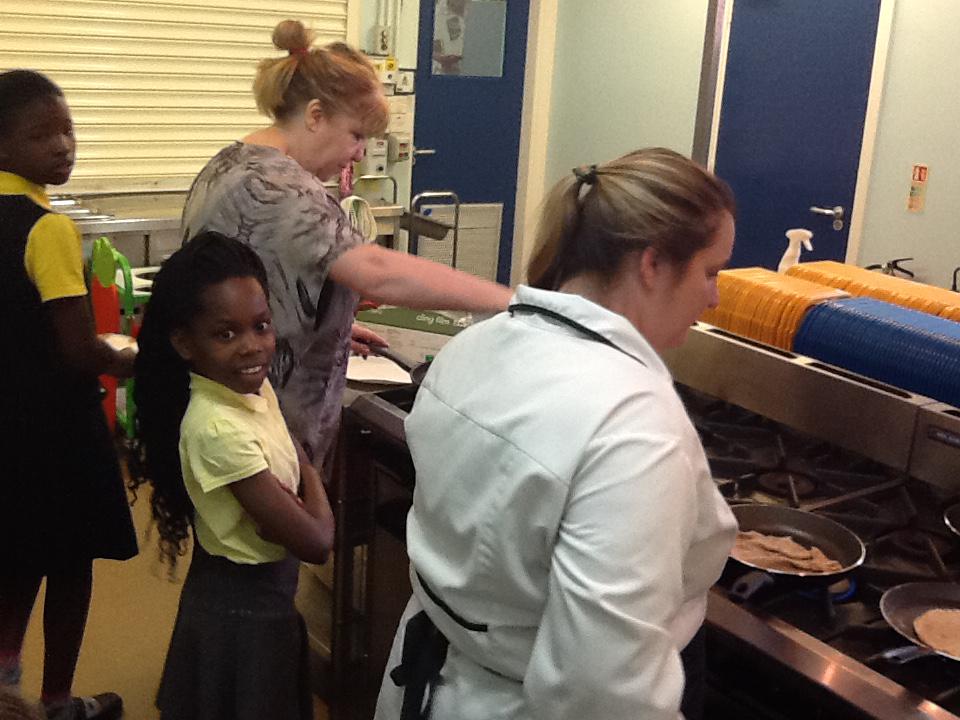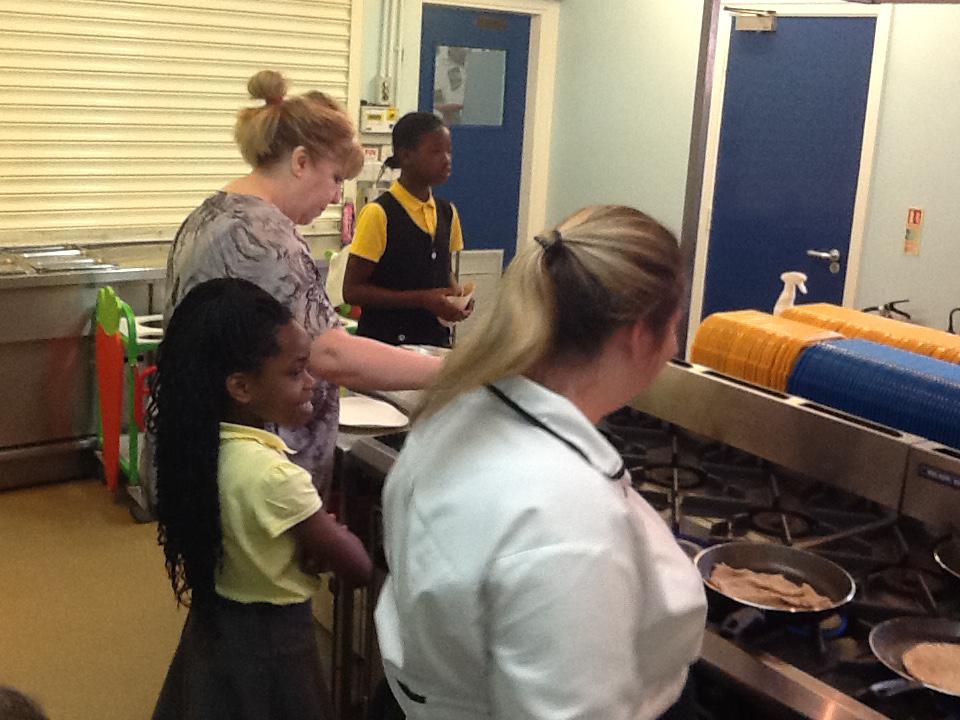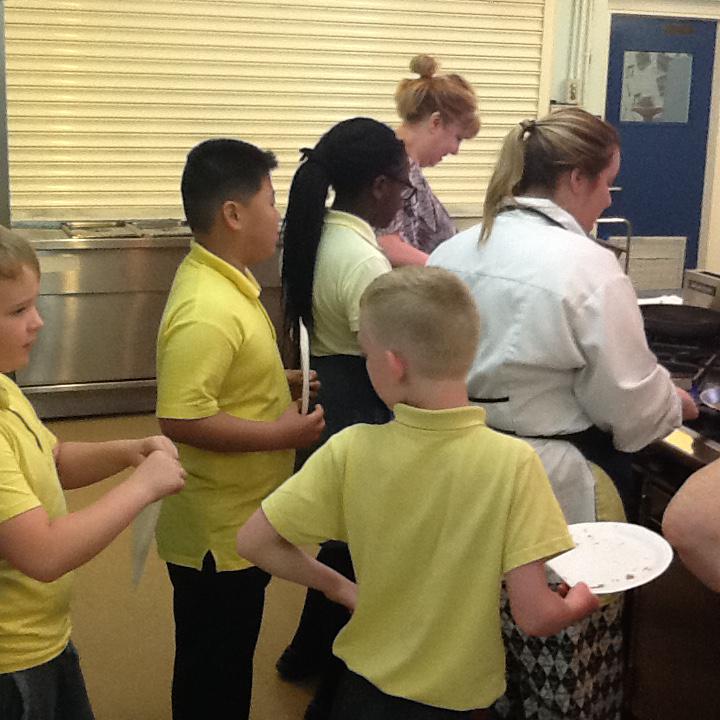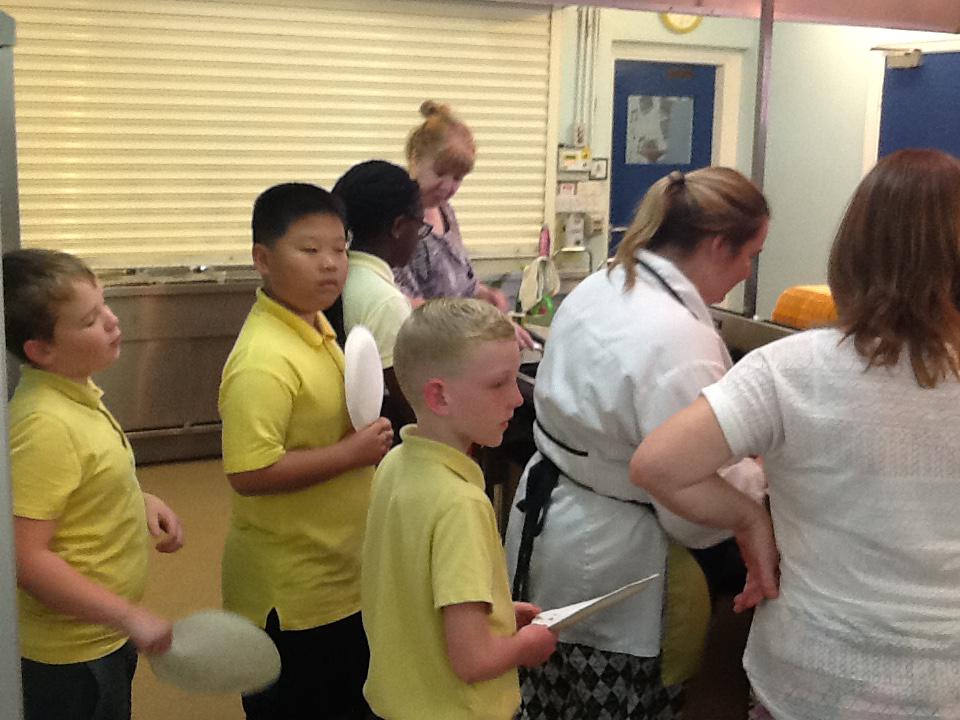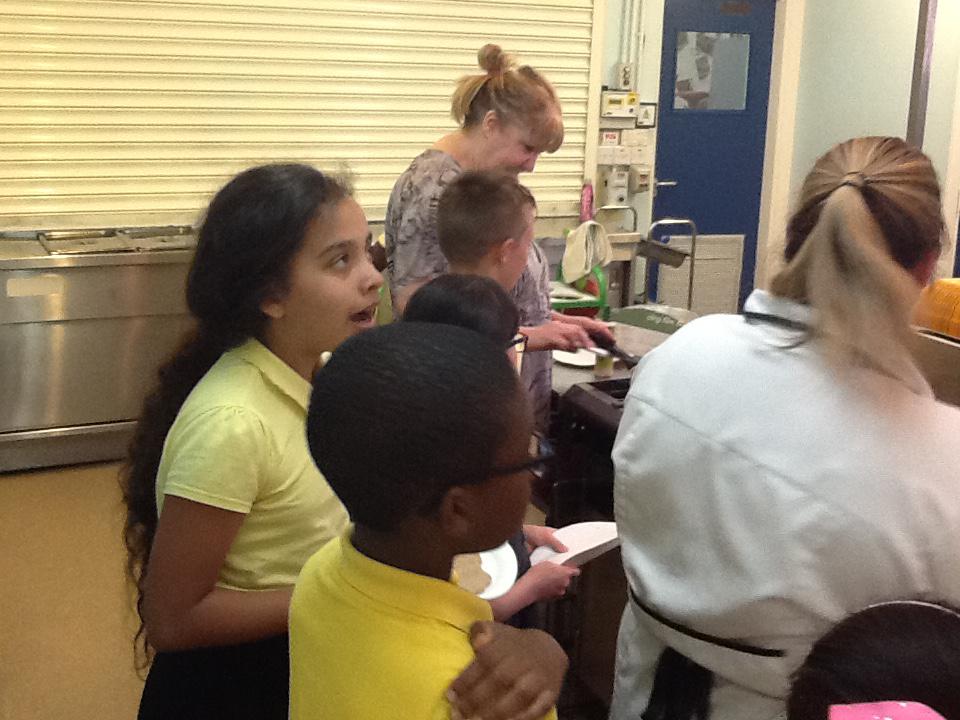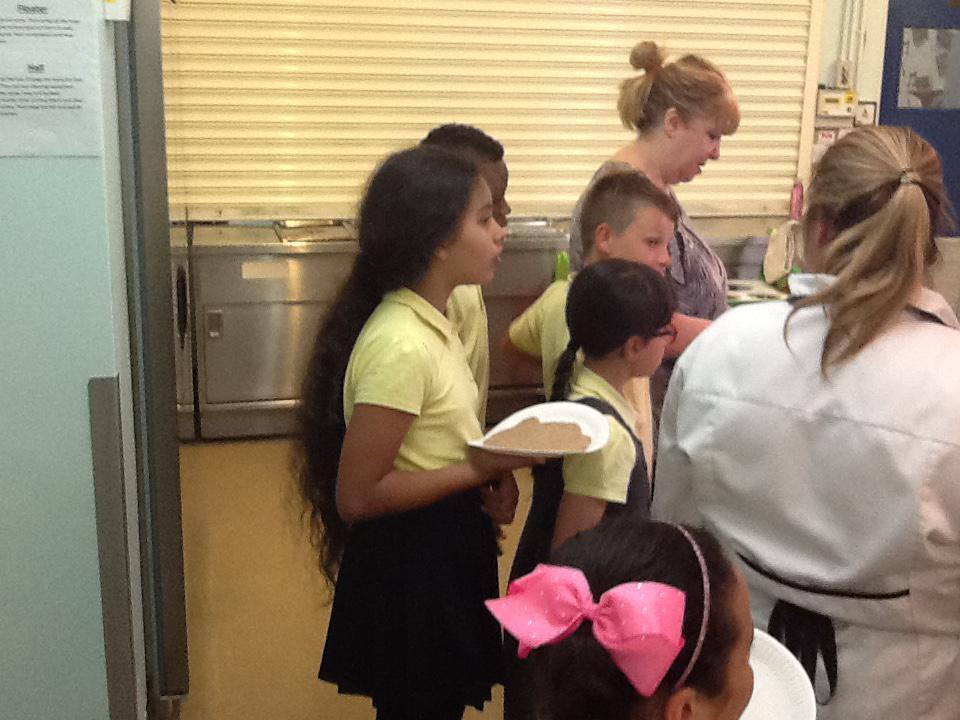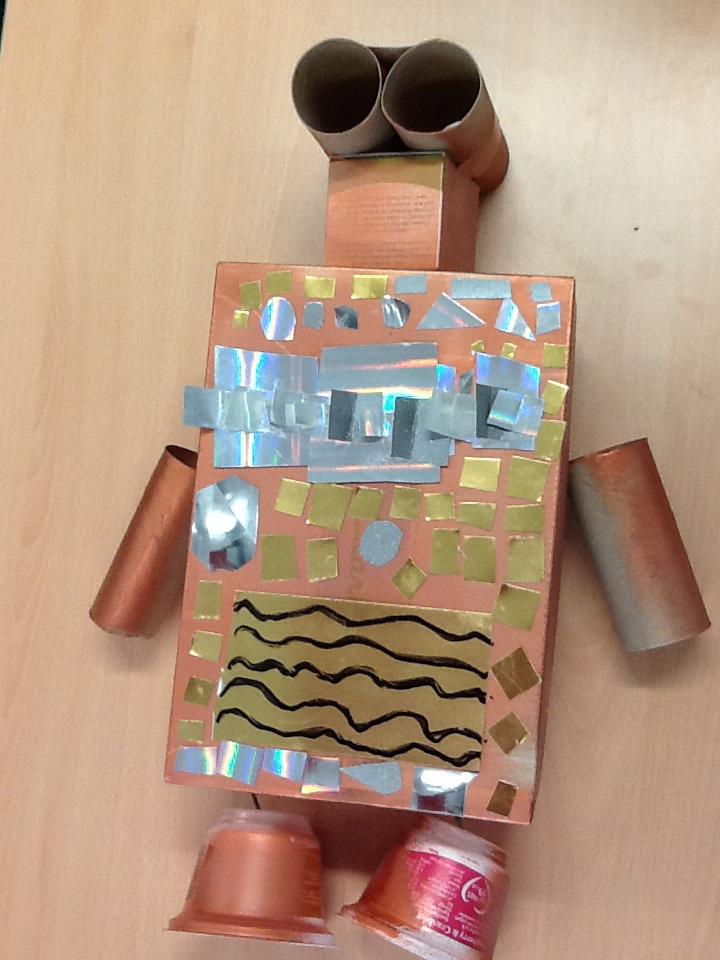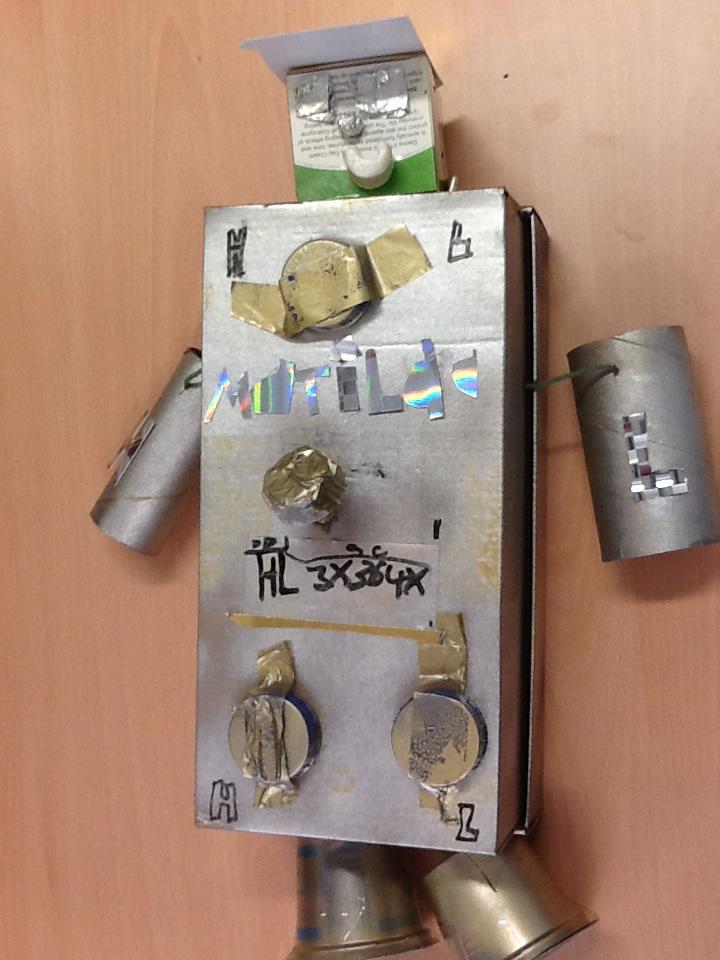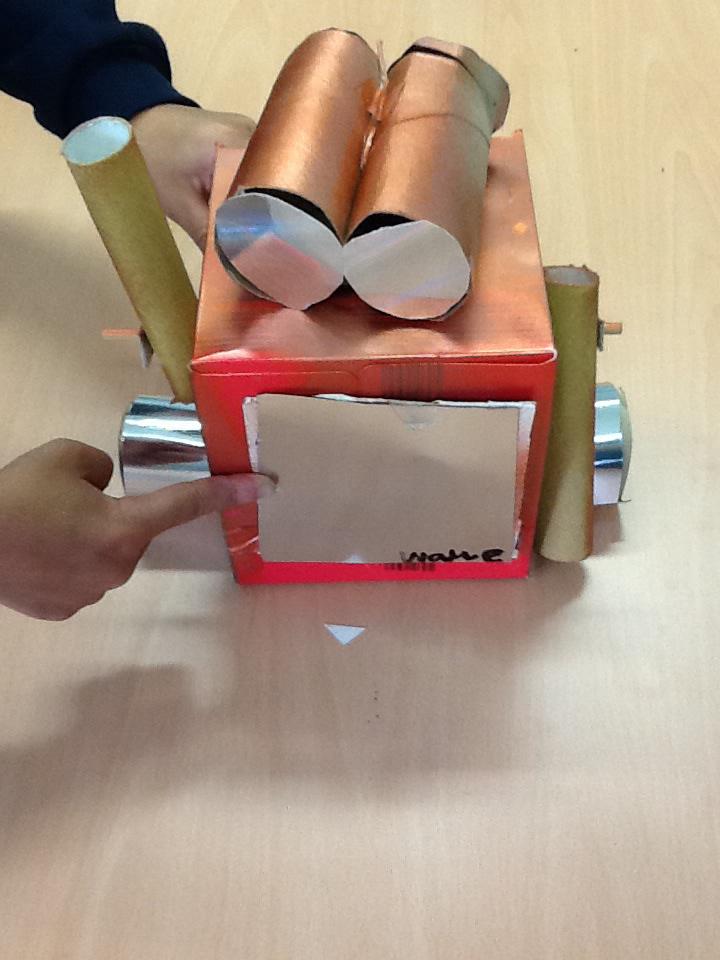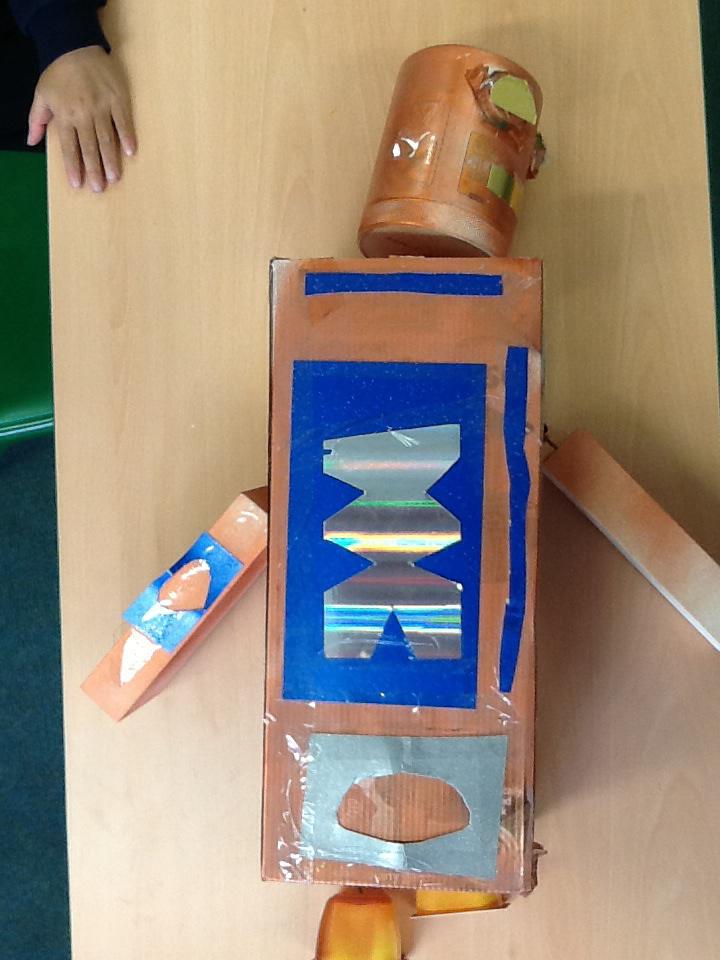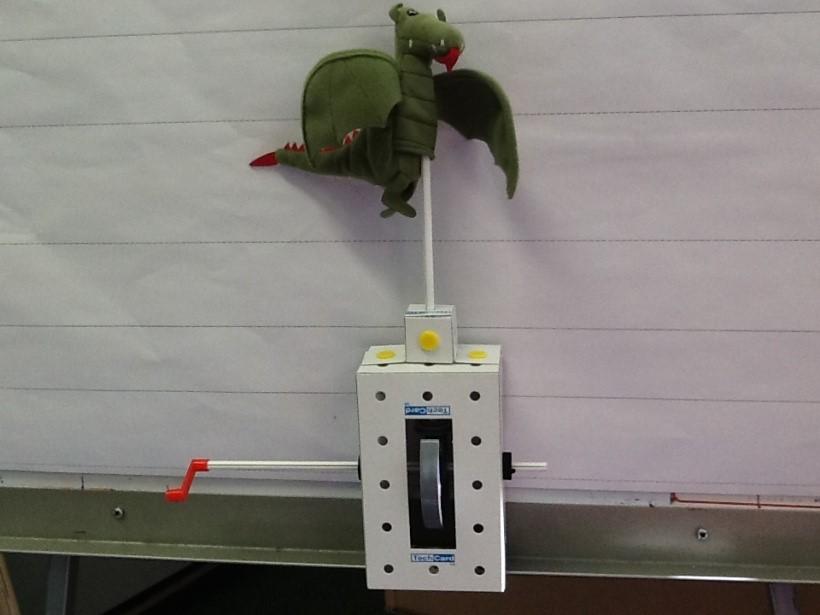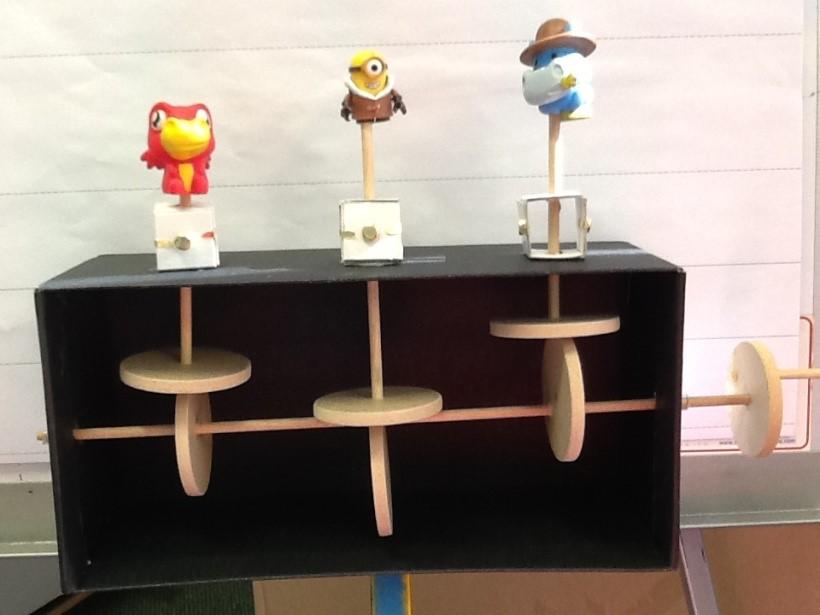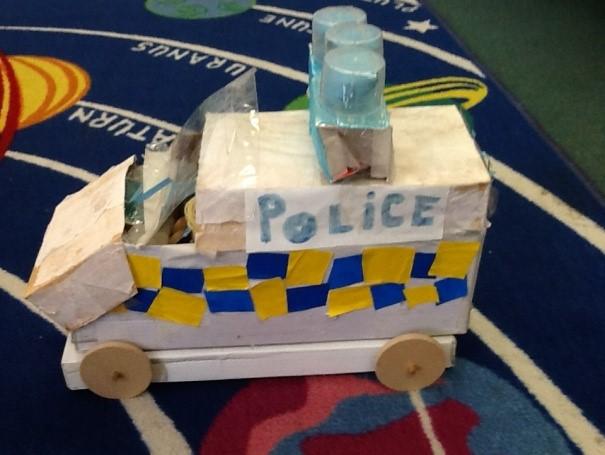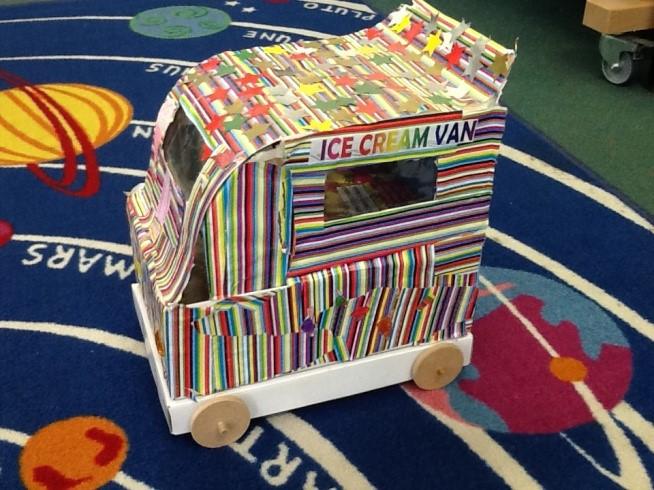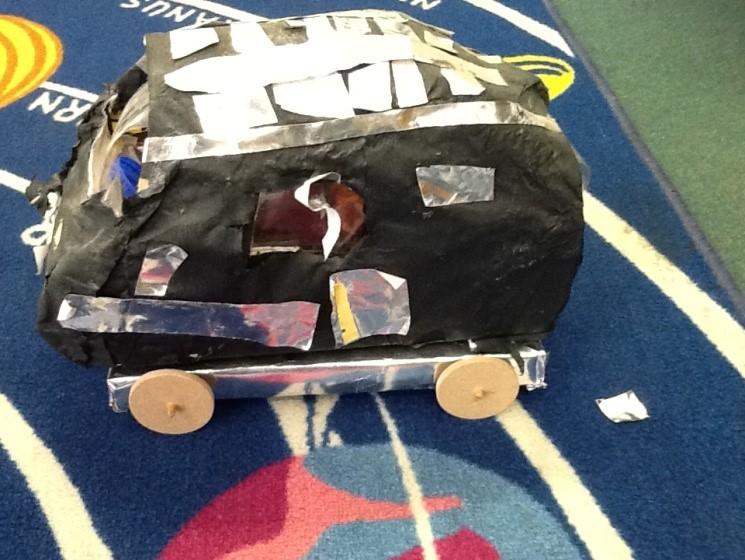DT
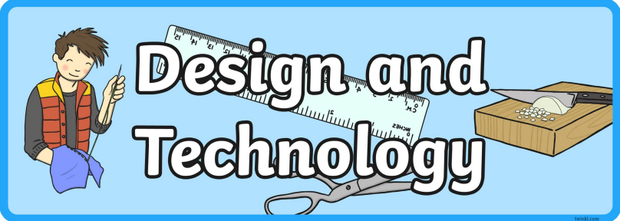
“Wisdom has built herself a house.”
Proverbs 9.1

At St Thomas of Canterbury RC Primary School, we aim to engage, inspire and challenge pupils from all backgrounds, whilst equipping them with the knowledge and skills to experiment and design products that solve real and relevant problems within a variety of contexts, considering their own and others' needs, wants and values. At St Thomas of Canterbury, we recognise that Design and Technology can develop and range of skills. We strive to ensure that Design and Technology can be accessible for different types of learners. The Design and Technology curriculum will encourage all pupils to believe in themselves, develop a ‘can do’ attitude and contribute to a positive learning culture.
Our Design and Technology lessons give children the opportunity to; investigate existing products, create designs, practise new skills, make a product and evaluate what they have made. Our pupils learn to select from and use a wide range of materials and components, including construction materials, textiles and ingredients, according to their characteristics.
The scheme of work is designed to develop a range of Design and Technology skills over the course of KS1 and KS2 including mechanisms, structures, electrical systems, textiles and foods. The scheme of work also ensures that pupils build and apply a repertoire of knowledge, understanding and skills in order to design and make high quality prototypes and products for a wide range of users. Pupils choose from a range of tools, equipment, materials and components that best fit the products needs. They then: critique, evaluate, test their ideas and products, work of others, and understand and apply the principles of nutrition and learn how to cook.
Design and Technology gives children the opportunity to develop skills, knowledge and understanding of designing and making functional products. At St Thomas of Canterbury we feel it is vital to nurture creativity and innovation through design, and by exploring the designed and made world in which we all live.

According to the National Curriculum ‘Design and technology is an inspiring, rigorous and practical subject.’ Which enables pupils to draw on disciplines such as mathematics, science, engineering, computing and art.
In D&T across KS1 and KS2 there are two strands of subject content: designing & making, and cooking & nutrition. Every year group covers cooking & nutrition giving children the opportunity to revisit health/ nutrition along with health and safety, and practising skills. Whilst the designing & making units are taught across KS1 and KS2.
At St Thomas of Canterbury, DT units is taught termly and each unit is delivered in 2-day blocks. The units are progressive across both KS1 and KS2 and ensures that each aspect of D&T enable prior learning and skills to be built upon. An example of this is how Structures is taught. In KS1, the focus is on freestanding structures, whereas in KS2, structures continues to be taught with the focus now on shell structures and frame structures.
Each unit follows the same plan, which is broken down into 4 parts (investigate, design, make and evaluate)
Investigate- based on the design brief, what products are already available that are relevant to our unit. Practise skills that will be required during the making of our own product.
Design- design purposeful, functional, appealing products based on design criteria.
Make- select and use a range of tools and equipment to perform practical tasks based on previous designs.
Evaluate- evaluate their ideas and products based on the design criteria.
This allows the children become familiar with the structure of DT lessons easily and recognise the importance of each aspect of the unit.
Key vocabulary for each unit is carefully considered and planned for. All staff delivering these lessons recognise not only the importance of children understanding and using this vocabulary correctly during the lessons, but that the children are able recall vocabulary and meaning from previously taught units.

The two strands of study are designing & making and cooking & nutrition
The key concepts of designing & making taught through:
- Structures
- Mechanisms
- Textiles
- Mechanical systems
- Electrical systems
The key concepts of cooking & nutrition are:
-preparing fruit & vegetables
-healthy & varied diet
-celebrating culture & seasonality

Reading
Through the D&T units of work, children are exposed to a range of subject specific vocabulary related to the unit focus such as tools, materials and ingredients. Each unit of work is planned to ensure that children are not only learning new vocabulary, but also using the newly acquired language and reviewing the vocabulary to ensure children retain this information.
Inclusion
Here at St Thomas of Canterbury, we strive to ensure that all children feel a sense of belonging and are given opportunities to rise to the challenge across the curriculum. In D&T, we are committed to ensuring that all children are encouraged to achieve their full potential through carefully planned content and class support.
Character Development
Through the D&T curriculum, children are encouraged to use their creativity and imagination whilst learning to solve real and relevant problems in a variety of contexts. This develops their resilience and critical thinking, which are not only useful skills in D&T but across the other areas of the curriculum.


“There is no innovation and creativity without failure.’
- Brene Brown
Throughout the Early Years, all pupils are encouraged to explore and experiment with a range of tools and materials. Such tools and materials, where possible, are readily available and vary in level of expertise needed. Planning allows for a variety of particular themes/topics/skills to be explored and for staff to purposely introduce new vocabulary and concepts (e.g. within cutting: cut, snip, line, shape, across, around, hold, position, up/down, open/close, forward/back); in doing so staff must very carefully balance engagement (through themes and topic linked work) with the direct teaching of the vocabulary and skills needed for pupils to progress; whilst also ensuring ample opportunities for child-initiated play and self-led enquiry in the provision. Opportunities to investigate, design, make and evaluate are available both within the classroom and within the large outdoor provision.
Weekly cooking opportunities are available to all pupils and are always well received by pupils! Our pupils love to explore with their senses: smelling, tasting and feeling the texture of ingredients. Staff create opportunities for children to look at examples of what they are making and design their own version e.g. shape, colour, choice of topping, filling etc (this might be shared by the child verbally or drawn). Children in Reception learn how to label their design and make a list of their ingredients. Children across both year groups enjoy taste testing different flavours and are introduced to new related vocabulary, e.g. sweet, bitter, sour etc.
Across all food related activities, children explore ‘Where does food comes from’ and this knowledge is further unpicked in topics, such as ‘Harvest’ and ‘Down on the Farm’. Links are also make between our knowledge of food and our growing knowledge of plants e.g. learning to categorise some vegetables as leaves, roots and stems.
Another hugely popular aspect of learning about food is the inclusion of cooking and/or tastings in so many of our cultural celebration days (see below).
Celebration | Children make/try |
Diwali | Traditional coconut barfi |
Bonfire night | Edible sparklers |
Christmas | Reindeer lollies, Christmas biscuits |
Harvest | Porridge, Vegetable soup |
Chinese new year | Vegetable dumplings, noodles |
Burn’s night | Shortbread |
St Patrick’s day | Soda bread |
Shrove Tuesday | Pancakes |
Easter | Easter nests cakes |
St David’s day | Welsh cakes |
St George’s day | Scones |
Eid | Vegetable samosas |
Cultural day | Range of food provided by parents within the school community, plus: Spanish café Polish treats English afternoon tea |
Alongside these, there are many further opportunities for pupils to work creatively with food both linked to class texts (e.g. making gingerbread men linked to the traditional story) and linked to themes of learning (e.g designing and making fruit kebabs when exploring Healthy Eating). Such activities are ideal for young children as they create a rich, multi sensory and meaningful learning experience, which not only helps to expand the children’s knowledge and skills, but are also a great vehicle for introducing new vocabulary.
Within our EYFS curriculum, there is a huge emphasis on acquiring knowledge and vocabulary through the use of high quality books, thus extending children’s experience of the world far beyond what they may be exposed to first hand. This includes exploring a range of non-fiction books relating to Design and technology (some acquired via the Salford Library Service). It also involves introducing carefully chosen stories that connect children with the process of designing and making, such as ‘Ben’s Rocket’ by Anne Cassidy and ‘The Most Magnificent Thing’ by Ashley Spires.
The children’s ability to engage with all of the creative learning mentioned above, in terms of control, pressure and dexterity, is developed and enhanced through not only drawing and designing opportunities, but also through a daily diet of fine motor tasks and challenges and an abundance of opportunities to mark-make and form letters in a controlled sequence.
Children across EYFS enjoy opportunities to create by ‘Junk modelling’. A key part of this is sharing with children the key messages of ‘Reduce, Reuse, Recycle’ and how many of our creations can in fact re-purpose existing materials. Children are invited to collect useful containers at home and bring them to school to be recycled into something new. Again, teachers try to engage children’s interest in this topic by using an appealing book ‘hook’; in this case, we typically use the text ‘Michael Recycle’ by Ellie Bethel. Children also make many cross curriculum links within DT learning; in this instance of recycling, staff help children to make a connection with Religion and Pope Francis’ call for us to be stewards of the Earth (Laudato Si – Care for our Common Home) and the responsibility we all share to look after our endangered planet.
The document provided below titled ‘EYFS Learning Progression for DT' seeks to exemplify how the subject of Design and Technology features and progresses within our Early Years Foundation Stage Curriculum, in preparation for children to then transition to the Primary DT Curriculum. This overview is tailored specifically: knowledge and skills recorded are those that apply directly to the subject of DT, but also included are knowledge and skills that pre-curse or have relevance to learning in DT and becoming an innovator.
Some skills have a very obvious connection (e.g. those within the ‘Creating with Materials’ specific strand of the EYFS Curriculum clearly align with the Primary DT curriculum content that follows – these have been shaded in grey in the document). Others, particularly those within the ‘Prime Areas’ of the EYFS Curriculum, are perhaps less obvious, but are in fact of fundamental importance. These skills enable children to engage with and respond to learning within a subject. Within our particular school context, staff in EYFS ensure a heavy focus on the Prime Areas of Learning (Communication and Language, Physical Development and Personal, Social and Emotional Development). This focus is reflected in the inclusion of linked Prime Area Learning in this document.
The Characteristics of Effective Learning (explained in more detail on our Early Years page) describe behaviours children use in order to learn (many relate to having a ‘Growth Mindset’). To learn well, children must approach opportunities with curiosity, energy and enthusiasm. Though this is true across all learning, it has particular importance within Design and Technology. In order to learn, children must be prepared to ‘have a go’, ‘keep trying’ despite any difficulty, and be flexible in terms of adapting their original plans. They must also learn from experience, in terms of what works/doesn’t work, and use links between different experiences to make their creations more and more successful.
The Characteristics of Effective Learning

- playing and exploring - children investigate and experience things, and ‘have a go’;
- active learning - children concentrate and keep on trying if they encounter difficulties, and enjoy achievements; and
- creating and thinking critically - children have and develop their own ideas, make links between ideas, and develop strategies for doing things.
An additional document titled ‘Accessing Learning’ has been included below. This details skills from the EYFS Curriculum that are of crucial importance in accessing teaching and learning and therefore play a crucial part in our pupils making a successful transition from our Early Years Foundation Stage Curriculum to the Primary Curriculum. These skills can often prove particularly relevant for our most vulnerable pupils, including those with SEND, and so in any instances where a pupil is struggling to participate or progress within lessons, these skills can be considered more closely by teachers.

Year 1- Structures
Year 2- Mechanisms
Year 2-Mechanisms
Year 4- Mechanical systems
Year 5- Food Tortilla's & Dip
Leticia's Black History Month project
Year 4S student, Leticia, created a special project for Black History month. Her project centered around the Bristol Bus Strike of 1963. Check out this video to find out more...Well done Leticia!!
Gingerbread Houses
Healthy tortillas and dips in Year 5R



Knowledge Organisers
- Year 1 food.pdf
- Year 1 mechanisms.pdf
- Year 1 structures.pdf
- Year 2 food.pdf
- Year 2 mechanisms.pdf
- Year 2 textiles.pdf
- Year 3 food.pdf
- Year 3 structures.pdf
- Year 3 textiles.pdf
- Year 4 electrical systems.pdf
- Year 4 food.pdf
- Year 4 mechanical systems.pdf
- Year 5 food.pdf
- Year 5 mechanical structures.pdf
- Year 5 structures.pdf
- Year 6 food.pdf
- Year 6 textiles.pdf
Report on Design and Technology in STOC
Risk assessments for our tools in Design and Technology
- CRAFT KNIFE risk assessment
- FABRIC SCISSORS risk assessment
- HACKSAW risk assessment
- HAND OPERATED DRILL risk assessment
- PINKING SHEARS risk assessment
- PLIERS risk assessment
- ROUND ENDED SCISSORS risk assessment
- ROUND_ENDED BLUNT KNIFE risk assessment
- SHARP KNIFE risk assessment
- STITCH UNPICKER risk assessment
- UTILITY SNIPS risk assessment
